

Budget for Backpacking South America: Our first 6 months of travel costs

Sometimes, I use affiliate/sponsored links with my recommendations, which if bought through might earn me a few pennies at absolutely no extra cost to you . This helps with the cost of keeping this site alive so I can continue to guide you on your travels. Please remember that I would never ever ever recommend anything I don’t or wouldn’t use myself. Big thanks to each and every one of you who have trusted my recommendations so far! Lozzy x
To help you plan any upcoming travels in the region, we’ve put together our spending vs original travel budget for backpacking South America for the first 6 months of our trip. This covers Uruguay, Argentina, Chile, Bolivia, Peru and Ecuador.
Once we got to Colombia, we had our first parental visitors, and since they were set on travelling in a bit more style than we were used to, and also offering to pay for some of the food and experiences we had, our budget tracking got kind of messed up. However, we have written a guide to the cost of living in Colombia for those interested.
After reading our first 6 months of travel budget for backpacking South America write-up, you may also be want to have a look at:
- Essential things you need to know before you backpack in South America
- A year with the Osprey Aura 50 L backpack: an honest review
- 8 hand luggage essentials I couldn’t fly without
We didn’t set off on our travels on a super tight leash, since we had been saving for a while, and planned to find freelance work later down the road. Both of us left the UK with £9000 each budgeted. Those savings lasted us until we reached Colombia, 9 months into our trip, but by then we had started to take remote work projects in brand consultancy, so we didn’t have to worry about cash flow so much.
2020 update: in the end, I returned to the UK after 26 months with more in savings than when I’d left to go travelling. Cue Smuggo McSmugface. See my details of the income streams I used to fund my travelling here .

One thing that helped us keep our travel budget for backpacking South America low was that we were slow travelling. For the first few months, we would usually spend at least 5-7 days in one place. If you have a small amount of time and you’re trying to cram in as many destinations as you can, the extra money needed for flights, more reliable transfers and tours that you book online ahead of your arrival are going to create a need to greatly increase your budget for backpacking South America.
In addition to this, the Revolut app has made it easy to keep track of the spending on our card (and to watch the IVA tax refunds come in!). Revolut has been great in giving commission-free foreign exchange. It gives up to £5000 in card transactions without any fee and up to £200 cash withdrawals without a fee. After that it’s just 2% per withdrawal, no different to UK banks being used abroad. Don’t forget to check out our list of South American Bank ATMs that give free cash withdrawals to Revolut cards.
Budget for backpacking South America: The first 6 months of travel spending
Budget for 4 weeks in uruguay.
As the first destination of our travels, it was hard to know what to budget for backpacking South America’s most expensive country. We eventually set our budget for 4 weeks in Uruguay at £1800 – £450 a week – with max £30 a night on accommodation for both of us. Et voilà, in total we spent £1800, exactly on budget for 4 weeks in Uruguay. Bang on!
Although the country feels expensive, it was actually easy to fit into that budget without missing out on anything. Granted, we’re not avid sky-divers, and we don’t have a taste for expensive wines, but by keeping a close eye on what we were spending and skimping on the odd hostel-kitchen meal, we were able to treat ourselves when we wanted to.

Meal-wise, an average dinner for two with a beer would cost around £20. Note that beers are mostly served in litre bottles here, so you’re expected to share. Cooking supermarket food for two people, you can easily make £15 stretch across 4 meals without skimping too much. Pasta and rice are cheap in Uruguay, as is meat, but veg is relatively expensive. Imported alcohols such as Patagonia beer or Captain Morgan rum are much more expensive than their native counterparts, but still cheap enough by UK standards, so still fit nicely into our budget for 4 weeks in Uruguay.
Our accommodation in Uruguay was mostly private rooms with private bathrooms. We were prepared to dorm it up but found that the price difference for 2 dorm beds vs private double was usually not worth losing sleep over (ba-doom-doom-tsch). We thought dorms would be needed to make friends, but in our experience the easiest conversations are struck up in common areas.
Only one hostel went over £30 ( El Viajero, MVD , £31), but included a decent breakfast so we weren’t too fussed. Our cheapest accommodation was glamping at Patas Negras in Punta del Diablo for £11 per night for both of us. However, bearing in mind the far out location and the ‘experience’ of using outdoor showers and dry toilets, this price was probably quite just.
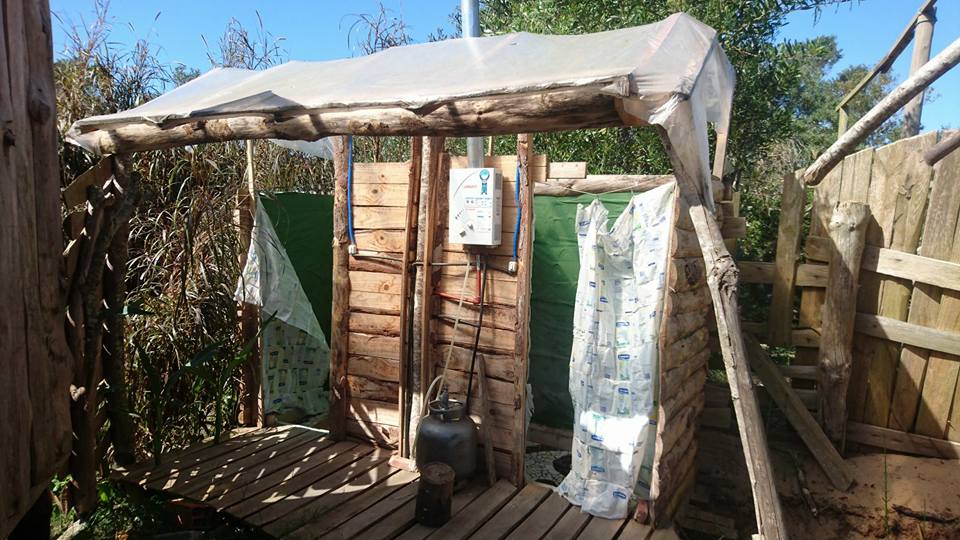
Most consumer goods cost around the same in Uruguay as the UK, but strangely shampoo and conditioner are seriously expensive here (minimum £5 for a very small bottle). There must be some odd import taxes applied in Uruguay as surrounding countries seem to have normal pricing for these items. Make sure you stock up on these before visiting. Not something we expected to have to consider in our budget for backpacking South America!
Budget for 5 weeks in Argentina
Whilst slightly less pricey than Uruguay , you still need a fairly chunky travel budget for backpacking South America if you’re planning to survive long in Argentina without missing out on too many experiences. Whilst Buenos Aires was the most exciting city we’d been to so far, we recommend that if you’re on a budget you don’t stay too long, as the cost of living there when coupled with the party lifestyle can quickly rack up.
Eating in, bunking up and opting for public transport over taxis can of course minimise your costs. We also saved a fair bit of money doing tours ourselves (such as the Sierras in Cordoba and Mendoza wine tour ), and although it took more effort on our part, we loved the freedom of it.

In the capital, you can find meals for £6-7, but the average price for food in Buenos Aires will be around £10-12 per person (saying that, the Argentinian economy is particularly volatile so these prices may all change by next year). Outside the capital, £6-8 per person is normal for a decent dinner. A beer will cost you 80-100 pesos (around £4).
In total, we spent around £2400 , which was close enough to our £2250 (£450 a week) budget for 5 weeks in Argentina for us to be happy.
2020 UPDATE: Since writing about our spending during our trip, the Argentinian economy has indeed gone tits up (again), so prices for foreigners have essentially halved. Expect there to be more hassle with getting money out of the already tightly-limited ATMs though.
Budget for 4 weeks in Chile
Our original 4-week budget for backpacking South America’s skinniest country was £450 a week, so £1800 for the month. In total, we spent a little more than £2000 for the both of us during just over a month in Chile, living pretty well.
Everyone travelling from the North of Latin America, having hit the cheapness of the likes of Colombia and Bolivia first, complains about how expensive Chile is, so we were prepped for a slam on the old bank account. However, having come from Argentina and Uruguay, we were pleasantly surprised at how cheap Chile felt.

In the majority of places in Chile, you can find good meals for £5-7. A litre of beer in a bar will cost you 3000 pesos – just over £3. The hostels we stayed in (excluding New Years because things get pricey everywhere around that time) cost between £10-15 per person. More importantly, you can get a decent bottle of wine (or a few) for £2 each.
Budget for 4 weeks in Bolivia
Bolivia is the cheapest country we’ve ever been to. Meals cost 10 Bolivianos – £1 – for two courses (even if you think you’re just ordering a main, you’ll normally be brought a noodle soup to start). You can find good dorms for around £5 each per night and even a swanky, gated apartment in La Paz only cost us £15. For buses, the general rule is £1 per 1 hour, but be warned that the quality of buses is much lower than in surrounding countries, so it’s not really the bargain you first thought – it’s more like paying for your own minor torture experience.
Even with the £120 cash stolen in Torotoro and £100 spent on replacing our nicked speakers, we still came in under our budget for backpacking South America’s cheapest nation. Not counting these mishaps, we spent around £1400 for both of us over 4 weeks, including £300 on the salt flats tour – yes, we got ripped off online!

Budget for 4 weeks in Peru
Our budget for 4 weeks in Peru was £1600. Overall, actual spending in Peru came to £1690 for the both of us. You can usually get a 2-course Menu del Día meal for 10-20 soles, and a pint for around 10 soles (£2.50). An average private double room in a decent hostel costs around £20 (80-90 soles) a night.
Transport is a tiny bit more expensive in Peru due to the big spike in the quality (of course, shite buses are still available but why bother when the quality ones still don’t break the bank?). We travelled 22 hours on a luxury Excluciva bus with dinner and a full 180-degree cama bed from Lima to Máncora for 120 soles – less than £30 each.
Our biggest hit to this part of our budget for backpacking South America was on guided tours & excursions, which previously we hadn’t made a habit of going on (with the exception of the Uyuni Salt Flats and Death Road in Bolivia). Still, we only spent around £200 each in total on organised tours, which included trips to Rainbow Mountain , Machu Picchu and the floating islands of Los Uros .

Budget for 3 weeks in Ecuador
Ecuador wasn’t as pricey as we expected. Our budget for 3 weeks in Ecuador was around £1000, but we spent a mere £860 ($1200) between the two of us.
You can still find lunchtime Menu del Días in Ecuador for $2.50-3 USD which will normally include a soup, main and drink, sometimes a pudding too. As always, dinners are a little more expensive; expect to pay around $5 for a decent meal. Beers will cost you $1.50-2. Good hostel accommodation can be found for around $10 each per night. The cost of travel in Ecuador is really not as bad as everyone makes out!

Summary of our spending vs budget for backpacking South America:
So that accounts for our first 6 months of travel budgets vs spending in South America! As you can see, creating a budget for backpacking South America very much depends on which countries you’re planning on spending the most time in, and how slowly you are able to travel. Hopefully this extra info therefore helps you to plan and budget for backpacking South America for your own trip. Don’t forget to give yourself a boost with a trusty Revolut card !
Now that you’ve reached the end of our first 6 months of travel budget for backpacking South America write-up, you may also be interested in reading:

Liked this post on our first 6 months of travel budget for backpacking South America?
Save it as a pin on Pinterest to be able to find again later!

Last Updated on 23 December 2022 by Cuppa to Copa Travels
Read these posts next!

Learn from our travel mistakes

Bitesize LatAm: Which country to visit in Latin America?

The best cities in South America for history lovers to travel to
Leave a comment :) cancel reply.

MyFunkyTravel
Backpacking | Budget Travel | Living Abroad
South America Backpacking Route
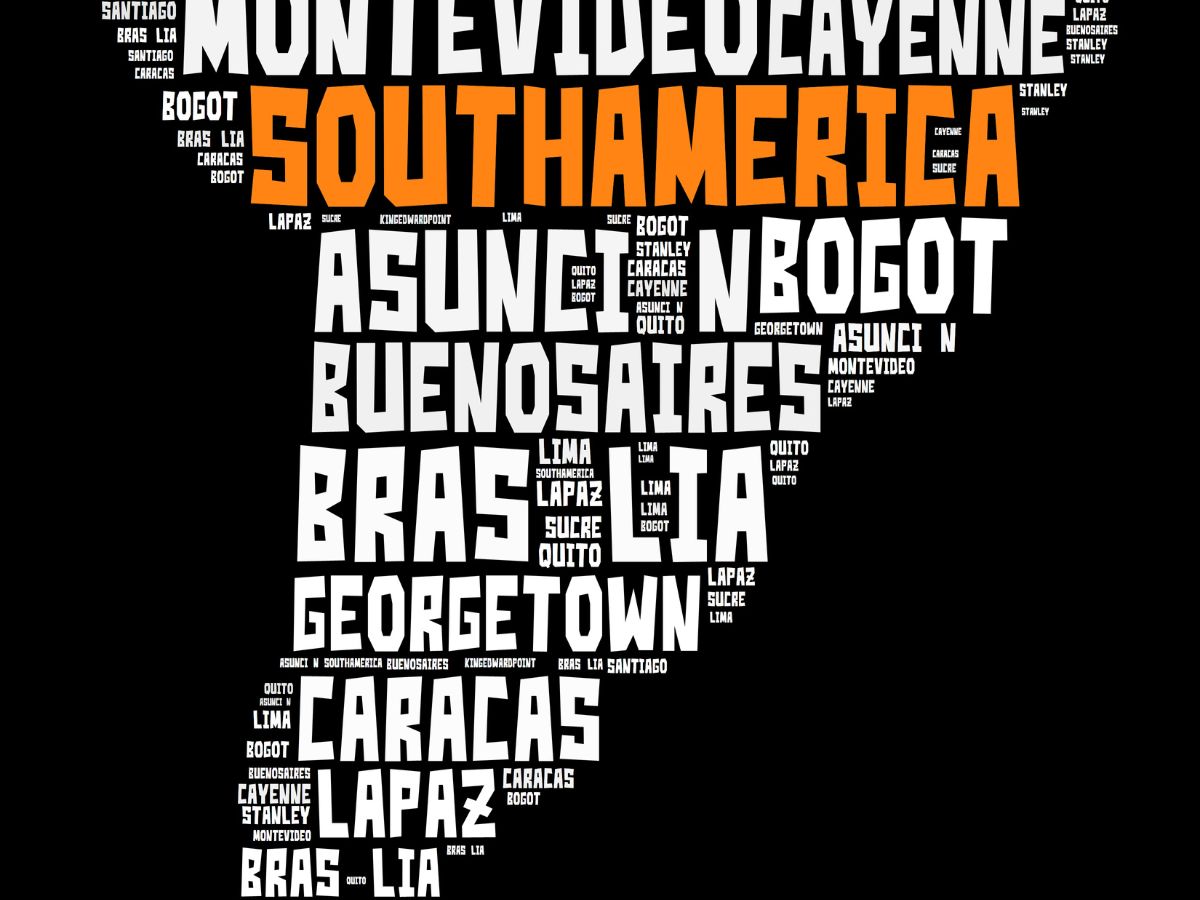
Backpacking South America is one epic adventure and this route is the longest of all our travel itineraries . It includes Colombia, Ecuador, Peru, Bolivia, Chile, Argentina, Uruguay and Brazil. It may easily take up to half a year to complete and that would still be missing out large chunks of the continent! Read on and start planning what could be the trip of a lifetime with our suggested South America backpacking route.
Table of Contents
Backpacking south america – route info, south america backpacking route – how long to spend in each place, other south america backpacking routes.
TIME NEEDED – 5-6 MONTHS
It takes a long time to backpack South America with 6 months a decent time-frame for an extended trip across the continent. The route outlined below could be done in a bit less but there is plenty to see and you will be spending A LOT of time on buses. Unless you fancy a six hour coach journey every other day, take your time and don’t be afraid to break up your journey with a few longer stops if you find somewhere you really like.
POSSIBLE SHOESTRING BUDGET – £5000 €5800 $6000
Overall, backpacking South America is not expensive when compared to regions such as North America or Western Europe but there are some significant variations between the different countries with travel in Brazil considerably more costly than Bolivia or Peru for example.
These figures are based on spending $1000 per month on average although exchange rates are subject to change. For more detailed info see our full South America backpacking budget which features individual country budgets as well as regional ones.
However note this is only a really rough guide and your actual costs will depend on a range of factors, including your own travel habits and any future developments during these uncertain economic times.
The figures above don’t include the cost of flights to/from South America. They are based on taking buses everywhere and staying in hostel dorms or cheap private rooms where prices are comparable.
TRAVEL INSURANCE FOR BACKPACKERS IN SOUTH AMERICA
The cost of travel insurance isn’t included in the budget figures above. You can get a long stay quote in under a minute from Heymondo who offer well reviewed international travel insurance for trips of more than 3 months. Use our Heymondo discount code to get 5% off.
WORK OR VOLUNTEER WHILST TRAVELLING IN SOUTH AMERICA
One way to have a more rewarding and perhaps realer South American experience is to use Worldpackers to find a work or volunteer placement. Their website/app allows you to search for placements and exchange your skills for free accommodation and meals.
They have over 2000 work exchange options in South America at the time of writing, perfect for breaking up a long backpacking trip and saving some money. You may also be interested in our Workaway vs Worldpackers comparison if you’re serious about looking for work exchange opportunities.
Backpacking South America – A 6 Month Itinerary
Fly into Cartagena (possibly via a connecting flight in Bogota) or if you’re coming from Central America consider your best options for crossing the Darien Gap from Panama. Many travellers opt for a combined Central and South America backpacking route. Check out our separate Central America itinerary if that appeals to you. You can easily link the end of that route with the start of this one.

Cartagena – The old part of Cartagena is a special place with horse-drawn carriages and stylish architecture while the city is on the coast so has a real Caribbean flavour. This is a natural starting place for many travellers with cheap flights to/from Miami which is connected to cities all over Europe and North America.
Parque Nacional Tayrona – Skip tacky Santa Marta and Taganga for the beautiful national park with deserted Caribbean beaches and snow-capped peaks.
Mompos – Totally unique town well off the beaten track, stuck in a time-warp with lots of old furniture and rocking chairs!
San Gil – Adrenaline junkies paradise with cheap and excellent rafting, paragliding, hydrospeeding and waterfall abseiling.
Villa de Leyva – Colonial town near the capital with a huge main plaza.
Bogota – Cool and much improved capital city with an efficient transport system, cycling Sundays, quirky districts and some of the best museums in South America including the popular Museo del Oro . Read our rundown of fun things to do in Bogota for a bit of inspiration as to how to pass your time in the Colombian capital.
Salento – Small town, lots of travellers and some stunning surrounding countryside.
Cali – Colombia’s salsa city with some wild nightlife at weekends.
Popayán – Perhaps the most attractive of Colombia’s old towns with lots of churches and pretty white buildings.
Seek local advice before heading to the Ecuadorian border, particularly at night, as this region doesn’t rank among the safest in a country that has massively improved in that regard over the past decade or so. It’s advisable to set off very early and consider stopping overnight in Pasto or Ipiales. The journey is at least 12 hours in total and this is possibly the longest day of travelling on our whole South America backpacking itinerary. The border crossing itself is fairly quick and painless at the international bridge between Ipiales (COL) and Tulcan (ECU) and there are hourly buses on to Otavalo.
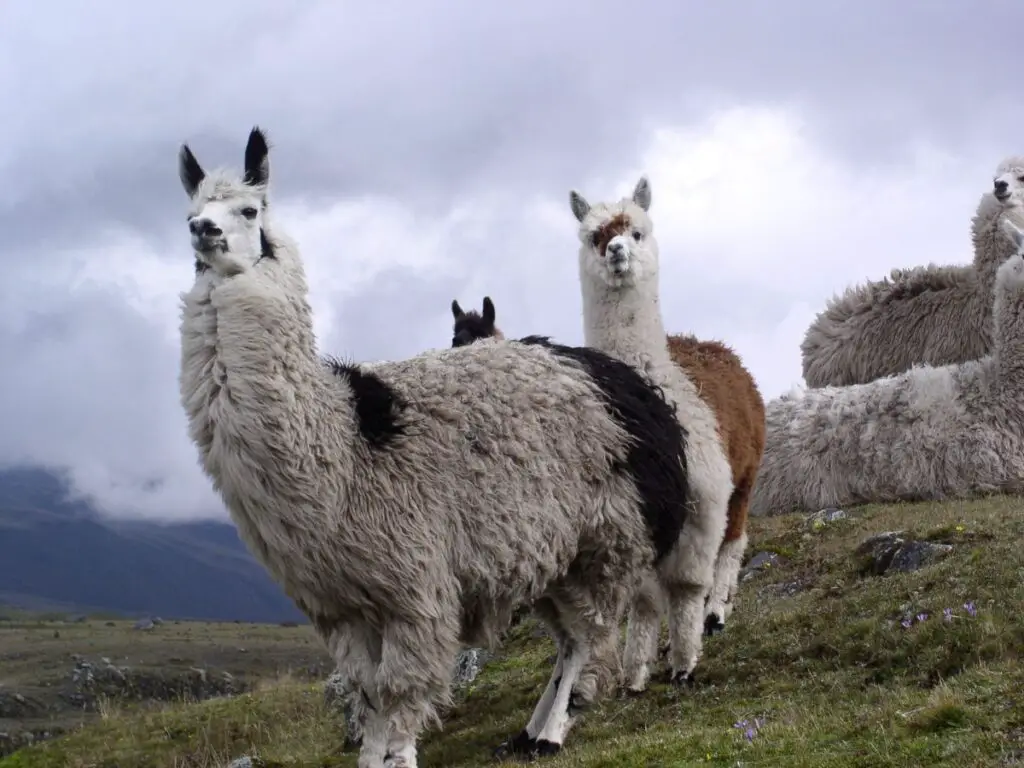
Otavalo – Famous for its Saturday market, cock-fighting ring, friendly indigenous people and lots of men sporting dresses and ponytails!
Quito – Popular if at times unsafe capital city. The old town is large and interesting but head to the Mariscal for an all action international area bursting with backpackers, loads of hostels and a more lively westernised scene than you find in many South American cities.
Cotopaxi – Stunning national park with the giant and freezing cold 5900 metre Volcan Cotopaxi at the centre of it.
Baños – Touristy town but a very pleasant, safe place with its famous baths and surrounded by green mountains. Take a trip into the Amazon which starts just a few kilometres east of the town.
Riobamba – Mountain town with some random buildings and shops. Starting point of the ridiculously steep train ride down to Sibambe.
Sibambe – End of the trainline, little to see but it’s only a short trip on to Cuenca.
Cuenca – Popular riverside city full of colonial buildings and cool cafes. One of the highlights of travel in Ecuador.
Make your way to the Huaquillas border crossing or take a direct bus to Mancora from Cuenca.
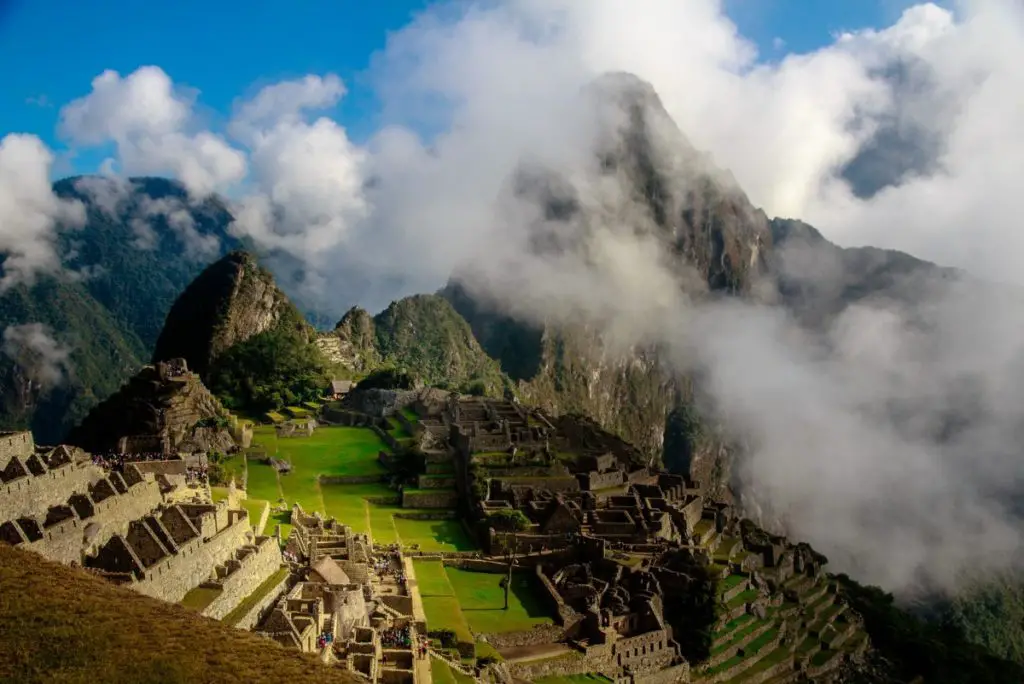
Mancora – Popular beach resort full of drunk gap year students, backpackers and surfers (or at least it was before the pandemic). Watch out for thieves on the beach!
Trujillo – Truth be told Northern Peru has little in comparison to the south but Trujillo is a decent stopover for a day or so.
Huaraz – An altitude spot of natural beauty in Peru’s Central Sierra. Surprisingly lively nightly entertainment including a decent choice of live music.
Lima – Coastal capital of Peru perched on huge cliffs above the Pacific. Enjoy some of Peruvian cuisine’s most famous dishes such as ceviche and lomo saltado.
Huacachina – Not exactly the most historic destination in Peru but much fun to be had here nonetheless in the giant sand dunes with options including sandboarding and bumpy buggy tours.
Nazca – Famous for its mysterious lines as featured in Indiana Jones. Unfortunately fly-overs are out of the budget of most South America backpackers.
Cuzco – The ancient Inca capital is still a really impressive sight and great place to hang around for a few days. It’s also the launching pad for the Inca Trail and a visit to Machu Picchu.
Machu Picchu – The most famous of all the Inca ruins, an incredible place up in the clouds of the Andes mountains. For many travellers this is the highlight of backpacking around South America but depending on when you visit, guided trips up the mountain can be very expensive and the usual cost of travel in Peru will shoot up during these days. There are a variety of options from shorter one day trips to four-day hikes taking in various ruins along the way.
Puno – Lively town on the Peruvian banks of wonderful Lake Titicaca.
There are bus companies in Puno who run services to Copacabana but check times as they are not super regular. The journey is between 2.5 and 4 hours depending on how long border formalities take. Since 2019, there are now said to be ATMs in Copacabana (there didn’t use to be) but it’s advisable to make sure you have enough cash (to at least get you through until La Paz) before crossing the border as banking facilities are notoriously unreliable in Bolivia. US dollars can be exchanged easily in both towns.
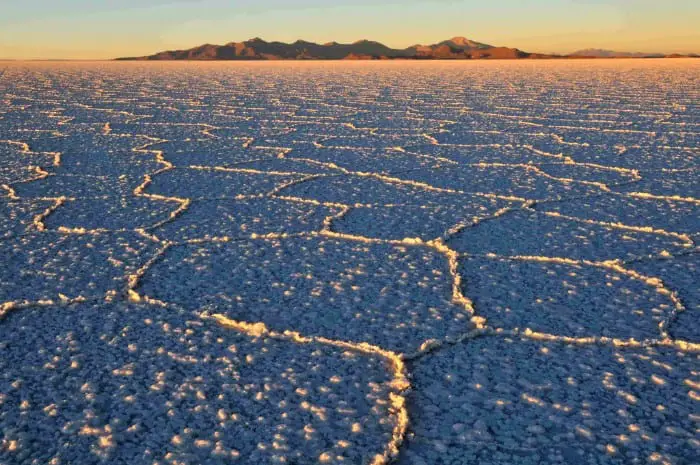
Copacabana – The first town in Bolivia – enjoy the cheapness of the place and hop on a boat to the magical Isla del Sol.
Isla del Sol – This is the Inca birthplace, a beautiful island in the middle of Lake Titicaca, the world’s highest freshwater lake.
La Paz – One of the smallest and safest capitals on the continent. Street markets, the Coca Museum and the infamous San Pedro prison are among popular visits with backpackers here, although the latter is harder to access than it used to be.
Sucre – Relaxed town known as ‘la ciudad blanca’ (White City). It is probably the most attractive city in the country.
Potosi – Take a trip down the shockingly dangerous working mines in what is the highest city in the world. A sadly depressing but unforgettable place.
Salar de Uyuni – The world’s largest salt flat is a weirdly charming destination and an increasingly popular stop on the South America backpacker trail. You will probably need to do an organised tour here, which can last several days. In Bolivia, you can even stay in a hotel made entirely out of salt, which makes our countdown of weird places to stay around the world.
Some travellers do 3 day tours of the salt flats and you may find companies offering this as part of a trip between Uyuni, a functional town in Bolivia and San Pedro in Chile. Other options include diving into Northern Argentina via the Villazon border crossing and possibly heading to the attractive city of Salta and then crossing the Argentina-Chile border to reach San Pedro.
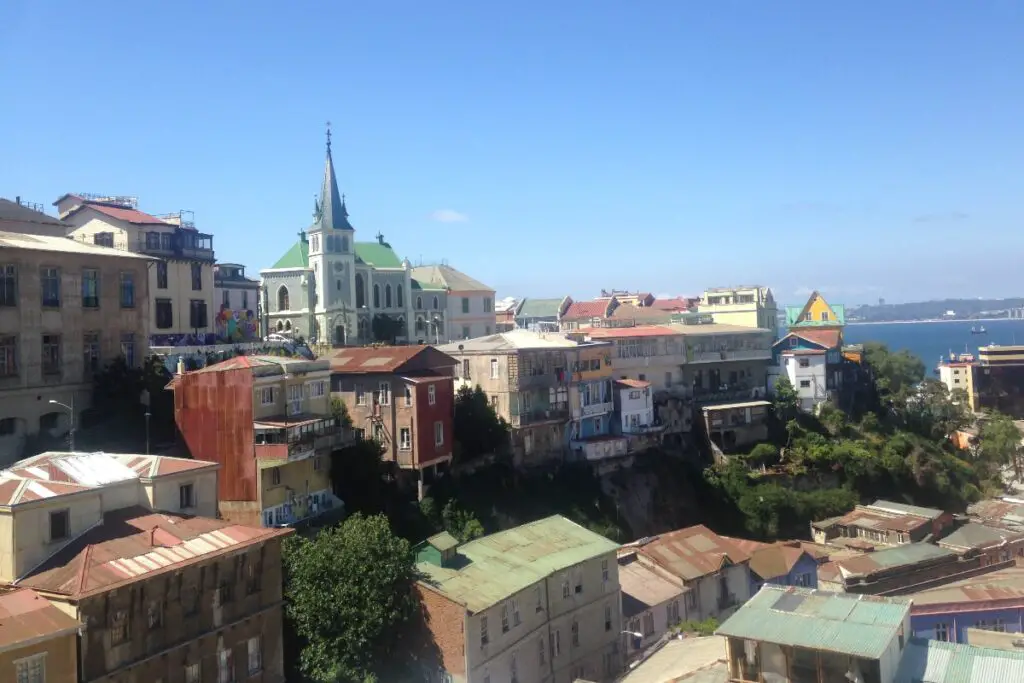
San Pedro de Atacama – Stunning desert landscape, which feels other-worldly, set around the laid back but somewhat pricey (by regional standards) town. One of the best places in the world for stargazing.
Antofagasta – Unremarkable port offers an insight into life in a non-touristy Chilean city and has good transport links going south.
Copiapo – Sleepy town which burst into the global spotlight in 2010 with the dramatic and very moving rescue of 33 trapped miners . Not much to see and some travellers opt to skip this area altogether by taking a flight south from Calama or Antofagasta to Santiago and then venturing onto Viña del Mar and Valparaiso.
Viña del Mar – Some of the best beaches in the country with one of South America’s most famous music festivals every February.
Valparaiso – Colourful town with a vibrant bohemian culture. A real, unexpected gem with some interesting museums and things to see including the former house of Chilean poet Pablo Neruda . It is immediately adjacent to Viña del Mar and the two can easily be combined into one visit. Read these 10 Questions answered on travelling to Valparaiso & Viña del Mar to find out more!
Santiago – Capital city with much to do in and around it. During the winter, there are even opportunities to go skiing in the surrounding Andes.
You can easily extend your time in Chile by following our backpacking route in Patagonia. To continue with this South America itinerary, there are buses from Santiago to Mendoza that take around 8 hours. The route is a spectacular crossing of the Andes and obviously you will see more if you opt for a day bus although night ones do run. You may want to stop off in a village in the mountains to break up the journey and enjoy the incredible scenery but be wary of altitude sickness! Check out BusBud for the latest schedules.

Mendoza – Excellent wine produced here and it’s also not far from Mount Aconcagua, the tallest on the continent.
Cordoba – Argentina’s second city is full of students and offers something of a Mediterranean feel. It’s a big city but much more chilled out than Buenos Aires.
Alta Gracia – Small country town outside of Cordoba. The main attraction in Alta Gracia is Che Guevara’s childhood home, which is now an excellent museum .
Rosario – Big city with riverside beaches and a slightly alternative vibe.
Buenos Aires – One of the world’s largest cities and a hugely popular destination on any South America backpacking route. Take in a football match to experience the national obsession, soak up the vibrant streetlife, and party in lively bars and clubs that stay open all night. Buenos Aires has perhaps the widest selection of things to see and do of anywhere on this itinerary so plan to spend a bit longer than usual here.
Colonia is actually a popular day-trip from Buenos Aires so it is very easy to get from Argentina to Uruguay. Buquebus is a company that offers fast boats taking just one hour or cheaper slow boats that do the journey from BA to Colonia in just under three hours. They also have boats direct to Montevideo and Punta del Este from the docks in Buenos Aires.

Colonia – A short hop across Rio de la Plata from BA, this cobblestone town with lively bars is a great if a little touristy introduction to Uruguay.
Montevideo – Small and very pleasant by the standards of capitals in Latin America. Popular with artists and architecture lovers.
Piriapolis – Fun, budget beach resort with jet skiing, windsurfing and banana boating.
Punta Del Este – Most popular beaches in the region and a big nightlife scene during the summer months or at holiday times!
Cabo Polonio – A tiny coastal village with sea lions, penguins, whales, rustic hostels and lots of hippies.
It’s a long trip north from Uruguay to Porto Alegre. One option is to cross the border on foot at the nearby town of Chuy. The main street is called Avenue Brasil/Uruguay and is where you will find the immigration controls. There is accommodation in the town if you don’t want to head straight to Porto Alegre which is around 7.5 hours away by day or night bus from Chui Bus Station on the Brazilian side of the border. This is where backpacking through South America suddenly seems to get a bit more expensive. Read more on the cost of travel in Brazil .
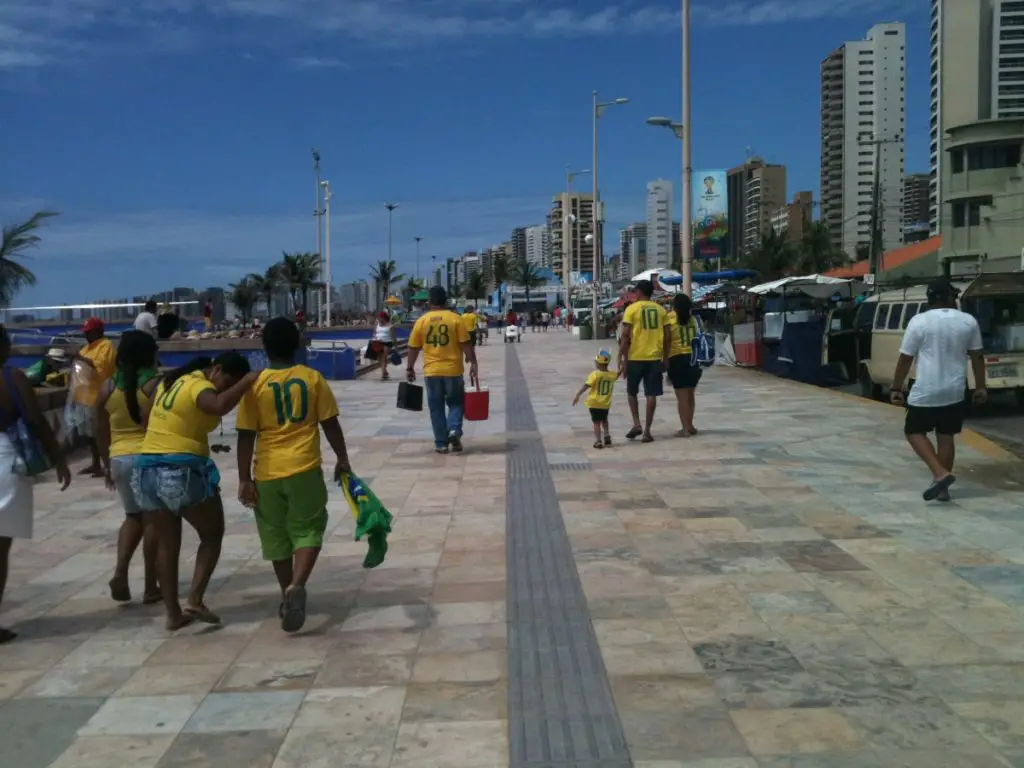
Porto Alegre – Relatively large city with a modern feel, a number of interesting museums and lively arts and music scenes.
Iguacu Falls – Spectacular waterfalls where three countries meet. Pop over into Paraguay if you’re looking to tick another country off your list. Iguacu Falls is one of our top 10 Latin America travel experiences!
Curitiba – Historic buildings, arty vibes and a European influence give Curitiba a different feel to other cities in Brazil.
Ilha do Mel – Enchanting island with top notch beaches, surfing and lively parties in the peak season. Cars are banned!
São Paulo – The biggest city in the southern hemisphere is chaotic but worth a visit just to get a feel for one of the world’s megacities. More on the monster that is São Paulo here!
Paraty – Stunningly preserved 18th century colonial town with so many beaches and islands nearby you are literally spoilt for choice.
Ihla Grande – More amazing Brazilian beaches, lush forests and island parties.
Petropolis – Easy day trip from the heat of Rio but it’s worth crashing in this historic mountain town for a night.
Rio de Janeiro – Rio would make a spectacular ending to your time travelling in South America. Time it to get here in March for the Rio Carnival if you can but remember to book accommodation in advance. The city of sun, sea and sin is so much fun!
Check out our specific Brazil travel itinerary if you want to keep going and explore more of the country. Otherwise Rio is a pretty good destination for flights home with one of the busiest South American airports . There are often more options from São Paulo though.
South America Map & Itinerary Overview

Our South America backpacking route starts in Colombia which has been experiencing something of a travel boom over the past few years and rightly so. It has evolved into a mostly safe, friendly and exciting place to visit with a fabulous mix of big cities, stunning countryside, Caribbean coastlines and Latin passion.
It then follows the Andes down through Ecuador taking in historic Quito and a jaw-dropping train ride. Peru is next and for many the highlight of travel in the region: the Inca Trail and a trip to Machu Picchu. Head east into Bolivia and be shocked and inspired in equal measure by the continent’s poorest country before diving into Chile for more spectacular Andean journeys.
Some vibrant big cities await as you head from the Chilean capital of Santiago on the Pacific Coast to buzzing Buenos Aires on the Atlantic Coast taking in the heart of Argentina as you go. After months on the road, it’s now very much relaxation time as the beautiful beaches of Uruguay and Southern Brazil await before going out with a bang in the ultimate party city of Rio de Janeiro.
This South America backpacking route is designed for 6 months if you take it at a leisurely place and usually opt for the higher end of the suggested time-frames.
Remember when planning your trip, that you will lose a lot of hours to bus travel which will add up to many days over the entire course of your South American adventure. There will be days when you are worn out from long journeys and don’t feel like doing much when you arrive at your new destination.
The above is only designed to be a guide and you can easily tailor your route to your own preferences. It’s also worth noting that there are a few seasonal destinations, for example Viña del Mar and Punta del Este, which don’t have much going on during the winter months and could potentially be skipped.
There are 56 different destinations in total which means on average you want to be spending about 3 nights in each place for the entire trip to take 5-6 months. There will be several opportunities to do night buses though. Travelling at night is one of the best tips for backpacking South America on a budget, as you can regularly find yourself saving the cost of a night’s accommodation.
There are loads of options for lengthening or shortening this itinerary or just doing almost entirely your own thing. Extensions may include spending time in the Amazon by delving deeper into Brazil or heading to Iquitos in Peru. Nature lovers would also be foolish not to make the long trip down to the chilly, southern tip of the continent in Patagonia.
If you’re pushed for time though, one option is to take a few flights along the way to save yourself many lonely hours on buses and skip some of the less interesting bits. One possibility would be flying from Quito to Cuzco and then heading on the Inca trail. Peru is a very large country with some dodgy roads and the ascent up to Cuzco by land is both challenging and time consuming.
If money is more your restraint and you only have three months for backpacking South America for example, consider focusing on the cheaper Andean region, particularly Ecuador, Peru and Bolivia.
This South America route was last updated in July 2022.
15 thoughts on “ South America Backpacking Route ”
Hello!! I am in the middle of finalising my plans for South America, due to be leaving in a few months and found this super useful in helping me plan thank you so much! I have 13 weeks and my original plan was to start in Cartagena, Colombia (my flight out isn’t booked yet so start destination can change) and follow a similar route to whats been posted here making my way down to Santiago, Chile where my flight home is booked from. However, with whats been happening in Peru recently a lot of people are recommending to avoid planning to travel through. I have looked at flights from Ecuador to Bolivia but currently they all require a stop in Bogota and I am trying not to go back on myself so am considering possibly missing out Ecuador. I was just wondering if you had any possible recommendations for how best to get from Ecuador to Bolivia if I were to avoid Peru and if Ecuador is a MUST go place or I would be ok missing it out. Did you find you had a lot of internal flights? I was hoping to avoid too many and am more than happy sitting on a bus.
Hi Mimi, glad you found it helpful. There were no major issues when I went (a few years ago), so it was possible to travel overland everywhere, although you do start to get sick of the buses after a while! I believe you can find much better prices on domestic flights in South America now so you might want to consider doing one in a larger country like Chile to save a bit of time but it’s possible to get everywhere by bus.
I think if you only have around 3 months to travel in South America and don’t want to backtrack then I wouldn’t say you absolutely have to go to Ecuador. Like you said, I can’t see any particularly good options for getting from Ecuador to Bolivia whilst avoiding Peru.
If you decide against Peru & Ecuador, you could instead maybe look at doing 3-4 weeks in Colombia, then flying to Bolivia and spending the rest of your time in Bolivia, Argentina & Chile, travelling overland. If so, I’d maybe look at doing Bolivia similarly to the route above and continuing on to San Pedro de Atacama. You could perhaps cut back through Argentina from there though in the direction of Buenos Aires before working back towards Santiago (via Rosario, Cordoba, Mendoza etc). You’d probably have time to do a week or two in Uruguay which is very easy to get to from Buenos Aires and small enough that cutting back wouldn’t be a huge pain.
Hope this helps, feel free to ask any other questions!
Hi! I´m planning to do this trip in my gap year. Do you think this trip is save for a woman traveling alone? And what time of year do you suggest starting this trip? Taking in account the best weather of all countries.
Hi Femke, We have a separate article on the best time to travel around South America which looks at your question in more depth. For this kind of 6 month route, I think starting out maybe around August time would be a nice idea and that will enable you to enjoy the summer in the south of the continent. Much will depend on what your priorities are though and there’s not really an absolute optimum time to do this route that will guarantee good weather everywhere.
Regarding safety, all I can say is that lots of solo female travellers do backpack around South America. It’d perhaps be a slightly daunting place to start out if you’ve not done any solo travelling before, but you should meet plenty of women travelling alone in a similar manner to you if you stay in hostels, particularly those with female only dorms. Personally (travelling alone as a man), I found some of the big cities (Quito, Lima etc) felt a little bit unsafe but overall I wouldn’t say I found travelling in South America noticeably more dangerous than in other parts of the world aside from that.
Hello! I can’t tell you how helpful this website has been in preparing for my trip to South America next month. I’m still feeling very unprepared to be honest, trying to decide which route and what to pack etc, but I’m just trying not to overthink it haha! So I’m doing this trip backwards, starting in Rio… but I’m considering adding in Patagonia and Ushuaia. I noticed in one of the other comments you mentioned a book? One that includes this route? Could you tell me what it is called please and where I might order it, that might be handy to take with me! Thanks so much again for all the info in this page, such a great help!
Hi Gary, glad the website has been helpful! There used to be a book but we are not doing any new copies so you can only buy second hand from people who bought it originally. Here’s the link to it but to be honest I wouldn’t recommend buying at the prices currently listed as it’s quite a short book and much of the info will be out of date now. There may be better options from Lonely Planet or someone but the problem is so much will have changed since covid in terms of prices and information about where to stay with hostels closing down and suchlike, that I’m not sure there will be any guidebook that is very accurate right now.
We also have a Patagonia route on the site which you may have seen. You could maybe do Rio to Buenos Aires then take a flight to Ushuaia before following the Patagonia itinerary all the way up to Santiago where you could rejoin this route. I think that might be your best option, at least as a rough plan to have in mind but obviously things can change once you start travelling so like you said probably best not to overthink it too much!
Have been reminiscing on travelling recently, and I have remembered this page which I pretty much used entirely to work out a backpacking route and costings etc – it was SO useful and big shout out to the author here for a class job. For context I did the Brazil part mentioned and then Bolivia/Peru sections, linked together by crossing the land border between Brazil and Bolivia which is in my opinion a seriously underrated place with lots of cool stuff to see and hardly any backpackers there as most bypass it to go to Argentina/Uruguay etc. I did it as a 19 year old lad by himself straight out of school on little money (Probably about £5500 all inc. the v. expensive transatlantic flights etc) and without speaking a word of Spanish or Portuguese til I arrived, so if I could do it then any of you could do the same – just saying!
Hi Luke, thanks a lot for your comment – it’s always nice to read something like this!
Glad you found the post useful in planning your trip and hope your positive experience at such a young age will help convince somebody else reading this to take the plunge and travel to South America 🙂
For Peru, Huaraz is unbelievable. They have so many mountains over 18k feet/6k meters. I agree with the article about Lima. I would only go to Lima to have the best ceviche. Seriously, nothing compares to Lima’s ceviche. I spent a lot of time in the northern regions of San Martin. Decent jungle to explore up there and great food as well.
This route looks very similar to the one which I’m planning on taking. Is there any way I could find out how long you spent in each place? Does the book go into detail on the route which you took here, or is it more of a general guide to South America?
The route in the book is similar to this one with a few changes, the biggest one being that it goes South from Santiago down to Patagonia ending in Ushuaia before moving onto Buenos Aires, Uruguay and Brazil. It basically combines/picks the best from this route and the ones for Patagonia and Brazil that are also on the site.
There are suggested number of days to stay in each destination in the book although it really depends on what interests you. Also the whole getting from A to B can become tiresome after a while as there’s just so many long bus journeys so I wouldn’t plan that out too much in advance. If you find somewhere you like and you want a break from travelling, you can always stay a fair bit longer.
In general the route in the book is slightly more detailed than this but is still more designed as a general guide/overview to backpacking in South America rather than in-depth info on each destination.
Of the 6 months recommended for this route, how long do you reckon would be spent in Brazil and Argentina?
2 weeks should be enough for the Argentina bit, maybe even less if you’re not a big fan of cities. Alta Gracia can be easily done as a day-trip from Cordoba so it’s only really 4 destinations.
As for Brazil, perhaps 3-4 weeks would be about right.
It depends a bit on your budget though as Argentina and Brazil are two of the most expensive countries in South America. You could easily spend far longer in both countries and visit more places than listed here.
Hey Kate, I’m planning to travel exactly the same route as described above and also in reverse. But I think I’ll start my journey in at another time of year. I would like to exchange some information about our trips, is this possible for you? Can I find you on facebook or on an certain email account? Greeting Tijmen
Thanks for all the info!! This is the exact trip I’m starting next year but in reverse from Rio up to Colombia then head over the Darien Gap to Panama and up through to Mexico. So it’s great to have it all written here so clearly.
What time of year do you suggest starting this trip? Taking in account the best weather of all countries (or try to!) I’m planning to start beginning of August which means I get to Peru for the Inca trail end Oct (just before raining season) also making it to the Darien Gap before Jan (heard it’s a rough crossing then?) Thanks for the help!
Leave a Reply Cancel reply
Your email address will not be published. Required fields are marked *
Save my name, email, and website in this browser for the next time I comment.

Look The World In The Eye

6 Month Backpacking South America Itinerary
We started in Chile, headed east to Brazil and made our way north via Argentina, Bolivia, Peru, Ecuador and Colombia before heading into Central America via Jamaica and eventually Mexico, Cuba and the USA. This 6+ Month Itinerary is for those with time up their sleeves! It involves plenty of long bus trips and a couple of days per place.

- Che Lagarto Ipanema
- Christ the Redeemer & Corcovado Mountain
- Sugarloaf Mountain (go in late afternoon to take in the view and then watch the beautiful sunset!)
- Ipanema Beach
- Copacabana Beach
- Sunset at Aproadar Rocks
- Football match at the Maracana
- Chinese Viewpoint (hike up and down!)
- Caprinha Cocktails!
- Kilogramas (pay per weight restaurants)

- Lagoon Backpackers in Buzios & an AirBnb in Arraial do Cabo
- In Arraial h ike to Praia do Atalaia, it’s beautiful
- In Buzios visit the Bridget Bardot Boardwalk
- Caipirinha Cocktails!

- Books Hostel
- Lapa Street Party (Friday night!) underneath the Arches
- NOT the tequila being handed out at the street party!

- Che Lagarto
- Hike to Lopes Mendes Beach
- Day trip with Jeronimo’s Tours
- Circuit do Abraao
- Hike to waterfall (Cachoeira) from Circuit do Abraao

- Che Lagarto
- Cachadaço Natural Pools
- Pedra que Engole “The rock that swallows” (ask at your hostel!)

- Explore town, beautiful cobblestone streets with brightly coloured windows and doors
- Paratiana Cachaca distillery
- Pedra Branca waterfalls
- Toboga – big slippery rock you can slide down!
- Poco do Tarzan (a 12 m jump rock, do it!)

- Barra Surf Hostel
- Visit the turtle sanctuary
- Sand-boarding
- & Much More

- Iguazu Falls (Brazilian side)
- Parque Das Aves (Bird Park) Note.. I didn’t really like it here, although it is a bird sanctuary (or at least started as one) it seemed to much like a zoo for me, lots of animals with not enough room to fly .
Iguaza Falls

- Garden Stone Hostel
- Visit the Falls (obviously)
- Fast Boat Trip under the falls!

- Milhouse Avenue Hostel
- Buenos Aires Free Walking Tour.
- Visit the colourful neighbourhood of La Boca
- Go to a football match (if in season)
- Visit Boca Jnr Stadium
- San Telmo Markets (Sunday)
- Explore Palermo neighburhood
- Visit La Cabrera (if you’re a meat eater)
- Visit Cafe Tortoni (BA’s oldest cafe)

- Lagares Hostel
- Bus wine tour
- Rafting Tour
- Hire Bikes from Mr Hugo and ride around visiting vineyards!

- 7 Duendes
- Go horse riding and BBQing with Sayta Cabalgatas
- Hike up to Cerro San Bernardo
- Go to the Museum to see remains of Incan children sacrifices
CHILE (again)

- Hostel Talar
- Tatio Geysers, Machuga & Thermal Pools
- Moon Valley & Death Valley
SALAR DE UYUNI 3D/2N 4WD TRIP CHILE → BOLIVIA

- Loki Hostel
- Witches Market
- Mountain bike “Death Road”
- Learn Spanish at Pico Verde
- Explore the streets and markets

- Mashaquipe Eco Resort
- Play with monkeys
- Search for Anacondas
- Swim with Pink Dolphins
- Catch (& release) Pirahnas
- Spot Caiman (Crocs!)

- Hostal Las Brisas
- Hike to Horca del Inca
- Hike to Cerro Calvario

- Hostal Del Sol
- Hike from one end of the Island to the other (and back)
- Swim in the lake!
- Enjoy one of the most beautiful places in all of SA!

- San Antonio Suites
- Visit Uros Floating Islands
- Visit Taquile Island

- Mercarderes Backpackers
- City Walking Tour
- Hike the Colca Canyon

- Milhouse Hostel
- Sacred Valley (visit ruins in a day trip or go and stay in villages)
- Hike to Saqsaywaman Ruins
- Free walking tours!
- Chocolate Museum
- The Inca Trail to Machu Picchu (or another trek similar, i.e. The Salkantay) Check out our post on The Inca Trail & Machu Picchu

- Carola del Sur
- Hike the sand dunes
- Sandbar the dunes

- Walk (or run) the cliffs!
- Visit the cat park
- Free walking tours
- Swim at the rocky and cold beach. Still a swim!
- Not sure, cities aren’t our thing and we really only had one day here.

- Hike up to the Church
- Eat ceviche!

- Kontiki Bungalows

Note: This was a necessary stop for our Galapagos trip, definitely not a must see destination for us.
- DreamKapture Hostel
- Visit Malecón 2000
- Visit Cerro Santa Ana

NB: We wrote a HUGE post on how to do the Galapagos Islands extremely cheaply. For more info on that check it out HERE
- 3 different Islands
- See Wildlife
- Everything.. READ OUR POST!

- Hostal Sole Mare
- Spanish Lessons with Miguel!
- Hike towards Olan

- Alternative Hostel
- Explore the town, nice colonial buildings
- Visit Cajas National Park

- Hostel Oasis
- Ride a bike down Chimborazo Volcano!

- Hostel Princesa Maria
- Casa del Arbol
- Visit Virgen Cascada (waterfalls)
- See Diablo Waterfall

- Hostel Tiana
- Hike the Quilotoa Loop!
- Hike up Cotopaxi Volcano
- Ride a bike down Cotopaxi Volcano

- Swim if you dare!

- Secret Garden Hostel
- Discovery Hostel
- Walk around Old Town
- Mitad del Mundo

- Hostel G…. (can’t read Sean’s writing!)
- Visit the markets
- Hike to lookout Point

- Bakano Hostal
- Graffiti Tour
- Mikes Bogota Bike Tours!
- Hike up Monserrate
- Visit Gold Museum
- Drink Chicha

- Black Sheep Hostal
- Real City Tours
- Pablo Escobar Tour

- La Florestra
- Coffee tour @ Finca El Ocaso
- Valle Del Cocora!
- Hike to Santa Rita Waterfalls
- Coffee Info tour at Casa La Eliana
- Coffee at Jesus Martin

We wouldn’t really recommend Santa Marta to spend time other than as a gateway to Minca & Tayrona!
- Go to Minca
- Go to Tayrona
- Go To Costeño Beach
- Go To Palomino

- Coffee Farm tour
- See hummingbirds

- Dreamer Hostel
- Get tubes & float down the river
- Not much else

Share this:
Similar posts.

2 Weeks of Spanish Lessons in Montañita

Itinerary for 5 weeks in Brazil

2 Weeks in Tasmania – Beaches, National Parks and more!

Quilotoa Lake and Chugchilan

6+ Week Central America Itinerary

Landing in La Paz… by bus.
Leave a reply cancel reply.
Your email address will not be published. Required fields are marked *
Save my name, email, and website in this browser for the next time I comment.
BACKPACKING SOUTH AMERICA IN 40 STOPS: AN UNUSUAL 6-MONTH TRIP ITINERARY

South America 6-month Itinerary: Adventurous Backpacking Route
South america 6-month itinerary: month 1, costa rica.
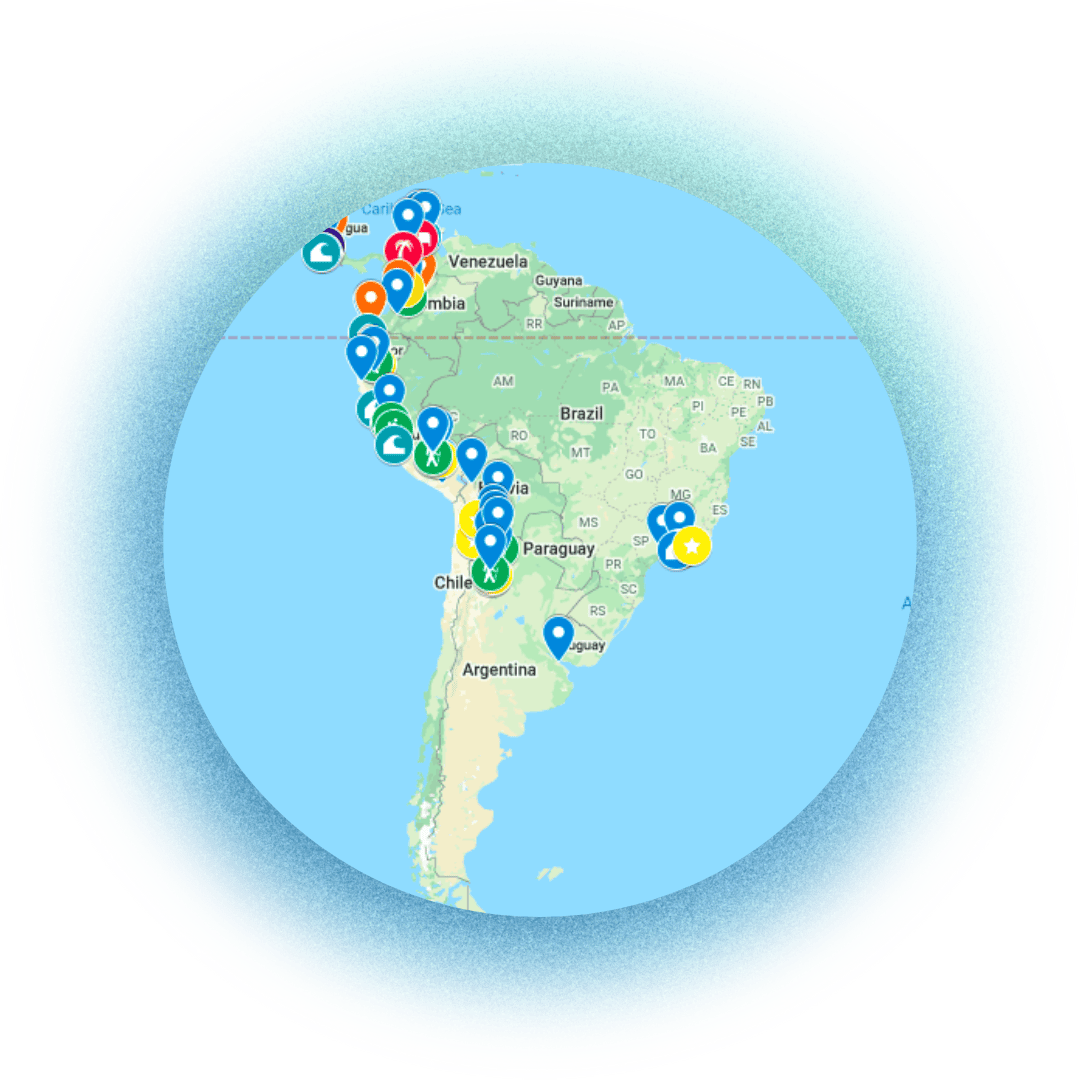
1) Land in San José, Costa Rica
2) san josé to monteverde cloud forest.
3) Monteverde to Montezuma ⭐

4) Montezuma to Santa Teresa
South america 6-month itinerary: month 2, colombia, 5) border crossing ✈️ costa rica to colombia, bogotá, 6) bogotá to salento.
7) Salento to Jardín
8) Jardín to Medellín
9) medellín to santa marta/palomino, 10) palomino to costeño beach.
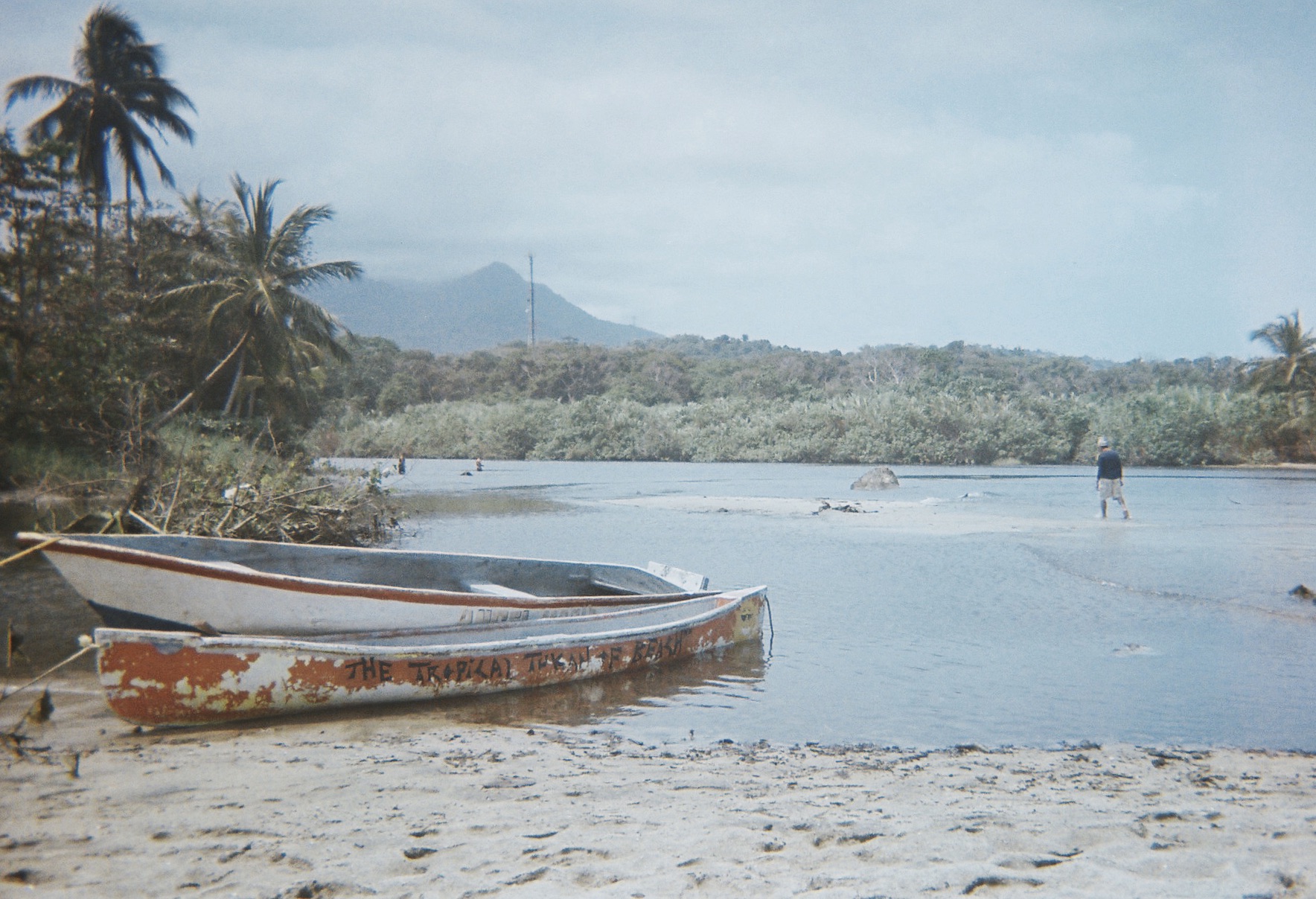
11) Costeño Beach to Minca
12) minca to isla mucura.
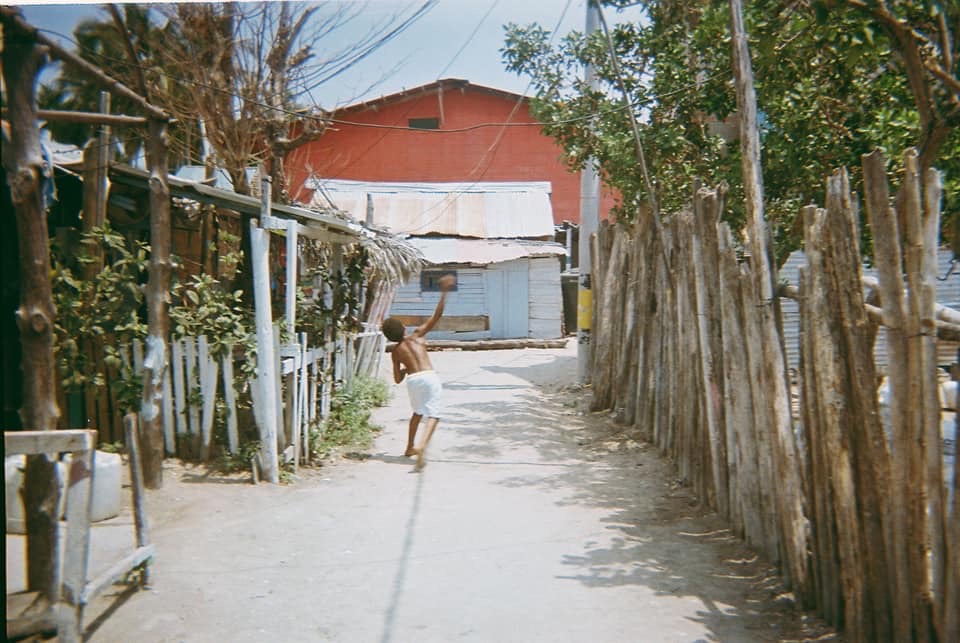
13) Isla Mucura to Cali
14) cali to popayán, south america 6 month-itinerary: month 3, ecuador, 15) border crossing 🚌 popayán to mompiche, ecuador ⭐.
16) Mompiche to Cuenca
17) Cuenca to Vilcabamba
South America 6 month-itinerary: month 4, Peru
18) border crossing 🚌 loja to huanchaco, peru ⭐.
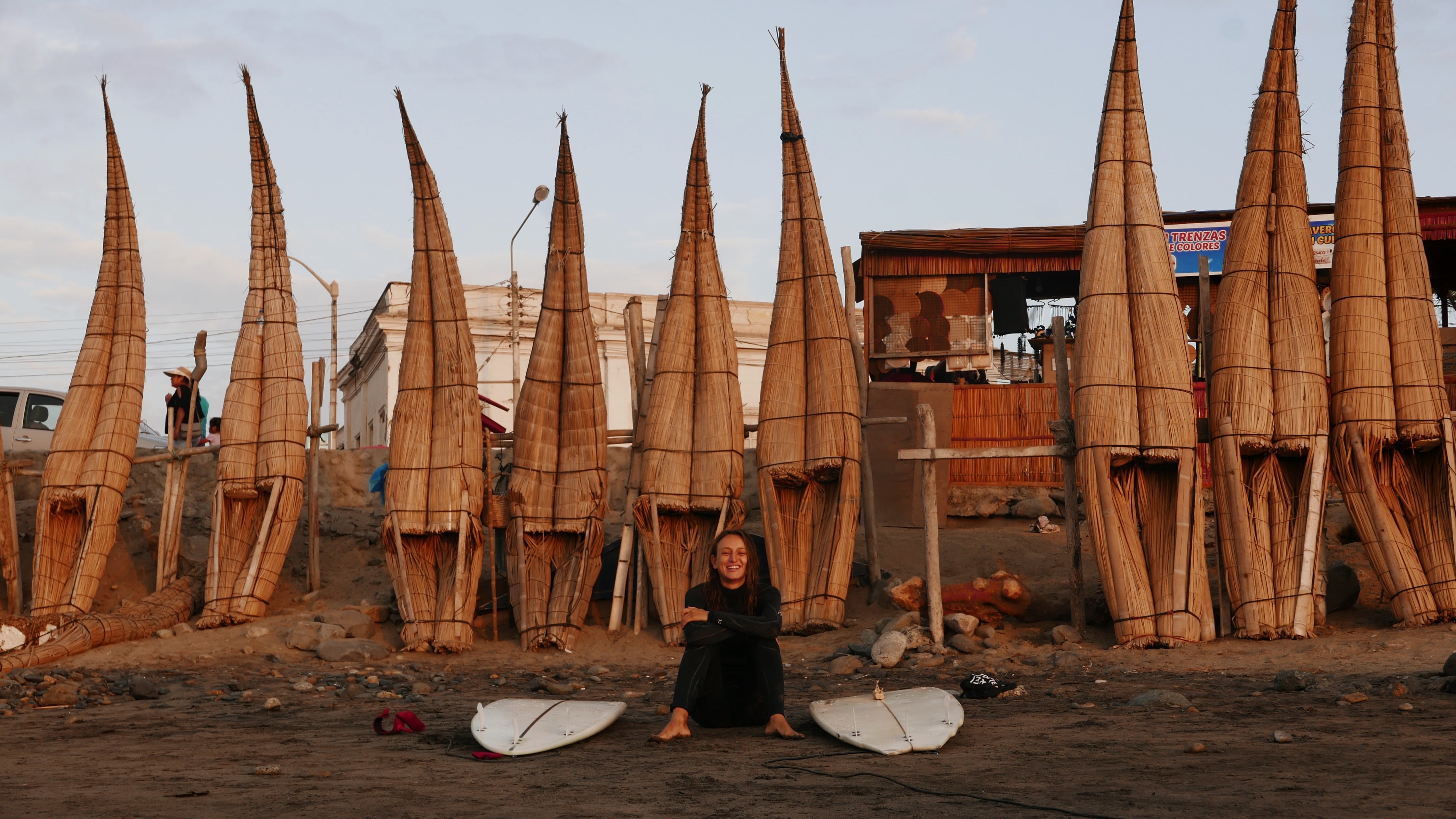
19) Huanchaco to Huaraz ⭐
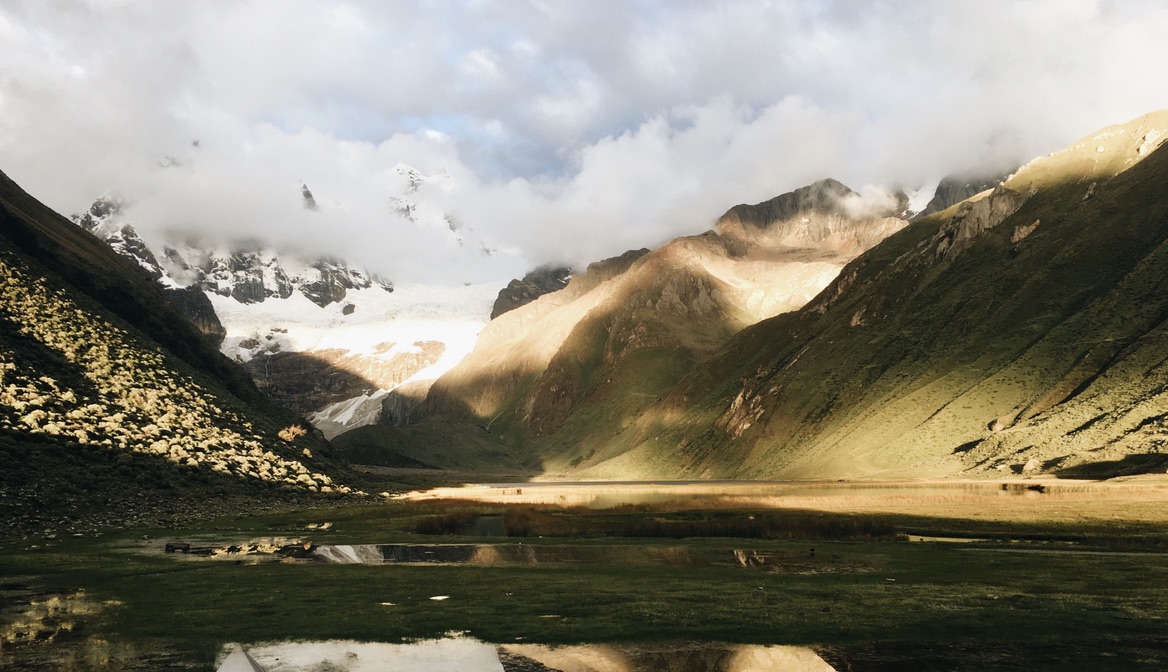
20) Huaraz to Lima ⭐
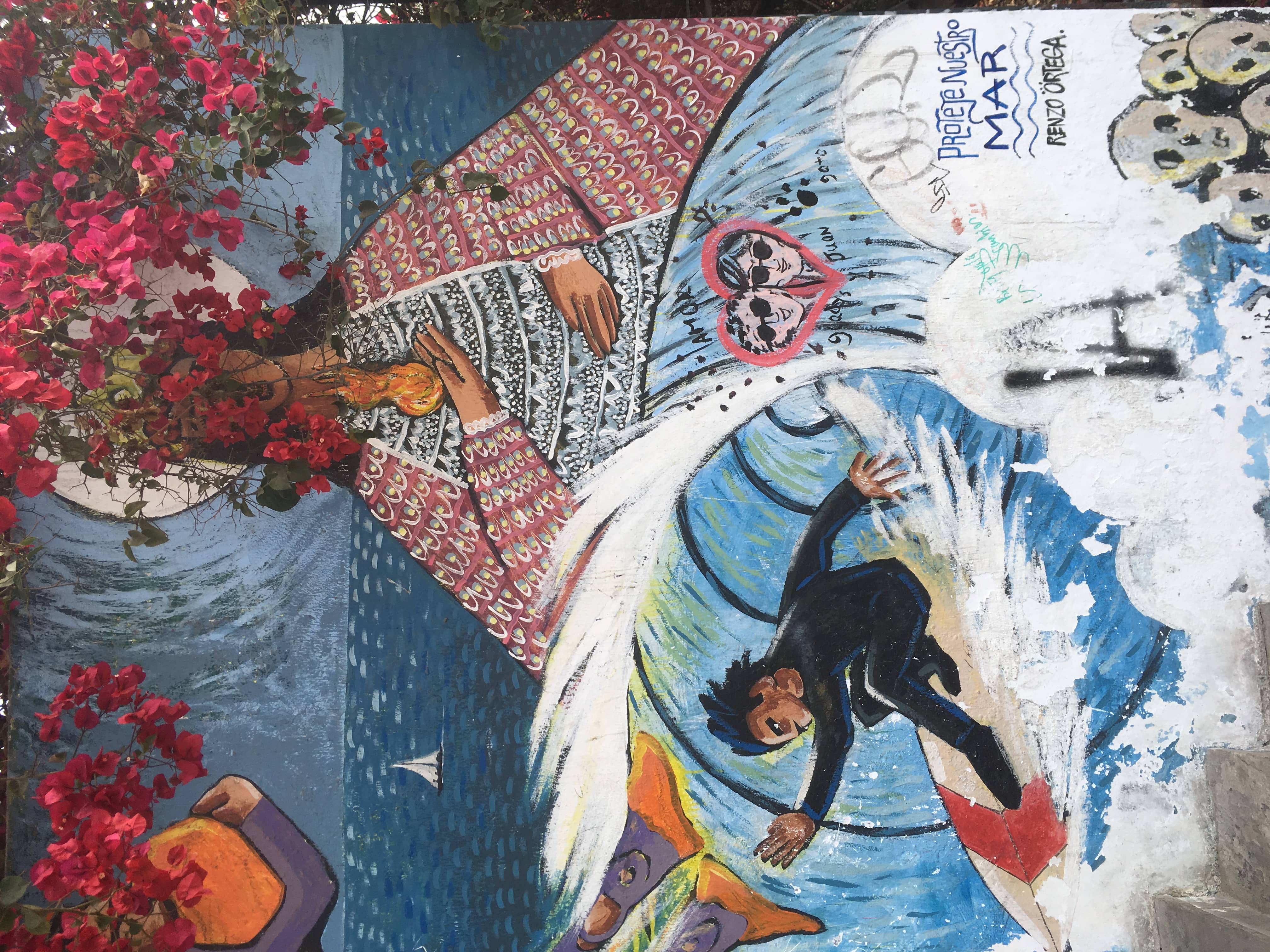
21) Lima to Cusco ⭐
22) cusco to arequipa.

South America 6-month itinerary: months 5, Bolivia & Argentina
23) border crossing 🚌 arequipa to la paz, bolivia, 24) la paz to sucre, 25) sucre to tupiza, 26) tupiza to salar d’uyuni / sur lipez, © maylis moubarak, 27) border crossing 🚌 tupiza to humahuaca, argentina, 28) humahuaca to iruya, 29) iruya to tilcara, 30) tilcara to salta, 31) salta to cafayate/angastaco, 32) cafayate to salinas grandes, 33) cafayate to buenos aires, south america 6 month itinerary: month 6, brazil, 34) border crossing 🚌 buenos aires to são paolo, 35) são paolo to ihla grande, 36) ihla grande to paraty & paraty mirim ⭐, 37) paraty to ubatuba ⭐.
38) Ubatuba to Rio de Janeiro
39) rio de janeiro to são paolo.
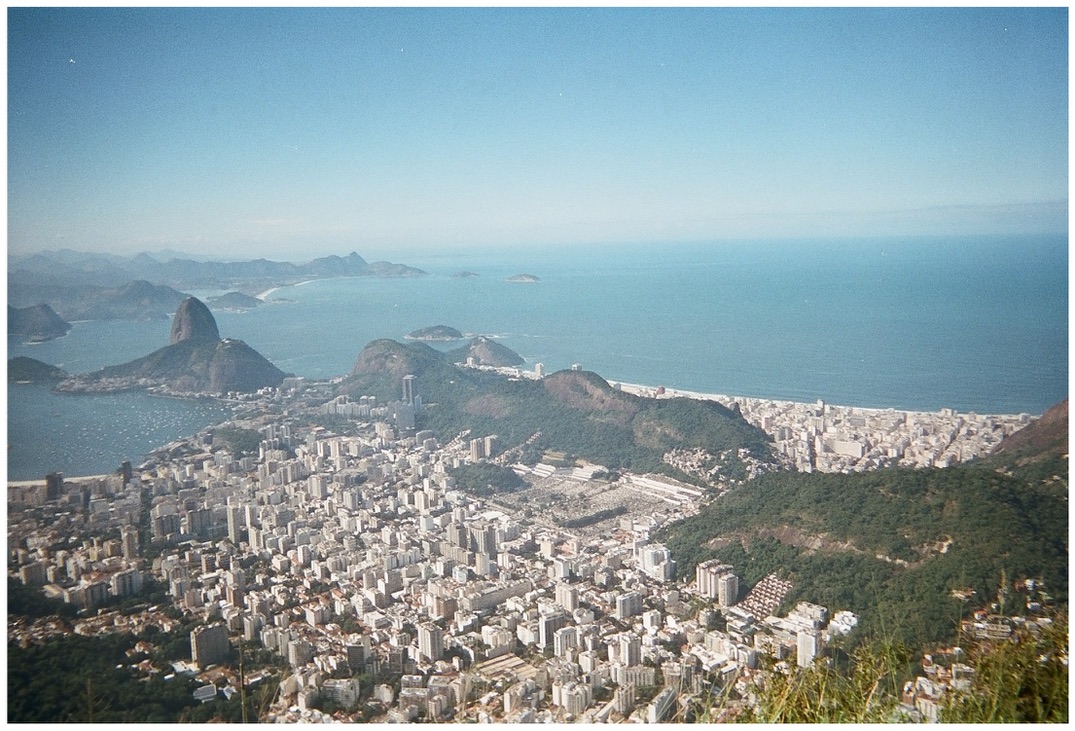
40) São Paolo to Paris
Surf & trek 6-month south america itinerary map.
6-month South America Itinerary Weather Table: January-July
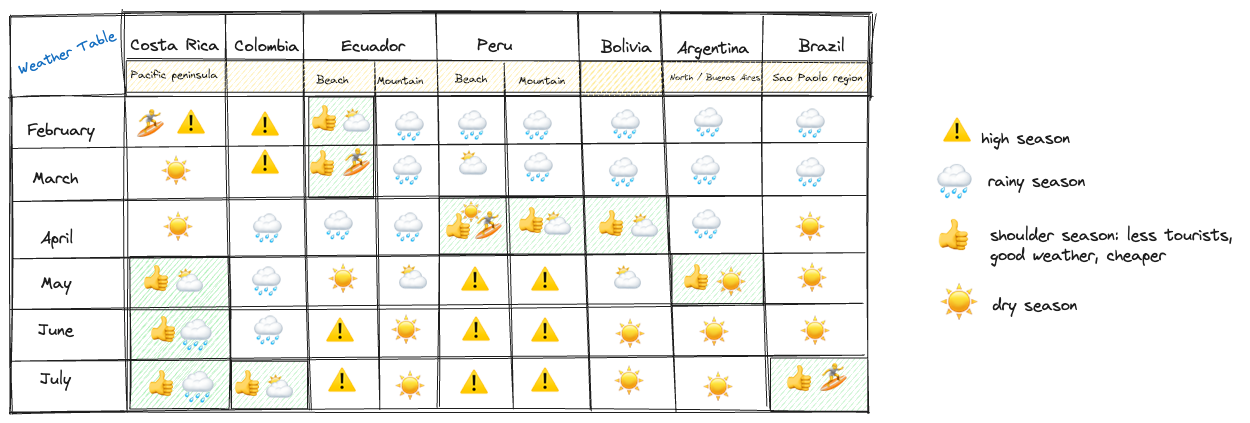
- What to pack for a 6-month backpacking trip in South America
- How to plan a budget-friendly backpacking trip (with a free budget worksheet template)
- Wellbeing on the road: 10 mental health tips for solo backpackers
- The all-in-one backpacking trip planner (free!)
An immersive travel log for outdoor enthusiasts seeking a sweet digital escape.
We’re on the road right now – join in on the fun and follow @thebrokebackpacker on IG!
- Meet the Team
- Work with Us
- Czech Republic
- Netherlands
- Switzerland
- Scandinavia
- Philippines
- South Korea
- New Zealand
- South Africa
- Budget Travel
- Work & Travel
- The Broke Backpacker Manifesto
- Travel Resources
- How to Travel on $10/day
Home » South America » Backpacking Travel Guide
Backpacking South America Travel Guide (TRAVEL TIPS • 2024)
So you are getting ready to travel South America, eh? Great call!
Backpacking through South America is like learning to ride a bike without the training wheels. There is just the right amount of danger and curve balls to keep you alert, focused, and totally stoked on life.
With the exception of a handful of backpacker hotspots, South America is the wild west frontier of backpacking. This is the land of crazy parties, epic surfing, sprawling cities, and wild landscapes including the Andes and the Amazon jungle.
Above all else, South America is stunningly beautiful. Though challenging to navigate at times, it’s budget backpacker friendly, diverse, relatively safe, and one hell of a travel experience…
But South America is MASSIVE. Deciding where to go and how to plan travel to South America is a mind-boggling task. That’s where I come in, amigos. This South America travel guide will provide you with EVERYTHING you need to know to prepare for your trip through South America.
Here’s the full low-down on backpacking South America itinerary and routes, country profiles, tips and tricks for South America budget travel, and much more.
Lace up your bootstraps and prepare to have your travel inspiration skyrocket. We’re going on an adventure!
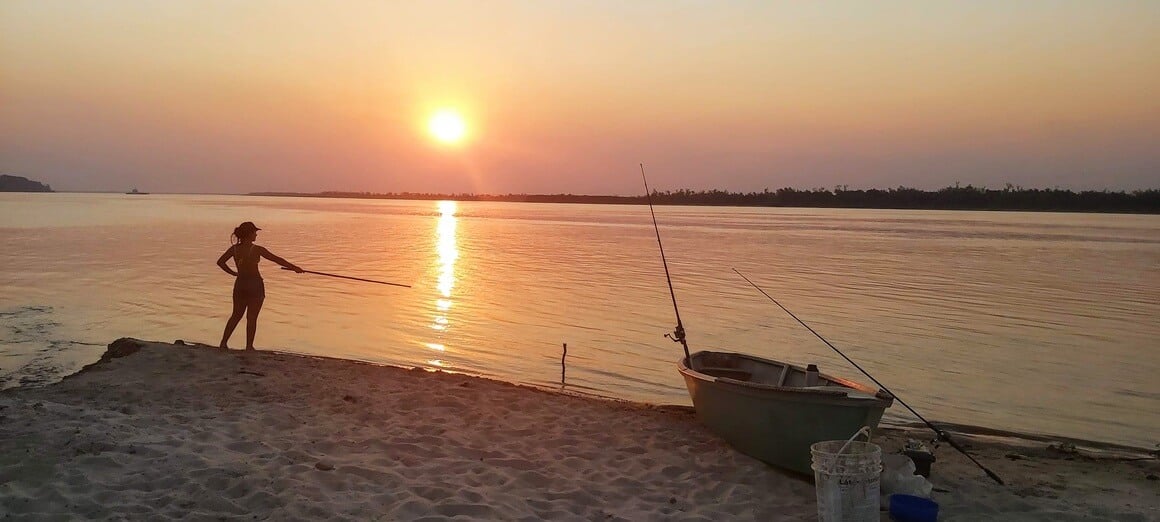
Why Go Backpacking in South America?
The South American continent is one of my favourite places on earth. It was always a place that mystified me: the traveller group was generally older and more mature. So when I got invited (by a sexy South American), I jumped at the chance.
It’s a place where I learned the art of budget travel , fell in love countless times, and had a multitude of life-changing experiences along the way. If you want to get off the beaten track whilst still having the option to meet plenty of other travellers, South America is the place to level up your backpacking skills and head on a real adventure…
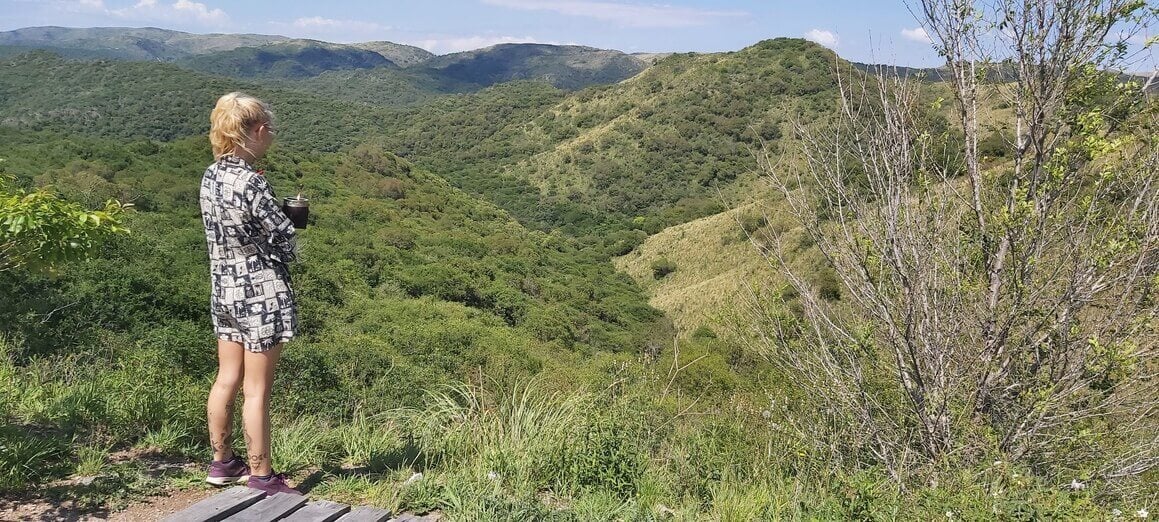
South America is one of the most diverse continents on earth. It is home to the world’s second-highest mountain range in the Andes, world-class surf beaches, the Amazon Basin, the world’s driest desert, huge plains of lush grassland, glaciers, and unique wildlife not found anywhere else on Earth…
Each country you visit whilst backpacking South America offers up the opportunity to experience the incredible natural and cultural forces unique to that region.
Backpacking South America is generally a cheap endeavour – although it’s not as cheap as Southeast Asia or India. There are some fairly expensive corners of South America that you should avoid if you’re travelling on a budget .
You will fall in love with South America (and maybe a person or two along the way). So let’s dive into some South America travel itineraries and backpacking routes for your trip.
Best Travel Itineraries for Backpacking South America
Best places to visit in south america – country breakdowns, 9 top things to do in south america, backpacker accommodation in south america, south america backpacking costs, best time to travel to south america, staying safe in south america, getting into south america, how to get around south america, working in south america, what to eat in south america, south american culture, unique experiences in south america, faqs about backpacking in south america, final thoughts on backpacking south america.
When making a South America backpacking itinerary, remember that travel distances are HUGE, internal flights expensive, and sometimes you want to stay somewhere longer than anticipated.
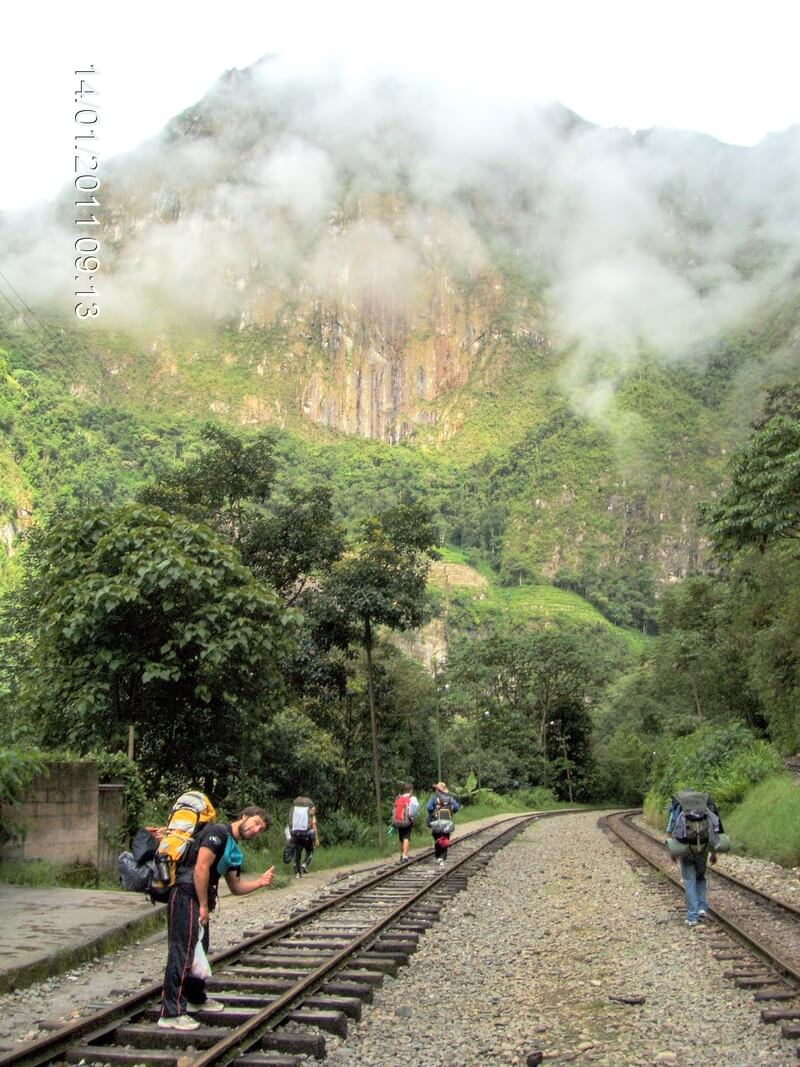
So choose your South America backpacking route carefully. Unlike other continents, how much time you have really matters; you simply can’t do all of it.
If you only have 2 or 3 weeks for travelling South America, forget about seeing the whole continent. I recommend sticking to one country and devoting your energy to exploring it properly.
In one month, you could explore some countries closer to each other. You could visit Bolivia and Lake Titicaca in Peru for example. It’s good to have room for spontaneity in your South America travel itinerary too.
2 Week South America Travel Itinerary – The West Coast Appetizer
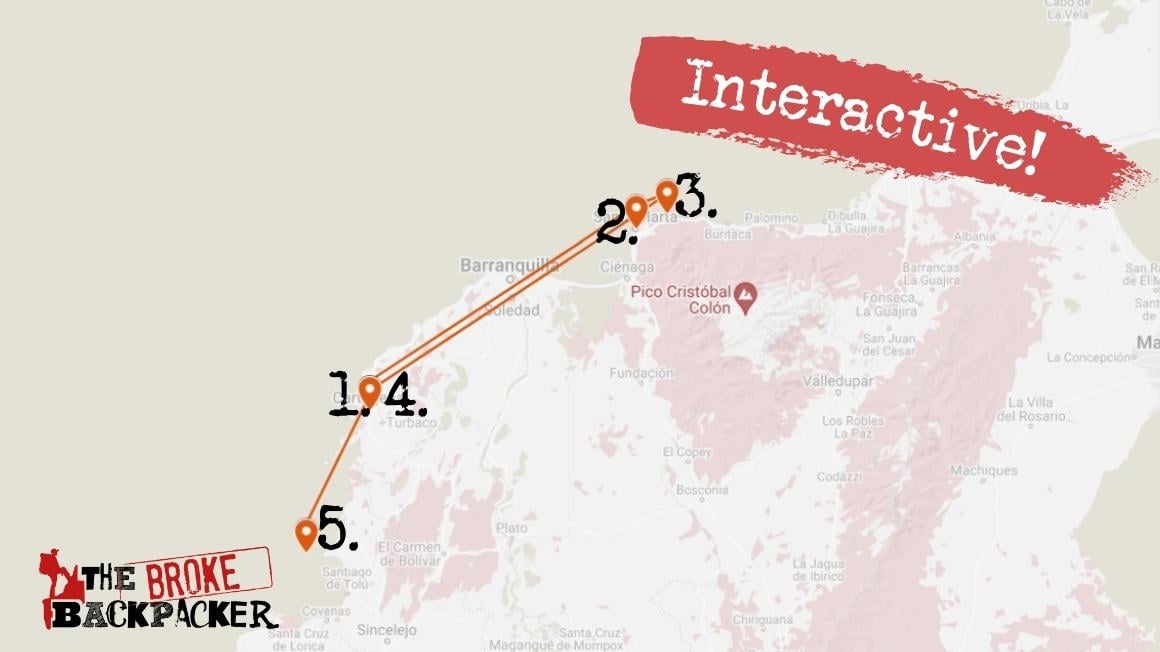
You’ll have to keep moving to make this itinerary happen in 2 weeks, but I believe in you!
Start your backpacking South America itinerary in Colombia by visiting Cartagena . After a few days, head to Santa Marta , the jump-off point for Minca – a charming mountain town – and Tayrona National Park.
Get a bit off the beaten path, and head east to Cabo de la Vela (where the desert meets the sea) and Punta Galinas , where you can feast on fresh seafood along the Caribbean coast. Doubling back to Cartagena , head to nearby Playa Blanca and Tolú (mangrove) before heading to Islas de San Bernardo (white-sanded islands).
Or you could start in Lima , Peru. Explore the city for a day or two before heading to the Nazca Lines , Arequipa , and Colca Canyon .
Then head to Cusco in the Andes. Take a few days to get used to the altitude before setting off on a multi-day trek to Macchu Picchu.
Alternatively, start in Buenos Aires . Then you can head south to trek in Patagonia . In southern Argentina and Chile, you can do the world-famous Torres del Paine circuit . 2 weeks is cutting it fine but – if you hustle – you could pull it off.
In 2 weeks, you can get a good taste of Colombia, Ecuador , or Bolivia . Don’t miss out on the Salt Flats .
1 Month South America Travel Itinerary – The Starter
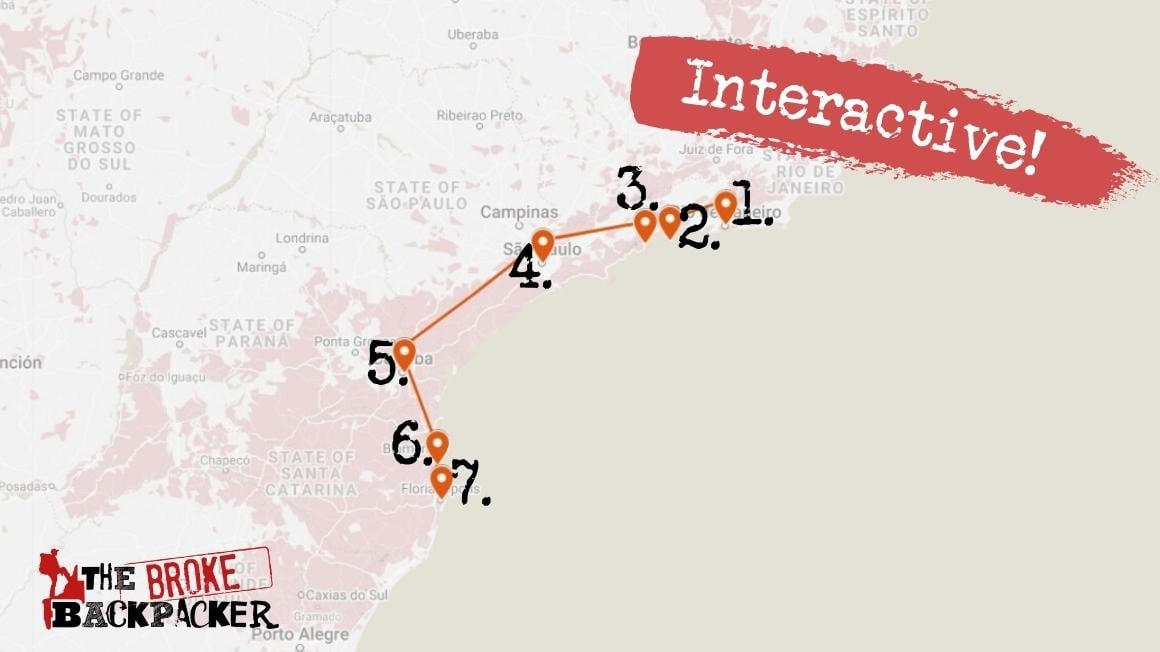
With 1 month, you can make an epic backpacking South America itinerary. If you want to explore more than one country in South America, you’re gonna need more than 3 weeks.
For surf bums, you could easily spend a month heading beach to beach from Southern Peru all the way to Colombia , in 1 month. Or you could do 2 weeks in Argentina followed by 2 weeks of hiking in Chilean Patagonia .
If it were me, larger countries like Argentina, Chile , and Brazil are better to explore with more than 1 month. You can do it but you will spend a long time on bus journeys, so I would just stick to one area.
Southeast Brazil is a good choice for 1 month on a South America itinerary: travel from Rio de Janeiro all the way south to Florianópolis and hit up everything in between. Bear in mind that you’ll probably want to stay in Rio AND Floripa longer than you expect.
Highlights of this route include exploring the megapolis of São Paulo , idyllic getaways of Ilha Grande and Paraty , eco-friendly and laidback Curitiba , and the crazy nightclubs of Balneário Camboriú .
Or, you could fly into Ecuador and spend 3 weeks exploring here: stay at a great hostel in Guayaquil before heading to Montañita . In Montañita you can party and surf to your heart’s content. Head North towards Bahia de Caraquez and Canoa for surf towns that are more off the beaten path.
Next head to the mountains, stopping first in Quito . There are some excellent treks in the Ecuadorian Andes .
If you have time, definitely hit up the Volcano Loop trail on the outskirts of Cotopaxi National Park . A trip to the jungle around Puyo is recommended as well. Then head for a week of trekking in Colombia .
3 Month South America Travel Itinerary – The Great South America Main Course
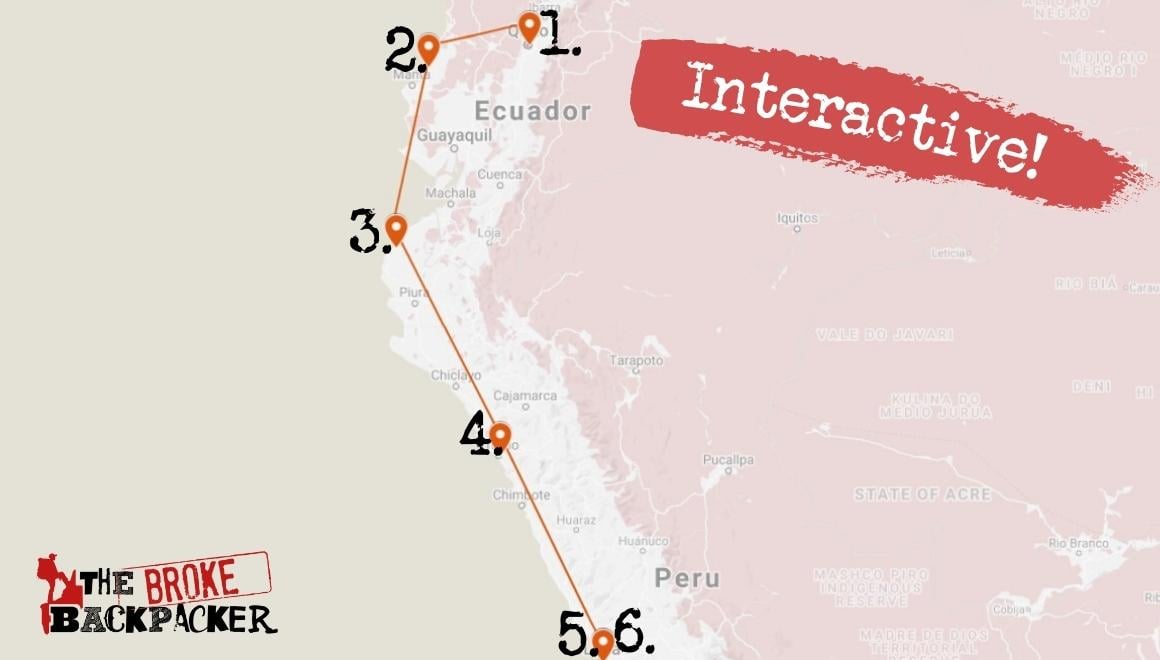
3 months backpacking South America, eh? Hell yes!
I recommend flying into Lima, Peru unless you know you want to start in the north (Brazil or Colombia) or further south (Argentina or Chile). Explore Lima and the coast before heading to the Andes. There Machu Picchu awaits in all of its glory.
Definitely do a trek to the famous Inca city! (More on hiking in South America later). From here, you can either drop down on the other side of the Andes and explore the Amazon basin or you can head south to Bolivia and eventually Argentina and Patagonia .
Alternatively, you can slowly start making your way north via the Coast. You could spend a month (or more) in Ecuador, Colombia, or Brazil respectively.
Personally, I started off in Buenos Aires then went north to Brazil and Colombia . The distances were truly massive. I’m talking 30-hour bus rides (on comfortable buses I must say).
Travelling in South America is never a quick affair, so plan your itinerary accordingly.
6 Month South America Travel Itinerary – The Full 3-Course Latin America
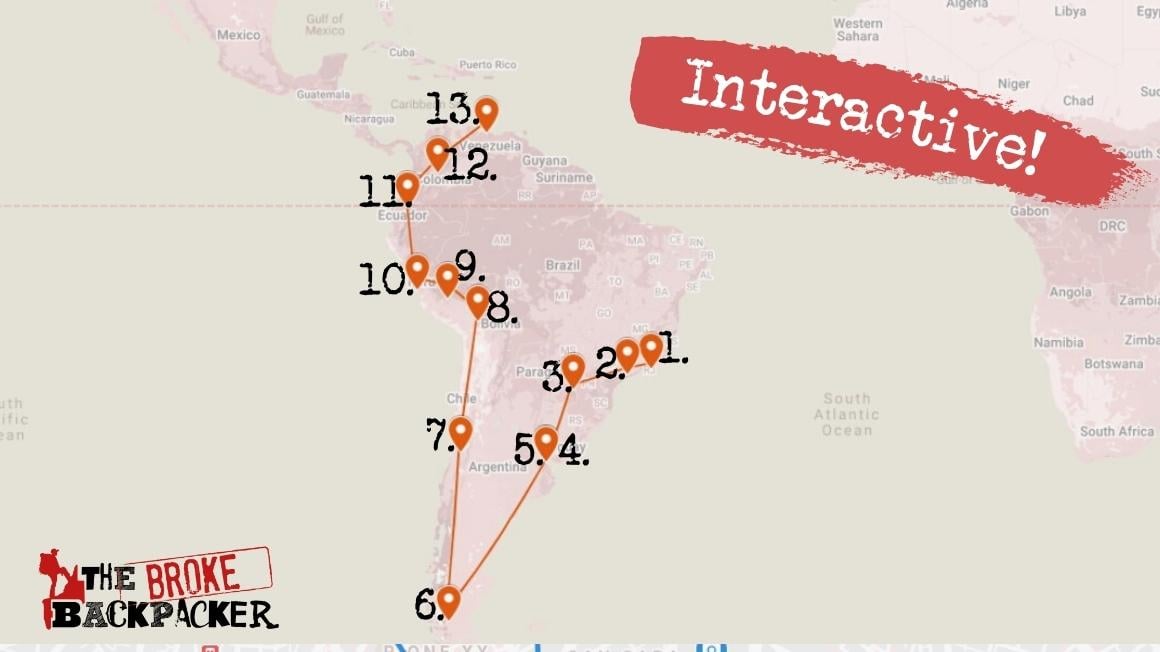
Life has brought you to the fortunate crossroads of having 6 months to travel South America? Good on you!
With a 6-month backpacking South America itinerary, you have the luxury of really being able to take your damn time. To see multiple countries, it’s a practical choice to begin your journey either in the north or the south to avoid backtracking.
With a 6 month itinerary, you can explore many South American countries in depth. I’ll be honest with you, the itinerary shown on the map is really fucking ambitious. But hopefully, it gives you an idea of what crossing this vast continent would look like.
Starting your journey in Rio de Janerio or São Paulo might be a bit of a rough landing, though you will be a primed bad-ass by the time it comes to move on to another country. Other options are starting with some days in Buenos Aires , in Argentina, and Chile, in the south.
You could be surfing it up on the coast of Ecuador one day, and be in the mountains of Peru several days (and many bus rides) later. I advise taking a chunk of your time to really explore and get off the beaten path in top destinations like Brazil , Colombia , and Bolivia .
Having 6 months or more to go backpacking truly means you have a total blank slate to work with. So get ready to write your own beautiful backpacking destiny!
Each country in South America has something unique and profoundly exciting for backpackers. But they also have some common themes: they are Spanish speaking (minus Portuguese in Brazil), they have stunning natural beauty, and some of the nicest people you will meet whilst travelling. So finding the best places to backpack in South America has a lot to do with your own interests.
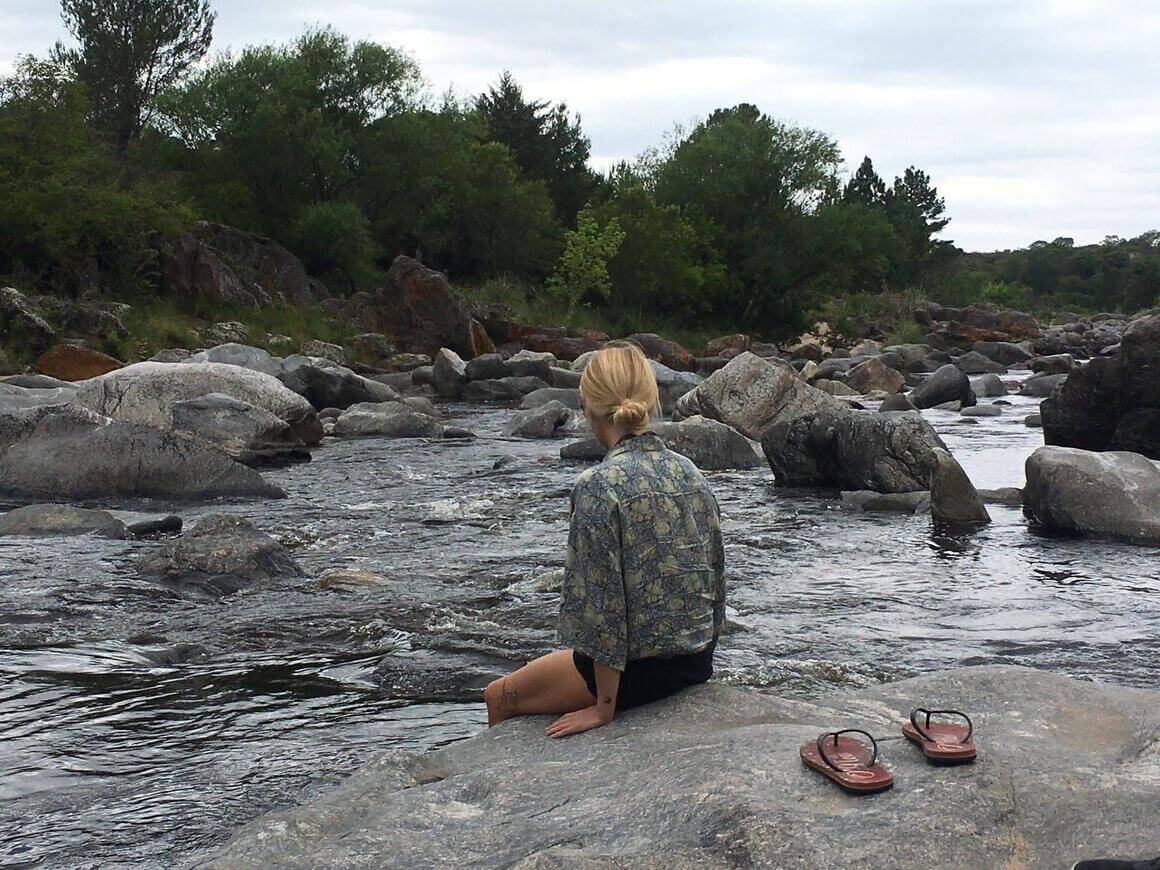
Maybe you’ll explore the epic snow-capped peaks of Patagonia in Argentina and Chile. Party with beautiful people at the Carnival in Brazil.
Trek to the Lost City in Colombia. Experience the sun-drenched deserts of Bolivia and the colourful Rainbow Mountains of Peru.
Backpacking through South America truly is a life-changing journey through one of the planet’s most fascinating landmasses. When you visit South America, you can be sure that it will be some of the most fun you will have in your life.
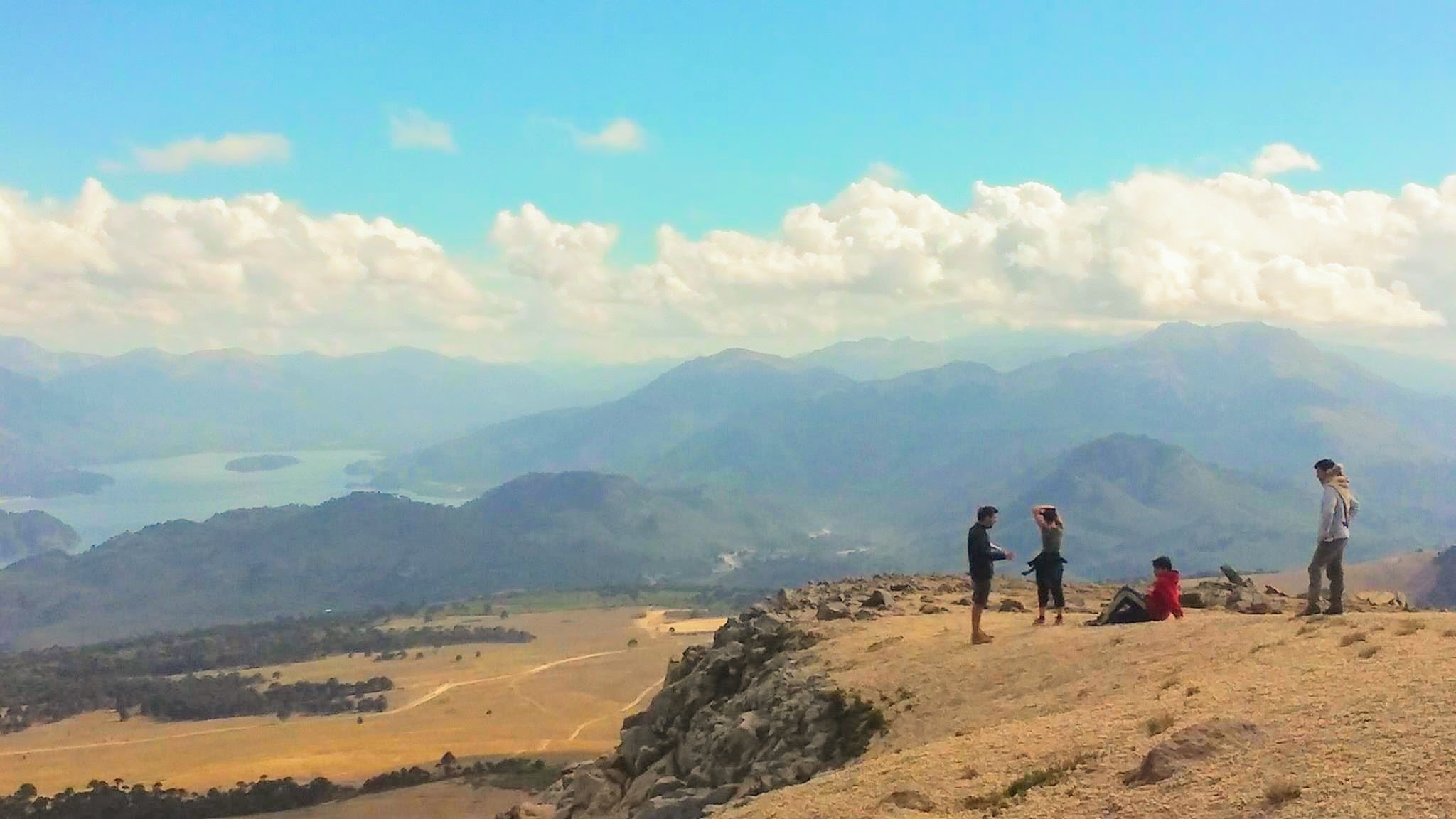
South America is a vast continent on the move. The number of people travelling to South America is increasing every year. Whilst the cost of living in South America remains quite low, each country requires a different budget for travellers.
Once you begin to discover a few of the South American countries, you will be entranced by the jaw-dropping landscapes, fascinating history, vibrant culture, and awesome food.
Let’s take a look at the countries that make backpacking in South America so damn special.
Backpacking Brazil
Brazil is, hands down, one of South America’s most dynamic countries. It’s all about the extremes. Whether it’s the parties, the people, or nature, the vibrations run through everything – and connect everyone.
Backpacking in Brazil offers up sick surf beaches, fun-loving locals, insane parties, and landscapes that would make even the most seasoned traveller say “no shit, mate, look at that!”
Of course, the Brazilian festival Carnival is legendary – and for good reason. Get your mind blown on the Brazilian side of Iguaçu Falls , visit the Amazon , drink a Caipirinha on the beach! Plus Brazil’s home to big up-and-coming cities like Belo Horizonte, Curitiba, and Natale.
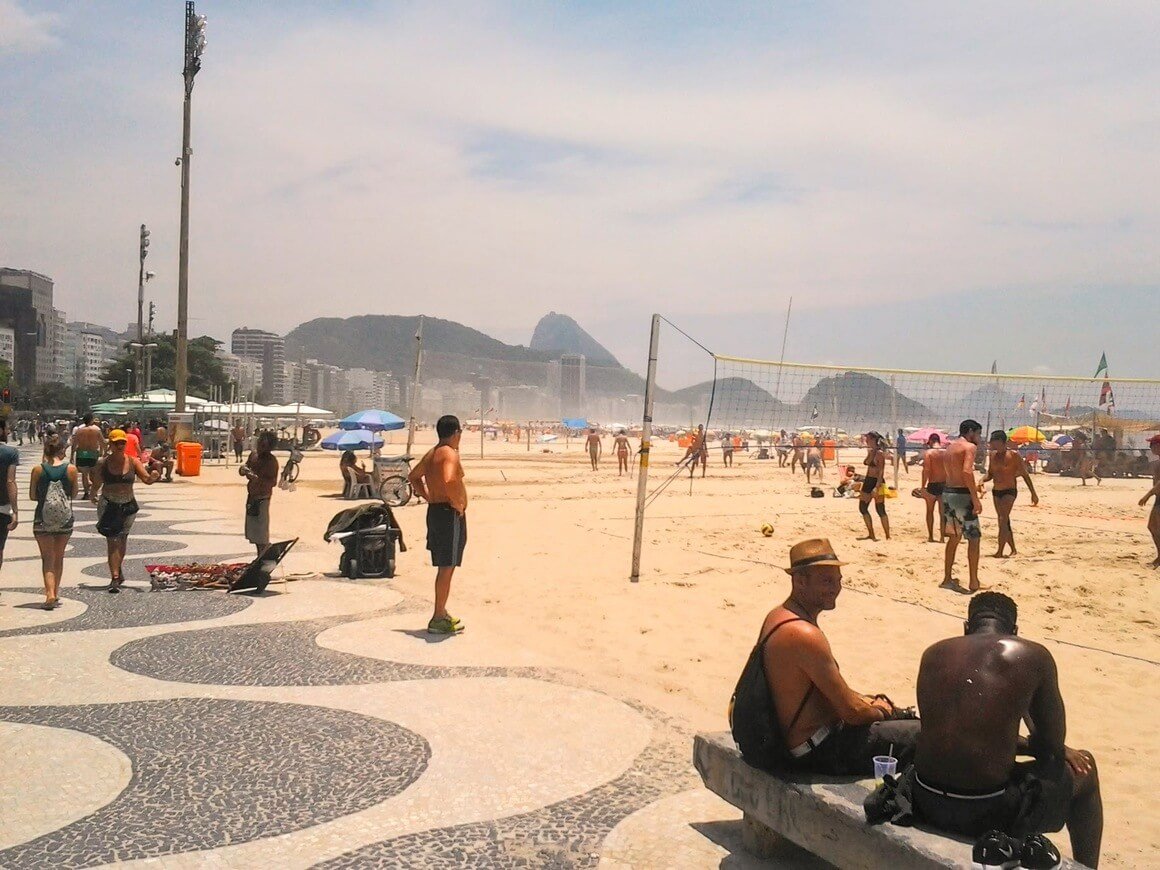
And when I say ‘extreme’, I mean extreme : Brazil is absolutely MASSIVE and covers nearly half (47%) of South America’s landmass! That should give you an idea of how big it is.
But, more importantly, it gives you a better idea of how much diversity Brazil has on offer. In fact, there’s a lot going for Brazil that you may not be aware of.
For example, trekking probably isn’t the first thing that pops into your mind when you think about backpacking through Brazil. It’s a shame because Brazil has truly gorgeous trails spread throughout the country. It’s also home to Iguazu, one of the most incredible waterfalls on Earth.
The best hiking opportunities are usually found in Brazil’s national parks (parques nacionais ). Brazil has over 70 national parks and – in terms of beauty – these can contend with any other on Earth.
What to Know Before Visiting Brazil
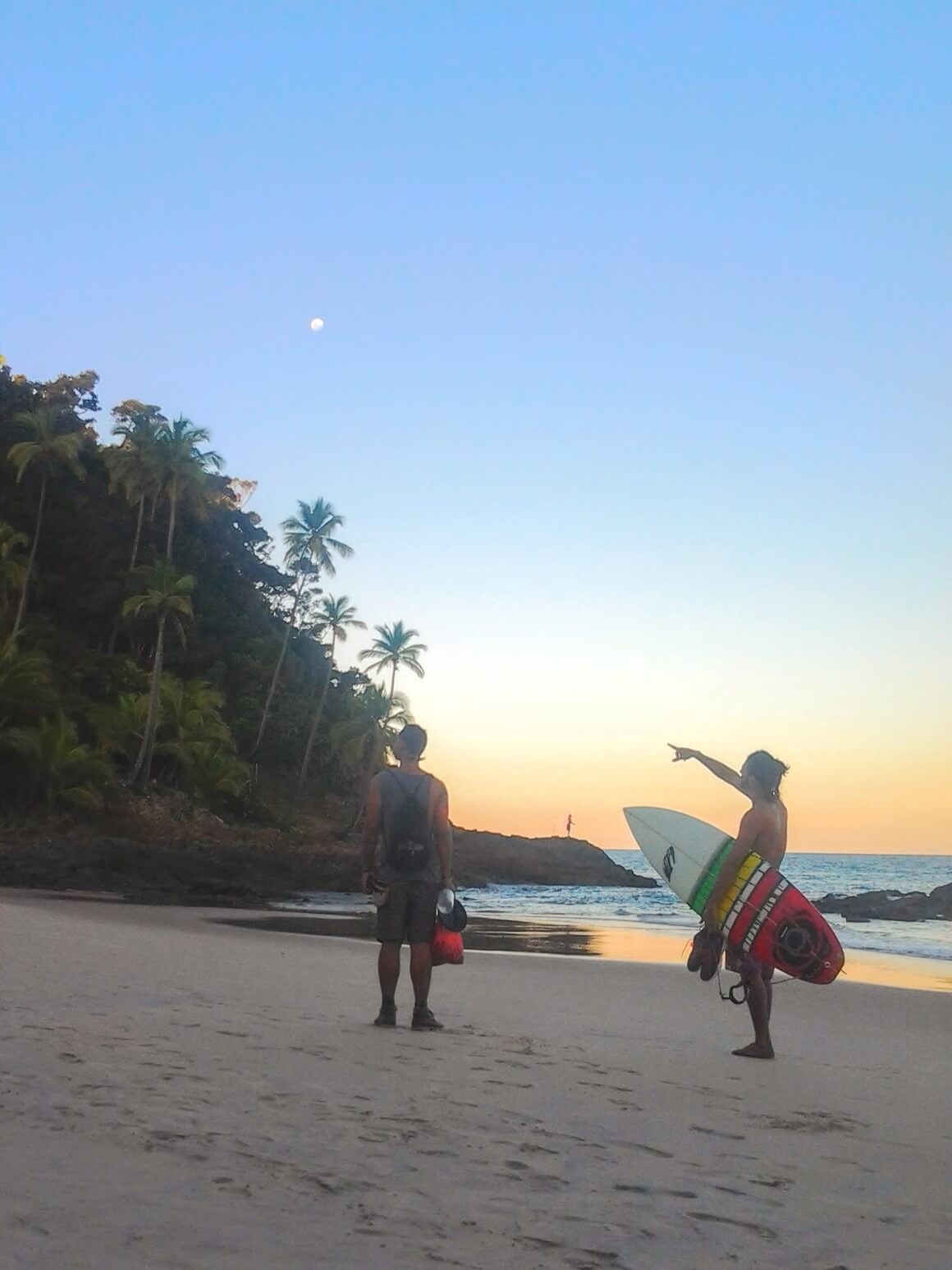
- Don’t miss out on… Florianopolis. The Brazilians favourite place to visit for a reason. It’s chilled, safe, and gorgeous. You plan to stay in Floripa for a week, it grabs you by the balls, and you get stuck for months.
- Keep an eye out for… Travel distances. Don’t be fooled: they’re way longer than they seem on the map. Give yourself plenty of time to get from A to B.
- The coolest hostel is… Hostel do Morro . In one of my favourite destinations in Brazil, this hostel is a true nature immersion. In the “mato”, with sea view and monkeys visiting. A true good vibes place!
- The best food is found in… Belo Horizonte. There is an amazing energy to this place; everyone hangs out on the streets, eating and drinking at plastic tables, all night long.
Backpacking Colombia
Whilst South America has many countries that I consider to have the full package , Colombia is the most complete. It’s a relatively small country. So considering the scale of epic surf, neverending parties, untouched jungle, happening cities, and towering mountains, Colombia is a reason for backpackers to keep travelling!
Cali, Cartagena, Bogotá , and Medellín are a few major cities in Colombia where you can really let loose. Go and have some extraordinary conversations with the locals about life in Latin America and not taking life too seriously.
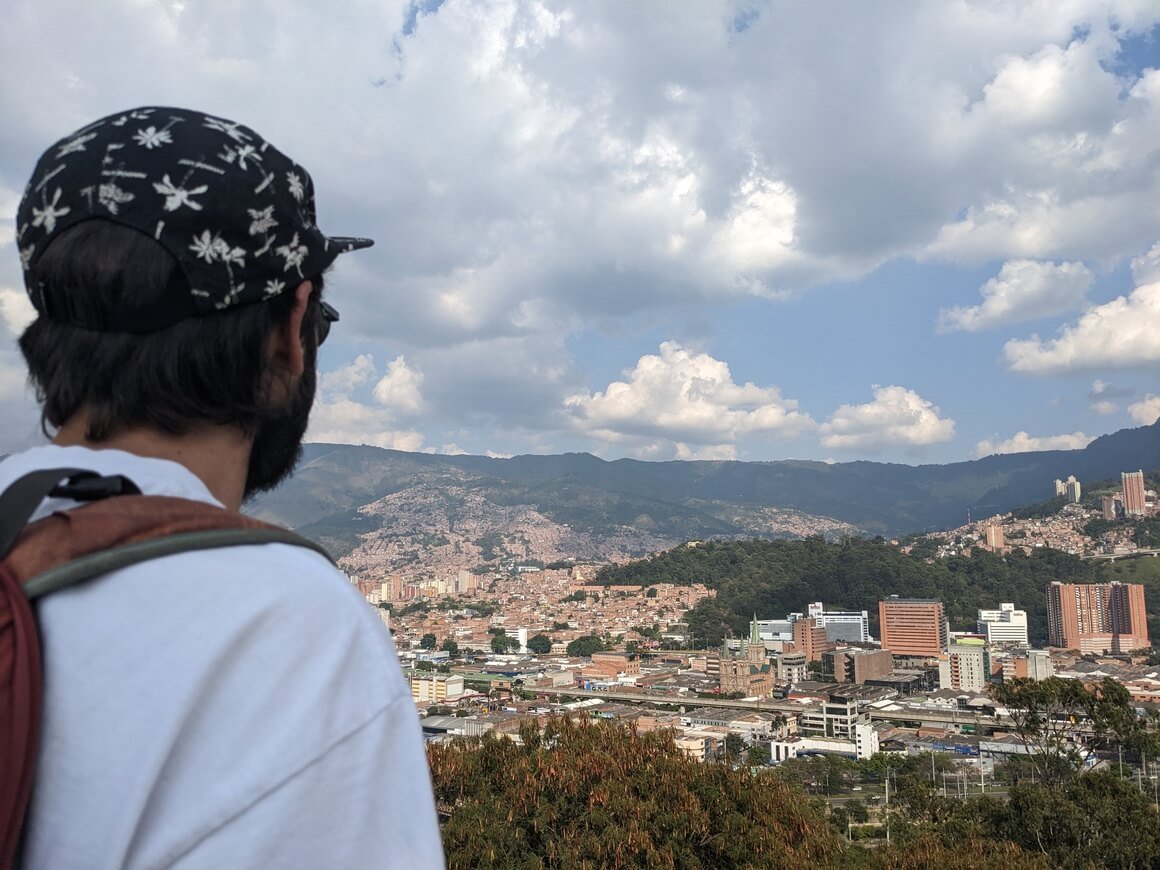
Is Colombia safe ? Perhaps your mum would love to know. Hell yes, it is !
As much as Colombianos are ready for the disassociation with Pablo Escobar, it’s hard not to mention the impact that he made on the country and the South American continent as a whole. But his reign of terror is over.
Modern-day Colombia couldn’t be more different from the days when narco-traffickers ruled the country. Visiting Medellín now vs 20 years ago is a COMPLETELY different experience. The Medellín of today is a great experience.
Colombia is for adventure junkies and nature lovers too. The northern terminus of the Andes Mountains ends here and you can take your treks into the deep jungle in Colombia’s National Parks .
What to Know Before Visiting Colombia
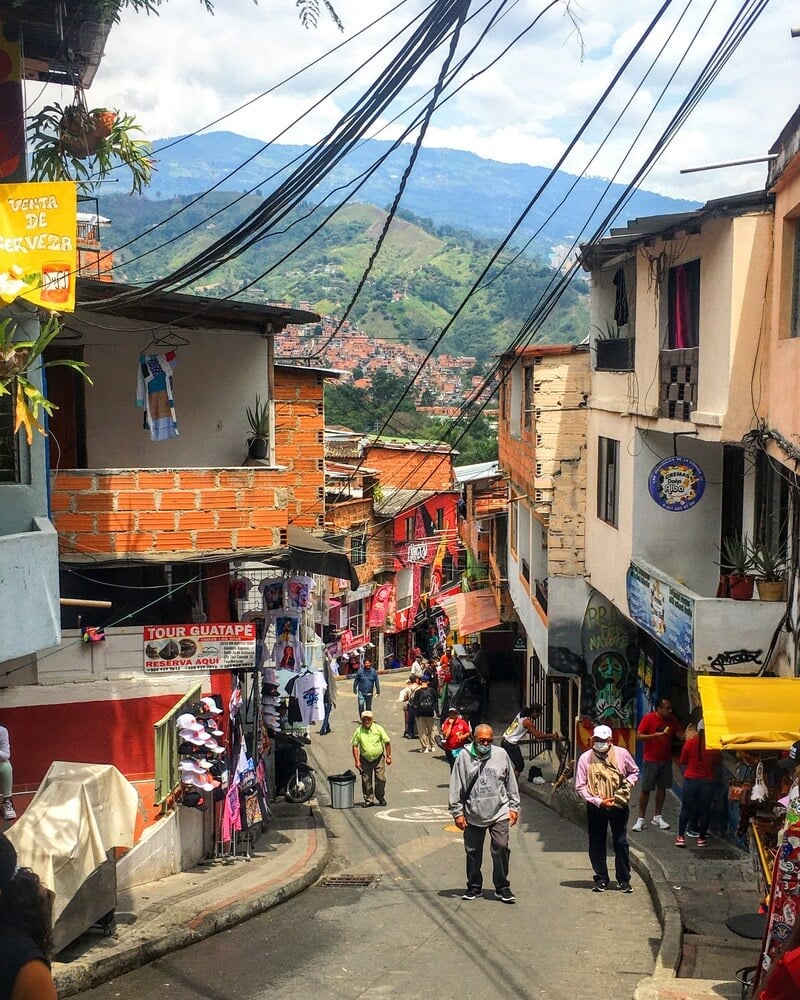
- Don’t miss out on… Carnival in Barranquilla. Most of the time, this industrial town is overlooked by travellers. But for one week of the year, this place goes NUTS.
- Keep an eye out for… how difficult the trek to Cuidad Perdida is. It’s long, treacherous, and hot as shit, but absolutely worth the effort in the end. The Lost City is one of the best places to visit in South America.
- The coolest hostel is… Viajero Santa Marta Hostel . Great location and has lazy and peaceful vibes. Amazing rooftop and activities to connect and meet other travelers.
- The best food is found in… the local restaurants. Look for the menu del dia to feel like you’ll never need to eat again.
Backpacking Ecuador
Ecuador might be small but it certainly packs a punch. I spent 3 months backpacking in Ecuador and could easily spend many more.
The diversity is incredible and it’s a great place to experience Andean Highland culture. The people who live in the Andes have a distinct and ancient culture rooted in mountain life. They even speak another language called Quechua . It’s a relatively safe country , and isn’t ruined by mass tourism.
In addition to staying in colonial cities like Quito , Ecuador’s natural landscape is the biggest draw. You can spend weeks or months exploring the coast before heading to the mountains and vice versa. Towering over the shore, volcanoes, waterfalls, and massive snow-capped mountains all make incredible trekking routes.
Surfing reigns supreme on the Ecuadorian coast. It attracts surfers from all over the globe. Even if you’re a beginner, it’s a great place to catch your first waves. Towns like Montañita and Canoa are famous surf beaches and party hotspots.
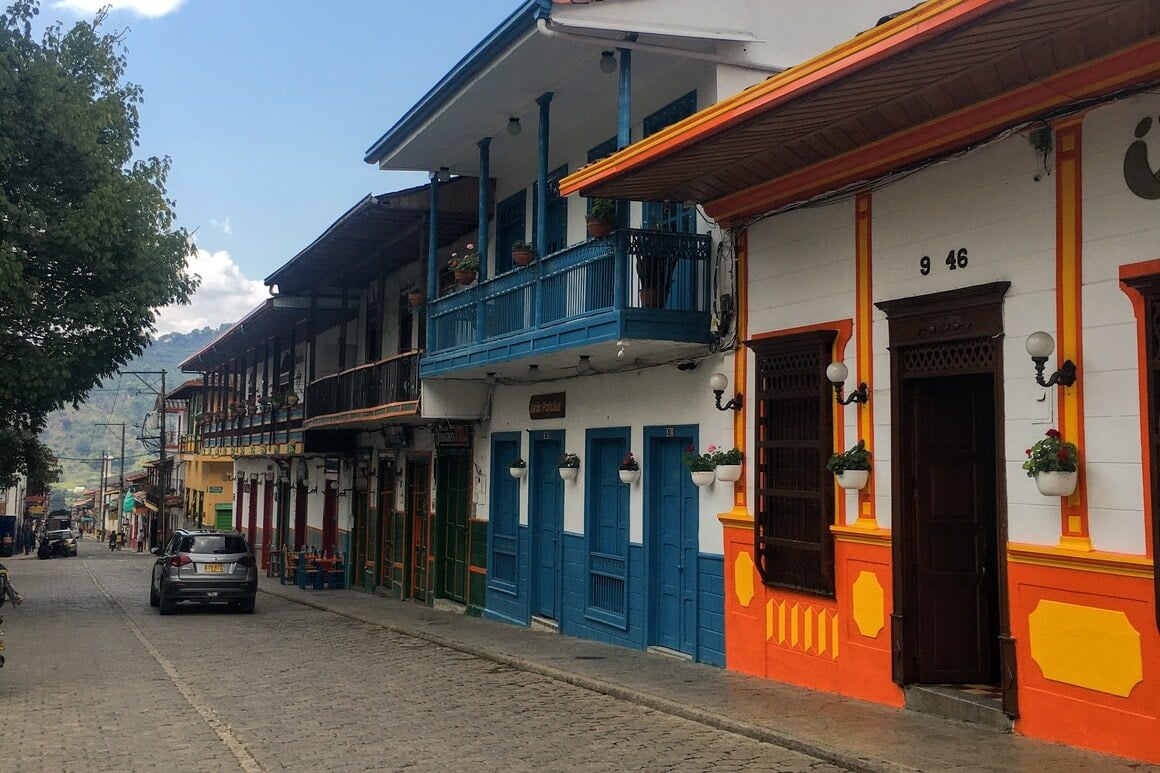
If you have some extra cash in your budget, you can visit The Galápagos Islands . But be warned – this is not a cheap endeavour, especially for excursions like diving (though it is AWESOME). So prepare yourself to shell out some cash!
Then there is the Amazon Basin of Ecuador. The Amazon region is what helps make Ecuador one of the most biologically diverse places on earth. The Amazon is best explored by boat with a local guide and is bound to be the adventure of a lifetime!
What to Know Before Visiting Ecuador
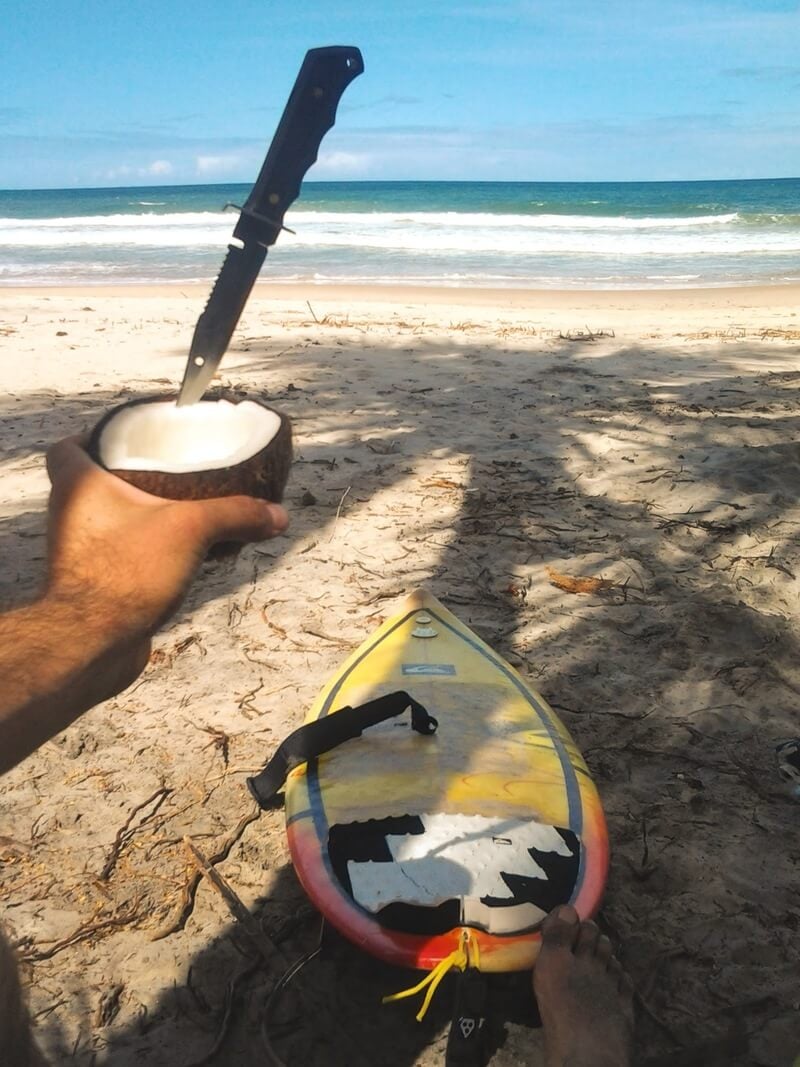
- Don’t miss out on… exploring the highlands and Cotopaxi National Park. Easily accessed from Quito and totally epic.
- You know what’s overrated … Montañita. It’s not all it use to be and is mostly catered to foreigners who want to get wasted and high. If you want real Ecuadorian culture, there are better places nearby.
- The coolest hostel is… Casa del Sol . Relaxed vibe at a few steps from the beach. Close enough to go party and far enough to have a good sleep. THE place for yoga and Surf.
- The best food is found in… the small almuerzo (lunch) cafes found across the country.
Backpacking Peru
Ah Peru. Backpacking Peru is the essence of travelling in South America. Though tourism has spiked in Peru in recent years, there is still plenty of magic to be found here.
The cost of backpacking Peru is a little higher than you might expect. Expect to pay between $30-40 USD a day whilst travelling here. (But more about the cost of backpacking South America later.)
Peru has a super long coastline dotted with prime surf beaches and scuba diving sites. In the Andes lies a whole other form of beauty.
I mean, who isn’t aware of Machu Picchu and hiking the Inca Trail ? Besides the obvious, there is much, much more to the Peruvian Andes than Machu Picchu. Although, you still have to go there!
Peru has some truly fascinating colonial cities as well, including Cuenca and Cuzco, which is the gateway city to Machu Picchu. The off-the-beaten-path potential in Peru is enormous.
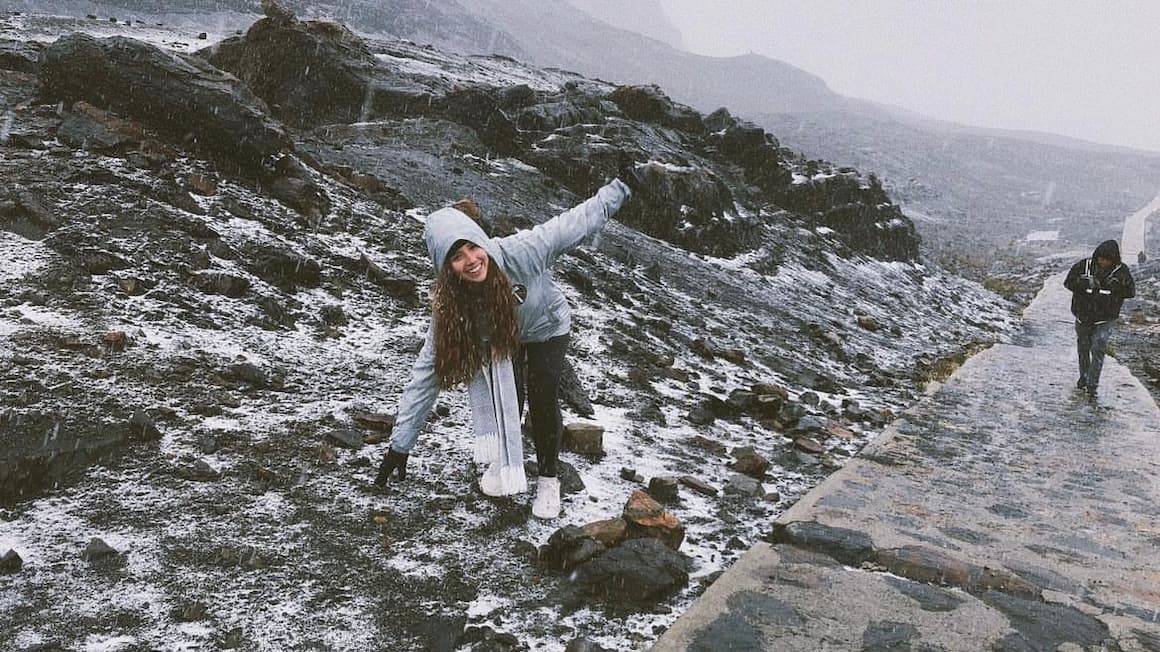
Check out the Rainbow Mountains to see nature at its most colourful. Hike the majestic Cordillera Huayhuash . Explore Colca Canyon and sleep out under a billion stars.
If you want a truly magical experience, there are many eco-lodges in Peru that are nestled in the best nature spots, from the Amazon jungle to the Andes mountain range.
Wherever you decide to travel in Peru, be sure that it will be a highlight of your South America backpacking adventure.
What to Know Before Visiting Peru
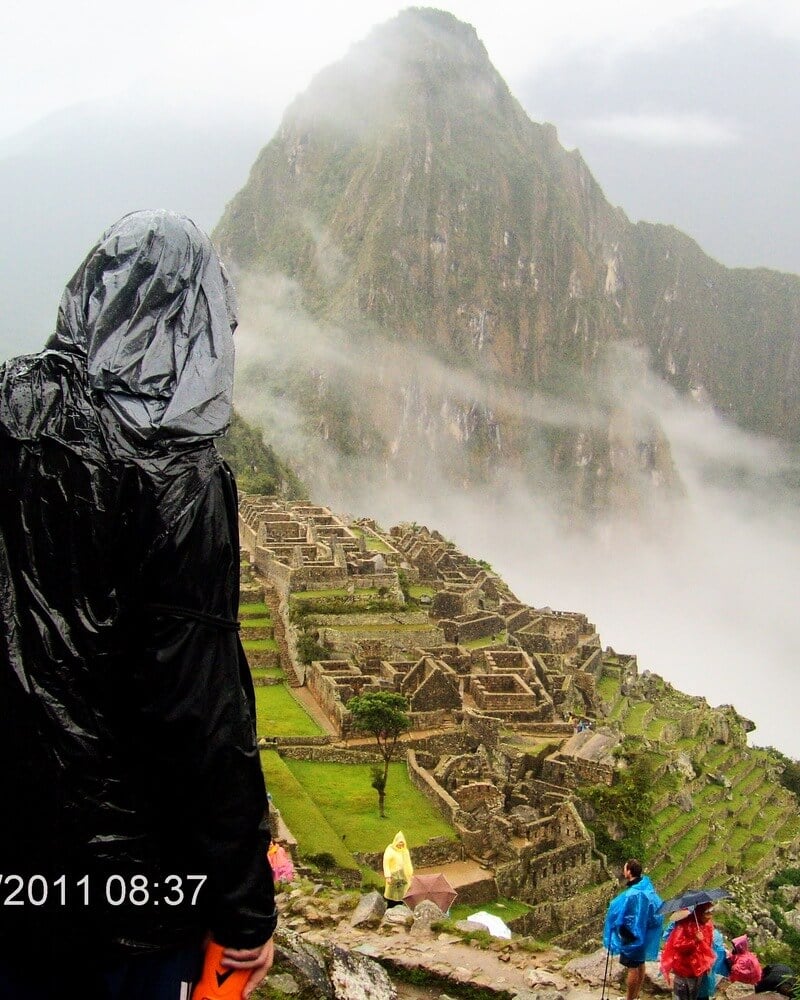
- Don’t miss out on… a motorcycle journey through the Sacred Valley outside Cuzco. It’s definitely worth staying in Cuzco a little longer for this.
- You know what’s overrated… the Inca Trail. Go for the less-trod Salkantay Trek to Machu Picchu instead.
- The coolest hostel is… Banana’s Adventure Hostel . In an unreal location (an oasis in a desert) this is a sociable and relaxed vibes hostel. With a great rooftop plus a lovely garden with hammocks, and an outdoor pool.
- The best food is found in… Lima. This city is full of cafes, local lunch spots, and street food vendors. The best are in Barranco and Miraflores. Pig out on ceviche !
Backpacking Bolivia
Backpacking in Bolivia offers up a glimpse of what South America was like 30 years ago. It’s a country looking to the future in many ways whilst still having one foot firmly rooted in the tradition of the past.
Expect super friendly locals, dramatic desert and mountain landscapes, and the kind of low prices which make the dirtbag within us very happy. You could easily get by on $20-25 a day here, and even less by roughing it a bit.
Bolivia is home to plenty of adrenaline-pumping activities including the Road of Death , which, in essence, is a road down through the mountains in which people ride bicycles to the bottom at top speed. The ride goes on for at least 30 kilometres and it is straight down. Can you guess why it’s called the Road of Death yet?
Aside from the high-risk adventure activities, Bolivia is safe for the most part as well.
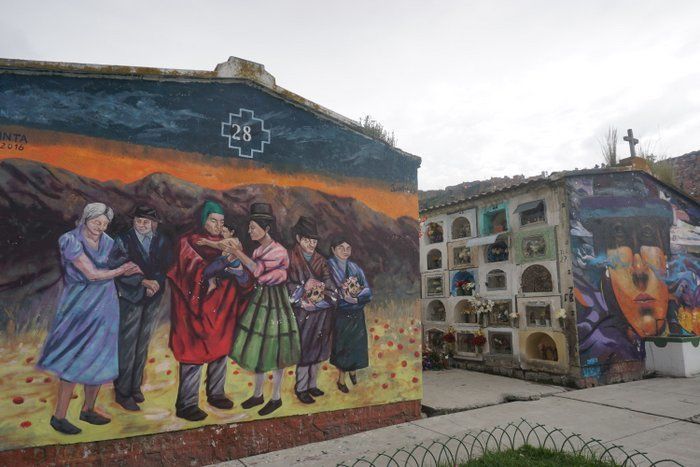
World-class trekking is abundant in the Bolivian Andes. If you love to hike, all the more reason to visit Bolivia. Bring along a good sleeping bag as temperatures can plummet at night.
La Paz has the best hostels (particularly for partiers) and is a cool city to base yourself in. Lake Titicaca is breathtaking, however, it has become far too touristy – I personally can’t deal with that many people taking selfies. I don’t blame the locals as they need to make a living. Just the way it has been done is unfortunate.
The Salt Flats are also cool AF. Okay, admittedly it’s pretty touristy too, but it’s still worth a visit.
What to Know Before Visiting Bolivia
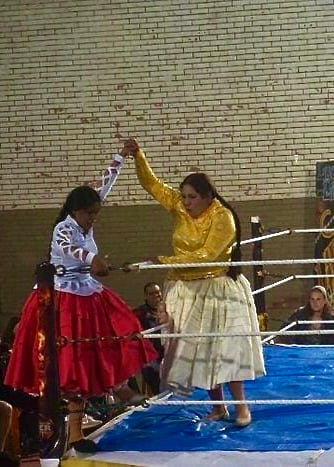
- Don’t miss out on… the Salar de Uyuni. Yes, everyone who comes to Bolivia does this and, yes, it’s touristy. Regardless, it’s still in-fuckin-credible.
- Keep an eye out for… the altitude. Some people fly directly to La Paz from sea level and get sick almost immediately. At 3640 meters, La Paz is the highest major city in the world.
- The coolest hostel is… Wild Rover La Paz . A dynamic and festive hostel. The perfect place to start your Bolivian experience connecting with other travellers. Great location in the central area.
- The best food is found in… La Paz. This is the epicenter of Bolivia’s newly emerging food culture.
Backpacking Chile
There are no half measures while Backpacking Chile. From trekking through gorgeous glacial national parks to exploring the martian bone-dry Atacama desert , you’re all in for one hell of an experience.
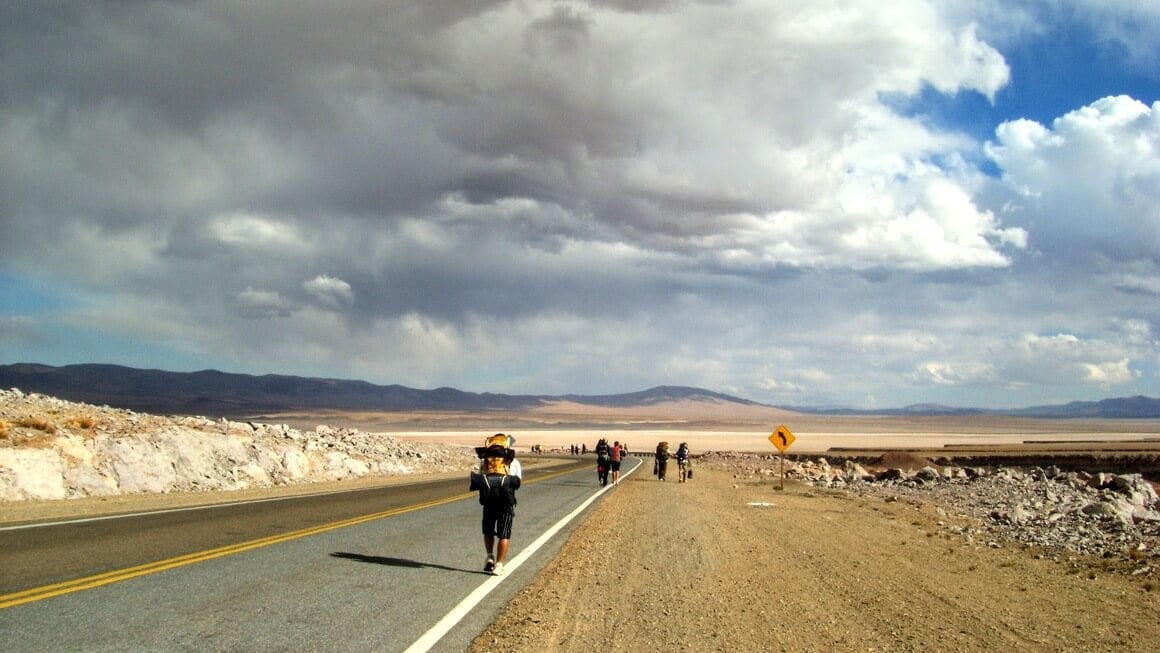
There are 36 National Parks in Chile ; all of them are beautiful and unique in their own way. Chile is also home to Easter Island , one of the most mysterious places on the planet.
Like Argentina, Chilean Patagonia is a paradise for trekkers and adventure types – though it does take some effort to reach the places you want to go trekking in. That said, the journey is well worth it; experiencing some of the planets last truly wild places is an indescribable feeling that you can only understand by doing it!
Most backpackers will start their backpacking journey in Santiago. But you can come to Chile from one of its borders in the South (as I did).
Oh yeah, one more thing: Chilean wine is cheap and it is damn good! Do you need more reasons?
What to Know Before Visiting Chile
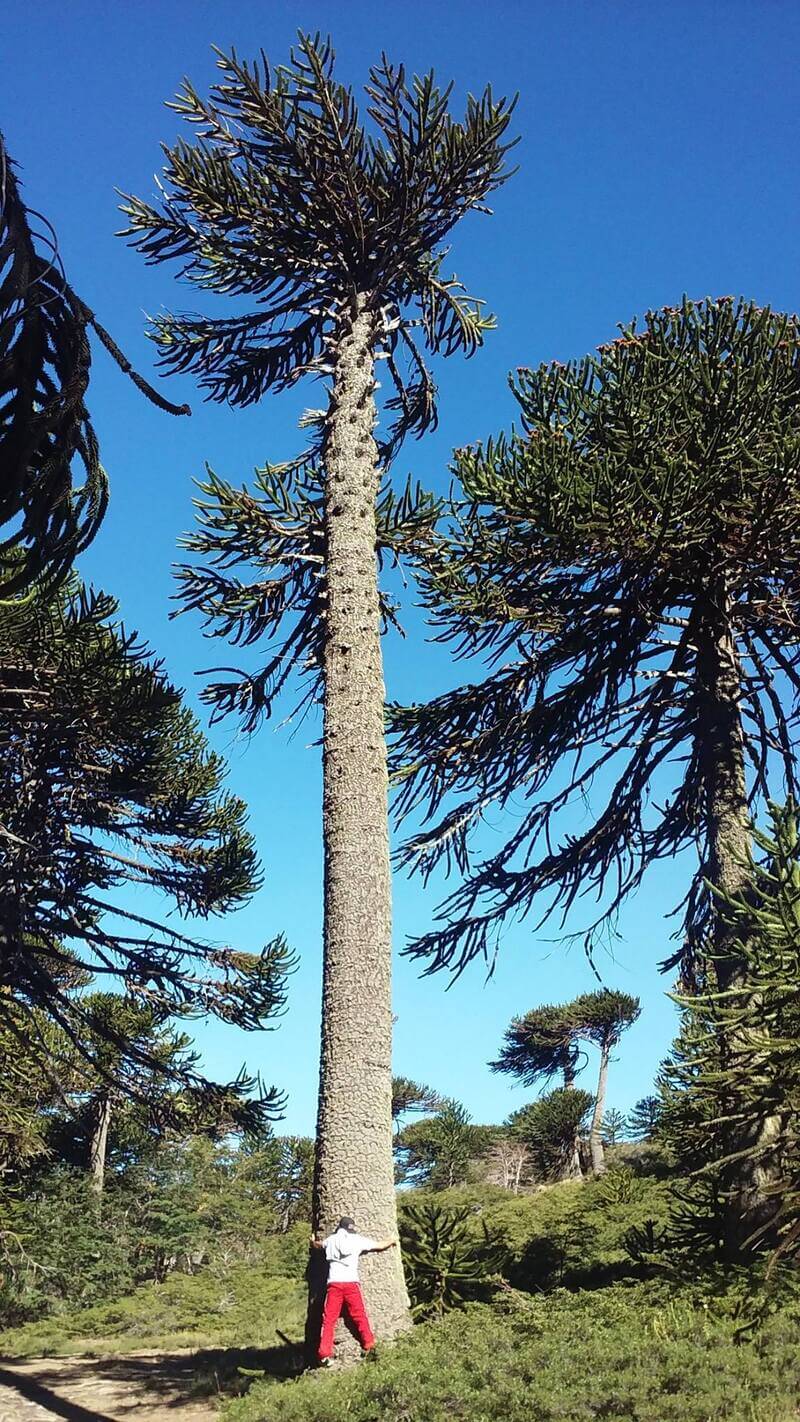
- Don’t miss out on… Patagonia, and not just the usual spots. Chilean Patagonia is vastly unexplored, especially the fjords. Look out for whales, dolphins, penguins, and elephant seals.
- Keep an eye out for… fire bans in Torres del Paine. A lot of nature has been threatened because of dickhead backpackers using gas burners, despite warnings.
- The coolest hostel is… MaPatagonia Hostel . Near a beautiful lake, this place has what you need. Kitchen facilities, a nice big garden, some cats, and a jacuzzi! There is also a fireplace for those cold nights.
- The best food is found in… Santiago. Staying in Santiago will unlock the most culinary options, including the cheap street food stalls.
Backpacking Argentina
Viva Argentina!
Backpacking Argentina is one for the ages. Welcome to the land of wine, excessive meat, football, tango, incredibly passionate people, and the final frontier – Patagonia.
Argentina is an immense country with very distinct regions. Eat to your heart’s content, party harder than you ever have before, and fall deeply in love.
You’ll probably land in Buenos Aires , arguably the cultural capital of all of South America.
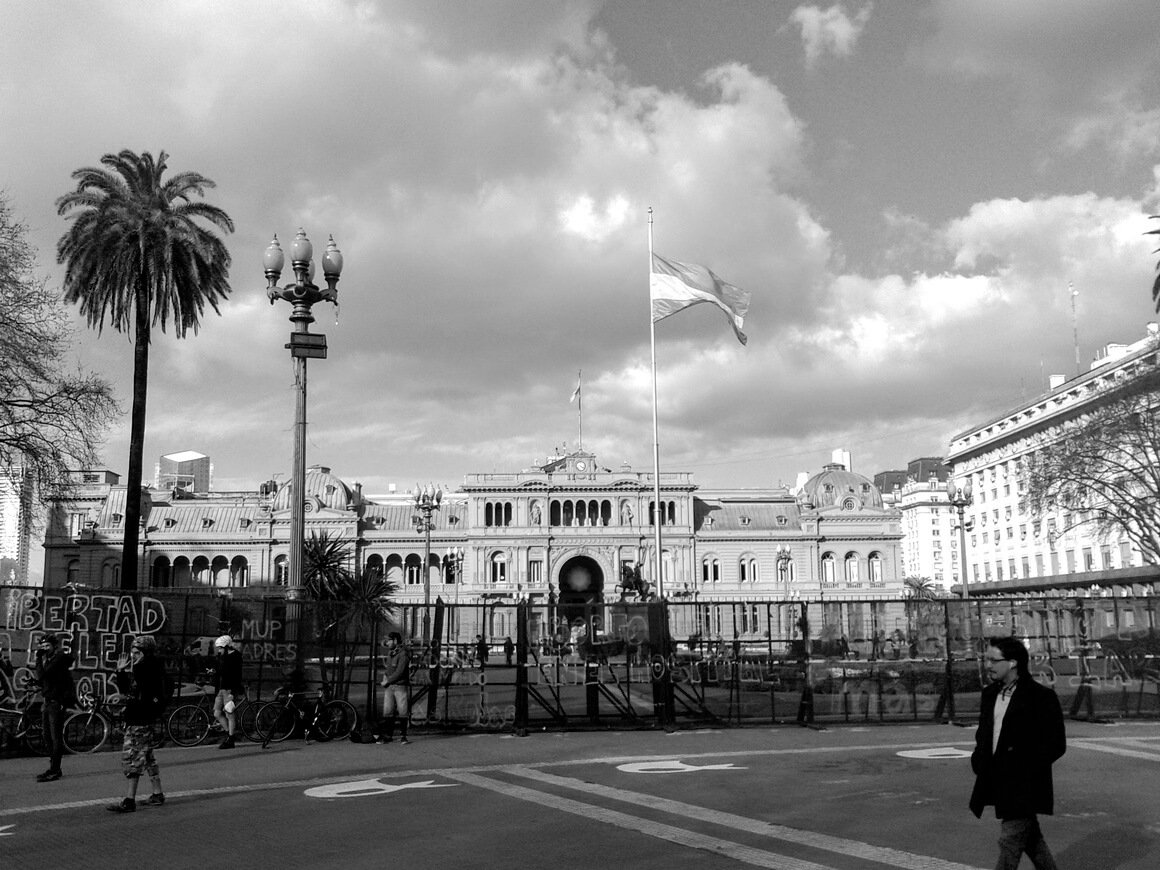
Unquestionably, you’re going to find incredible hostels in Buenos Aires and reasons to stay. But don’t stay too long!
Rosario and Cordoba are cities like Buenos Aires but, in my opinion, better. They’re a perfect place to head to if you want to steer clear of the heavily populated capital. Mendoza is the wine region home to the “best wine in the world” (according to Argentinos).
Further south lies Patagonia : one of my favourite places on Earth, and home to many Argentinian National Parks . Patagonia is a truly expansive, desolate wilderness area where the weather is harsh and civilization is few and far between.
Trek mountains and glaciers, or sea kayak around them,. There, you could go days without seeing many (if any) backpackers! Now THAT’S the dream.
Staying at an Argentine mountain hut (refugio) is a wonderful experience not to be missed. Few who travel to Argentina manage to make it as far as Tierra del Fuego (the Land of Fire). Visit one of the most dramatic places in Argentina with its long summer days and epic arctic landscapes.
Speaking of the arctic, you can arrange trips to Antarctica from Ushuaia ! This would be the adventure of a lifetime but it’s by no means cheap.
What to Know Before Visiting Argentina
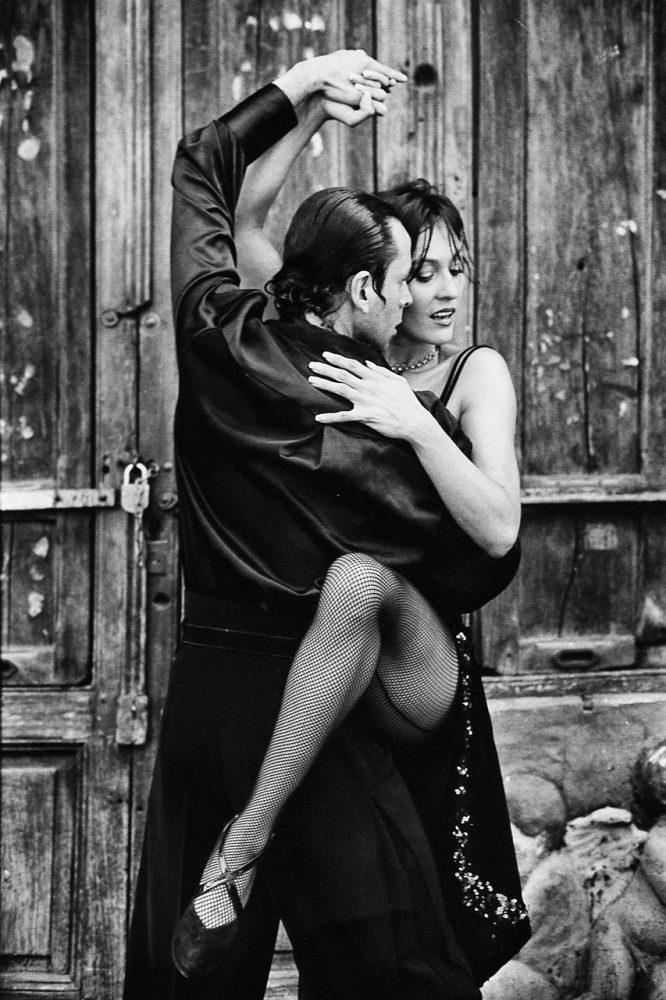
- Don’t miss out on… El Chaltén, which is the base for seeing some of the most dramatic peaks on Earth: Cerro Torre and Fitz Roy.
- You know what’s overrated… La Boca in Buenos Aires. These much-hyped multi-coloured houses are pretty rundown and actually quite dangerous, I strongly suggest you avoid it. The whole area feels like a tourist trap. There are much better things to do in Buenos Aires .
- The coolest hostel is… America del Sur Hostel (El Calafate). Cozy, super social, and with an insane view of the lake, the town, and beautiful sunsets. Great place to chill, and work (if you need to).
- The best food is found in… your neighbour’s personal asado . Nothing beats grilling grade-A Argentinian beef with some locals.
- The official exchange rate is NOT THE EXCHANGE RATE . Because of the fluctating exchange rate, many of the locals withdraw their cash by using what is referred to as a “blue dollar rate” from Western Union. This way gives you 50% more pesos than withdrawing pesos from an ATM or exchanging currency.
Backpacking Uruguay
Not many travellers end up backpacking in Uruguay. There are a few reasons why:
- It’s small
- It’s out of the way
- There’s not a ton to do
All of the above are true to some extent: Uruguay is not overflowing with adventurous activities or jaw-dropping sights. But let me tell you, they have some of the best quality of living in South America.
One of the perks about Uruguay is you don’t HAVE to do anything here. People are friendly and, compared to some chaos you find in other areas of the continent, it’s pretty chill. The beautiful coast is the perfect place to get away from the usual backpacking South America route and to avoid traveller’s burnout .
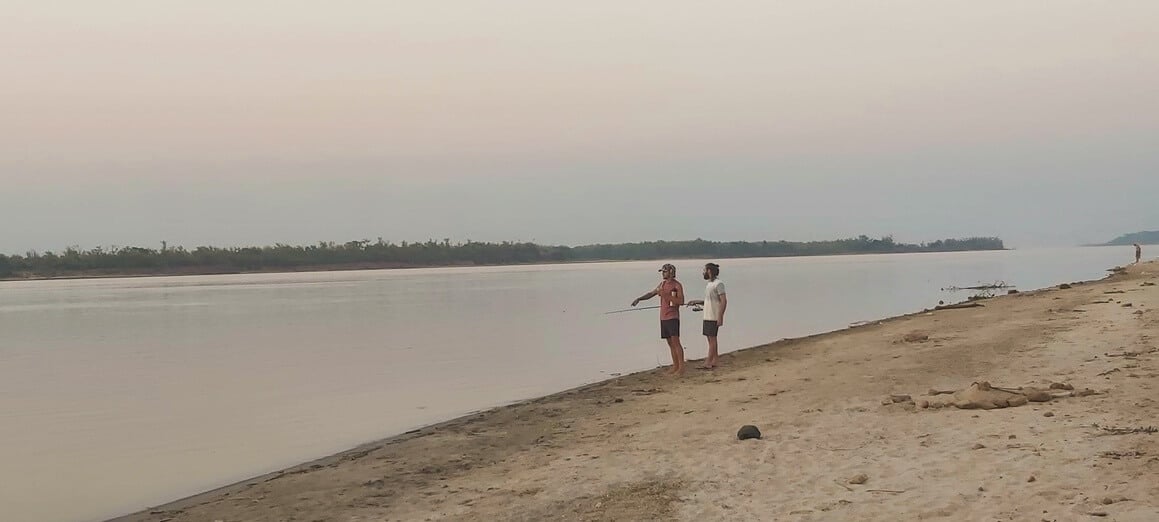
Outside of Montevideo , there are nice beach towns worth crashing at; Punta del Diablo is the quintessential lazy surfer town. Punta del Este is fun in the summer if you like partying. Colonia del Sacramento is an old colonial outpost and UNESCO heritage – although it is admittedly more of a day trip rather than a base.
Oh but here’s the kicker: weed is legalised. Yes, Uruguay is famous for allowing the smoking of the devil’s lettuce. And the quality of it is surprisingly good.
Lots of locals keep a weed garden on their balconies. Perhaps your hostel in Montevideo will have one?
Head to Uruguay if you want to chill out and do your own thing. It’s easy to travel to Brazil and Argentina from there too.
What to Know Before Visiting Uruguay
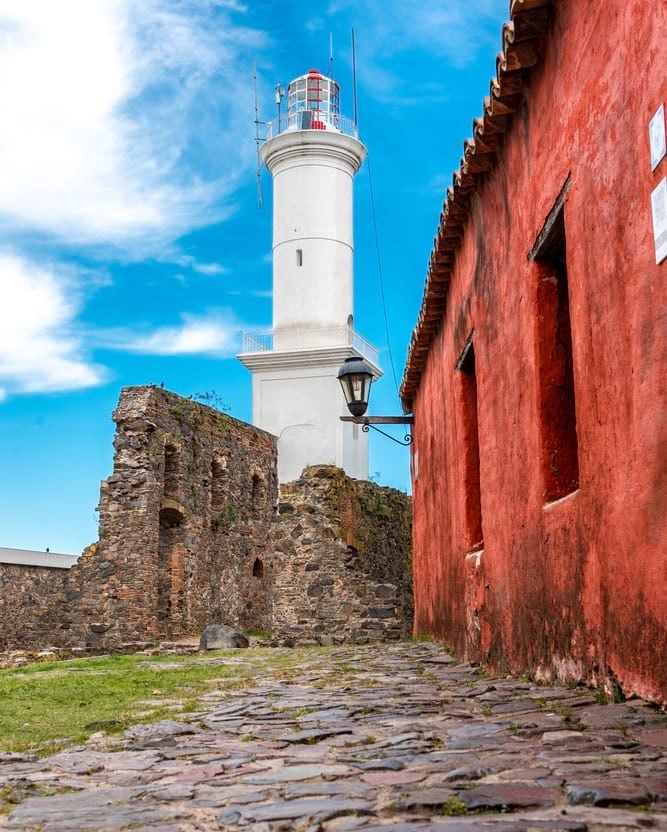
- Don’t miss out on… Punta del Diablo. This is laid-back surfer town evades most backpackers. It is arguably one of the best beach towns in South America.
- You know what’s overrated… Punta del Este. This place literally exists for the sake of Argentinians on holiday. In the off-season, it’s empty.
- The coolest hostel is… La Brújula Hostel . It’s near the beach, eco-friendly, has a family vibe, and is great to meet new people. This is a gem next to the sea.
- The best food is found in… Montevideo. Can’t beat a giant chivito after you’ve got the munchies!
Backpacking Venezuela
Venezuela is a truly incredible country. With towering mountains, steaming forests, endless beaches , and just enough danger to keep you on your toes, this country is every budding adventurer’s dream destination.
A Disclaimer on Visiting Venezuela
Unfortunately, due to the political situation in Venezuela , The Broke Backpacker absolutely does not condone visiting the country right now . It is simply not safe and it would be irresponsible to even attempt to Venezuela at present.
Unless you somehow have absolutely solid and trustworthy contacts on the ground , Venezuela is not the place to travel for the foreseeable future. We do not have any contacts to give out.
That being said, there are many team members at The Broke Backpacker that hold a special place for Venezuela in their hearts. For this reason, we are leaving this information available to you, our readers, as an homage to a country we love. We can’t wait for the day that it will be safe to visit again.
Backpacking Venezuela has a truly terrible reputation. Don’t get me wrong, travelling Venezuela has been dangerous in recent years: this is a country where you need to keep both eyes on your gear, watch who you’re with, and be on the lookout for iffy situations before they get the chance to rear their ugly head.
Backpacking in Venezuela is, in my opinion, one of the last great adventures out there. Plus it’s one of the cheapest countries in the world to backpack in.
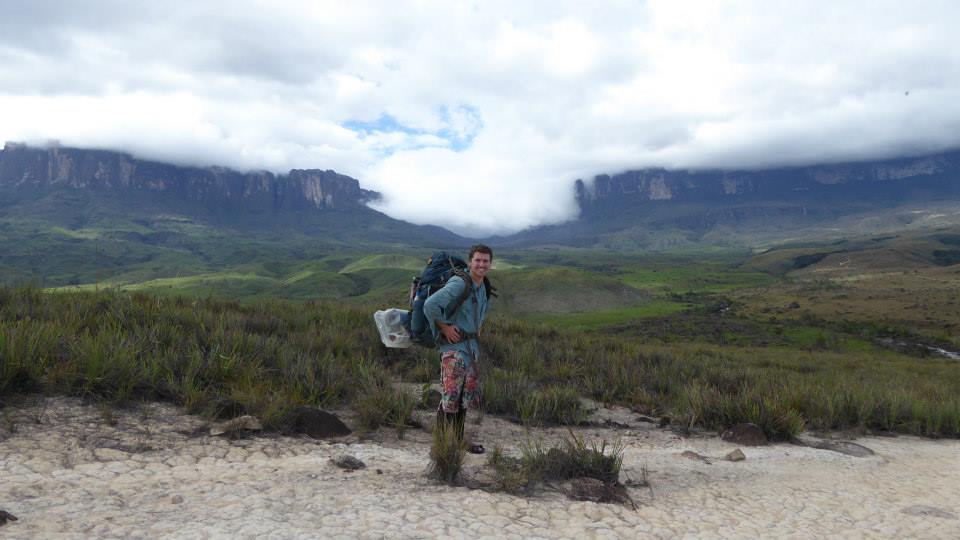
Venezuela is a mysterious country. It attracts adventurers looking for a raw adventure.
It’s a country yet to be polluted by heavy tourism with incredible landscapes of mountains, forests, lakes, and caves. It is a kind of Shangri-La for adventurers and extreme sports lovers.
A South American backpacking trip to Venezuela is getting into the wild. To feel like the old explorers, Venezuela will not disappoint you. But backpacking Venezuela is not for the faint-hearted: this is a veteran explorer country.
What to Know Before Visiting Venezuela
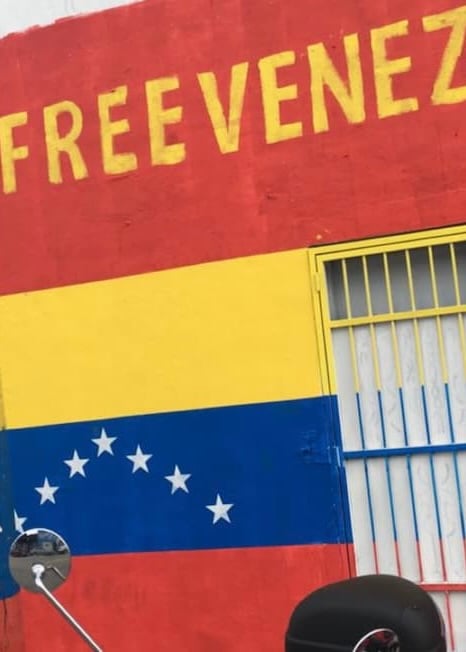
- Don’t miss out on… Mt. Roraima – the highest tabletop mountain in the world; an incredible place to explore. Sometimes you feel like you’re walking on an island in the sky.
- Keep an eye out for… the seasons when visiting Angel Falls. When it’s dry, the falls are actually quite weak (it’s more like a trickle).
- The coolest hostel is… El Sofá Caracas . Safe, quiet, cozy place in the big city. You’ll feel at home instantly. And they have a unique boat pool to chill when it gets too hot.
- The best food is found in… the buffet places where you pay by the weight of your plate. A little goes a long way here and you won’t be disappointed!
Getting Off the Beaten Path in South America
South America is totally full of wild places, tiny villages, far-flung settlements, lonesome valleys, sparsely inhabited jungle… Point being, there are plenty of great places to get off the beaten path . With a little motivation, you may well find yourself cutting your own path and writing your own backpacking destiny, one adventure at a time.
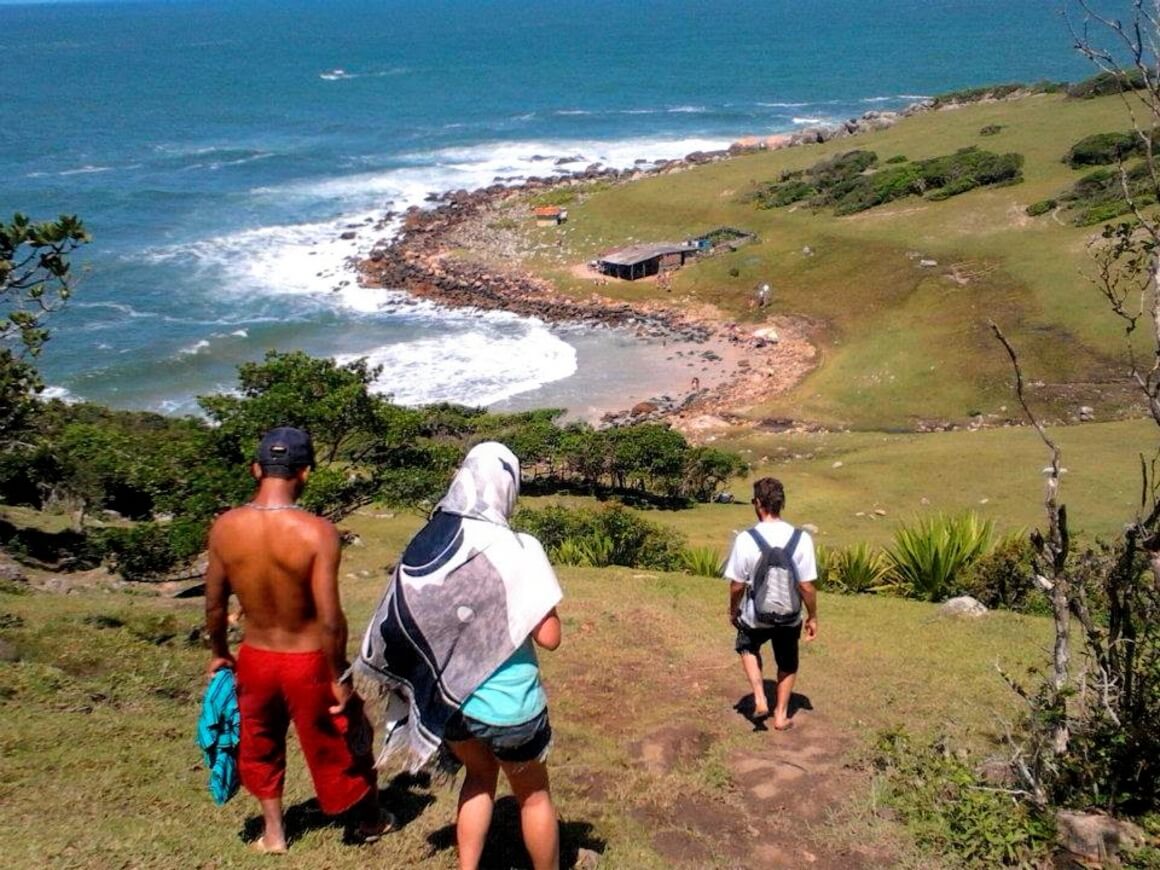
Explore the national park systems of South America as much as you can. Investigate the little interesting-looking food stalls where all the locals are queuing up.
Don’t rely on a guidebook of popular places. In South America, those tiny towns in the middle of nowhere are where the real culture is, and the real adventures. All you need is a bus ticket…

We’ve tested countless backpacks over the years, but there’s one that has always been the best and remains the best buy for adventurers: the broke backpacker-approved Osprey Aether and Ariel series.
Want more deetz on why these packs are so damn perfect? Then read our comprehensive review for the inside scoop!
You can make your South America backpacking route totally unique. No matter what things you get up to, they’re going to leave a big print on your heart. But here are some things I definitely recommend considering planning for your itinerary .
1. Explore Patagonia
Patagonia is still one of the last untouched wildernesses on the planet. Not everyone gets to experience this in their lifetime! In addition to the usual superlative locations, like Cerro Torre and Torres del Paine, there are heaps to discover off-trail.
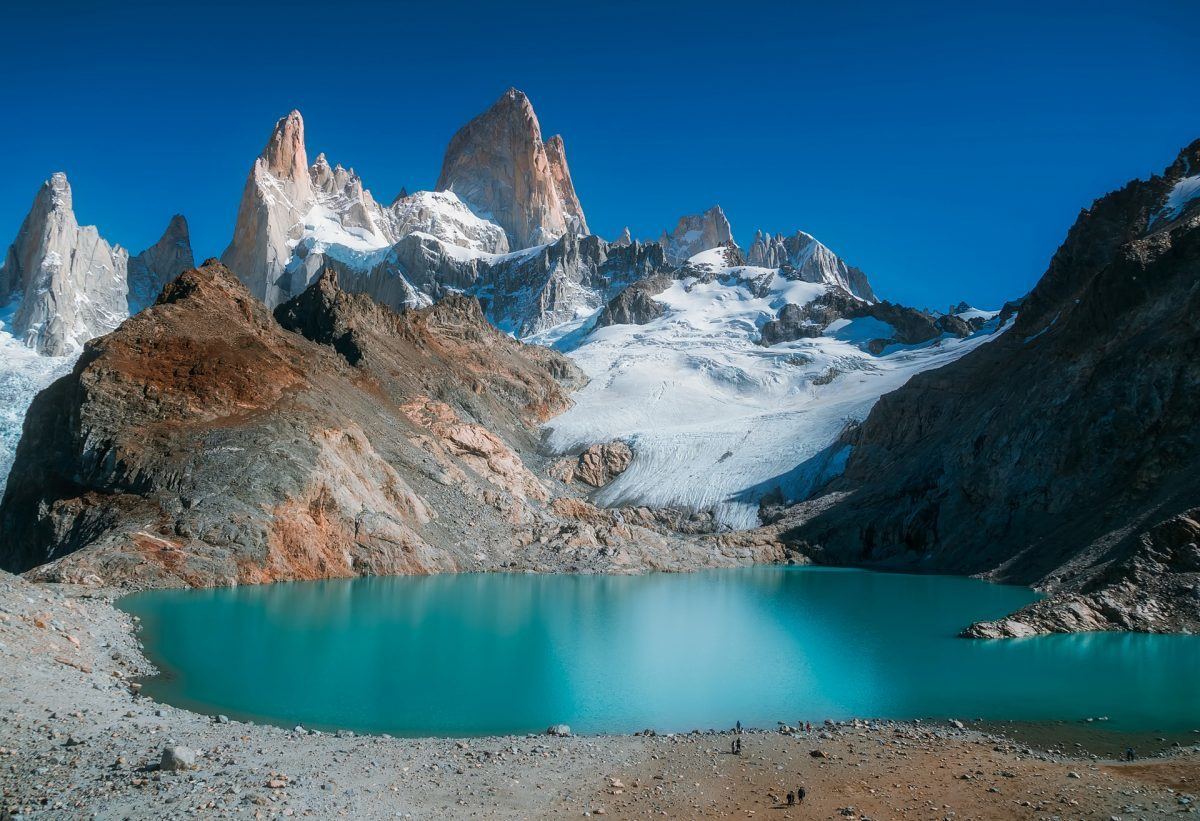
2. Party hard at Carnival
It’s the biggest party on the planet! Grab yo’ body paint, yo’ finest feathers, whatever else you can get your hands on, and join the festivities!
You won’t ever forget the time you spent Carnival in South America. The carnivals in Bahia, Rio, and Barranquilla are particularly good.
3. Explore the Salts Flats of Uyuni
It’s one of the most unique places on the planet and a highlight of any South America backpacking trip. Get ready to be wowed by this alien landscape.
I know broke backpackers usually cringe hard at the idea of an organised tour (because I’m one of them) but the Salt Flats is one that’s really worth shelling out for.
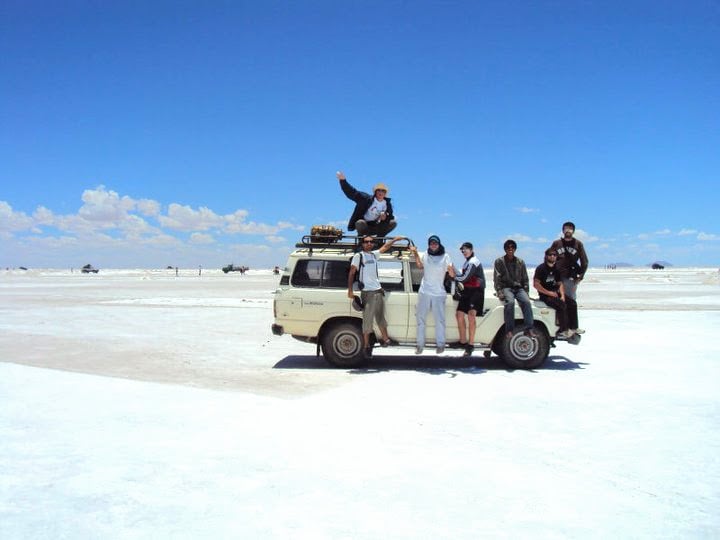
4. Find your own secret beaches
It wouldn’t be a proper backpacking South America itinerary without some beach time! Every kind of beach imaginable is found on the continent.
From tropical slices in Brazil to surfer’s paradises in Ecuador to even fjords in Chile, you won’t be lacking in choices. There are plenty of them secret spots that make those magical days. Take a beer, bring your mates, get busy.
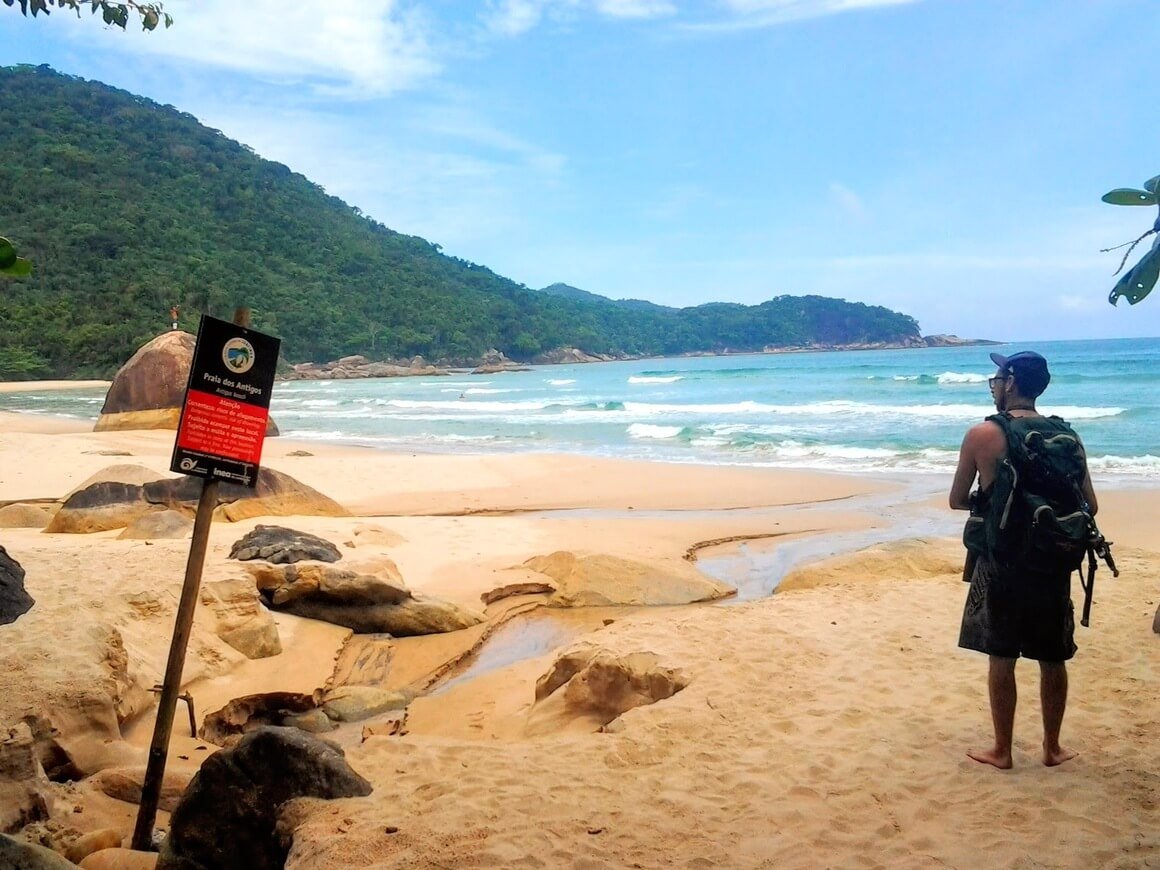
5. Check out Medellín
Medellín is one of the most popular cities to visit in South America right now. The choice between Medellín or Bogota has never been easier.
It’s fun, safe, comfortable, and (most impressively) completely different than it was before. Medellín has shed its violent past and is ready to host the next wave of backpackers.
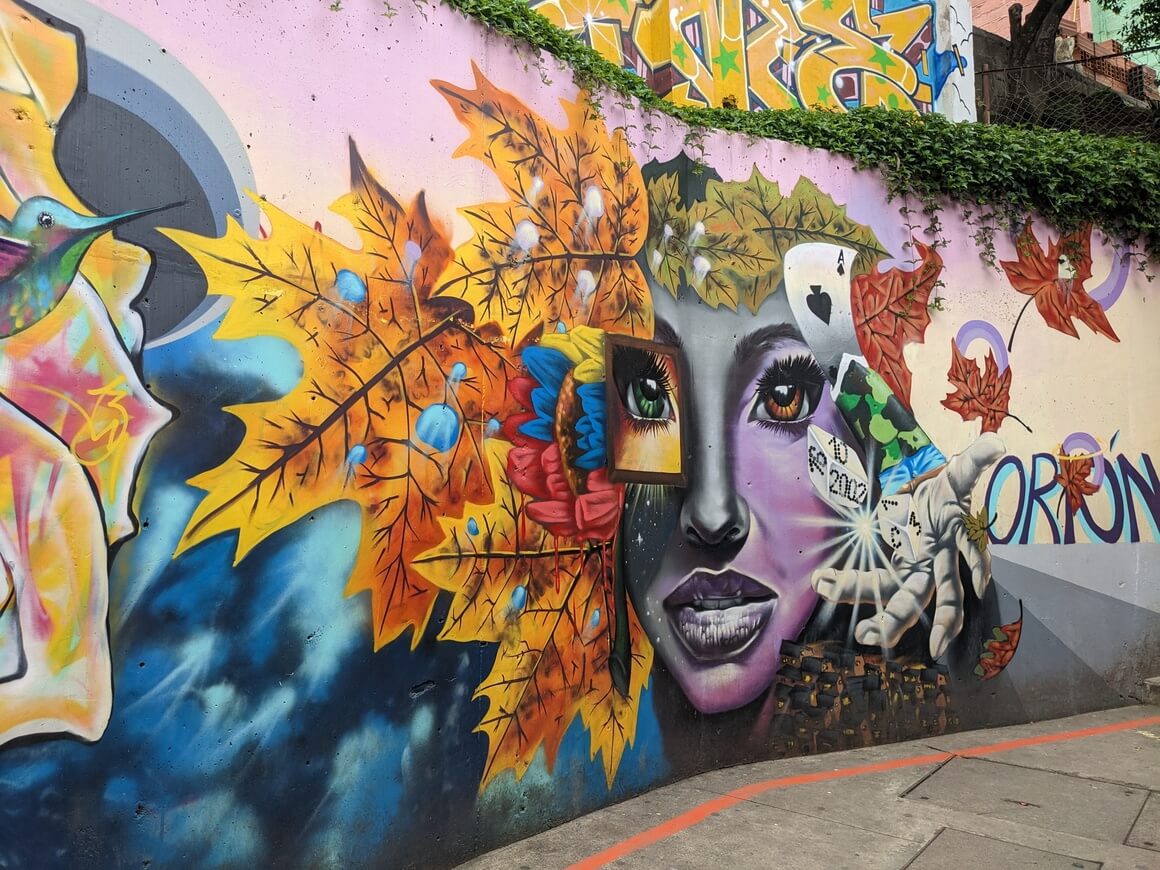
6. Visit Machu Picchu
I mean, you’re reading a backpacking South America guide: I know you already know about this one. It is the place that attracts most people to visit South America… but I’d be lying if I said it wasn’t worth visiting.
You can hike the Inca Trail like everyone else. But if you want to visit Machu Picchu in an alternative way, try one of the other Inca trails like Salkantay Trek.
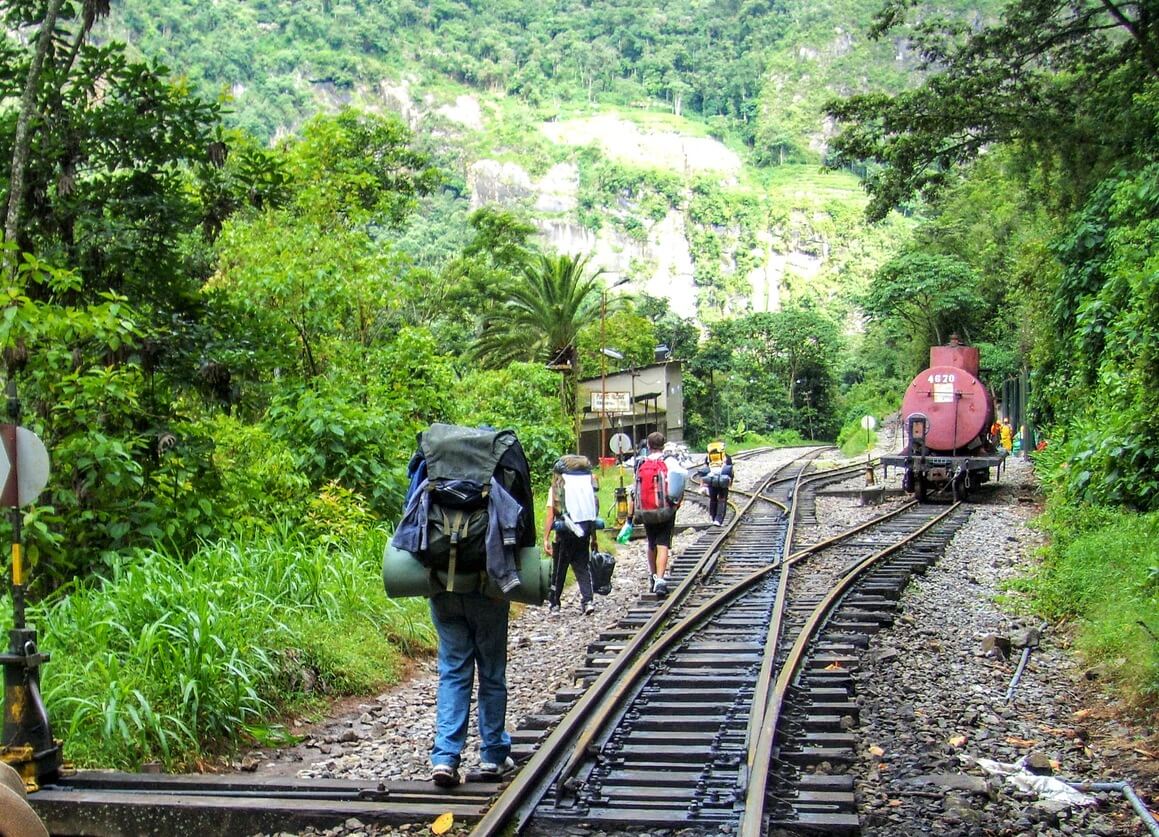
7. Hike in the Andes
The Andes are one of the greatest mountain chains in the world, known mostly for hosting the aforementioned Machu Picchu and the gargantuan Aconcagua. But there is more to these mountains than just these popular destinations: the highlands of Ecuador, Cordillera Huayhush in Peru, the Cordillera Real in Bolivia are all stunning. Even Colombia gets a slice of the pie at Cocuy National Park.
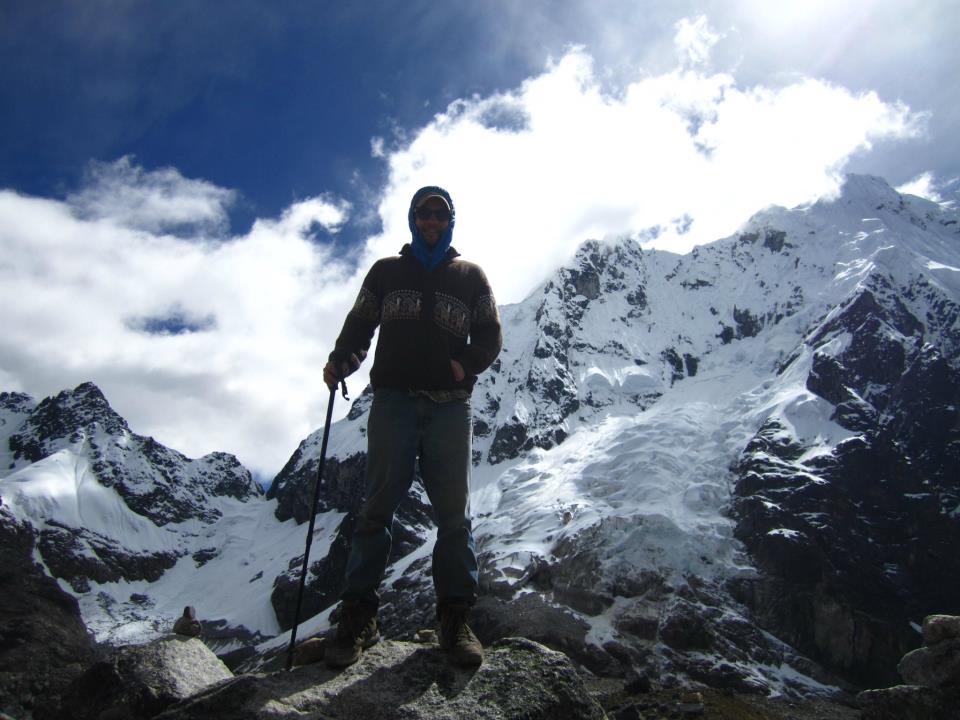
8. A South American
Hey, most backpackers will vouch for love and sex on the road being something memorable to take part in…
They love, and they love passionately. And the sex… well, maybe you’ll find out.
9. Get “stuck” somewhere
South America is full of sticky places AKA places where you get stuck for months on end. Florianópolis, La Paz, Medellín, Mancora… All of these locations start off as a simple stop on your South America backpacking route but turn into temporary homes.
Don’t fight it! Find your sticky place and stay awhile.

Wanna know how to pack like a pro? Well for a start you need the right gear….
These are packing cubes for the globetrotters and compression sacks for the real adventurers – these babies are a traveller’s best kept secret. They organise yo’ packing and minimise volume too so you can pack MORE.
Or, y’know… you can stick to just chucking it all in your backpack…
South America has a wide range of budget accommodation options for backpackers. Airbnbs are fantastic for private rooms if you’re travelling as a couple or as a group.
For solo travellers, when you are not passing the night from the comfort of your tent in the Andes or with a Couchsurfing host , you’ll likely be booking hostels.
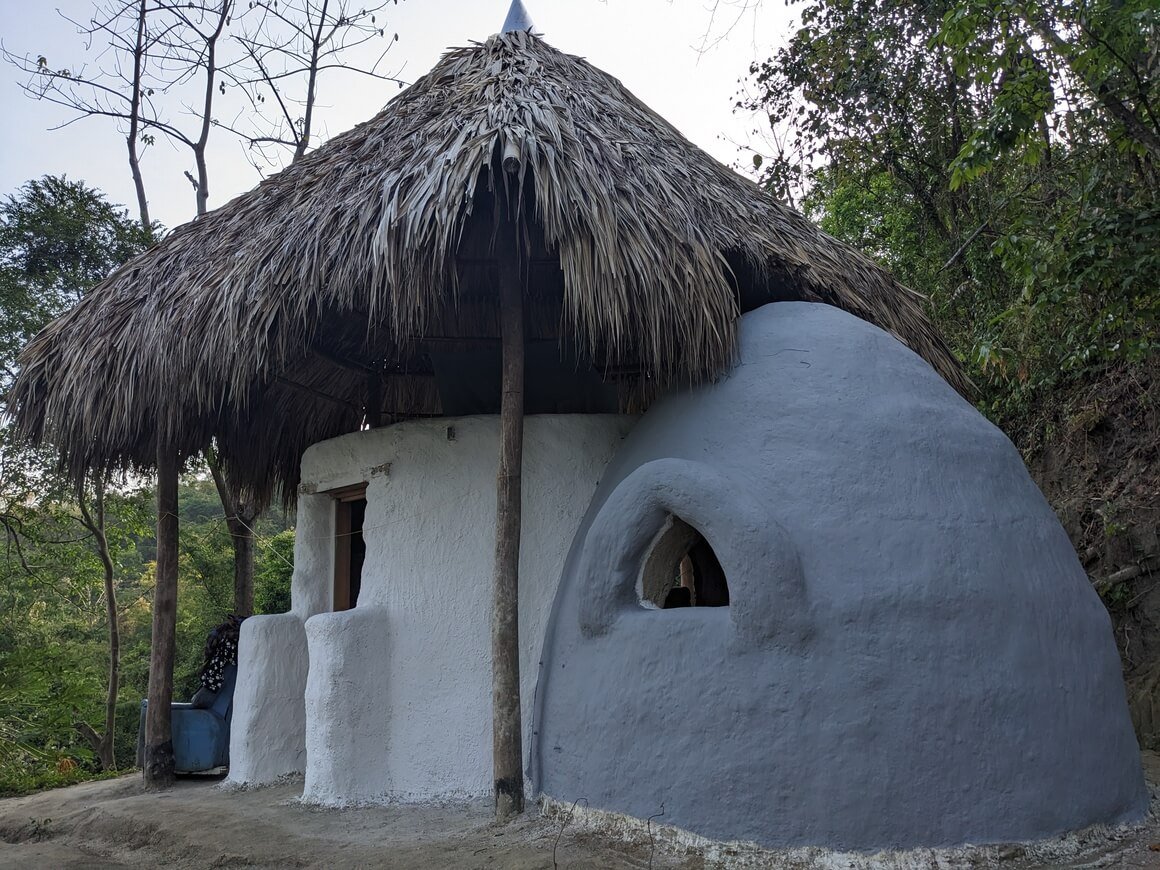
Whether you just need a place to lay your head or a spot to meet fellow backpackers like yourself, hostel life is clearly where it’s at… In fact, I love South American hostels, even travelling with my partner, you get perks in a hostel that you don’t get in a hotel or Airbnb.
I’ve had some of the best nights of my life in them and met some of the best people in my life. The South American countries are home to some of the best hostels in the world .
- Best Hostels in Sao Paulo
- Best Hostels in Cusco
- Best Hostels in Cartagena
- Best Hostels in Mendoza
- Best Hostels in Lima
- Best Hostels in Medellin
- Best Hostels in Quito
- Best Hostels in Salvador de Bahia
- Best Hostels in Santiago
- Best Hostels in Valparaiso
Insider tip: If you want to see all your hostel options to visitbackp South America, Booking.com is the perfect one-stop-shop to book hostels. You can even filter your personal travel needs to find the perfect place for you.
It is the common belief that backpacking in South America is dirt cheap. In some places this is true, but it doesn’t go for the entire continent.
But fear not! Travelling South America on a budget can definitely be done.
Due to the nature of Patagonia being one of the most remote areas on earth, expect higher travel costs than the rest of South America. Peru also takes some navigating in order to travel on a tight budget.
Brazil is one of the most expensive countries in South America. The cost of living in Brazil is higher and it is notorious for jacking up accommodation prices during the high season.
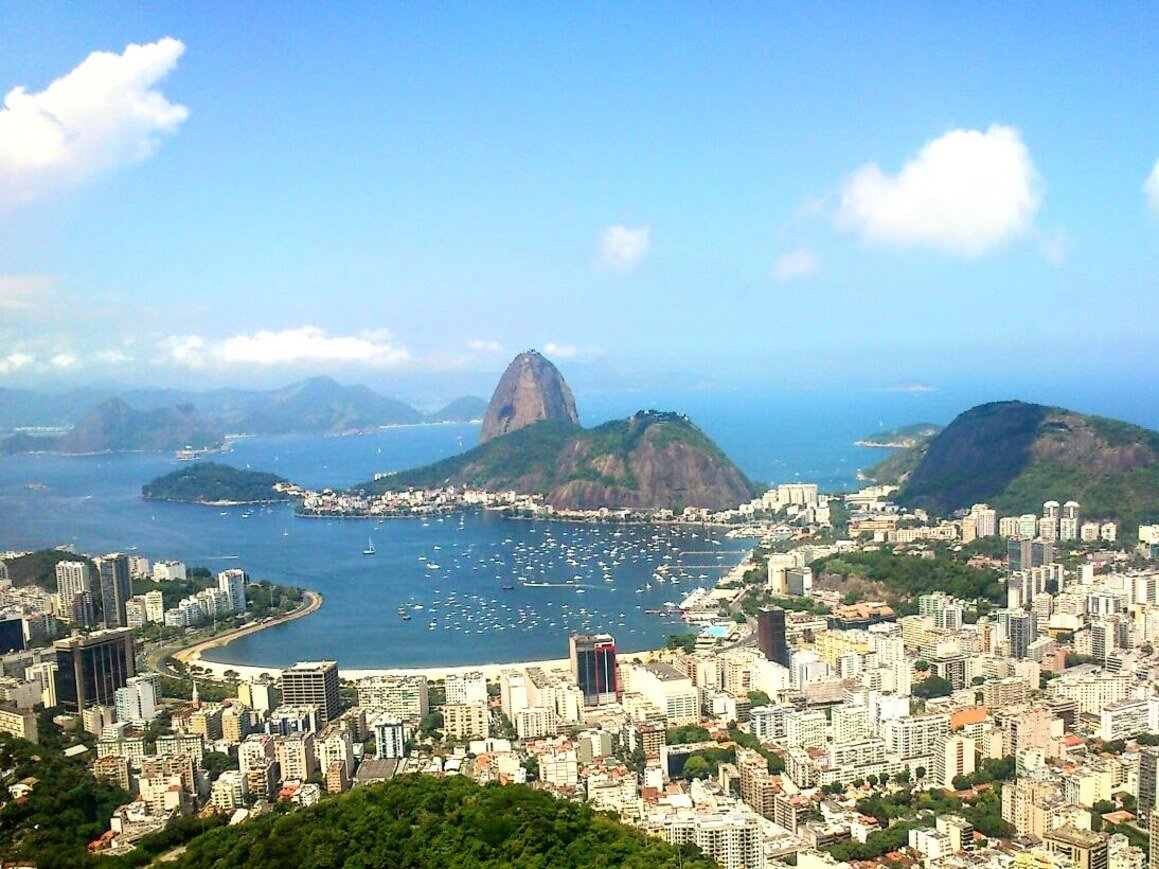
With a few travel tips up your sleeve, you will save a ton of money and have the time of your life. Bring your haggle game whilst backpacking through Latin America to ensure you get the best possible price for things, including accommodation. South Americans love smooth talkers so keep it playful but don’t get too cheeky.
Taking long-distance buses, buying beer and drugs, paying entrance fees to national parks… these things add up fast. But sometimes you have to shell out the dough in order to do the things you want. Overnight buses are a good way to save some money.
Remember to always leave a little extra wiggle room in your budget so you can go scuba diving or go on a trek that you have been dreaming about!
Daily Budgets for South America
Here is a breakdown of what you can expect to pay on a daily basis on a backpacking South America trip…
Travel Tips for Broke Backpackers in South America
Hey, all those dollaridoodles add up to more fun times. So saving whatever you can on your journey means you can be on the journey… for longer. So here are a few budget travel tips for South America :
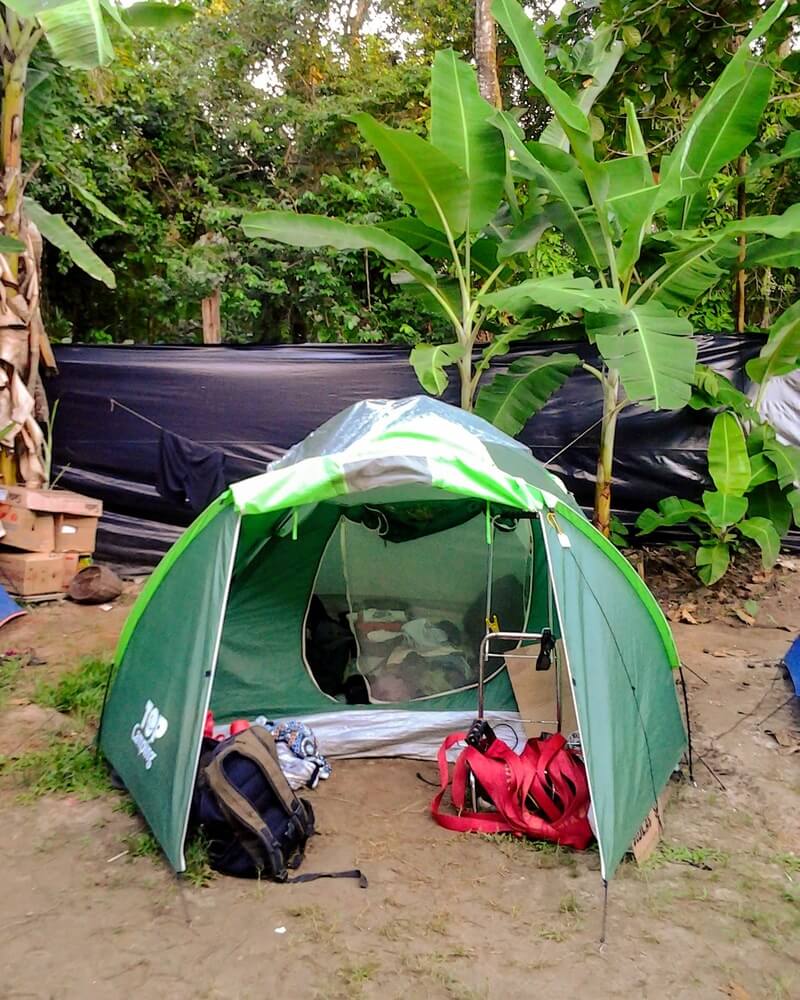
- Camp : With plenty of untouched beaches, forests, stunning countryside, and far-flung jungle, South America is a great place to carry a good backpacking tent . Camping saves you money and can help you get off of the beaten path.
- Cook your own food: Travel with a portable backpacking stove and cook your own food to save some serious cash whilst backpacking across South America. If you plan to do some overnight hiking trips or camping on the beach, having a backpacking stove will be a great asset.
- Haggle: Haggle as much as you can. You can always get a better price for things, especially while in local markets. Learning Spanish will go a long way!
- Couchsurf: South Americans are awesome. Get to know some! Check out Couchsurfing to make some real friendships and see the real continent. When using Couchsurfing, be sure to send personalized messages to your potential host. A generic copy-and-paste message is much more likely to get turned down. Make yourself stand out.
- Hitchhike: Although some countries are friendlier than others, hitchhiking across South America is common practice, so you won’t struggle too much to find a ride. Speaking at least a little Spanish will go a long way though. You want to explain exactly what you’re doing and where you want to go.
Why Should You Travel to South America with a Water Bottle?
Plastic washes up on even the most pristine places… So do your part and keep the Big Blue beautiful!
You aren’t going to save the world overnight, but together we CAN make a difference. I hope you become more inspired to continue being a responsible traveller .
Plus, now you won’t be buying overpriced bottles of water either! Travel with a filtered water bottle instead and never waste a cent nor a turtle’s life again.

Drink water from ANYWHERE. The Grayl Geopress is the worlds leading filtered water bottle protecting you from all manner of waterborne nasties.
Single-use plastic bottles are a MASSIVE threat to marine life. Be a part of the solution and travel with a filter water bottle. Save money and the environment!
We’ve tested the Geopress rigorously from the icy heights of Pakistan to the tropical jungles of Bali, and can confirm: it’s the best water bottle you’ll ever buy!
You know by now that we are talking about an enormous amount of land with regards to the South American continent. Countries in South America near the Equator do not experience distinct seasons. As you start to head south you will find the seasons to be the opposite of what they are in the Northern Hemisphere i.e. winter in June.
Patagonia experiences bitterly cold and windy winters. I do not advise travelling there during the winter unless you are a serious mountaineer and have all the right gear.
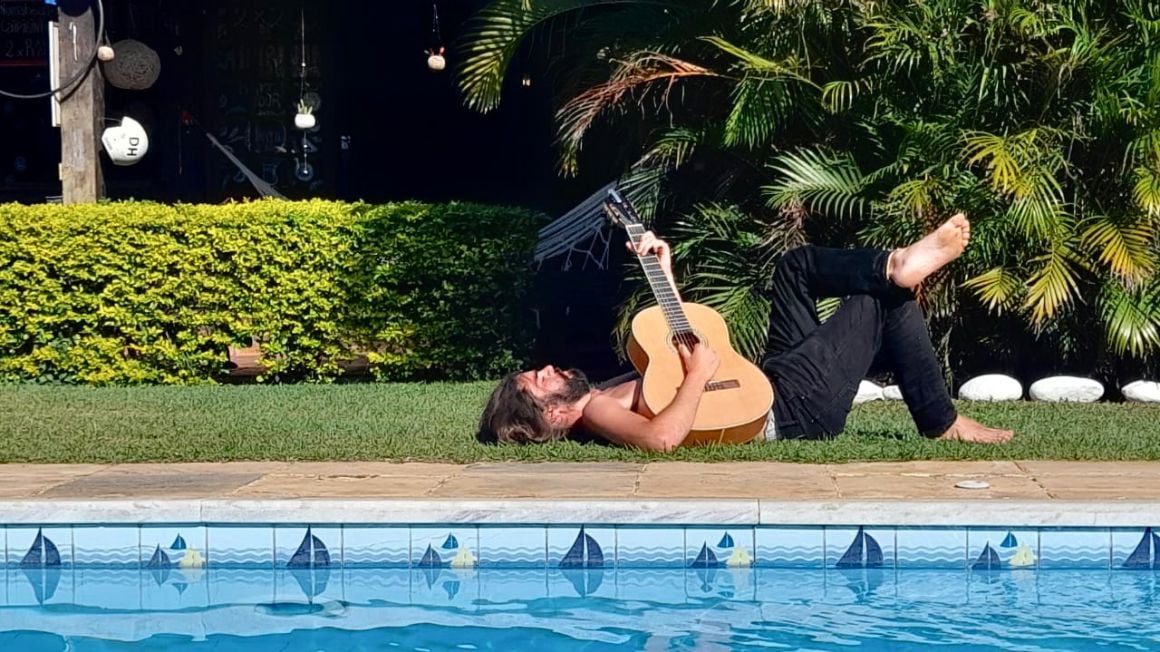
Dry season depends on the country. Generally, the cooler months from June to September are the driest in the coastal areas. In the Amazon – given that it is the world’s biggest rainforest – is wet pretty much all year. The Andes are the driest from April – November.
High season for all countries is, without a doubt, from December – February. This is due to holidays occurring over that time and it is also the time when many gringos and locals alike take their holidays. Backpacking in the low or shoulder seasons will definitely make for a cheaper trip, especially with regards to accommodation.
Best Time to Visit – Country Breakdown
Here are the best times to visit South America broken down by country!
Best Months to Travel: September – April
What’s the climate in Brazil like?
In the south, the hot, wet summer season runs from November – March. In the north, the rainy season is from April – August. In the Amazon, it rains pretty much all year.
If you want to visit during the festival season though, September-March is best.
Best Months to Travel: November – March
What’s the climate in Colombia like?
Generally speaking, travellers should visit Cartagena and the Caribbean coast between November and March when the weather is dry. The rest of the country is good year-round. Bogota, Cali, and Medellin are always pleasant weather-wise.
Best Months to Travel: March – May, September – November
What’s the climate in Ecuador and Peru like?
Lots and lots of micro-climates in the Ecuador Peru region. But there are some general trends:
- The highlands/Andes are dry from May – September. These are the best months for hiking and visiting Machu Picchu.
- The coast is warm and dry from December – May. This is the best time for the Galápagos.
- The Amazon is always wet and humid as shit.
- The south of Peru is much drier than the north, and Ecuador for that matter.
You’ll need to plan your trip carefully around what you want to see and do.
Best Months to Travel: May – October
What’s the climate in Bolivia like?
The winter season (May – October) is also its dry season, and the best time to visit Bolivia. This means that nights can be very cold, especially when you’re at higher altitudes. Although Bolivia is generally drier than its neighbours, it stills gets dumped on in the wet, summer season.
Best Months to Travel: March – April, October – November
What’s the climate in Chile like?
Summers in Chile are generally the high season. That being said, this may not be the best time to visit. Prices are at their highest, the Atacama Desert is a furnace, and the winds are VERY strong in Patagonia.
Like almost anywhere, the shoulder months (October – November & March – April) are better.
Best Months to Travel: October – April.
What’s the climate in Argentina and Uruguay like?
Summer for most of the country is from December – February. In the north, the summers can see rain and temperatures that soar to almost unbearable. In the south and Patagonia, summers are dry(ish) and pleasant.
The winters, obviously, are extremely cold in the south. Whereas the north generally has pretty mild winters.
What to Pack for South America
Travelling through South America is a lot easier if you have the right gear. A thorough backpacking South America packing list goes a long way – literally.
On every adventure, there are 6 things I never go travelling without:

Snoring dorm-mates can ruin your nights rest and seriously damage the hostel experience. This is why I always travel with a pack of decent ear plugs.

Hanging Laundry Bag
Trust us, this is an absolute game changer. Super compact, a hanging mesh laundry bag stops your dirty clothes from stinking, you don’t know how much you need one of these… so just get it, thank us later.

Sea To Summit Micro Towel
Hostel towels are scummy and take forever to dry. Microfibre towels dry quickly, are compact, lightweight, and can be used as a blanket or yoga mat if need be.

Monopoly Deal
Forget about Poker! Monopoly Deal is the single best travel card game that we have ever played. Works with 2-5 players and guarantees happy days.

Grayl Geopress Water Bottle
Always travel with a water bottle! They save you money and reduce your plastic footprint on our planet. The Grayl Geopress acts as a purifier AND temperature regulator. Boom!
South America IS a safe place to go backpacking. Is backpacking in South America safe all the time?
Hell no. But nowhere in the world is safe 100% of the time. Does that mean we let it stop us?
Hell no.
In recent years, security in South America is increasing. Using the common sense safety rules of backpacking is usually enough here.
The thing with South America is understanding your surroundings and self-awareness. Coordinating your safety in Rio de Janeiro is completely different than hiking the Inca Trail.
Robberies are rare and could happen to anyone – in any country. Sometimes people in desperate circumstances are forced to do bad things. They see a foreigner and they see a chance to temporarily relieve the stress of their situation.
Odds are, you should be just fine. If ever you run into a hold-up situation just give them what they want.
Your iPhone and wallet aren’t worth dying over, ever! But it’s worth hiding your money well just in case .
Political wobbles are pretty common. Due to the political situation in Venezuela right now, this is probably the most dangerous country in Latin America. I hate to say it but the situation is what it is.
In general, being out late, drunk, and/or alone is a recipe for trouble. Always take a taxi home at night, even in a group.
Do know which neighbourhoods you should avoid too, especially in major cities – even during the daytime. Ask the locals which these are. There’s no real reason to head into these areas anyway, but it’s worth noting so you don’t stumble into the wrong places.
- Is Peru Safe?
- Is Argentina Safe?
- Is Chile Safe?
- Is Brazil Safe?
Sex, Drugs, and Rock n’ Roll in South America
South Americans love to party! They start the party late and they don’t stop until the sun is way up.
Of course, Brazil is very famous for Carnival AKA the biggest party on the planet . But it’s a big deal in most South American countries – so you’ll find great parties everywhere.
The backpacker circuit is notoriously rowdy. Traveller hubs like Cusco, Buenos Aires, Montañita, Mancora, La Paz, and Medellín are legendary for their nightlife.
It is very easy to meet people, stay up all night, and fall in love with a sexy South American. Much of the continent is LGBTQ+ traveller friendly too!

Alcohol is freely available, freely consumed, and good quality too. I’m telling you, I’ve had beer in South America which puts Germany to shame.
South America is stoner-friendly too! Weed is legal or decriminalized for recreational use in many places – some countries are more relaxed than others. It’s best to ask the locals how it’s currently being handled where you are.
Cocaine is just about everywhere; particularly in Colombia, Peru, and Bolivia. But be aware, this isn’t the stuff you find back home – it’s much purer. One line is enough to keep you up all night.
To find drugs on the road, just ask a local to help you. Don’t go out alone looking to score in strange places and don’t give cops a reason to shake you down.
Ayahuasca retreats are gaining popularity as well. But remember, it is a ceremonial spiritual medicine of indigenous people. If you do want to try it, make sure you’re doing it with a real shaman, for real reasons; it’s not like acid and not a drug just to get mindless with.
Staying Healthy in South America
Travellers should be properly vaccinated before backpacking in South America. Consult a medical professional before travelling about which shots you should get.
You should have all the usual travel vaccinations before heading out: hepatitis A & B, typhoid, tetanus, etc. Rabies is also recommended particularly if you’re going to the rural areas or parts of the jungle. You don’t want to mess around with that one because it can be really nasty.
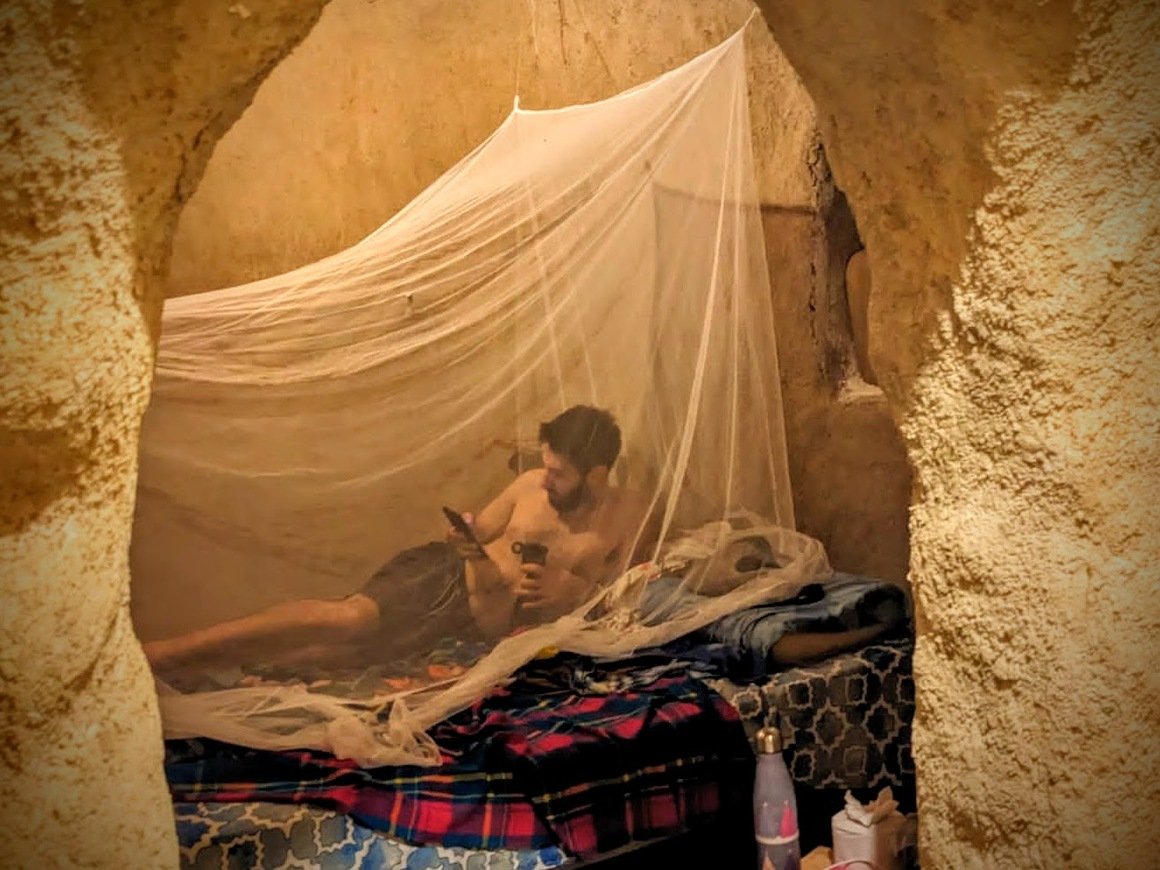
It is worth checking if you need the Yellow fever vaccine before entering some countries. In some places, it is only recommended.
It’s also worth noting that in most places in South America, the water isn’t fit for consumption. The best travel water bottles have a filter.
Getting Insured BEFORE Visiting South America
Travelling without insurance in South America is risky. I broke my back in Brazil and will be happy to tell you why GOOD travel insurance is so important.
So consider getting travel insurance sorted before you head off on an adventure. You don’t want to be struck with a big, unexpected bill, or, worse, to put your health at risk.
ALWAYS sort out your backpacker insurance before your trip. There’s plenty to choose from in that department, but a good place to start is Safety Wing .
They offer month-to-month payments, no lock-in contracts, and require absolutely no itineraries: that’s the exact kind of insurance long-term travellers and digital nomads need.

SafetyWing is cheap, easy, and admin-free: just sign up lickety-split so you can get back to it!
Click the button below to learn more about SafetyWing’s setup or read our insider review for the full tasty scoop.
Where you will start your trip will be determined by what backpacking route you have chosen. Obviously, if you plan to tackle a specific country, the capital city of that country is a popular starting point and – usually – the logical option.
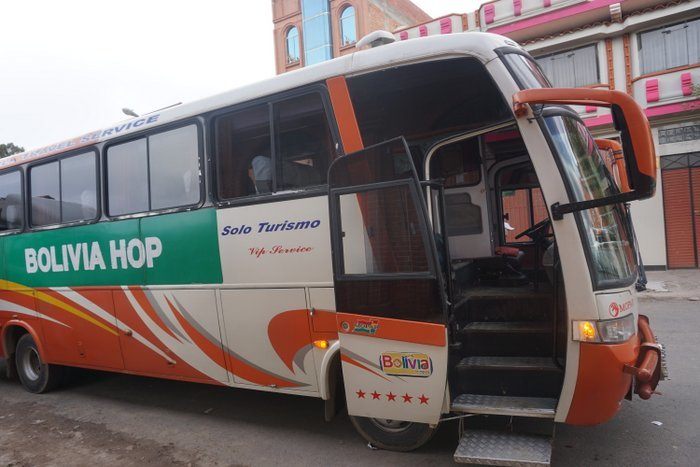
South America is not the cheapest country to fly to, but you can sometimes bag a cheap direct flight from another major airport. It’s pretty expensive to fly within it too. Unless you are coming by boat to Colombia via the San Blas Islands, you will certainly be arriving by plane.
São Paulo, Lima, Buenos Aires, Santiago, and Rio de Janeiro are all major hubs for South America. Compare the prices between these top destinations, and base your South America itinerary from there.
Entry Requirements for South America
Good news everyone! Most South American nations DO NOT require a visa to visit! This applies to those travelling from the USA, UK, EU, Australia, and most other Western nations.
This is a positive trend in the last few years. A few years ago, travellers sometimes had to apply for (expensive) visas to enter countries like Argentina and Brazil. Luckily, this is no longer the case .
Once you’ve entered the country, you can remain for a period of 90 days visa-free. Extensions are possible but these vary on a country-by-country basis. Most South American governments do not take kindly to people who overstay.
Of course, ALWAYS double-check visa policies before travelling .
City Bus. Local Bus. Long-distance bus. Overnight bus.
That’s right. Buses are the most economical way of getting around South America. Every major capital has buses going to the far reaches of the country.
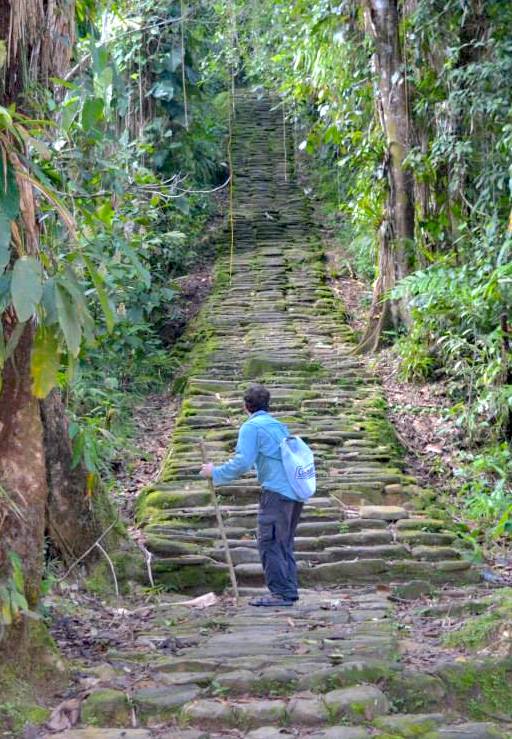
Local buses are typically super cheap. You can book online but the bus stations are organised really well too.
Taxis are an option within cities and sometimes Uber too, depending on the city. If you opt for a taxi ride, make sure they are legit, set the price beforehand, and haggle the shit out of the driver without being rude.
Flights between countries in South America can be expensive. Internal flights within the country aren’t the cheapest either, though they are cheaper if you buy them while you’re inside the country (you’ll save money on taxes).
As a general rule when backpacking, cheap travel is slow travel . Buses can be slow but as you will be taking many if you are backpacking South America long term, you want to go for the cheapest option.
If you want to go full Che Guevara style you can travel by motorbike pretty easily (and cheaply) in most places in South America. I recommend that you have some experience riding motorbikes before you even think about sauntering into a capital city or down a winding road in the Andes. If you do go the motorcycle route you can be sure that it will be the ride of your life.
Hitchhiking in South America
Travelling by hitchhiking is always an option. Your success will greatly depend on the area and the country; I wouldn’t recommend hitchhiking in a major city or at night.
Hitchhikers aren’t that common in countries like Colombia, mainly due to paranoia about the security situation in the country. Not everyone here is a drug lord that wants to kidnap you for ransom money. You can hitchhike throughout Colombia AND it’s such an awesome experience!
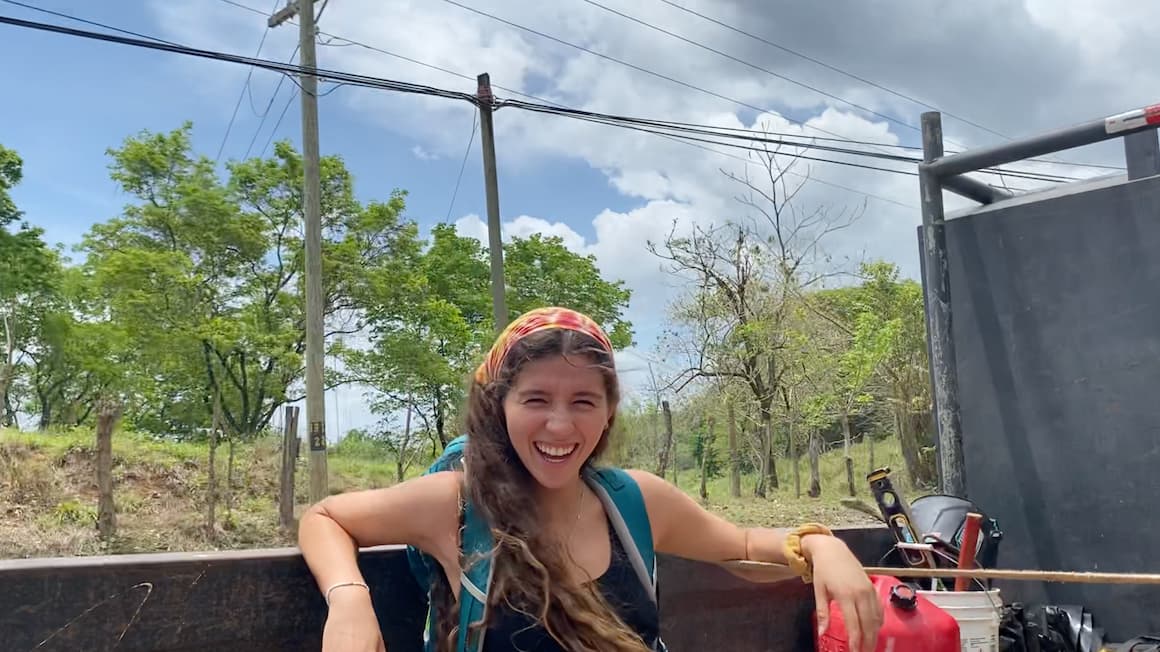
Rural areas of South America are especially impacted by high rates of poverty. Expecting free rides from folks with limited means isn’t morally fantastic. That said, even if you offer the driver a few bucks, it could very well end up being cheaper (and more rewarding) than taking the bus.
I would never assume that the ride is free initially. Always ask to avoid having an awkward scenario in which the driver who picked you up is demanding an unexpected fee. This is when learning Spanish comes in very handy.
Onwards Travel From South America
Your only options for leaving the continent are by boat or by plane. Most likely you will fly out of the country where you are finishing your trip if it makes sense and is the cheapest option. Try to book your flights in advance in order to find the best flight deals .
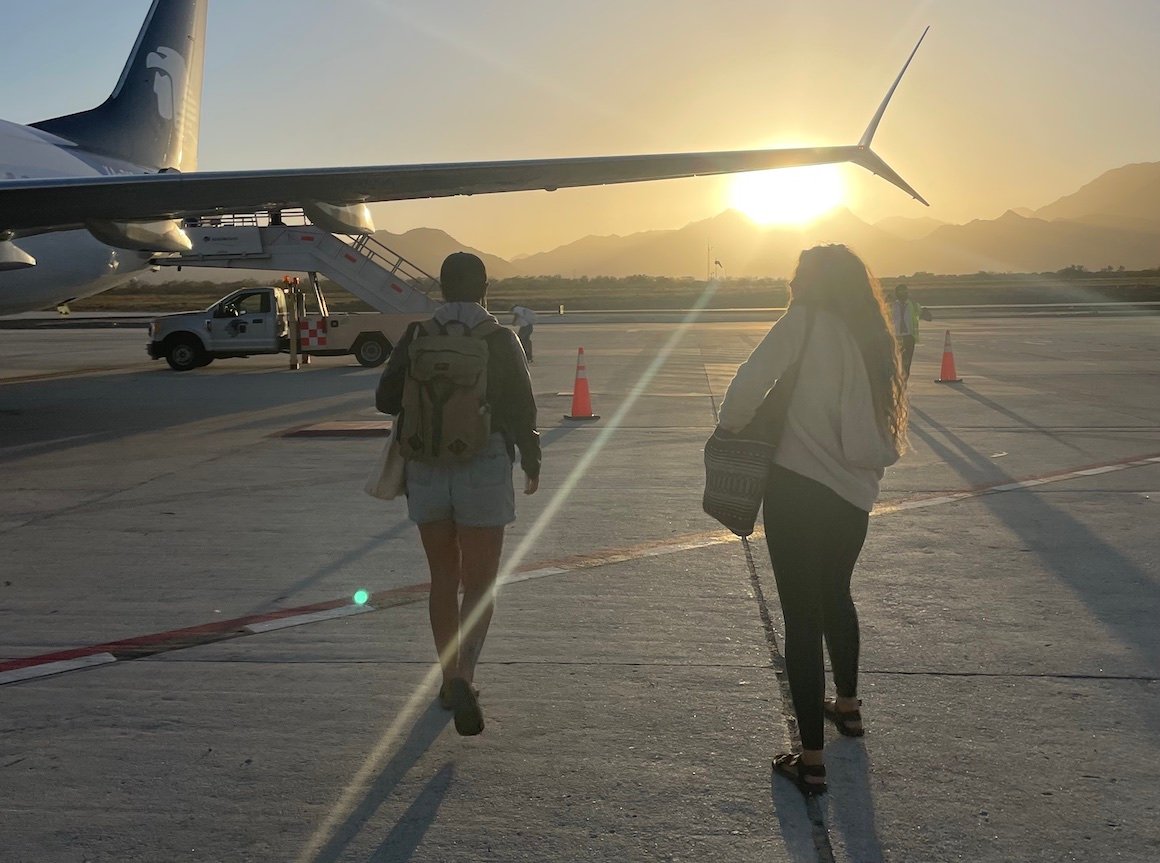
It is technically possible to cross the Darien Gap to Panama overland. Rumour has it that you can hire a guide for quite a bit of money and cross the Darien on foot.
In the past, this was impossible though due to narco-terrorist/guerrilla activity. May the Gods of Backpacking be with you if you attempt the journey on your own without a guide.
South America is becoming a digital nomad hub. After the pandemic, the boom really: a generally low cost of living, relatively reliable internet, and tons of expat communities.
Medellín is the current front-runner. This city is growing at a RAPID pace and is becoming the apple in every backpacker’s eye.
Plus, Medellín is safer than ever. Lots of people want to stay here for an extended period of time, digital nomads included.
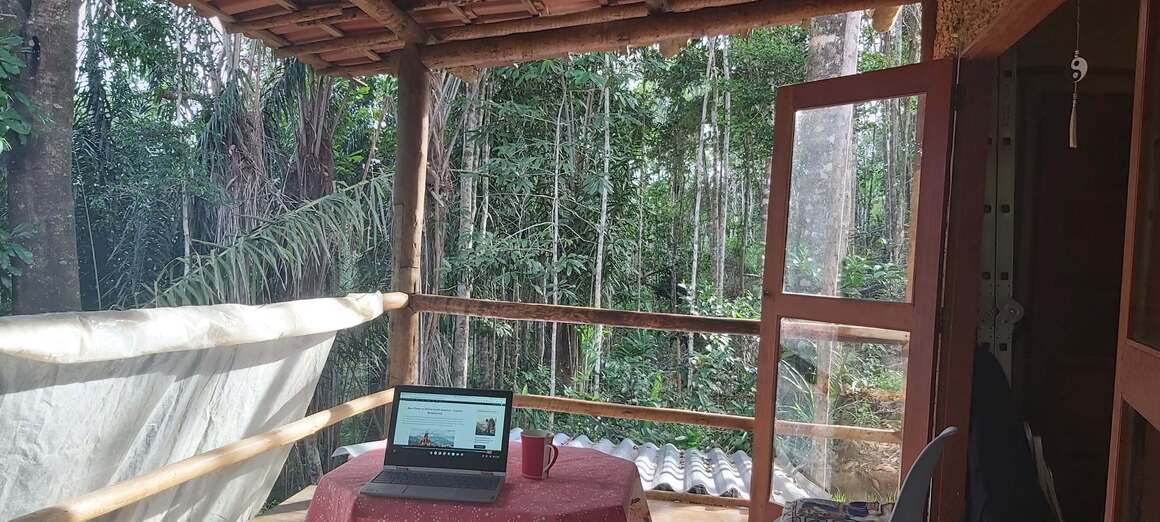
Close behind are larger South American cities like Buenos Aires, São Paulo, and Quito. Being big cities though, you’ll have to overcome higher prices and crime. Safety in Buenos Aires can be sketchy but so can every massive city, right?
Note that, at the moment, most South American countries do not offer a special digital nomad visa.

A new country, a new contract, a new piece of plastic – booooring. Instead, buy an eSIM!
An eSIM works just like an app: you buy it, you download it, and BOOM! You’re connected the minute you land. It’s that easy.
Is your phone eSIM ready? Read about how e-Sims work or click below to see one of the top eSIM providers on the market and ditch the plastic .
Teaching English in South America
Most people who end up living or staying long-term in South America do one of two things: teach English or volunteer.
Teaching English in South America is very popular. Some people make a living out of just going from one city to the next city and hitting up all the English schools in between. Some are accredited though many find success using their own merits.
If you have a TEFL certificate it will be much easier to score teaching gigs in South America. I recommend getting yours with MyTEFL – Broke Backpacker readers get a 50% discount on TEFL courses when you enter the code PACK50 at the checkout.
Volunteering in South America
Volunteering abroad is a great way to experience a culture whilst doing some good. There are loads of volunteering gigs in South America ranging from protecting the Amazon to teaching in barrios of Buenos Aires.
Arguably, you may need a permit in order to volunteer. But in reality, the continent is pretty chill and this is unlikely to ever be enforced.
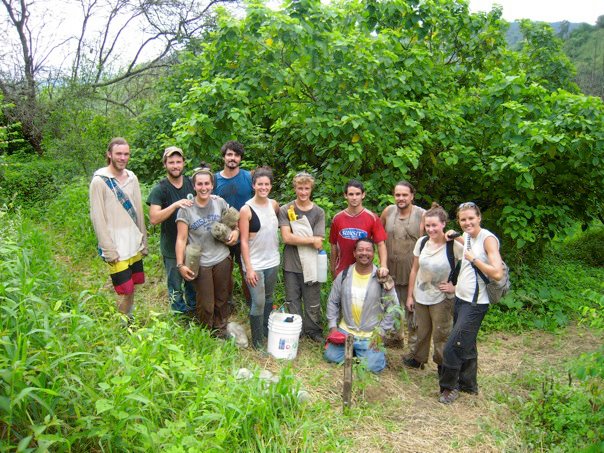
I spent a few weeks volunteering in the mountains in Northern Colombia and it was the best way to get to know the land, people, and lifestyle. Finding volunteering opportunities in South America is about learning, building community, and making an impact in a place you visit.
The best way to find volunteer jobs is word of a trustworthy mouth. But programs run through reputable work exchange programs like Worldpackers , Workaway , and WWOOF help you get your foot in the door of volunteer communities.
They’re a great opportunity for unique experiences and make amazing connections with people. But you do have to stay vigilant, especially when working with animals or children.
If you sign up for Worldpackers with a discount code, memberships are only $39 a year. For that price, it’s often worth giving it a try.
Summing up food in South America is like trying to explain what music is. It’s incredibly diverse and every country, every region, every household has a different definition.
First of all, meat is hard to avoid. They like it juicy, tender, slow-cooked, and accompanying pretty much everything. Especially in the southern part of the continent, Argentina, Uruguay, and South Brazil, the smell of cooking cow is heavy in the air.
The Argentinian way of grilling is Asado . And it’s not just a delicious barbecue – oh no – that’s just the centrepiece. The event is a huge part of the culture.
The vegetarian movement is gaining momentum, though it’s harder in some places than others. In more rural places, you may go hungry if you don’t want to eat meat now and again, but in general, it’s not impossible.
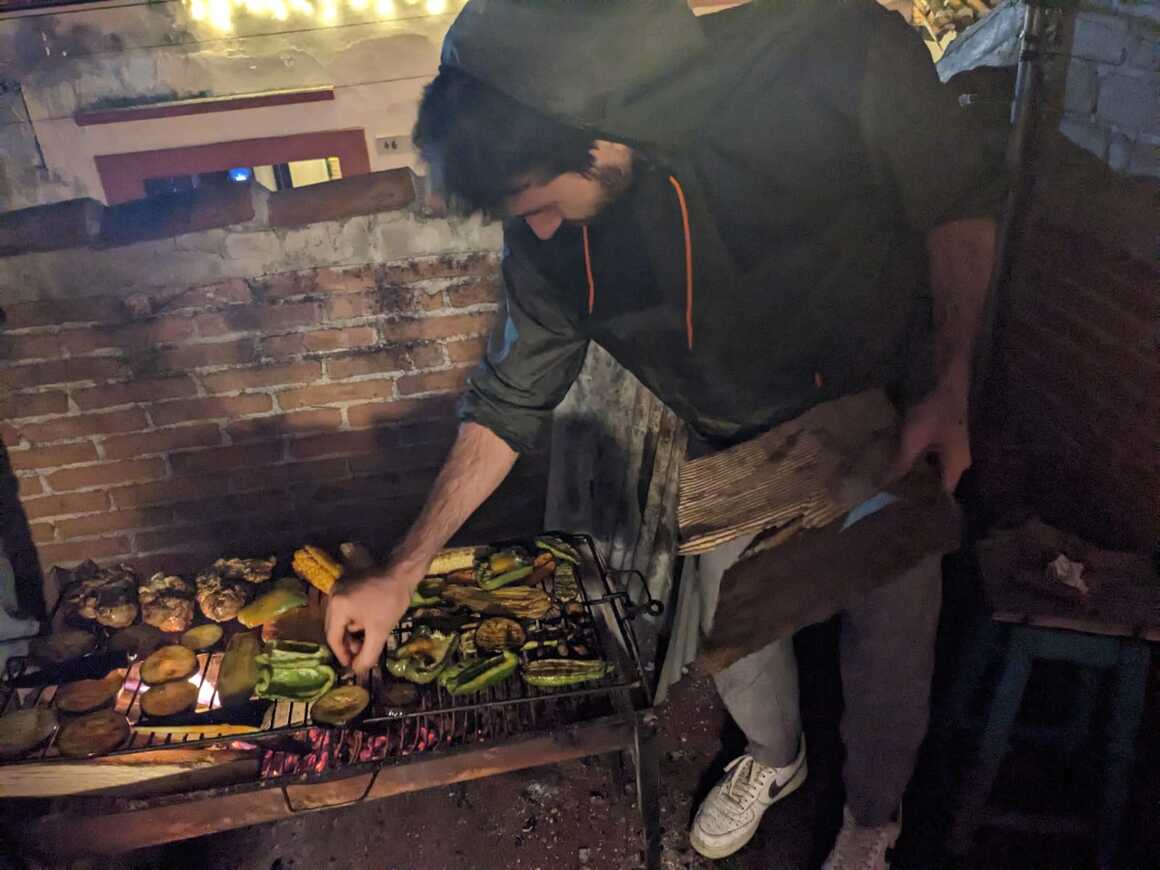
Andean countries like Peru and Bolivia have chronically underrated food scenes. In fact, Peruvian food is often regarded as some of the best in the world. You’ve never felt fresher than after chowing down that ceviche.
In the Amazon, they have a whole different gastronomic world; obviously, everything grows here. There are ingredients that come from the Amazon that just don’t exist anywhere else.
There are strange fruit and vegetables in abundance. Then, of course, the fresh fish comes leaping out of the river, almost directly to your plate. Catching your own fish is never a bad idea either.
The food in the north of South America, like Colombia and Venezuela, is the definition of comfort food. If you’re eating right, you’re going to be gaining a few kilos. Don’t pass on an opportunity to gorge yourself silly.
Street food usually involves lots of deep-fried goodness. But it’s the abuelas that make the best pastries, with oodles of love. And ooh, those arepas… they have a special place on my plate.
The Best Food in South America
Here are some of the best South American foods that you definitely shouldn’t miss out on.
- Feijão (Brazil) – Beany stew for everyday eating.
- Acai (Brazil) – Superfood berry.
- Empanadas – Your trusty stuffed pastry friend.
- Dulce de leche – Just try it… thank me later.
- Asado (Argentina) – Grilled meat with a side of meat.
- Antichucho (Bolivia) – Mmmm… cow’s heart.
- Ceviche (Peru/Chile) – raw but not raw fish, in lemon juice.
- Cuy (Peru) – A large cooked guinea pig.
- Encebollado (Ecuador) – Ecuadorian Grandma’s comfort stew.
- Arepas (Colombia) – Corn pockets to fill your hungry belly.
South America is a very complex continent. Colonization by Western Europeans technically makes it the youngest member of modern civilization. But saying this disregards all the history that came before the “ conquistadors” arrived.
South America has hosted many advanced civilizations like the Incan Empire, whose influence still lasts to this day. Though much of the native culture was lost with the mass killing by said conquistadors .
Long story short: South America is an enormously diverse region, maybe more so than anywhere else. Yes, European culture has largely shaped the entire continent. But indigenous and African cultures are just as important, if not more so.
Northern Brazil is very Afrocentric. This was the first charted part of the continent and ideal for rowing sugarcane. Consequently, it’s the place where all the slaves were brought.
Slavery is over. But it leaves behind a blend of African customs and cultures morphed into Latino culture.
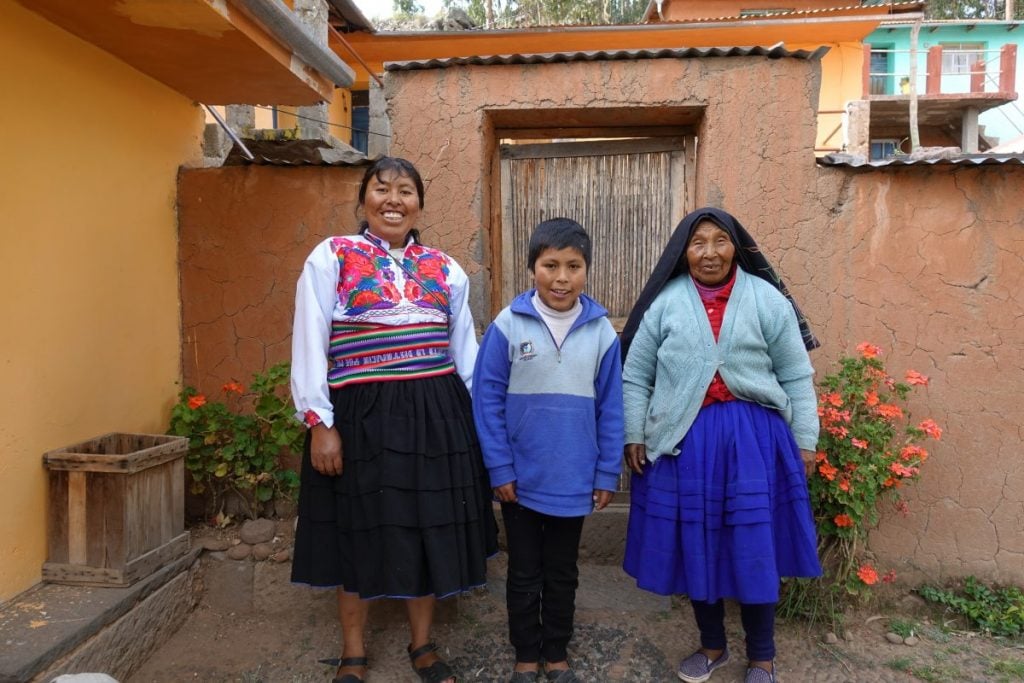
The south, which constitutes Argentina, Chile, and Southern Brazil, is much more European. Aside from the big players – the Spanish and Portuguese – Italians, Germans, and French all settled here following a huge era of migration.
In the Andean countries of Bolivia, Peru, and Ecuador you see a lot of indigenous cultures. Some people still live like their ancestors, living in the highlands and tending the land. Though Spanish is still the dominant language, several local languages, like Quecha and Aymara, are still commonly spoken.
Don’t make the mistake of thinking that all of South America is just an extension of Europe or North America. You’ll miss out on the beautiful subtleties of the region, which make backpacking in South America so wonderful.
A backpacking trip in South America is a unique experience in itself. And within that, there are instance amounts of opportunities to make your South America itinerary different to anyone else who’s travelled here before. Here are some of the best things to add to it:

Things go wrong on the road ALL THE TIME. Be prepared for what life throws at you.
Buy an AMK Travel Medical Kit before you head out on your next adventure – don’t be daft!
Hiking in South America
South America has some of the best hikes in the world . Here are a few iconic options to get your bucket list started:
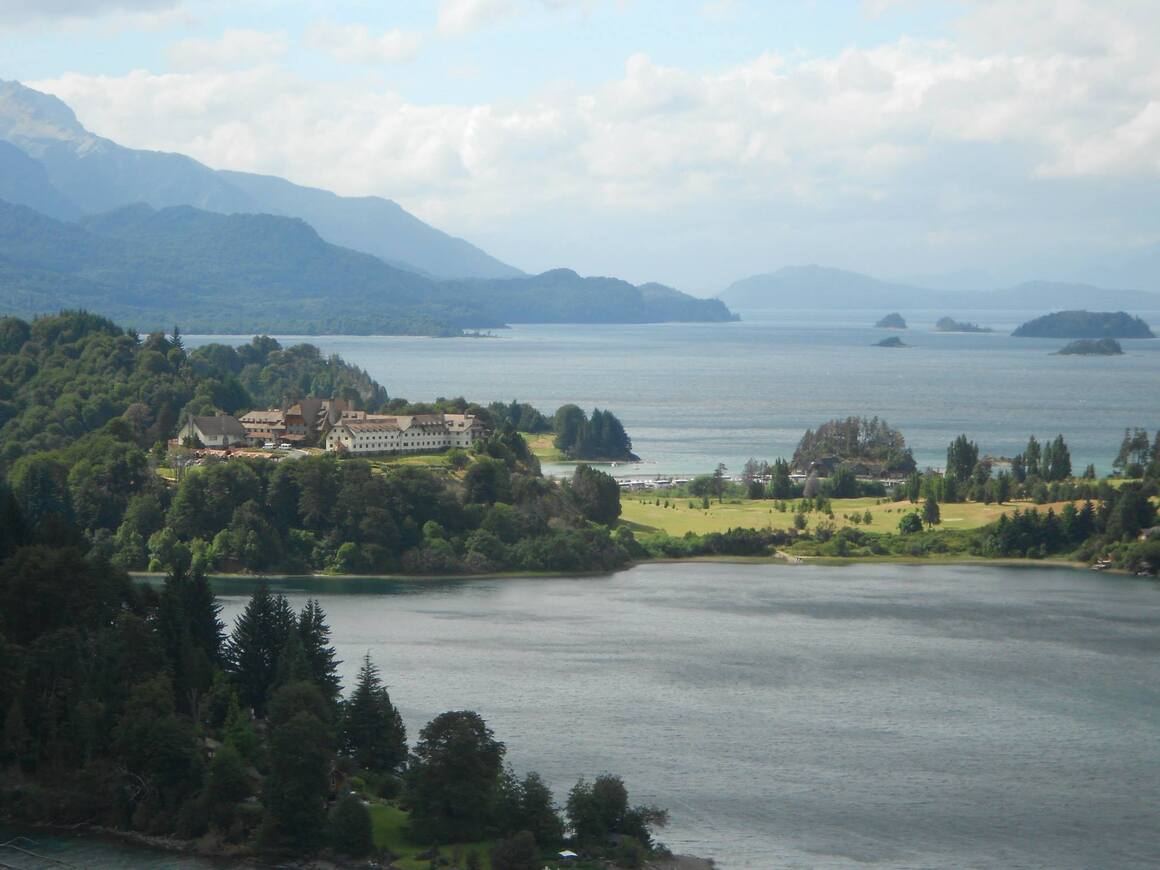
- Lost City Hike, Colombia : This hike through the Colombian jungle will certainly be a highlight of your South America travel.
- Sierra Nevada de Cocuy, Colombia : Snow in Colombia? Here you can find peaks are as high as 5,330 meters above sea level. If you have your own gear and a good sleeping bag , you can probably do the hike without a guide.
- Iliniza-Norte, Ecuador . This is a fantastic 2-day trek that does not require any special gear or equipment. If you are planning to tackle Cotopaxi this is a great warm-up. A solid challenge for the dedicated hiker!
- The Salkantay trek, Peru: Hike to Machu Picchu over 4 days and experience the true beauty of the Andes along the way. One of my favorite South American treks for sure.
- The Cordillera Huayhuash, Peru : Truly one of the most stunning areas in Peru. For serious hikers, planning a trek like this is one for the books!
- Hut-to-Hut in Bariloche, Argentina: Spectacular hike for some of the best views of Nahuel Huapi National Park and its lakes. Tents are optional since you can stay exclusively in the refugios.
- Villa O’Higgins to El Chaltén, Chile/Argentina : One of the greatest ways to experience Patagonia. Walk from Villa O’Higgins in Chile to El Chaltén in Argentina. You’ll see some superlative mountain, forest, and lake scenery along the way.
- Torres Del Paine Circuit, Chile : The hike of all hikes in South America. This epic walk takes 9 – 11 days and passes through some of the most dramatic landscapes one can fathom. A must if you’ve got the time and hiking spirit!
Scuba Diving in South America
You have scuba diving options galore in South America! In general, scuba diving is pricier than it is in other parts of the world but that’s because it’s worth it. If it is something that you really want to do, I say go for it!
Colombia is probably the cheapest and best place to dive AND get certified in South America. You have Providencia and Santa Catalina (a smaller island to the north) which is home to the third-largest coral reef barrier on Earth and includes over 40 dive sites.
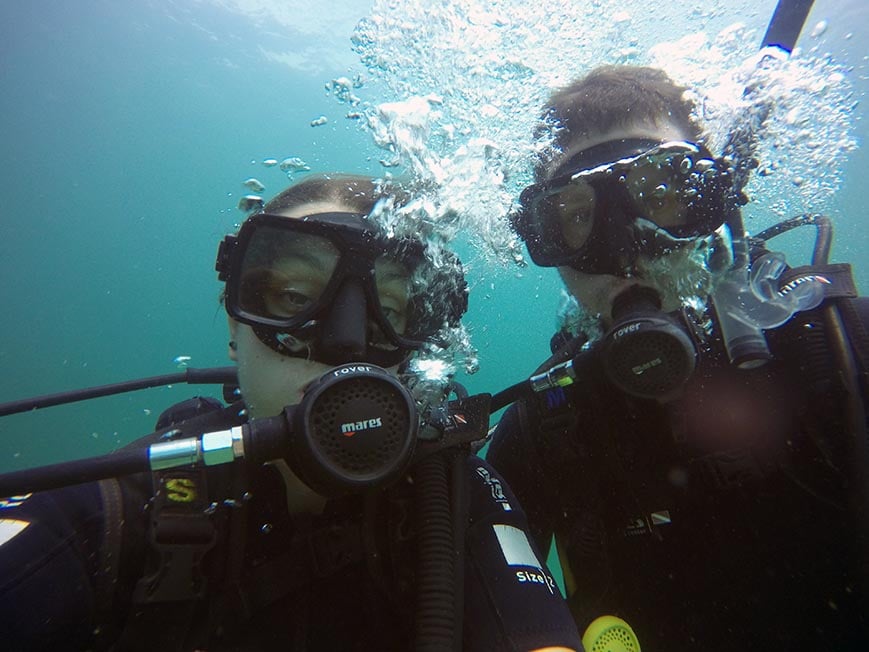
Malpelo is the harder-to-reach version: a jagged rock in the Colombian Pacific, it can only be reached by boat, and divers can only visit here as part of an organized trip. It’s worth the time and money for sure; Malpelo is one of the best places in the world to dive with sharks, including hammerheads, whale, and the rare sun ray shark.
People have reported schools of up to 500 sharks around Malpelo. That’s right. 500!
Peru and Ecuador both have some decent diving right off their coasts. The diving around the Galápagos Islands is world-class, but it will cost you a fortune go diving there.
If you truly want to have the scuba diving adventure of a lifetime, I highly recommend joining a Liveaboard trip.
- Liveaboard the Galapagos
- Liveaboard Colombia
Surfing in South America
Surfing is the number one sport on South America’s coast. From Peru to Brazil, backpackers and locals are coming together and shredding!
Peru is home to the longest left-breaking wave in the world . You can literally ride a wave for five minutes!
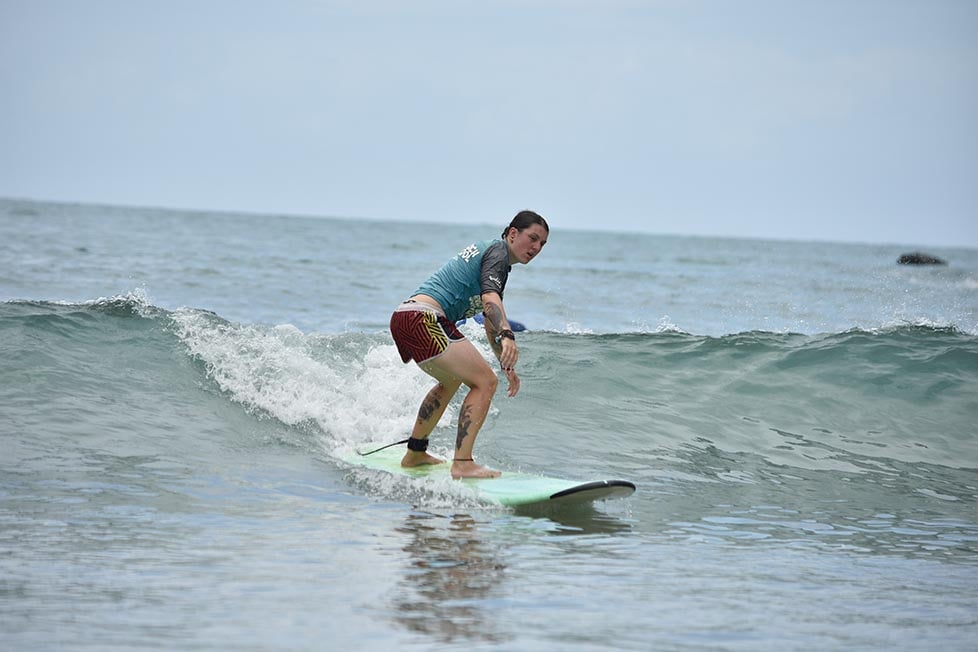
The Pacific Coast is dotted with funky surf towns, where the main activities revolve around the waves and the nightlife. There are a plethora of surf schools in every country. Often these surf schools offer Spanish classes as well if you are wanting to double down (which I highly suggest!).
It is easy to fall in love with the surfing lifestyle. But be careful, you might just fall in love with the whole scene. I wouldn’t blame you for a second.

Our GREATEST Travel Secrets…
Pop your email here & get the original Broke Backpacker Bible for FREE.
Is backpacking South America safe?
Yes. Backpacking South America is safe. Just bear in mind that crime rates are higher than in some other areas of the world. But by following standard safety procedures, there’s no reason why that crime should affect you. Be sensible, show people plenty of respect, and look after your friends.
How are the bus journeys in South America?
The long-distance buses are generally top quality and comfortable. Just be aware that distances on the map can be deceiving and journeys can be long so bring plenty of water, food, something to keep you warm in the baltic aircon, and probably some toilet paper too.
Is travelling South America as a woman possible?
Absolutely! Not only is it possible, it’s awesome. Do remember that, unfortunately, women do have to consider safety as a factor more so than men, especially after dark. But with that in mind, prepare for the adventure of a lifetime.
How are South Americans so damn sexy?
There are too many reasons. Just go and spark up conversation with them and find out for yourself. Beware though, you’re likely to fall completely, madly, deeply in love.
Backpacking South America can be one hell of a party at times. Take it from me, it can be easy to get carried away.
You can make a positive impact on people when we travel and South America is the perfect place to do that. Try to spend your money in places where the experience is mutually rewarding.
When buying a local craft, be fair to the person who spent countless hours crafting it. Pay people their worth and contribute to the local economies as much as possible.
If you visit small or indigenous communities, be respectful: they are normal folks just living their lives. Backpacking South America – or any region for that matter – often illuminates some of the great socio-economic inequalities of the world. Never take it for granted that you are healthy and financially able to go travelling.
Show the world around you some gratitude and help to make a positive impact on it. Most of all have the time of your life and spread the love!
Well, amigos, the time has come for me to send you on your travellin’ way. Armed with your budget travel knowledge, on you go!
Your South America backpacking trip awaits. Have a few cold ones for me, yeah?
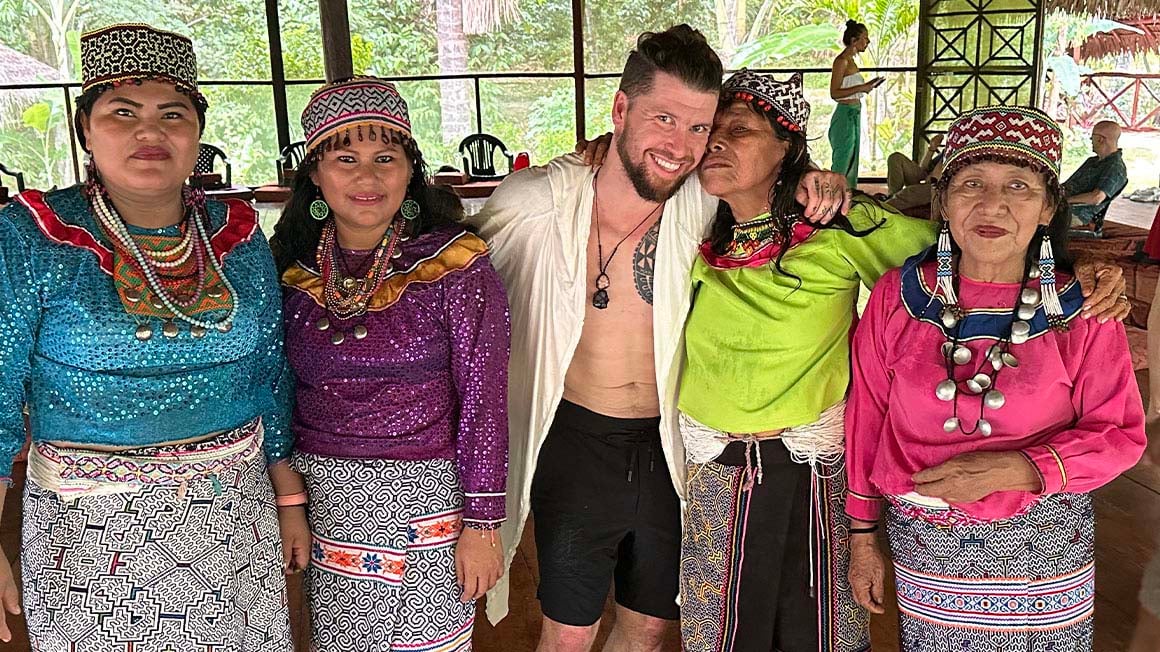
And for transparency’s sake, please know that some of the links in our content are affiliate links . That means that if you book your accommodation, buy your gear, or sort your insurance through our link, we earn a small commission (at no extra cost to you). That said, we only link to the gear we trust and never recommend services we don’t believe are up to scratch. Again, thank you!
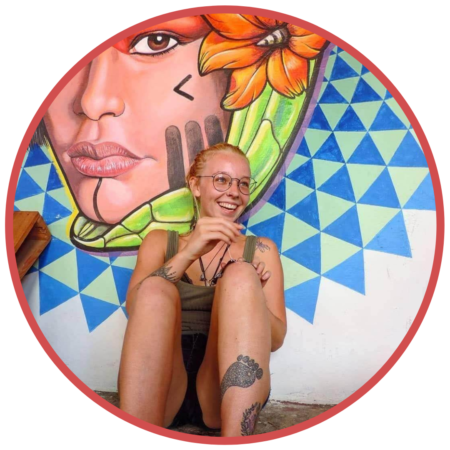
Share or save this post

30 Comments
Great post, loved the detail and enthusiasm you have for South America. I am saving up to travel from northern Colombia all the way down the west to Patagonia and then back up the other side (yes I am aware it will take the best part of a year). I wondered if you had any tips on the best time of year to start this adventure?
Plan your time with the weather and seasons in mind! Have a great time.
Is traveling to brazil unwise right now because of the covid situation? Has it become more unsafe because of the covid situation? It’s been really difficult to find solid information, and making a decision wether to visit or not has been quite difficult. Thanks for the otherwise wonderful post! Super informative.
informative post . best of luck
Hi Kami, glad you liked the article!
Very nice blog, congratulations I found a cheaper way to flight some routes inside Latin America If someone have plans, after this health crisis is gone, just ask me, I will be glad to help
Interesting. However as a Guyanese, that us from Guyana, South America I always find it odd that many persons leave out the English Dutch and French speaking countries of South America. We too have things to offer.
Hello Malkia, We totally agree with you! As soon as we manage to visit Guyana, we will update this guide! I look forward to exploring your country. Cheers
Hey there!! So I am planning a trip to south America this summer. I have a couples questions. I’m flying into Bogota, Colombia. I plan on spending 2-3 months in SA. I’d like to travel from Bogota to Machu Picchu, then to Buenos Aires, and depending on time Brazil. I am trying to figure out the cheapest way to travel from country to country. I don’t care about long bus rides or any of that. I just don’t know where to purchase the cheapest bus tickets. Please help!!!
Simply the cheapest tickets are usually at the bus station, or wherever locals buy their tickets. Look out for agencies and the like that might add a fee for booking the very same thing you could yourself.
I have a good tip to move around if you need to do it by plane, just let me know if you plan (after the whole problem is gone) to fly some stretches.
Hey man great blog, been reading so many of your posts recently, can you email me I wanna chat to someone who knows there stuff… I’m going to South America for about 6 to 8 months on a budget and need help planning a route… hopefully you see this and we can chat thank you
Hey Jamie, What is your question specifcally regarding your route? Cheers!
Thank you so much for sharing these information – they are so useful!
I am planning a trip of a lifetime to South America. To keep cost down, I am likely to stay in hostels for the first time. I like to understand how travellers wash their clothes in hostels. Are there usually any washer or dryer machines in hostels? Do we usually have to pay to use them? What is the price like?
Look forward to hearing from you.
Hi Tina, Some hostels offer laundry services. Other times you can get your laundry done at local lavanderias . Depending on the country, prices are usually pretty reasonable. They usually charge by the weight. Getting a massive load of clothes washed should not cost you more than $10 (sometimes way less) washed, dried, and folded. Cheers!
Thanks Chris for this wonderful article. Bolivia and Brazil is a magical place! Anyone who went there said it was absolutely amazing! That nature is just wonderful here. keep sharing your travel ides about more places of South America.
Cheers, Mate!
I started my South American journey two months ago and this has been a big help. There’s literally so many options once you get down here. Overwhelming in all of the best ways.
Much love from Peru.
Wow! That’s a marvelous article! Unfortunately, not so long ago, I was in South America, and I really had a lot of predicaments while traveling. If only I had read this article before the traveling, most likely, my trip would have been better!
Great content, congratulations.
Really great and in depth guide, thank you! Planning my first trip to South America and really like the look of your 3 month route across Peru, Ecuador and Columbia, was thinking of taking another couple of weeks on top to see Bolivia as well. What month would you advise starting this travel? (would really like to be home for Christmas)
The autumn months would be a lovely time to visit South America 🙂
Awesome content! I took so much advice and suggestions. I feel like I can plan whatever kind of trip ranging in length of time spent there plus budgeting. Thanks!
It’s great that you’re such a strong advocate of reusable water bottles and avoiding one-use bottles and generally I totally agree. However, I normally refill my water bottle from the tap, which obviously isn’t safe everywhere. Geneally can you drink tap water in South America? Or if not how do you safely refill without buying bottled water?
We’ve used lots of things over the years to harvest clean water from taps and streams. The GRAYL filter bottle is one of our favorites. South America is something of a mixed bag when it comes to drinking water. It ranges from safe to unsafe with every shade of chloriney in between.
I am starting my South America trip new month and I found this website extremely useful. One question though – I am worried about the requirement to show proof of onward travel. Any idea if Argentina, Chile, Bolivia, Peru, Ecuador, and Colombia require this?
Hi Neringa,
I never had to show proof of onward travel during my 6 months in South America. There was never a time when a customs officer/border police questioned me about my onward travel plans. You should be just fine 🙂
Thanks, Chris. You have been right! But I was requested to provide proof of onward travel by Avianca when flying for Cusco to Quito. Maybe because my passport expires soon. My friend, however, did not have one and was still allowed to board the plane 🙂 There was a group of Israeli guys who I think had to show this info, too.
Thanks a lot man, I’m planning a 3 month trip to Colombia, Peru and Brazil next year and this really helped me get my head around how to do it and the kind of money I’m gonna need to save! Cheers dude
Thanks, this really helped me a lot for planning my trip next year!
Leave a Reply Cancel reply
Your email address will not be published. Required fields are marked *
Save my name, email, and website in this browser for the next time I comment.
Notify me of followup comments via e-mail.

How to plan a trip to South America on a budget
Are you soon to be traveling to South America on a budget?
For many first-timers planning an epic South America trip, the first question usually asked is how to stay safe and how to save money on the road.
Both budget and safety are top priorities for backpackers , so we’ll do our best to explain the overall situation and give our tips on a country-by-country basis.
What's in this guide?
The paradox lies in the fact that when we travel to South America on a budget, the aim is to save money, but scrimping and scraping inherently puts us in a risky situation because we tend to choose the budget option over everything.
It does not all have to be like this , especially when it comes to accommodation (for example) or doing tours where you’ll be flying off a paragliding somewhere. This is because you can be at your most vulnerable in both situations.
We believe it is smarter to know what to budget for, and where to spend that little bit extra, to be able to mitigate the safety risk in any one particular place.
Language and Currency
Let’s now look at some important elements of budgeting in backpacking South America that most travelers will need to consider at some point during their trip:
It is no secret that Spanish is the dominant language of South America .
It’s the main language of Colombia, Ecuador , Peru, Bolivia, Chile, Argentina , Uruguay, Paraguay and Venezuela.
The two exceptions (of countries we’ve covered in this guide) are Brazil who speak Portuguese, and Guyana whose mother tongue is English.
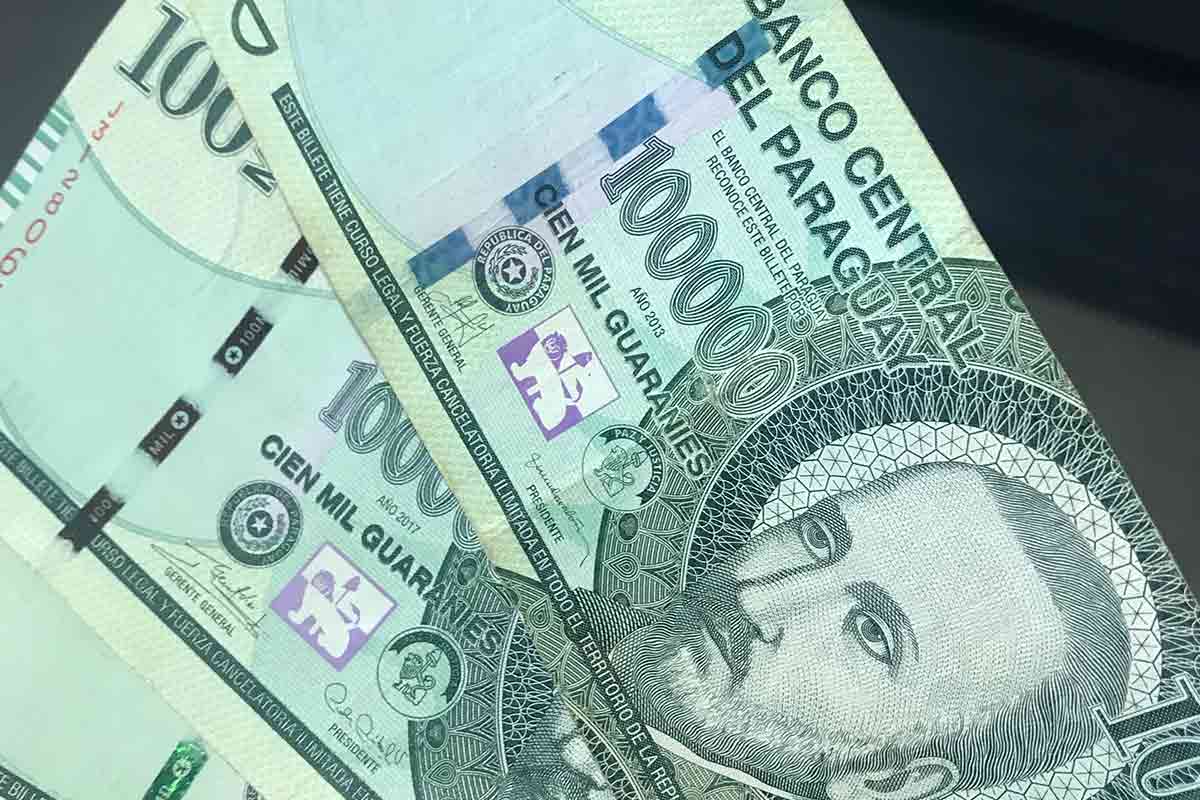
Another notable language is Guaraní, which once used by the indigenous tribes of Paraguay , is now also one of the country’s official languages (although not needed as most speak Spanish).
To be honest, you can get around somewhat comfortably with just English, especially in the bigger cities throughout South America like Rio de Janeiro and Lima.
However, knowing just a bit of Spanish will make the experience so much better (not just ease, but also being able to connect with locals).
Although Portuguese is Brazil’s tongue, most understand Spanish so you’ll somewhat be able to communicate and get both of your points across.
There are many indigenous languages also spoken here, most notably in the Andean regions as well as in Bolivia and Paraguay.
Some of the biggest and still-used today includes Quechua and Aymara. Brazil has the most indigenous languages of all South American countries, with a grand total of 177.
If you’re heading to South America, then be prepared for a myriad of confusing currencies and exchange rates!
Pretty much each country here uses a different currency, so you’ll need to adjust and work out your budget as you move along the backpacking trail .
Ecuador is the only country that uses $USD, and therefore is a lot easier to work out costs. Peru uses Soles; however Dollars are sometimes accepted and can be withdrawn from most ATM’s (similar with other countries too)
- Colombia uses Colombian Peso
- Bolivia uses Bolivian Peso
- Chile the Chilean Peso
- Argentina the Argentinean Peso
- Brazil the Real
- Paraguay the Guaraní
- Uruguay the Uruguayan Peso
- Guyana the Guyanese Dollar
Then of course we have Venezuela, who uses the Venezuelan Bolivar, which tends to be pretty confusing at best. They also widely use dollars, but you’ll need to bring them with you since it’s they are not available in ATM machines.
As all rates are constantly changing, we won’t bother listing them here. You can check currency sites such as XE who provide up-to-date and accurate exchange rates.
Getting Around South America
There are many ways of accessing South America, with the most popular by plane. The international hubs of São Paulo, Rio de Janeiro, Buenos Aires and Lima are the easiest and often cheapest to fly into.
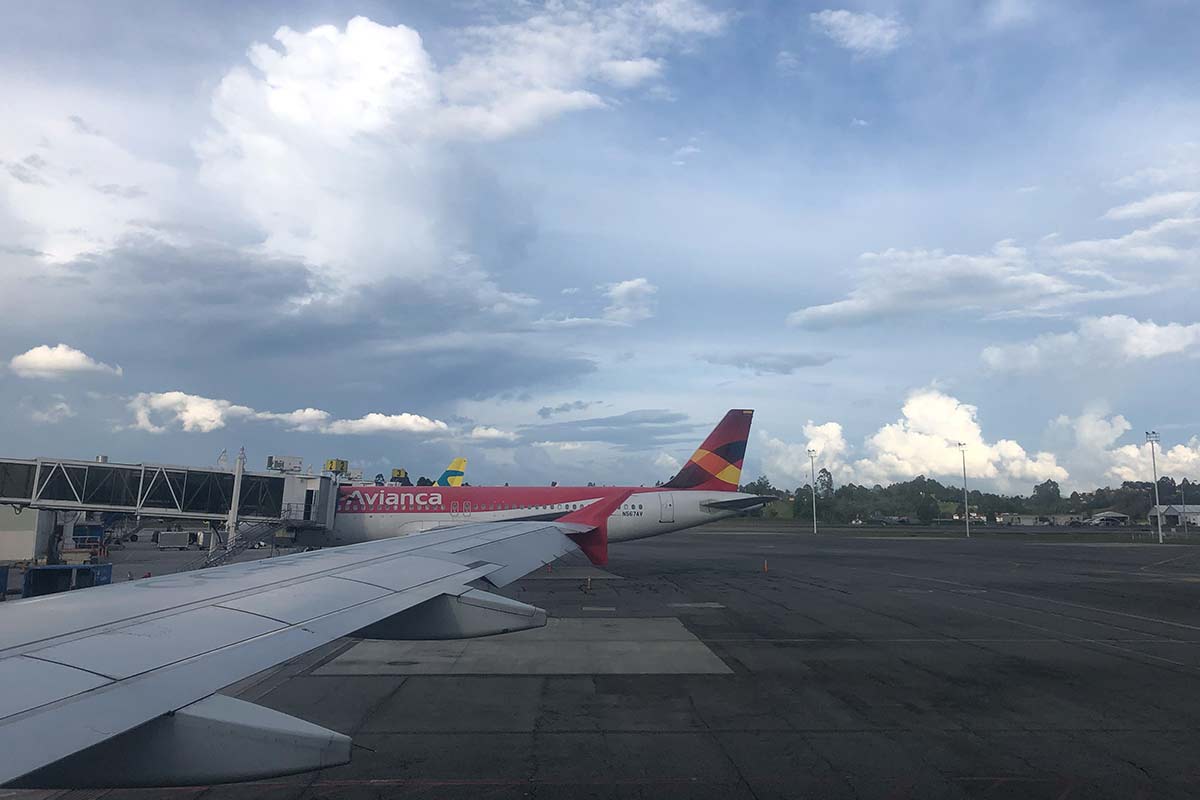
There’s a tonne of flights arriving and departing from these cities daily.
The other (more adventurous way) is arriving by sailboat into Colombia from Panama, which is one of our bucket list items in its own right.
If coming from Central America we would recommend this option , where you’ll spend 3 days crossing the Caribbean Sea and stopping off in the beautiful San Blas Islands along the way.
The only other way really is by cruise ships, which often depart from USA or Asia and have multiple stop-offs in the continent. As these are expensive and not part of the backpacking lifestyle, we won’t go into detail here.
South America is a mammoth of a continent.
Driving from Cartagena in the north of Colombia to Ushuaia in the extreme south of Patagonia would take over 6 days, non-stop!
Many who backpack South America with little preparation are slapped in the face when it comes to the distances between destinations, so we want to give you a more gentle one now so you can properly prepare.
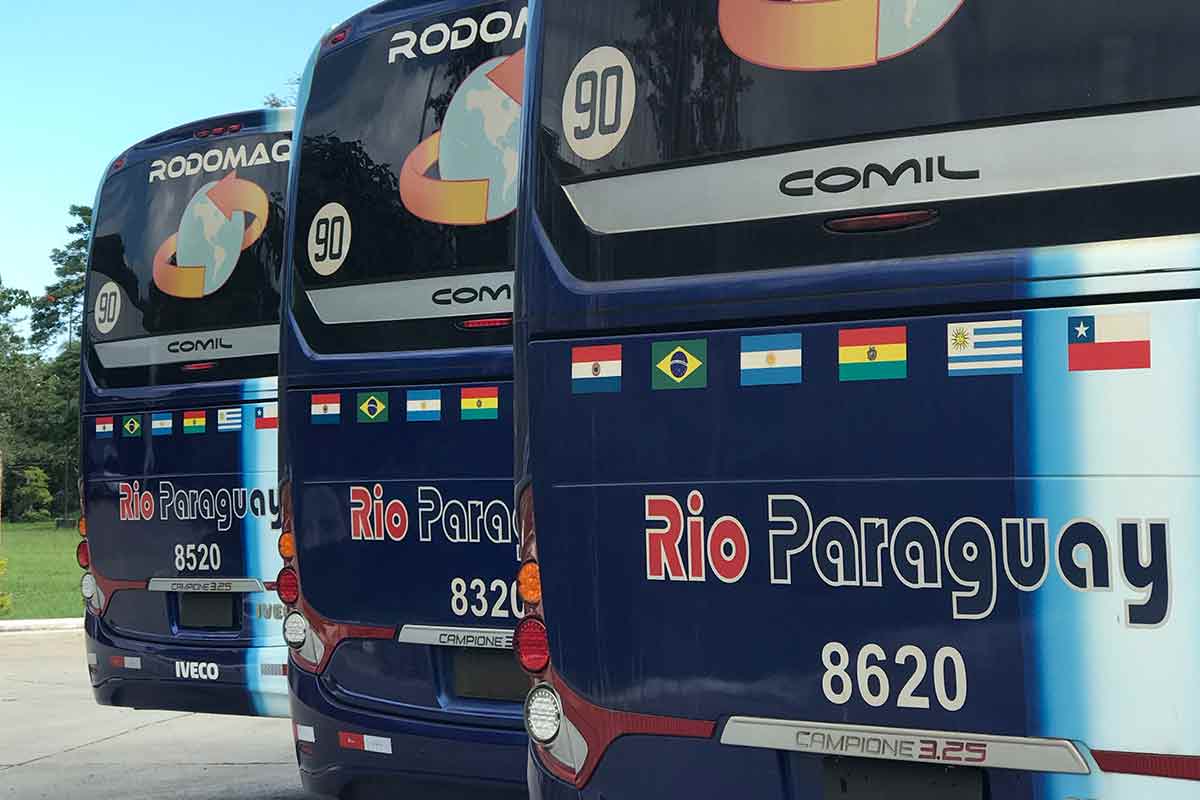
Most of the countries are big in size, and whilst some roads are well-built, many are still lacking and often wind around huge mountains and jungles .
You can expect most bus rides to take between 3-8 hours between top destinations, although the long distance one’s like in Chile and Brazil can often take up to 24 hours. Get yo phone and laptop charged boi!
You can also take regional flights to speed things up. Some of these domestic flights within countries can be pretty cheap, especially in Peru from our experience. However if your budget is tight, then buses win 100% every time .
Costs and Budgeting
One of the most important factors to plan before heading off is your budget.
South America is one of the cheaper continents to backpack around , which is good as your money will go on for longer here (especially good considering the sheer size and amount of things to do and see).
Let’s take a look at how much things tend to be, as well as how to plan a both reasonable and realistic budget.
The costs we listed here as correct as of September 2021 .
South America Travel Costs
Let’s take a look at the typical costs that you’ll be spending on a day to day basis in South America.
Remember these can and will vary depending on where you are!
- Average Dorm Bed = £4-10
- Private Single Room in a Hostel = £10-15
- A Street Food Dish = £1-2
- A Meal at an Inexpensive Restaurant = £5-10
- Beer at a Local Bar or Dive = £0.50-£2.00
- Beer at a Touristy Bar = £2.50-3.50
For example, a town in the Bolivian highlands is going to be much, much cheaper than the popular cities of Rio de Janeiro and Buenos Aires.
South America Travel Budget
As previously mentioned, backpacking around South America is quite cheap.
All countries do vary in terms of budget needed, especially with Latin America’s infamous ability to be unstable both politically and economically.
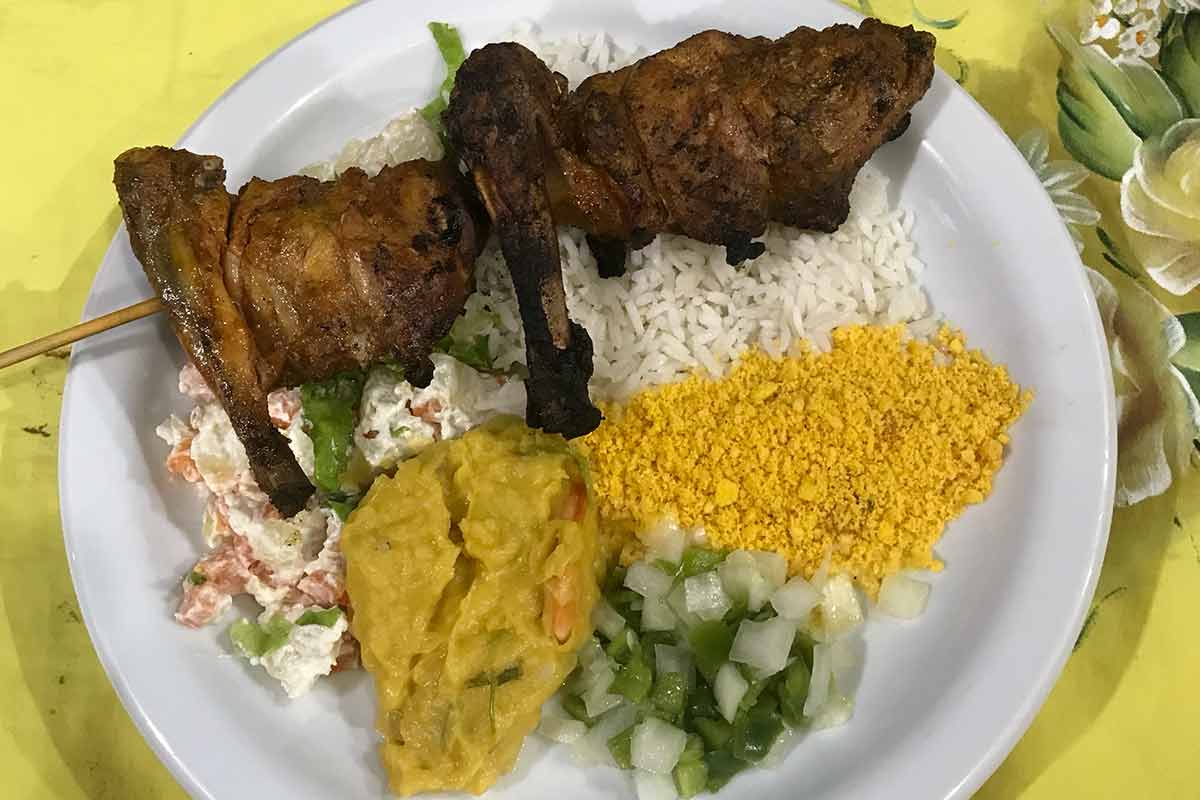
For Brazil, Argentina, Uruguay and Chile, the average backpacker will be spending roughly £25-30 a day . These are by far the more expensive countries to backpack around.
Whilst it’s definitely possible to spend less, the figure above takes into account average dorm bed rates, food as well as transport around cities within these countries.
The rest of these countries you can expect to spend around £20-25 per day .
These countries (especially Bolivia and Paraguay) tend to be poorer in areas, and also a lot cheaper compared with the previous ones.
It’s a lot easier to travel for longer in these countries, so factor more time in these countries to make the most of your journey in this continent.
South America Trip Planning
Whilst backpacking is definitely about being spontaneous and open to the new, solid planning beforehand really does go a long way.
Below we’ll go through some key things you should get sorted before heading out to South America.
What to Pack for South America?
I don’t know about you, but for us pulling out the ol’ backpack and preparing for a trip really gets the adrenaline going.
It’s here where things start to feel real, as you’ll start asking yourself questions like “What do I really need?” and “Will this shirt (or dress if you’re a woman) make me look the sexiest human in Colombia?”.
Hell we’re all human, and we’re here to have the best trip possible .
After you’ve looked at different countries in South America and decided where you want to head, now it’s time to get practical and look at what you need (NEED) not want. See this South America packing list for our best ideas.
For example, it’s probably a good idea to take that pair of hiking boots if planning on going to Patagonia instead of 4 different bathing suits.
One of my best tips that have helped us during planning is to first lay out what we want to take. Second is to divide into two piles; absolute essentials that we need, and others that we want .
Thirdly, add around 50% of the “others that I want” to your essential pile and start filling your backpack. Done.
Remember that whilst your backpack may feel empty this way, this is good as:
- b) it’s a pain trying to fit everything back in every time you move hostel, especially if in a rush.
Pack a range of clothes (as you’ve read, you’ll experience absolutely everything in terms of weather and temperature in South America).
See our much more detailed guide on the best time to visit South America for more ideas on what type of weather to expect depending on where you go.
Toiletries are also important, although try to pack liquids of less than 100ml , as this way you may be able to fly with just hand luggage saving you some dollar.
Other things to pack include your documents in a safe folder, a sleeping mattress, towels, electronics such as a laptop and some backup wallets and spare credit cards etc. High quality Hiking Boots are also an essential bring. We recommend these for men as well as these for women .
South America can be very poor in some areas, so whilst being cautious with food and drink whilst you’re there is important, even better is to get key vaccinations to avoid problems altogether .
Some injections that travelers tend to get before heading to South America include:
- Yellow Fever
- Hepatitis A
- Hepatitis B
However, please see your doctor as we are not medically trained or qualified to give advice. They’ll tell you exactly what you need for each specific country.
Be sure to read our guide on backpacking South America for places to visit.
👉🏽 P.S. If you’ve found this guide helpful, buy us a coffee here to say thanks! Or, support us by downloading our South America Travel Bible to get our best content.
“ Dear traveler! Some links in this post contain affiliate links. Meaning, if you click through and make a purchase, book a hostel or sign up for a tour, we may earn a small commission at no additional cost to you . Your support means a lot and helps us to carry on traveling and maintaining the quality of this site for you.”

Similar Posts
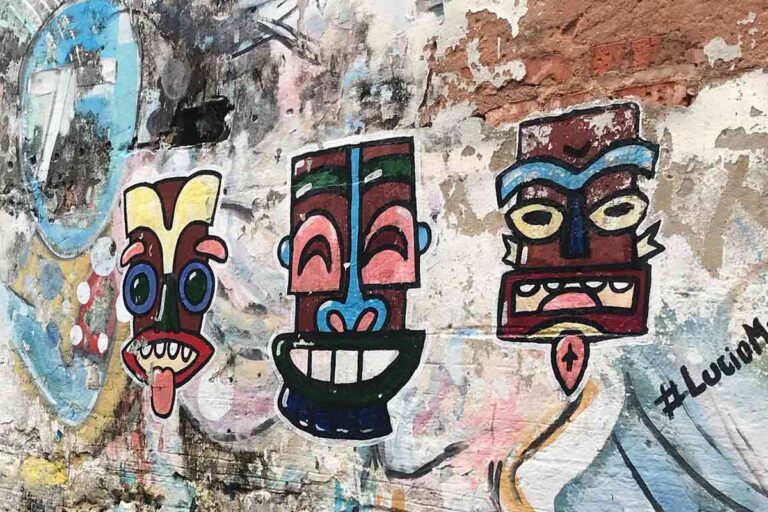
South America Packing List
This expansive continent is by far one of the best in the world for a backpacking trip. Here you can explore some of the most remote jungles in the world (The Amazon), as well as lap up the turquoise waters of the Caribbean, Pacific, or, even the Atlantic. Once you’ve decided that you’ll be going…
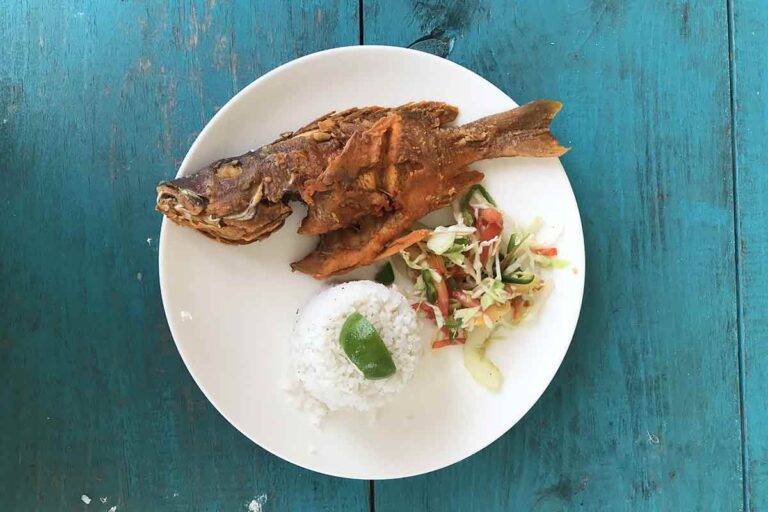
Eating Local Food vs Chain Restaurants
Traveling is, and has always been about experiencing the new and unknown. And what’s one of the best ways to explore a new country or destination? Through the local grub and drinks. Latin America is home to the most diverse food and drink on the planet. Countries such as Mexico and Argentina are known for…
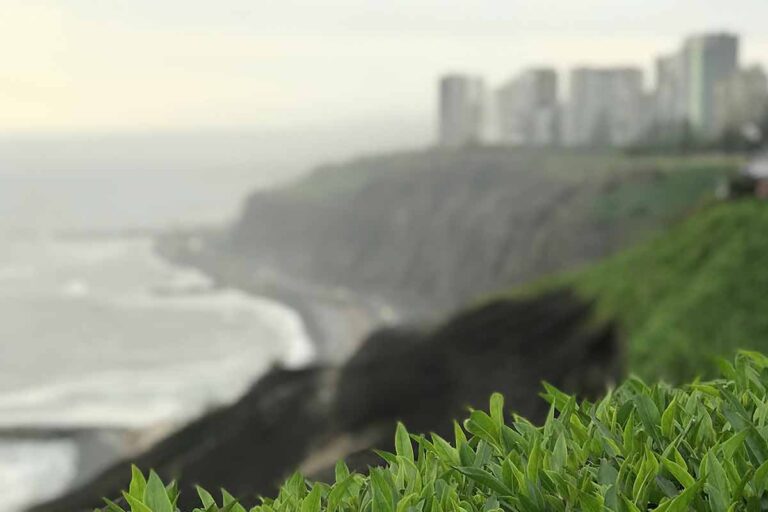
Travel or settle down: How to settle down on the road
As backpackers, should we maintain travel or settle down? Long-term travel is a really awesome thing to do. Not only can you live on your own terms, there are also no rules to it either. Spend a month on a tropical beach? How about 6 weeks of trekking in the deep jungle? It’s all possible….
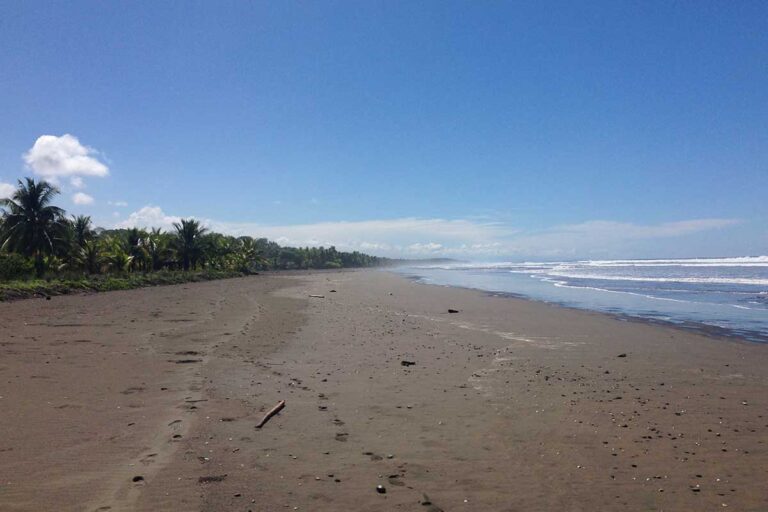
Best time to visit Costa Rica
In this guide, we will explore the best time to visit Costa Rica. Costa Rica is the most popular country in Central America, which makes sense given the abundance of nature, beautiful scenery and warm climate here. It’s also one of our top choices for first-timers too as it’s very safe. In this guide, we’ll…
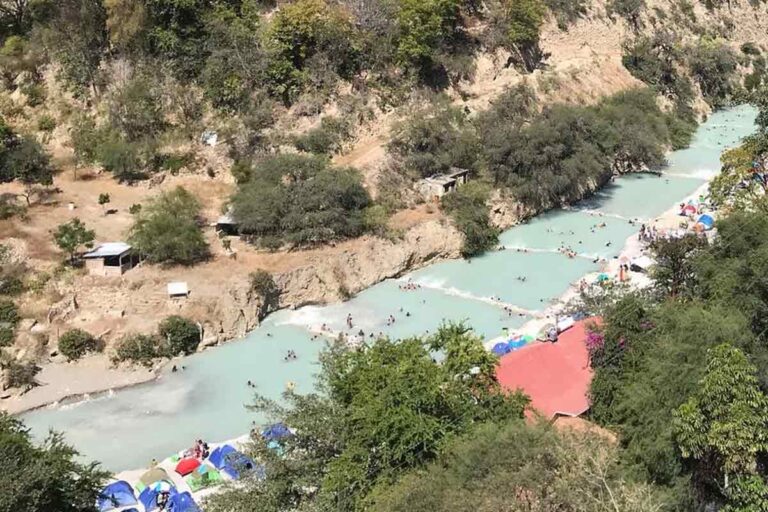
How to get to Tolantongo from Mexico City
An oasis of green rivers and thermally-heated cave pools, Tolantongo is a true off-the-beaten-path paradise. Here we can enjoy this secluded site, whilst taking in the awesome views of the giant canyons that surround it. Whilst in Tolantongo we can also make the most of the surrounding Hidalgo region, which includes getting to know the…
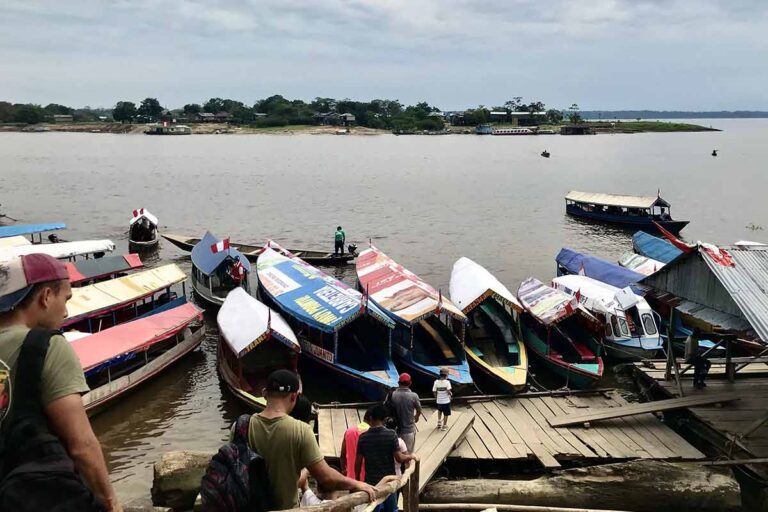
How many days in Iquitos?
When traveling to Peru, how many days in Iquitos do you need? Iquitos really is a special city. The gateway into Peru’s stunning Amazonian Rainforest, it’s the perfect place to explore remote towns and exotic animals. While here in Iquitos you can also discover the lost art of shamanism, a religious practice that still thrives…
Destinations
South america travel itinerary: a comprehensive guide for 1-3 months.
This post may contain affiliate links. We receive a commission on purchases made through links on this page. This is at no additional cost to you & helps support our travels. Read more in our Disclaimer . Thank you!
South America has so much to offer, and even with this South America travel itinerary covering one to three months, you will still only be scratching the surface.
South America is a captivating continent with diverse landscapes, vibrant cultures, and breathtaking natural wonders. From the majestic Andes Mountains to the lush Amazon rainforest, there is no shortage of awe-inspiring destinations to explore. In this travel itinerary, we will guide you through the best places to visit during your one to three-month journey.
We spent nearly six months exploring South America and found more than one new favorite place. We are already planning a trip back to this incredible continent and hope these itineraries will help you plan your next trip, too!
We’ll cover the best South America travel itinerary for one to three months, tips for traveling South America as a couple, transportation in South America, cost of travel in South America, and more!
This post is all about the ideal South America travel itinerary for one, two, or three months of travel.
Planning Your Trip
Before embarking on your South American adventure, it’s essential to do some research and plan accordingly. Consider the best time to visit each country, as weather conditions can vary significantly across the continent. Remember, South America is in the southern hemisphere which means winter falls from June – September, and summer is from December – March, the opposite of the northern hemisphere. We would recommend the spring or fall seasons to avoid crowds and have the best opportunity for mild weather.
Don’t forget to check major holidays that may impact your travel. The majority of South America is Catholic, so the largest celebrations of the year revolve around Carnival and Easter. Travel is often more expensive during these holidays and sells out far in advance.
- Learn more about planning the perfect itinerary for any destination!
Better safe than sorry...
Are you covered for your next trip? Whether you’re planning a quick weekend getaway or a long-term adventure, SafetyWing has you covered. From medical emergencies to lost luggage, they’ll take care of it all. Plus, they even offer emergency response and natural disaster coverage – pretty cool, huh?
South America Packing List
With an itinerary of one to three months, you’ll need to plan for various weather throughout your trip. You never know when a cold front or a massive rainstorm is going to blow through. Be sure to prepare the appropriate attire for each destination, from cities to deserts to beach towns and the jungle.
If you are planning on spending one to three months in South America, check out our complete South America packing list to ensure you don’t forget a thing!
- Shop our full South America Packing List!
South america transportation
When planning a one to three-month trip to South America, you’ll likely be traveling to more than just one destination.
Flights are a convenient way to cover long distances between countries or major cities, allowing you to save time and reach your destinations quickly. Domestic flights within South American countries are often affordable, helping you hop between different regions efficiently.
Although not as extensive as in other continents, trains can offer scenic journeys in certain countries like Peru and Ecuador. Buses are a popular choice for budget travelers (especially in Ecuador and Peru), offering an extensive network that connects cities and towns and is surprisingly comfortable. They are an excellent option for shorter distances, allowing you to immerse yourself in the local culture and enjoy the landscapes along the way.
Additionally, boat trips and cruises can provide unique experiences, especially in the Amazon River or the Galapagos Islands.

South America Trip Cost
Luckily, South America has a wide range of travel options from budget-conscious to mid-range (us!) to the ultimate luxury. Hostels are popular in South America and are a great option for budget travelers. They usually have private rooms (with private bathrooms) for a lower rate than some hotels – a good option for couples! And please, eat the street food! It’s amazingly good and cheap.
Since we traveled to South America for nearly six months, we took the average of one month and broke it down for you below. We spent XX per month for two people, changing cities every 3-7 days. That averages XX per day or XX per day per person. South America is far more affordable than European travel, even during peak season, and more expensive than a similar trip to Southeast Asia.
💰 Average cost per month in South America:
Avg per month:.
$XX for 2 people
Avg per day:
$XX per day for 2 people
Europe > South America > Southeast Asia
South America Travel Itinerary:
Now, let’s delve into the exciting part – the itineraries! We have prepared sample itineraries for different trip durations: one month, two months, and three months. These itineraries include a mix of popular tourist destinations and off-the-beaten-path gems, ensuring a well-rounded and unforgettable experience in South America.
1 Month Itinerary in South America
If you have one month to explore South America, here’s a suggested itinerary that will allow you to experience the highlights of Peru, Ecuador, and Colombia. This one-month itinerary will give you a taste of the diverse landscapes, rich history, and vibrant cultures that South America has to offer.
- Peru – 2 weeks
- Ecuador – 1 week
- Colombia – 1 week
Peru (2 weeks)
Start your journey in Peru, a country known for its rich history and breathtaking landscapes. There are often great deals for flights from the US to Lima . Check out Faredrop to find the best deals without all the work.
Spend your first few days in Lima, the capital city, exploring its vibrant neighborhoods and sampling delicious Peruvian cuisine . From Lima, head south to Cusco, the gateway to Machu Picchu. Immerse yourself in the ancient Incan culture as you visit the Sacred Valley and hike the famous Inca Trail , or enjoy the scenic train ride to reach the awe-inspiring Machu Picchu . Be sure to spend some time acclimating to the altitude in Cusco before visiting Machu Picchu.
After exploring Cusco and Machu Picchu, venture into the Amazon rainforest for a unique wildlife experience through the town of Iquitos. Take a boat ride along the Amazon River, hike through the dense jungle, and spot exotic wildlife such as monkeys, colorful birds, and elusive jaguars.
- Lima – 4 nights
- Cusco – 5 nights
- Machu Picchu – 2 nights
- Iquitos – 3 nights
Top Activities in Peru
Ecuador (1 week).
Next, fly to Ecuador, a country known for its incredible biodiversity and stunning landscapes. Start your Ecuadorian adventure in Quito , the capital city nestled high in the Andes Mountains. Explore the historic center a UNESCO World Heritage site, and take in panoramic views of the city from the TelefériQo cable car. Don’t forget to check off “straddle the equator” from your bucket list!
From Quito, head to the iconic Galapagos Islands , where you can snorkel with sea turtles, spot unique wildlife like marine iguanas and blue-footed boobies and witness the ongoing process of evolution in action.
- Quito – 2 nights
- Galapagos Islands – 5 nights
Top Activities in Ecuador
Colombia (1 week).
Finish your South American adventure in Colombia , a country known for its vibrant culture, stunning Caribbean beaches, and colorful cities. Start in Medellín and explore this town, once fraught with violence, now transformed into a vibrant, colorful neighborhood .
End your journey in Cartagena, a UNESCO World Heritage site and one of the most beautiful colonial cities in the Americas. Explore its charming streets, visit the imposing Castillo San Felipe de Barajas, and relax on the white sandy beaches of the nearby Rosario Islands .
- Medellín – 3 nights
- Cartagena – 4 nights
- Dive into our full Colombia itinerary!
Top Activities in Colombia
2 month itinerary in south america.
If you have two months to explore South America , you can embark on an incredible journey through diverse and captivating destinations. We’ll be building off our first itinerary for one month in South America by adding a week to Colombia so you can dive even deeper into the local culture and we’ll add two weeks in a new country, Brazil!
This two-month itinerary will allow you to experience the highlights of Peru, Ecuador, Colombia, and Brazil, offering a diverse range of landscapes, cultures, and experiences.
- Colombia – 2 weeks
- Brazil – 2 weeks
Colombia (1 more week - 2 weeks)
Since you’ll be traveling longer, I recommend slowing down your travel and adding a few more off-the-beaten-path stops to Colombia. From Medellín, you can rent a car (be sure to get an automatic, the hills are crazy!), and drive to both Guatapé and Jardín. In Guatapé, you can try street empanadas , see the most colorful homes, and climb an enormous rock . One of our favorite towns ever is Jardín. You can walk the whole town, enjoy the lively evening atmosphere in the square, and prop up your chair to sip on Colombian coffee or some magical chai tea.
- Bogotá – 3 nights
- Guatapé – 2 nights
- Jardín – 2 nights
- Cartagena – 5 nights
want a free Notion itinerary template?
Plan the perfect trip all in one place with this free Notion Travel Itinerary Template. Just enter your info below to join our weekly newsletter and get it sent straight to your inbox!
+ Brazil (2 weeks)
Wrap up your two-month adventure in Brazil, a country of immense natural beauty and vibrant energy. Spend two weeks exploring the iconic city of Rio de Janeiro, relaxing on the stunning beaches of Florianópolis, and experiencing the power of Iguazu Falls. Rio is spectacular; be sure to enjoy the beach at Copacabana, see another World Wonder – Christ the Redeemer , and take the cable car to the top of Sugarloaf Mountain .
- Rio de Janeiro – 5 nights
- Florianópolis – 6 nights
- Iguazu Falls – 3 nights
Top Activities in Brazil
3 month itinerary in south america.
If you have three months to explore South America, there is a ton you can see. You’ll want to add a few weeks to countries you are already visiting on your one or two-month itineraries to dive into the culture. And we’ll add a few more countries with even more diverse foods, sights, and people.
This three-month itinerary will allow you to experience the highlights of Peru, Ecuador, Colombia, Brazil, Argentina, and Chile, offering a diverse range of landscapes, cultures, and experiences.
- Peru – 3 weeks
- Argentina – 3 weeks
- Chile – 1 week
Peru (1 more week - 3 weeks)
Start your adventure in Peru, but this time we’ll add another week so you have time to explore Huacachina and Arequipa. Peru is such a diverse country and with this three-week itinerary, you’ll get the big city of Lima, the mountains in Cusco, the unforgettable Machu Picchu , a desert oasis in Huacachina , the colonial town of Arequipa, and the Amazon jungle from Iquitos.
- Lima – 5 nights
- Huacachina – 2 nights
- Arequipa – 4 nights
+ Argentina (3 weeks)
In Argentina, spend a week exploring the vibrant streets of Buenos Aires, known for its tango culture and historic architecture. You’ll also get to head out to the grasslands and enjoy a wellness retreat in cowboy country in San Antonio de Areco , just outside of Buenos Aires. Enjoy some southern hemisphere beach time in Cariló and then take a week to explore the magic of Patagonia .
- Buenos Aires – 7 nights
- San Antonio de Areco – 3 nights
- Cariló – 4 nights
- Patagonia – 7 nights
Top Activities in Argentina
+ chile (1 week).
Somehow, your three months in South America are almost up and last up we have one last country, Chile. This country has so much to offer but after three months of traveling around the continent, we recommend taking your last week to soak up all the magic of the vibrant city of Santiago .
- Santiago – 7 nights
Top Activities in Chile
This post was all about our recommended itineraries for one to three months on a south america travel itinerary. remember, this is just an outline to give you a general structure for the blog post. feel free to add or modify sections as needed to create a comprehensive travel itinerary for south america., while you're here....
You can get great deals by booking through our links! We share our favorite ways to book our travels and we earn a small fee each time you make a purchase. This is at no extra cost to you and helps keep us on the road!
Book your next hotel stay
Find great tours, car rentals for a road trip, don't forget travel insurance, protect yourself online, get visas for most countries, more posts to check out.
15 Perfect Small Gifts for Travelers
Cost of Travel in Portugal
This is How We Afford to Travel the World Full-Time
- Date: December 20, 2023
Related topics:
Want a free long term packing list.
Know exactly what to bring on your long term travel adventure with this FREE Long Term Travel Packing List . Just enter your info below to join our weekly newsletter and get it sent straight to your inbox!
We’re Alicia & Nate, a couple that traveled full-time for 3 years straight. We are now living in a cozy little apartment in Albania. We have a passion for exploring new places and trying new foods.
free travel templates
Shop More templates!
ADVERTISEMENT
sign up for
Our Newsletter
Don't go now..., get 33% off.
By signing up for our weekly newsletter, you’ll receive a 33% off coupon that you can use towards your next purchase + tons of tips on travel!
Our site uses cookies. If you continue, you agree and accept the use of cookies. To find out more, read our Privacy Policy .

Gap Year World
Cost of Travel in South America

South America is an amazing continent to explore. There are incredible places to visit and lots of amazing activities to do. But how expensive is it to go backpacking in South America?
We have put together a very, very, rough guide, but should help you construct that all important ball park figure when saving for your trip. All prices were, to the very best of our knowledge, were correct at the time of publishing.
Remember, there are so many variables, including where you go, how long you are staying for, how much comfort you prefer, what you want to do, if you want to go independently, or take a gap year trip and, how much you can party. The general rule for travelling is – the more money you can take, the better!
South America Budget for 3 Months
What can you Expect to get in South America for your Money?
Ok, so we’ve chosen an amount of time, let’s break it down. For the purposes of this post we’re dividing the time up as follows: 5 weeks in Brazil, 3 weeks in Argentina, 2 weeks in Bolivia and 2 weeks in Peru.
Average Cost of Accommodation in Brazil
The average cost of rooms in Brazil is around £12 per night (Rio and Sao Paulo bump the price up) so for 5 weeks will average out at approx £420.
Average Cost of Food in Brazil
• Meal on the go: £4 • Sit down 3 course meal for two people: £20 • McDonalds meal: £4.50 • 500ml bottle water: £0.40 • Bottle of Coke: £0.70 • Local beer: £1.10
So, if you based your budget on eating three ‘meals on the go’ a day, as well as a couple of bottles of coke and a couple of beers that would cost you around £16 a day on food, which would total around £546 for 5 weeks in Brazil.
If you did want to push the boat out and swap a ‘meal on the go’ for a sit down meal say, 3 times a week, and add an extra couple of beers to your treat too, you can expect to add around an extra £123 to your total making it £669 for 5 weeks.
A Few Activities in Brazil
My choice of the must do activities in Brazil include:
• Rio to Ilha Grande fr £183 for 4 days • Rio Favela tour fr £22 • Take a Christ the Redeemer tour and watch the sunset at Sugarloaf Mountain fr £36
Bringing your total for 5 weeks in Brazil to: £1,171 (with the cost of 3 hostel nights taken off your total as accommodation is included in the Ilha Grande tour).
Average Cost of Accommodation in Argentina
Argentina is one of the more expensive, if not the most expensive, country to visit in South America. You can expect to pay, on average, £14 for a night in a hostel but expect this to rise if you visit the larger cities and decrease slightly as you get off the beaten track.
Taking his average, 3 weeks in Argentina would cost around £294 for hostels.
Average Cost of Food in Argentina
• Meal on the go: £6 • Sit down 3 course meal for two people: £22 • McDonalds meal: £5 • 500ml bottle of water: £0.90 • Bottle of Coke: £1.10 • Local beer: £1.20
Again if you based your budget on eating three ‘meals on the go’ a day, 2 bottles of coke and 2 beers that would cost you around £23 a day on food, which would total around £475 for 3 weeks in Argentina.
Stretch your budget even further and swap a ‘meal on the go’ for a sit down meal 3 times a week, and add an extra 2 beers and you can expect to add around an extra £57 to your total making it £532 for 3 weeks.
A Few Activities in Argentina
My choice of the must do activities in Argentina include:
• Tango show with dinner fr £53 • Visit the vineyards of Mendoza fr £90 for 3 days • Visit the end of the world Patagonia fr £191 for 5 days
Bringing your total for 3 weeks in Argentina to: £1,005 (with the cost of 7 hostel nights taken off your total as accommodation is included in the tours).
Average Cost of Accommodation in Peru Cuzco is the most expensive place to stay in Peru, closely followed by Lima. £10 a night is a realistic average price for accommodation here, meaning for a 2 week visit you’d be looking at around £140.
Average Cost of Food in Peru
• Meal on the go: £2 • Sit down 3 course meal for 2 people: £13 • McDonalds meal: £3 • Bottle of 500ml water: £0.30 • Bottle of Coke: £0.45 • Local beer: £1
If you’re looking to stick to basic meals then 3 ‘meals on the go’ a day, plus 2 bottles of coke and 2 beers would cost you somewhere in the region of £9, meaning you would spend around £126 for 2 weeks in Peru.
If you want to treat your self a little more, then swap a ‘meal on the go’ for a sit down meal 3 times a week, add an extra 2 beers and you’ll add around an extra £45 to your total making it £169.60 for 2 weeks in Peru.
A Few Activities in Peru
My choice of the must do activities on a gap year in Peru include:
• Visit Lake Titicaca 1 day homestay fr £45 • Inca Trail fr £599 for 7 days • Colca Canyon fr £123 for 3 days
Bringing your total for 2 weeks in Peru to: £952 (with the cost of 9 hostel nights taken off your total as accommodation is included in the tours).
Average Cost of Accommodation in Bolivia Bolivia is one of the cheapest countries to visit in South America. Capital La Paz is the most expensive place to stay as you would expect, but if you head out of the city, the price of hostels drops considerably a good ball park figure for a night in a hostel in Bolivia is £8 per night.
So, 2 weeks at an average of £8 a night will cost you £112.
Average Cost of Food in Bolivia
• Meal on the go: £1.30 • Sit down 3 course meal for 2 people: £8 • McDonalds meal: £3 • Bottle of 500ml water: £0.55 • Bottle of Coke: £0.55 • Local beer: £1
Here we go again, three ‘meals on the go’ a day, 2 bottles of coke and 2 beers would cost you approximately £7, meaning you would spend around £98 for 2 weeks in Bolivia.
Splash out a little more and swap a ‘meal on the go’ for a sit down meal 3 times a week, add 2 extra beers and you’ll add around an extra £28.20 to your total making it £126.20 for 2 weeks in Bolivia.
A Few Activities in Bolivia
My choice of the must do activities in Bolivia include:
• Visit the Salt Flats fr £173 for 3 days • Cycle the ‘Death Road’ fr £86
Bringing your total for 2 weeks in Bolivia to: £453 (with the cost of 2 hostel nights taken off your total as accommodation is included in the tour).
If you’re looking to live the dream in South America make sure you book flights in-advance and also search the huge selection of adventure tours – most of which include transport, accommodation and activities making budgeting super easy!
Need more inspiration? Head over to our South America gap year guide and take a look at our tours.
Share this:
- Click to share on Facebook (Opens in new window)
- Click to share on Twitter (Opens in new window)
- Click to share on Pinterest (Opens in new window)
- Click to share on Tumblr (Opens in new window)
- Click to share on Reddit (Opens in new window)
- Click to share on LinkedIn (Opens in new window)
- Click to share on Pocket (Opens in new window)
- Click to share on WhatsApp (Opens in new window)
Leave a Reply Cancel reply
Your email address will not be published. Required fields are marked *
Save my name, email, and website in this browser for the next time I comment.
- Travel Planning Guide
The Prices of Tours to South America

- Package Tour Options
- Typical Tour Costs
- The Best Tours
- Budget Tours
- Luxury Tours
- Three-Day Tours
- Other Types of Tours
Are group tours to South America worth it?
Is a group tour cheaper than solo travel to south america.
- Group Tours vs. Indepenent Travel in South America
How far in advance should I book my tour to South America?
How many people are in group tours to south america, how much time do i need for a group tour to south america.

Recommended
Peru tailored (nazca lines, inca trail, machu picchu…, what are the package tour options in south america.
Curious about the diverse range of tours? Prepare to be amazed by the array of options available to suit every traveler's preferences. It comes as no surprise that visitors adore these tours, given their exceptional average guest rating of 4.58 out of 5 stars. When it comes to group sizes, the average maximum capacity stands at 24 people, allowing for a comfortable and sociable experience. The shortest tour is 2 days, while the longest is 147 days. As for physical activity options, the tours are thoughtfully categorized as easy, moderate, serious, relaxing, and heart-pumping, with the most being easy. For transportation , the tours are marked as ocean cruise, coach / bus, self drive, and train & rail, with a prevalent number on ocean cruise tours. When it comes to travel styles , tour options are organized as family, honeymoon, and romantic, with a majority being family tours. With a comprehensive analysis encompassing 2,651 tours, you can rest assured that South America has something tailored to your interests and preferences, promising an unforgettable experience for all.
- The length of tours range from 2 to 147 days.
- The maximum group size of tours range from 1 to 999 people.
The tour packages are also categorized as follows:
- Easy (1101)
- Moderate (719)
- Serious (168)
- Relaxing (67)
- Heart-pumping (54)
- Ocean Cruise (152)
- Coach / Bus (41)
- Self Drive (8)
- Train & Rail (6)
- Family (1729)
- Honeymoon (5)
- Romantic (1)
- Tours Available 2651
- Average Rating 4.58
- Average Group Size 24
- See More See Tours in South America
How much do organized tour packages to South America cost? Are tours expensive?
Considering the list of all available tours, you'll easily find a range of fantastic choices to suit your travel preferences. Considering the financial aspect, the average daily price for tours in South America stands at a very reasonable $295 per day . Taking a broader perspective, the overall average cost of all tours amounts to $3,028 , derived from meticulous data analysis of 2,651 captivating tours. It's worth noting that the lowest-priced tour starts at an enticing $22, while the most extravagant option reaches a remarkable $65,190.
- Tours to South America range in price from $22 to $65,190, based on data from 2651 tours.
How much should I pay for a tour through South America?
This table shows the range of guided, organized, and all-inclusive tour prices that visit, start in, or end in South America. If you're trying to figure out how much you should pay for an organized tour, this table breaks down the costs by price range.
(All tour prices are in US Dollars before taxes, and come from a base price that is reported by TourRadar. Peak season prices can vary significantly, particularly in destinations where seasonal travel fluctuates dramatically. Price costs can also vary by group size, amenities offered, transportation type, promotional sale prices, and addons not inlcuded in the base prices.)
Prices for the Best Tours to South America
What are South America's top rated tour packages? And how much do they cost? These tours are the highest rated tours by previous guests.
When looking at the highest rated tours, which are the top 25% of the total by guest ratings, a wide range of terrific options in South America are offered. Based on data from 663 tours, the average daily price for the highest-rated tours to South America is a very reasonable $257 per day , and the overall average total price is $2,431 . The cheapest tour is $22, and the most expensive tour is $18,199. Also, previous customers have mostly enjoyed these tours because the average guest rating is 4.87 out of 5 stars. If you're looking for a the highest-rated tour to South America, these are some terrific options.
What are the best tours to South America?
These are the highest rated tours from previous customers.
Peru Tailored (Nazca Lines, Inca Trail, Machu Picchu and Tambopata)…
Ecuador big five 18 days tour, monserrat galapagos cruise - central, west, east & south islands…, complete galápagos - eden, prices for the best budget tours to south america.
By only looking at the budget category of tours, in South America you'll discover plenty of fantastic budget options. Get ready to be pleasantly surprised, as the average daily price in this category is an affordable $170 per day . Furthermore, the overall average cost of all tours stands at a reasonable $1,466 , based on data from 633 available tour options. Now, for the overall price range: the cheapest tour available comes in at a pocket-friendly $23, while the most luxurious option reaches a maximum of $11,001. What's more, visitors can rest assured that these tours are well liked, as they boast an impressive average guest rating of 4.39 out of 5 stars. So, get ready to explore South America and embark on an unforgettable journey that will make the memories of a lifetime.
What are the best budget tours to South America?
Discover ecuador tour 17 days, ecuador andean jewels 10 days tour, peru highlights - 8 days with local flights (lima to…, prices for the best luxury tours to south america.
When looking at luxury tours in the comfort category, visitors will find a wide range of terrific options when choosing a tour to South America. The average daily price for luxury tours to South America is a very reasonable $308 per day , with the overall average cost of all tours being $3,115 (based on data from 1,538 tours). The cheapest tour is $22, and the most expensive tour is $57,790. Also, visitors tend to love all of these tours because the average guest rating is 4.63 out of 5 stars.
What are the best luxury tours to South America?
The richness of southern peru, iconic peru national geographic journeys, prices for the best 3-days or less tours to south america.
When looking at the 3-days or less tours, which are often great for a weekend or short trip, in South America you'll discover plenty of fantastic 3-day options. Get ready to be pleasantly surprised, as the average daily price in this category is an affordable $188 per day . Furthermore, the overall average cost of all tours stands at a reasonable $449 , based on data from 315 available tour options. Now, for the overall price range: the cheapest tour available comes in at a pocket-friendly $22, while the most luxurious option reaches a maximum of $1,940. What's more, visitors can rest assured that these tours are well liked, as they boast an impressive average guest rating of 4.34 out of 5 stars. So, get ready to explore South America and embark on an unforgettable journey that will make the memories of a lifetime.
What are the best 3-days or shorter tours to South America?
By flight from la paz: visit uyuni salt flats 4days…, machu picchu by car 2 days - economic from cusco, machupicchu and sacred vally 2 days / 1 night, cusco city tour, sacred valley & machu picchu - 3…, prices for family tours to south america.
For just this category, South America has you covered with an array of fantastic options. You'll be thrilled to know that the average daily price for family tours is a very economical $274 per day . Looking at the bigger picture, the overall average cost of all tours comes in at a reasonable $2,597 , based on data from 1,729 incredible options. The cheapest tour available is a great deal at just $22, while the most lavish option reaches up to $34,224. Rest assured, these tours have captured the hearts of visitors, as they boast an impressive average guest rating of 4.59 out of 5 stars. So, get ready to explore South America and its amazing destination, and prepare for an unforgettable journey filled with awe-inspiring experiences.
What are the best family tours to South America?
Prices for active adventure tours to south america.
When analyzing this category of tours, South America has you covered with an array of fantastic options. You'll be thrilled to know that the average daily price for active adventure tours is a very economical $256 per day . Looking at the bigger picture, the overall average cost of all tours comes in at a reasonable $2,562 , based on data from 740 incredible options. The cheapest tour available is a great deal at just $48, while the most lavish option reaches up to $12,546. Rest assured, these tours have captured the hearts of visitors, as they boast an impressive average guest rating of 4.58 out of 5 stars. So, get ready to explore South America and its amazing destination, and prepare for an unforgettable journey filled with awe-inspiring experiences.
What are the best active adventure tours to South America?
Prices for in-depth cultural tours to south america.
Considering these specific tours, a wide range of terrific options in South America are offered. Based on data from 669 tours, the average daily price for in-depth cultural tours to South America is a very reasonable $236 per day , and the overall average total price is $2,081 . The cheapest tour is $22, and the most expensive tour is $15,395. Also, previous customers have mostly enjoyed these tours because the average guest rating is 4.6 out of 5 stars. If you're looking for a in-depth cultural tour to South America, these are some terrific options.
What are the best in-depth cultural tours to South America?
Prices for hiking & trekking tours to south america.
When we look at this type of tour, visitors will find a wide range of terrific options when choosing a tour to South America. The average daily price for hiking & trekking tours to South America is a very reasonable $243 per day , with the overall average cost of all tours being $1,964 (based on data from 432 tours). The cheapest tour is $35, and the most expensive tour is $9,999. Also, visitors tend to love all of these tours because the average guest rating is 4.66 out of 5 stars.
What are the best hiking & trekking tours to South America?
Extended sacred valley + classic inca trail to machu picchu…, prices for historical tours to south america.
For this specific type of tour, South America has you covered with an array of fantastic options. You'll be thrilled to know that the average daily price for historical tours is a very economical $269 per day . Looking at the bigger picture, the overall average cost of all tours comes in at a reasonable $2,951 , based on data from 376 incredible options. The cheapest tour available is a great deal at just $80, while the most lavish option reaches up to $40,435. Rest assured, these tours have captured the hearts of visitors, as they boast an impressive average guest rating of 4.49 out of 5 stars. So, get ready to explore South America and its amazing destination, and prepare for an unforgettable journey filled with awe-inspiring experiences.
What are the best historical tours to South America?
Prices for wildlife tours to south america.
For these tours, in South America you'll discover plenty of fantastic wildlife options. Get ready to be pleasantly surprised, as the average daily price in this category is an affordable $417 per day . Furthermore, the overall average cost of all tours stands at a reasonable $4,202 , based on data from 349 available tour options. Now, for the overall price range: the cheapest tour available comes in at a pocket-friendly $50, while the most luxurious option reaches a maximum of $12,896. What's more, visitors can rest assured that these tours are well liked, as they boast an impressive average guest rating of 4.5 out of 5 stars. So, get ready to explore South America and embark on an unforgettable journey that will make the memories of a lifetime.
What are the best wildlife tours to South America?
Prices for sightseeing tours to south america.
Looking at this type of tour, a wide range of terrific options in South America are offered. Based on data from 228 tours, the average daily price for sightseeing tours to South America is a very reasonable $228 per day , and the overall average total price is $2,065 . The cheapest tour is $66, and the most expensive tour is $16,610. Also, previous customers have mostly enjoyed these tours because the average guest rating is 4.64 out of 5 stars. If you're looking for a sightseeing tour to South America, these are some terrific options.
What are the best sightseeing tours to South America?
Ecuador classic 8 days tour, 8 days full south peru :. lima – arequipa –…, prices for ocean cruise tours to south america.
Considering these specific tours, South America has you covered with an array of fantastic options. You'll be thrilled to know that the average daily price for ocean cruise tours is a very economical $750 per day . Looking at the bigger picture, the overall average cost of all tours comes in at a reasonable $12,065 , based on data from 152 incredible options. The cheapest tour available is a great deal at just $1,015, while the most lavish option reaches up to $65,190. Rest assured, these tours have captured the hearts of visitors, as they boast an impressive average guest rating of 4.74 out of 5 stars. So, get ready to explore South America and its amazing destination, and prepare for an unforgettable journey filled with awe-inspiring experiences.
What are the best ocean cruise tours to South America?
Prices for mountain hikes tours to south america.
For this specific type of tour, the array of tour options available in South America is diverse. The average daily price for mountain hikes tours stands at a very reasonable $249 per day . Drawing from an extensive analysis of 108 tours, we've determined that the overall average cost of all tours is a modest $2,179 . It's worth noting that among these options, the cheapest tour can be enjoyed for as little as $40 per person, while those looking to splurge a bit more can opt for the most expensive tour at $8,965. The popularity of these tours speaks volumes, with an average guest rating of 4.67 out of 5 stars, showcasing the satisfaction and appreciation expressed by previous customers.
What are the best mountain hikes tours to South America?
Classic inca trail to machu picchu - 4 days and…, prices for attraction-based hikes tours to south america.
For these tours, a wide range of terrific options in South America are offered. Based on data from 69 tours, the average daily price for attraction-based hikes tours to South America is a very reasonable $243 per day , and the overall average total price is $2,522 . The cheapest tour is $84, and the most expensive tour is $13,049. Also, previous customers have mostly enjoyed these tours because the average guest rating is 4.77 out of 5 stars. If you're looking for a attraction-based hikes tour to South America, these are some terrific options.
What are the best attraction-based hikes tours to South America?
04 day classic inca trail to machu picchu - small…, peru: salkantay trek, machu picchu and lake titicaca, prices for active tours to south america.
Looking at this type of tour, South America has you covered with an array of fantastic options. You'll be thrilled to know that the average daily price for active tours is a very economical $324 per day . Looking at the bigger picture, the overall average cost of all tours comes in at a reasonable $2,559 , based on data from 62 incredible options. The cheapest tour available is a great deal at just $450, while the most lavish option reaches up to $9,082. Rest assured, these tours have captured the hearts of visitors, as they boast an impressive average guest rating of 4.91 out of 5 stars. So, get ready to explore South America and its amazing destination, and prepare for an unforgettable journey filled with awe-inspiring experiences.
What are the best active tours to South America?
Private the best of ecuador, ecuador hacienda hopping, prices for antarctica tours to south america.
For just this category, in South America you'll discover plenty of fantastic antarctica options. Get ready to be pleasantly surprised, as the average daily price in this category is an affordable $1,010 per day . Furthermore, the overall average cost of all tours stands at a reasonable $19,407 , based on data from 60 available tour options. Now, for the overall price range: the cheapest tour available comes in at a pocket-friendly $5,545, while the most luxurious option reaches a maximum of $65,190. What's more, visitors can rest assured that these tours are well liked, as they boast an impressive average guest rating of 4.76 out of 5 stars. So, get ready to explore South America and embark on an unforgettable journey that will make the memories of a lifetime.
What are the best antarctica tours to South America?
Antarctic explorer via buenos aires, operated by quark, classic antarctica - 10 days, prices for sailing tours to south america.
Considering these specific tours, the array of tour options available in South America is diverse. The average daily price for sailing tours stands at a very reasonable $830 per day . Drawing from an extensive analysis of 59 tours, we've determined that the overall average cost of all tours is a modest $7,016 . It's worth noting that among these options, the cheapest tour can be enjoyed for as little as $395 per person, while those looking to splurge a bit more can opt for the most expensive tour at $21,390. The popularity of these tours speaks volumes, with an average guest rating of 4.61 out of 5 stars, showcasing the satisfaction and appreciation expressed by previous customers.
What are the best sailing tours to South America?
Galápagos – central and east islands aboard the reina silvia…, galapagos encounter: southern islands (grand queen beatriz).
Crafting an independent journey in South America is an option, yet the region's unique planning challenges and intricate transportation options often mean that booking a tour is a more convenient choice. Given these considerations, many travelers find that booking a tour is a better choice. Entrusting travel professionals to manage transportation, lodgings, activities, and meals ensures a relaxing and enjoyable experience, allowing you to embrace the trip fully.
You can find many situations where tours in South America are more cost-effective compared to an independently planned trip. The affordability of a tour depends on factors such as the destinations covered, level of luxury, and duration. Each tour and independent trip is unique, but tour providers often offer competitive prices that match the luxury level of an independent trip with the same amenities. On average, a tour in South America costs $295 per day, with many tours priced below this average, although some are higher. Prices for tours in South America range from $22 to $65,190. When comparing costs with independent travel, it's important to consider that guided tours typically include accommodations, transportation, guides, meals, tickets, and even more. To accurately compare prices, it is essential to understand the inclusions of a tour package and thoroughly research the costs of independent travel in South America.
Group Tours vs. Independent Travel in South America
Choosing between an organized tour package and independent travel can be a challenging decision for many travelers. However, when planning to travel in South America in 2024 or 2025, it is worth considering the array of enticing deals and sales available in organized tour packages. These comprehensive packages offer excellent value for money, encompassing accommodations, transportation, entry tickets, food, and other essential travel requirements. Furthermore, with guided tours, you benefit from the expertise of knowledgeable guides who provide valuable insights and eliminate the need for meticulous trip planning. On the other hand, independent travel offers greater flexibility and control over your travel plans, enabling you to adjust your schedule and budget according to your preferences. It also provides the opportunity to immerse yourself in local cultures and explore hidden gems that are often excluded from tour packages.
What are the benefits of a package tour to South America?
Traveling with a tour provides a multitude of advantages. One of the most significant benefits is the convenience of having all the details sorted out for you. From arranging transportation to securing accommodations and planning activities, everything is taken care of, allowing you to have a worry-free experience. This means you won't have to stress about finding suitable places to stay, figuring out logistics, or potentially missing out on any important sights. Additionally, most tours offer all-inclusive pricing, giving you a clear understanding of the total cost of your trip before you depart. The beneifits of a tour are
- knowledgeable guides
- comfortable amenities
- not having to plan
- reliable service and schedule
- fixed budget
- meeting other like-minded travelers
- eliminating risks
What are the benefits of independent travel in South America?
Independent travel provides freedom, control, and flexibility that that many travelers love. By traveling on your own, you have the freedom to choose your accommodation, visit the attractions that interest you, eat at your preferred times, and explore the destination at your own pace. This level of independence also allows you to have more control over your budget, schedule, itinerary, and the level of comfort you desire during your travels. Benefits also include:
- flexible budget
- flexible schedules
- in-depth cultural opportunities
- off-the-beaten-path destinations
When planning your tour to South America, it is highly recommended to make your booking well in advance, preferably several months or more ahead. While some individuals secure their tours up to a year in advance, our experience suggests that reserving your spot around 6 to 9 months before the departure date is far enough. It is important to note that many tours tend to fill up quickly, and early booking ensures your place on the trip. Moreover, booking early often comes with the benefit of significant cost savings, as tour companies frequently offer early booking sales and discounted prices. On the other hand, it is worth considering that tour companies may occasionally offer last-minute discounts for tours that have not reached full capacity. However, waiting for such discounts poses the risk of not securing a spot on a fully booked tour.
When it comes to tours in South America, the size of the group can vary significantly, accommodating anywhere from 1 to 999 travelers. On average, a tour consists of 24 participants. It's important to remember that the quality and price of a tour are not solely determined by its group size.
When considering a tour to South America, it is recommended to allocate around 9 days, which is the average duration of organized tour packages. Tours in South America can last anywhere from 2 to 147 days, or sometimes longer. Although longer tours may be more expensive initially, their cost per day tends to decrease. Moreover, longer tours allow for a more extensive exploration of various destinations, making them a better overall value.
Where do group tours go in South America?
In South America, you can find a wide range of tours that explore various destinations in the region. These tours often include popular stops such as Cusco, Machu Picchu, Lima, Aguas Calientes, Buenos Aires, Ollantaytambo, Sacred Valley, and Quito, allowing you to experience the diversity and richness of the area.
What tour and travel companies offer packages to South America?
Plenty of companies are offering package tours to and around South America, but not all of them are the same. Some of the companies are large international operators that have solid reputations. Other companies are smaller and offer more unique and locally-based insights into the region. With larger companies, tours are rarely cancelled and customer service is generally high. With smaller companies, you're more likely to have a trip that gives you more local and personable experiences.
The companies offering the most tours in South America are Receptivo Aborigen Tours , Bamba Travel , G Adventures , Ecuador Galapagos Travels , and Intrepid Travel . All of them tend to offer quality trips with high guest ratings.
What is the best tour company offering trips to South America?
When it comes to tours in South America, Vidal Expeditions takes the top spot with their highly-rated tour packages. Their dedication to quality service and captivating journeys has won them plenty of accolades from previous guests.
More Information
See also The Best Family-Friendly Tours to South America , The Best Wildlife Tours to South America , The Best Hiking & Trekking Tours in South America , The Best Historical Tours in South America , The Best 10-Day Tours in South America , The Best One Week (7-Day) Tours in South America , The Best 3-Day Tours in South America , The Best 2-Week Tours in South America , The Best 3-Week Tours in South America , The Best 4-Week (1-Month) Tours in South America , The Best Extended Trip Tours in South America, One Month or Longer , The Best Bicycle Tours in South America , Tours for Outdoor and Nature Lovers in South America , The Best Christmas & New Years Tours in South America , The Best Coach Bus Tours in South America , The Best Adventure Tours to South America , The Best Eco Tours in South America , The Best Thrill-Seeking Tours in South America , The Best Cruise Tours and Packages in South America , The Best Sightseeing Tours in South America , The Best Cultural Tours in South America , The Best Vineyard & Wine Tours in South America , The Best Food and Culinary Tours in South America , The Best Music Tours in South America , The Tours for Animal Lovers in South America , The Best Photography Tours in South America , The Best Camping Tours in South America , The Best Romantic Tours for Couples in South America , The Best Self Drive Tours in South America , The Best Nightlife Tours in South America , The Best Walking Tours in South America , The Best Honeymoon Tours in South America , The Best Jungle Trekking Tours in South America , The Best Tours Under $1000 in South America , The Best Luxury Tours to South America , The Best Budget Tours to South America , The Best Tours for Seniors to South America , The Best Contiki Tours to South America , or The Best G Adventures Tours to South America for more tour ideas. With so many options, there's a guided tour or vacation package for every type of traveler.
Subscribe to our Newsletter
By signing up for our email newsletter, you will receive occasional updates from us with sales and discounts from major travel companies , plus tips and advice from experienced budget travelers!
Budget Your Trip

Some of the links on this website are sponsored or affiliate links which help to financially support this site. By clicking the link and making a purchase, we may receive a small commission, but this does not affect the price of your purchase.
- Privacy / Terms of Use
- Activities, Day Trips, Things To Do, and Excursions
6-Week South America Backpacking Itinerary
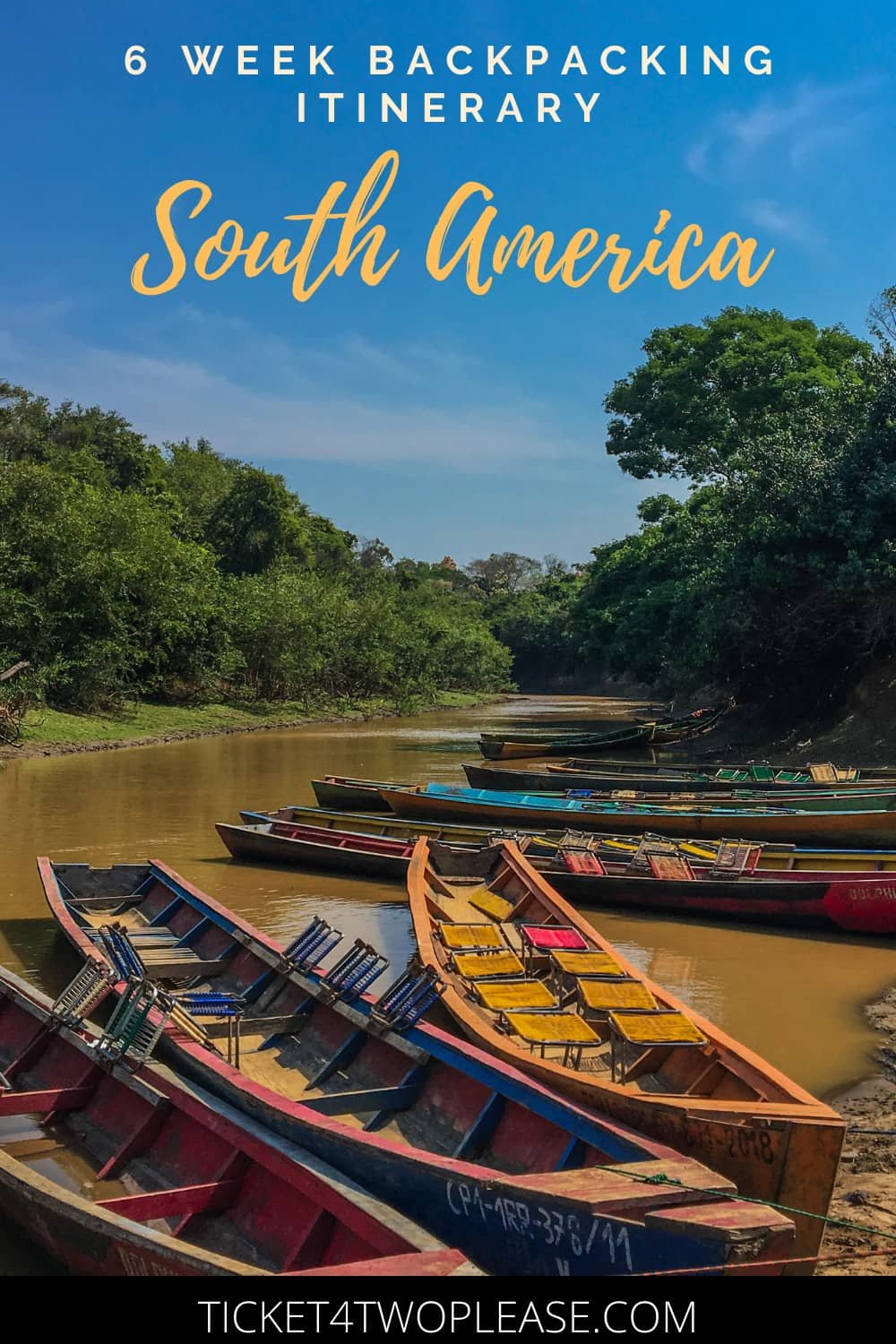
Are you yearning for a South American adventure but don’t know where to go, what to do, what to see?
A South American backpacking excursion is precisely what you need.
This article outlines a comprehensive 6-week South America Backpacking Itinerary, with optional add-ons for endless weeks of exploration.
In our guide, we go through the best things to do in South America, highlight the best places to visit, and ensure you know how to make the most out of your Backpacking trip through this most fascinating of continents.
We start by taking you overland through Colombia, a much-maligned, misunderstood country, before snaking South through the mountains of Peru. A whistle-stop tour of Bolivia follows before we finally head East towards the carnival-clad beaches of Rio De Janeiro, Brazil.
Note: This is a 6-week itinerary that covers 4 countries in South America. You can quickly adapt the itinerary to cater for any length of backpacking. The general rule with any travel experience is that the slower you take it, the better.
Disclaimer - this blog post contains affiliate links where we can earn a commission if you make a purchase through them (at no extra cost to you).
Useful Travel Resources For Planning Your South America Trip
- 🏠 Book your perfect stay on Booking.com
- 🛏️ Find a hostel with Hostelworld
- 🎡 Discover more in South America with Viator
- 📲 Buy a handy South America eSIM that covers all countries
- ✈️ Buy cheap flight tickets to South America on WayAway
6-weeks in South America
Cartagena (2-5 Days)
Medellin (3-5 Days)
Bogota (1-2 days).
Lima (1-3 Days)
Ica (2-3 Days)
Arequipa (2-3 Days)
Cusco (7-10 days).
La Paz (3-7 Days)
Uyuni (2-3 Days)
Rurrenabaque (2-4 days), foz do iguacu (2-3 days), rio de janeiro (3-7 days).

Colombia is not the country that our parents grew up knowing. Gone are the days when Medellin was, statistically, the most dangerous city in the world.
Colombia has gone through a transformation in the last few decades, and tourism dollars are contributing to this process.
Modern-day Colombia is one of the most vibrant destinations in South America. From the tropical beaches in the North to the vast rainforests in the East, Colombia is a haven for backpackers looking to get off-the-beaten-track and discover true Latin America. Colombia’s epic hiking trails also offer the chance to explore some of the country’s incredibly diverse landscapes.
That’s why we start our 6-week South America round-up in Colombia.
Top tip: buy the Lonely Planet South America Guidebook - we used it religiously during our South America backpacking experience and it really became a life-saver!
Cartagena (1-3 Days)
Walled City (Old Town) - as a relaxing welcome to the continent, admire the colonial architecture of Cartagena while strolling aimlessly through the streets of the old town - walking around the walled city is one of the best things to do in Cartagena .
Day-trips/Overnight Stays on the Nearby Islands - Cartagena is home to a vast array of tropical beaches and resorts. For a backpacking itinerary, the islands of Rosario or Tierra Bomba are the most popular options, and for good reason. Budget-friendly hostels are easy to find.
Trip to San Gil (Optional) - San Gil is the adrenaline-sport capital of Colombia and can be reached via a 17-hour bus journey from Cartagena. The reward for such a long journey is mountain biking, paragliding, bungee jumping and white-water rafting. Paragliding over the breathtaking Chicamocha Canyon is undoubtedly one of the most incredible things to do in Colombia .
The most popular Activities in Cartagena
- 🏛️ Discover Walled City, San Felipe Castle and other sights of Cartagena during this Cartagena City Tour with a guide
- 🚶🏼♂️ Explore Cartagena at your own pace: Private Walking Tour in Cartagena with a guide
- 🛥️ Sail out to the Rosario Islands on this Excursion to the Rosario Islands with Lunch and Snorkeling
- 💥 Get some extreme during this Cartagena ATV Tour with an experienced guide
- 🌅 Enjoy a romantic boat trip: Sunset Cruise in Cartagena
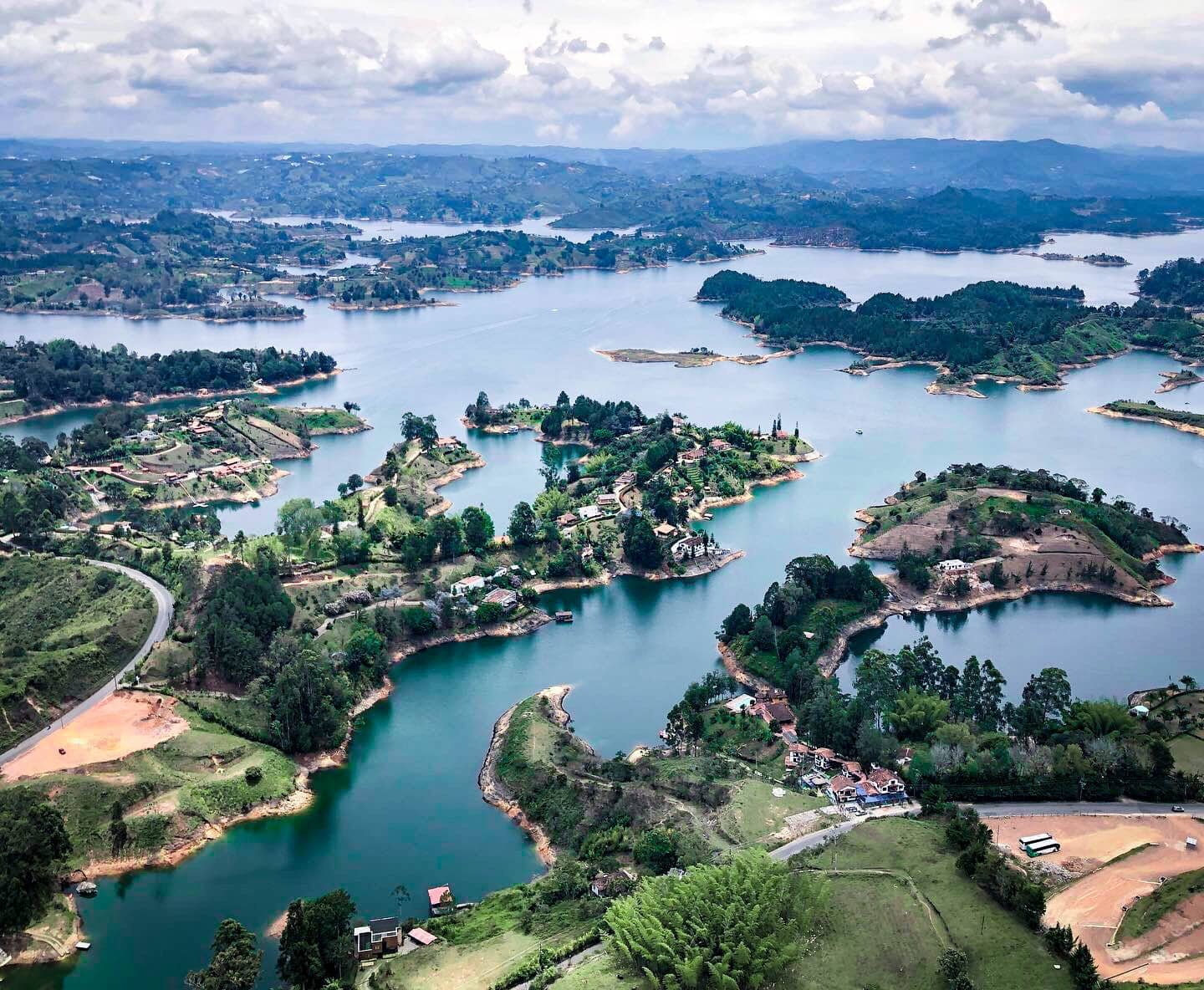
View from El Peñón de Guatapé - Colombia
Guatapé - conquer the 740-step ascent of El Peñón De Guatapé and marvel at the colourful buildings in the nearby Guatapé town. Combine El Peñon and the Gautapé with a boat trip to visit Escobar’s former dwelling. We went on a brilliant tour that offers all 3 activities in one day-trip .
Comuna 13 - once Colombia’s most notorious neighbourhood, Comuna 13 is now home to graffiti walking tours and a 1260-foot-long outdoor escalator.
Free Walking Tour - learn about Medellin's incredible history and how the locals have turned around their fortunes in the space of a decade.
Medellin has to be a significant part of any Colombia itinerary , and one of the things to know before visiting Medellin is that it was famously the home of a certain Pablo Escobar.
As the city desperately tries to escape the shackles of it’s tumultuous past, his name is, understandably, not uttered on the streets with a particular fondness. As a result, many locals aren’t too happy for tourists to come into the city to learn about the one man they despise more than any other.
Therefore, we recommend not taking part in any tours or activities in the city that focus solely on Mr Escobar. Medellin’s past is unfortunately inescapable, but the least we can do as tourists is to not remind them about it every time we visit.
Medellin is also widely considered one of the best cities in Latin America for expats and digital nomads but before you pack your bags right away, you should consider some things to know before living in Medellin .
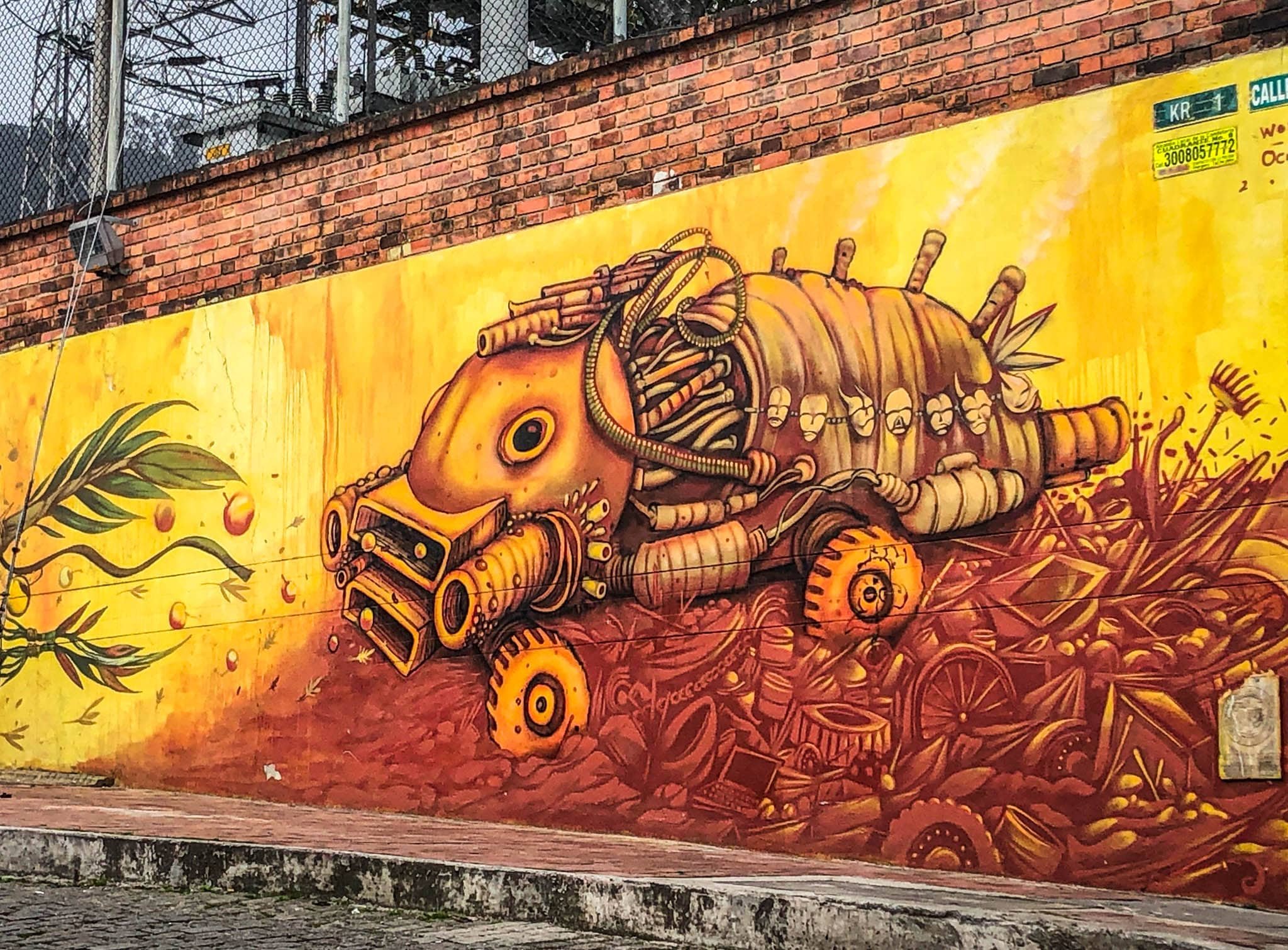
Street Art lining the walls of Bogota
Street Art/Graffiti - spend an afternoon wandering around the district of La Candelaria, where owners commission pieces of artwork on the side of their homes to prevent others from graffiti-tagging the building.
Bolivar Square - the city's main square is a great place to grab a world-famous Colombian Coffee while watching the locals go about their day.
Monserrate Cable Car - riding the cable car up to the top of Monserrate Mountain to experience panoramic views of the city below is one of the best things to do in Bogota . The cafe at the top of Monserrate is a great place to try Hot Chocolate con Queso. Hot chocolate and cheese is not a combination found often in Europe and North America but is a traditional staple in many Colombian households.
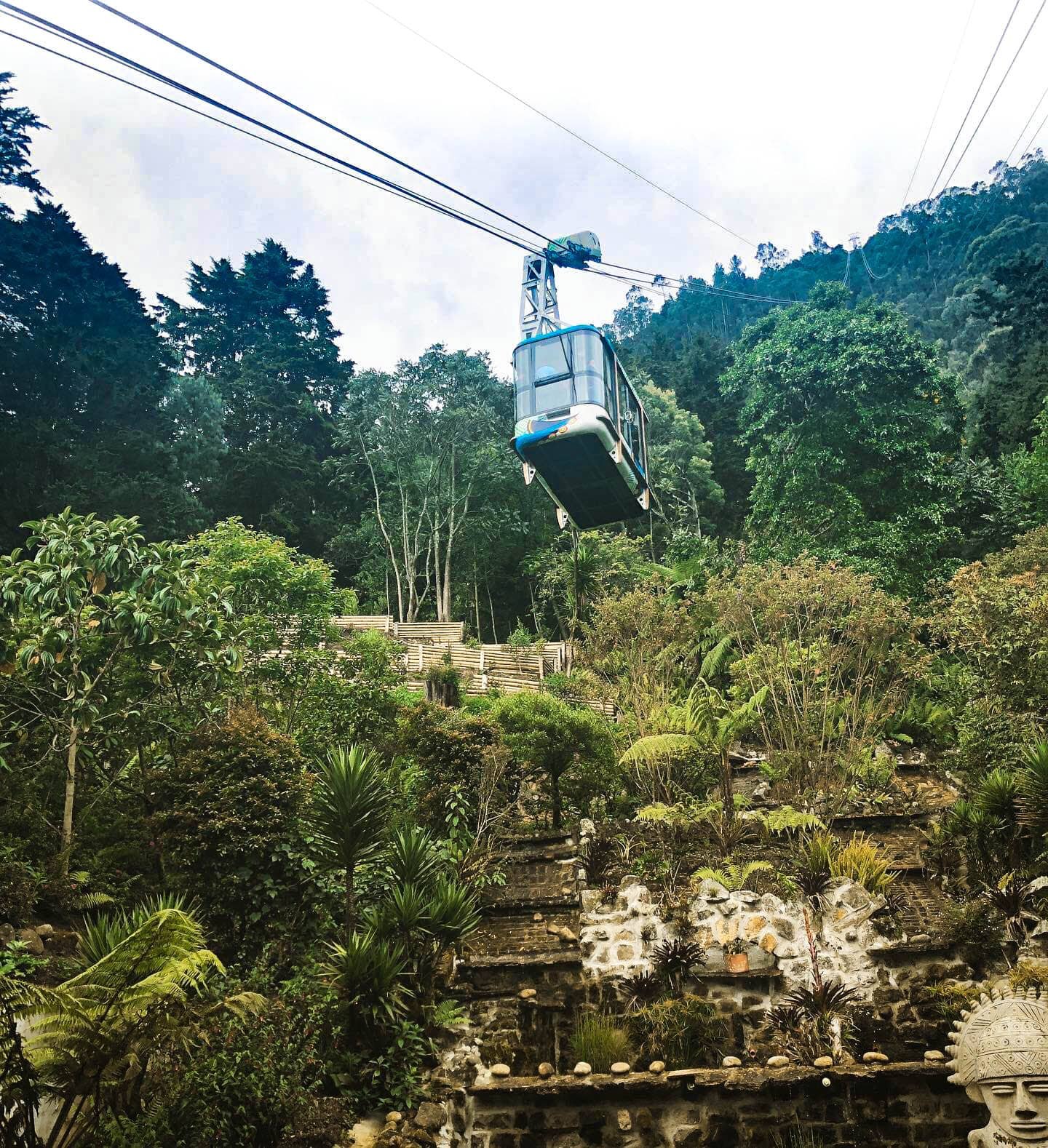
Monserrate Cable Car
Peru is synonymous with Machu Picchu, understandably so, but the country offers so much more than that - particularly for Backpackers. That’s why it features so prominently on this backpacking itinerary and why you should spend plenty of time in Peru during your 6 weeks in South America. A 2 week Peru Itinerary is enough to see all the major highlights, but the longer you can spend in the country, the better.
A brilliant transportation network of coaches and overnight buses makes travelling through Peru a breeze, even for those of us with very little Spanish. Any South American backpacking itinerary, whether for 2 weeks, 6 weeks or 6 months, has Peru at the heart of it, and we’re not about to tell you otherwise.
As one of the most diverse countries on the continent, Peru provides rich Andean culture, fascinating reminders of colonisation, and an abundance of incredible landscapes. There are many unmissable sights when backpacking in Peru , so we are going to outline the highlights for you.
If you need even more inspiration for your Peruvian adventure, then this 10 day Peru Itinerary that takes you through the heart of the Andes and the Amazon is sure to provide that South American wanderlust.

Huaca Pucllana
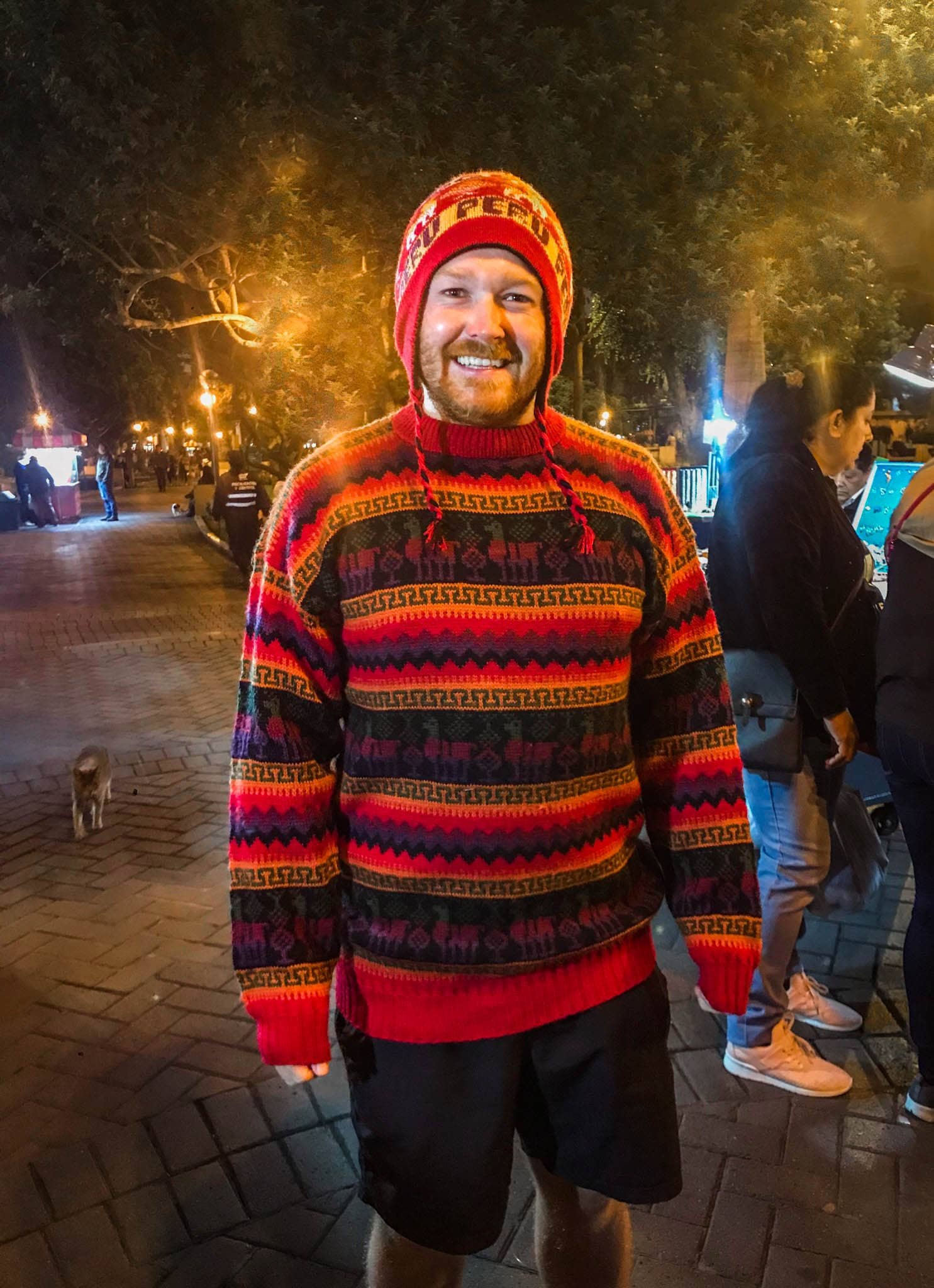
Lima Night Markets
Lima (1-2 Days)
Huaca Pucllana - it’s scarcely believable that such an ancient structure has survived for so long in the centre of a Metropolitan city like Lima but it has, and you should definitely pay it a visit.
Explore the Night Markets - Lima truly comes alive at night. The bustling markets in the Miraflores district offer a wide array of Peruvian treats and souvenirs.
Try Ceviché and Pisco Sour - two delicacies Peruvians are very proud of. Ceviché is made from raw fish cured in citrus juice, while a Pisco Sour is the much-revered national drink of Peru (Be warned, it can be very strong!).
Larcomar Shopping Centre - there can’t be many shopping centres in the world built into the side of a cliff overlooking the Pacific Ocean, so it’s definitely worth adding Larcomar to your itinerary.
Huacachina (2-3 Days)
An adventure in Huacachina is sure to be one of the highlights of your trip to Peru - the desert Oasis really doesn’t disappoint!
Dune-Buggying - believe us when we say that Dune-Buggying in Huacachina is one of the best experiences you can have in the whole of South America. You’ll repeatedly be flung from your seats as the driver launches the buggy over the top of the intimidatingly big sand dunes at truly hair-raising speeds.
Walk to the top of the Dunes - climb to the top of one of the sand dunes for the best view possible of the desert oasis town.
Sandboarding - it’s difficult to truly appreciate the sheer size of the dunes surrounding Huacachina until you velcro-strap a makeshift sandboard to your feet and attempt to ride down the side of them.
You can combine the Dune-buggying and Sandboarding with a sunset tour of the Dunes - we recommend going for sunset as the heat is certainly more manageable.

Sun setting over the sand dunes in Huacachina
Altitude Warning : Arequipa is where the altitude starts to affect some travellers in Peru. Tourists use it as a stop-off point to acclimatise to the altitude, so if you start to feel the effects (Dizziness, Nausea, Headaches, etc.), keep drinking lots of water, take a rest and get yourself to a local cafe and order some Coca Tea (Yes, coca leaves are the raw material for cocaine but don’t worry, drinking a little coca tea isn’t going to do you any harm).
Colca Canyon - at almost twice the depth of the Grand Canyon in the US, Colca Canyon is the second deepest canyon in the world. Couple that with the certainty of spotting Peruvian Condors, one of the largest birds in the world, and you will understand why Colca Canyon is an absolute must for any South American backpacking itinerary. Taking a day trip from Arequipa to Colca Canyon means a very early start, potentially 3 or 4 am, to make it worthwhile. You can opt to do Colca over two days, but we found that the 1-day Colca Canyon Tour was more than enough time to see Colca Canyon comfortably.
Explore the City - walking around the historic centre in Arequipa is like walking back in time. Soak up the sun on one of the many coffeehouse balconies overlooking the Plaza De Armas and take a wander around the wondrous Basilica Cathedral.
If you want to discover Arequipa better, then we recommend taking this half-day sightseeing tour with a knowledgeable and expert guide. You will explore Arequipa's many top sights and attractions and learn about the city’s history.
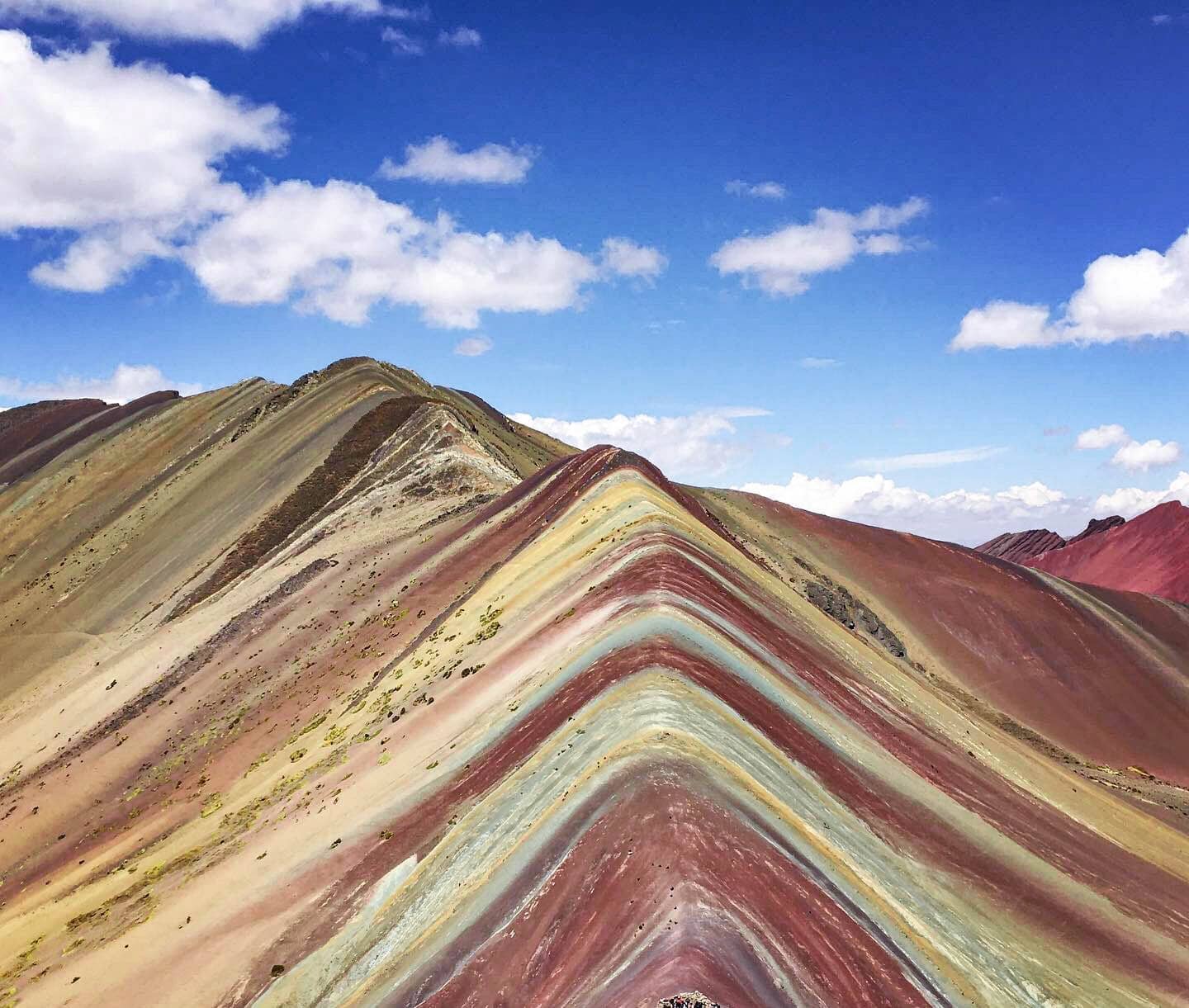
Rainbow Mountain
Quite simply, Cusco is the gateway to some incredible Peruvian activities and adventures. A brief list of the best day trips from Cusco is outlined below so you get a feeling for what is going to be in store.
Rainbow Mountain - at over 5000m above sea level, reaching Rainbow Mountain is certainly not a stroll in the park, but visiting this spectacular place is one of the best things to do in Cusco . Even if you are generally quite fit, be prepared to take plenty of breaks to catch your breath. The reward is a spectacularly colourful mountain view, only unearthed in recent years due to the melting of the ice that once covered the beautiful minerals below. The easiest and least stressful way to see Rainbow Mountain is through a Rainbow Mountain trek from Cusco as there isn’t public transport directly to Rainbow Mountain.
Maras Salt Mines - located in the heart of the Sacred Valley, the collection of tiered salt pools dates back to Incan time and continues to be extracted and used by families to this day. There are many sacred valley tours available throughout the region.
Quad-Biking Tour - a perfect way to explore Peru is on the back of Quad-Bike. Be prepared to get sand and dust in all sorts of places as you explore the wonders of the Sacred Valley. The quad-biking tour is a perfect way to combine the Maras Salt Mines with the Moray Ruins.
Machu Picchu - there isn’t enough space in this article to write all about Machu Picchu, but we will go into greater depth in another destination guide. Every South American Backpacking Itinerary has Machu Picchu at the heart of it, it’s one of the seven wonders of the world and for good reason. Is Machu Picchu worth the money? Absolutely! We experienced Machu Picchu in a day , and although we didn’t have time for the Inca trek, we instead opted for the best day-tour to Machu Picchu (from Cusco) , and it worked out to be even more incredible than we expected!

Quad-biking in the Sacred Valley
Other Options for Extended Stay in Peru
Moray Ruins - an archaeological site about 50km from Cusco. The site is a series of unusual, terraced, circular depressions in the ground, the largest of which is approximately 30m deep.
Humantay Blue Lagoon - 4200m above sea level, the magnificent Humantay Lake can only be accessed by hiking up a moderate trail. The hike is certainly worthwhile when you are greeted by one of the most stunning views in South America - the snow-capped Andean Peaks tower of the turquoise lagoon. It truly is a sight to behold.
Lake Titicaca - the world’s highest lake straddles the border between Peru and Bolivia and is said to be the birthplace of the Incas. Titicaca is a great stop-off point between the countries.
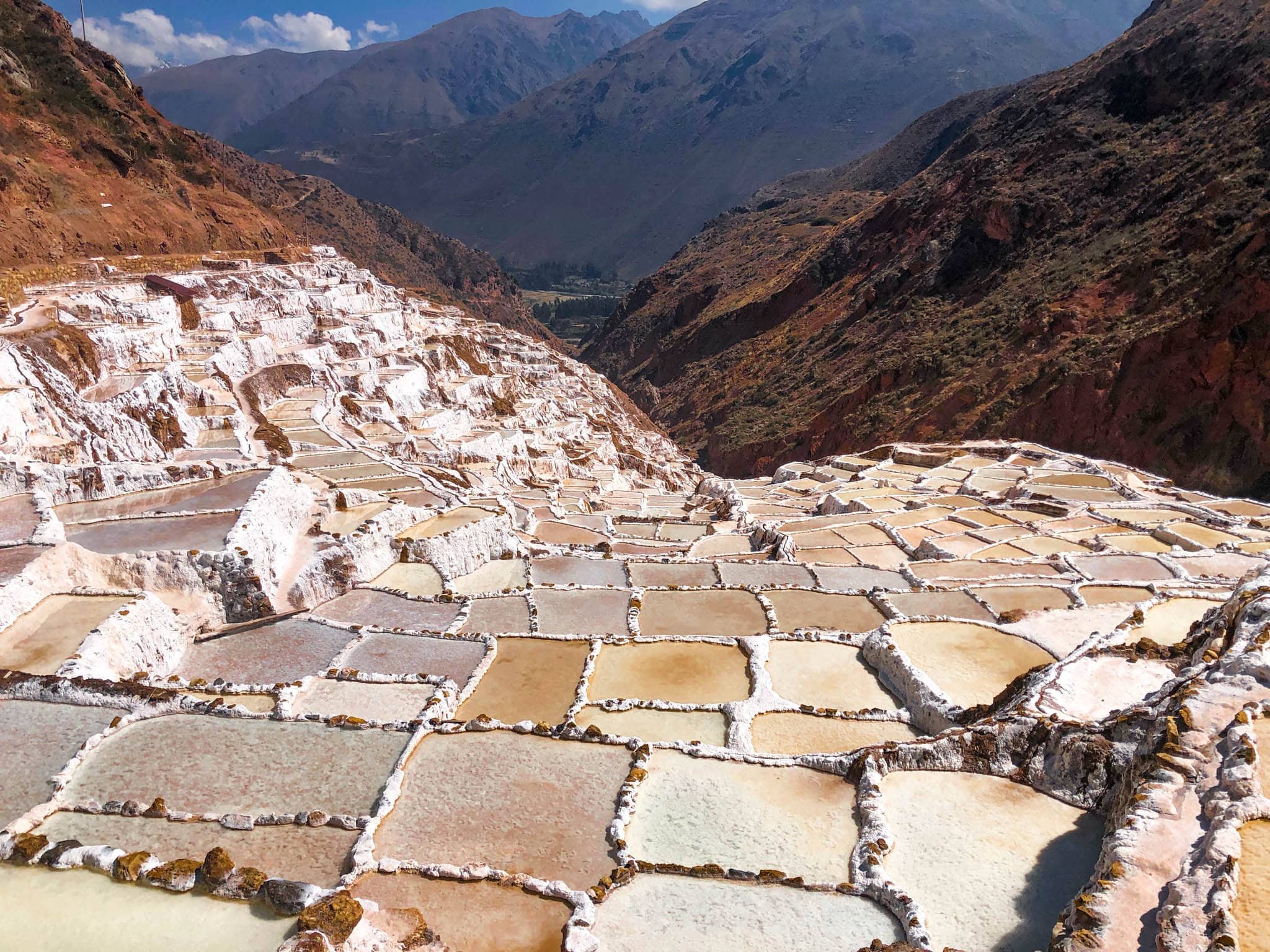
Maras Salt Mines
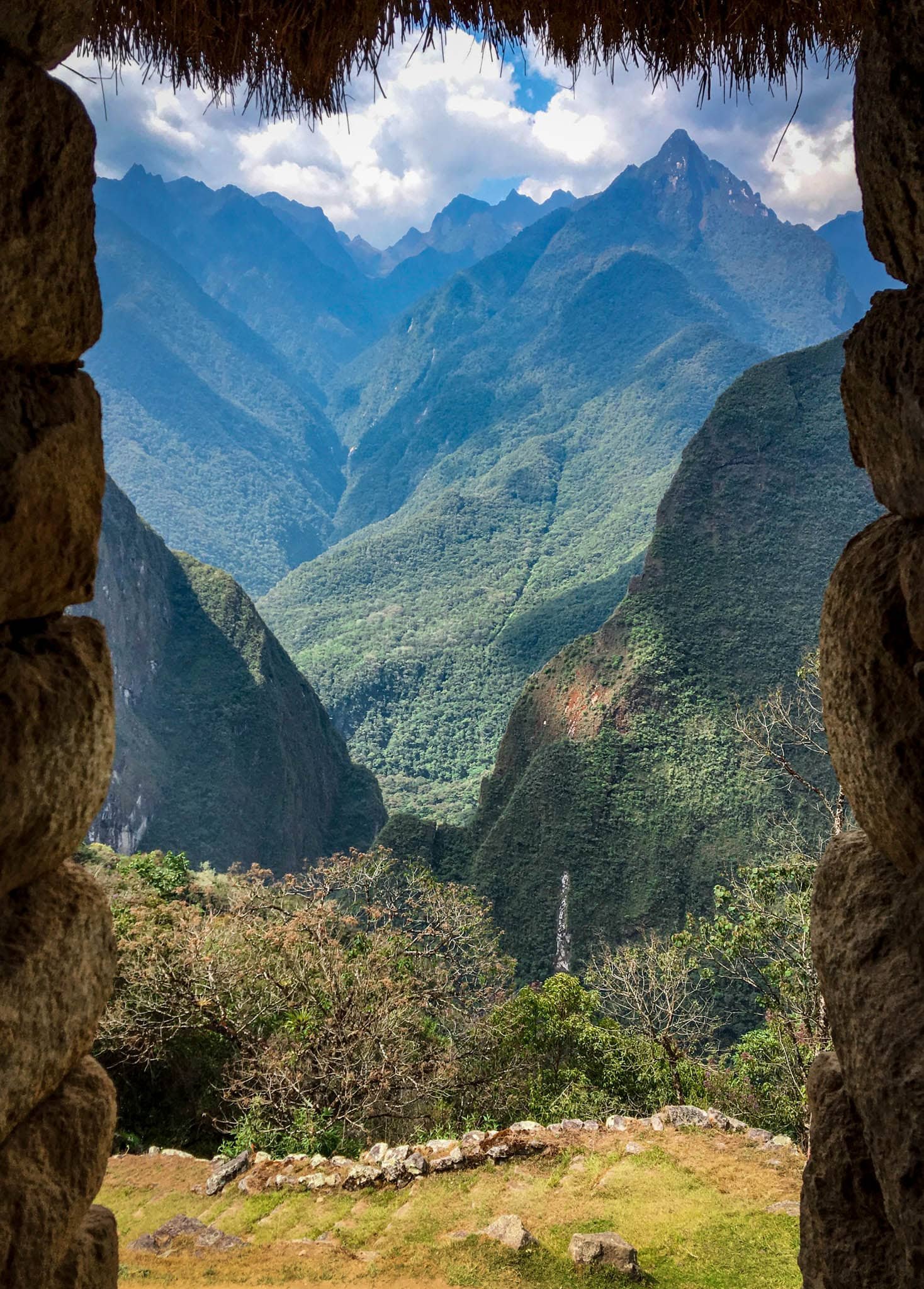
View from an Incan house at Machu Picchu
The next stop on your 6 weeks in South America is going to be Bolivia. Bolivia can often get overlooked when backpacking in South America, but we believe it should feature on every South America itinerary.
Bolivia is a country famous for its mountains and the bowler hat, a brightly-coloured dress worn by indigenous Cholita women.
For backpackers, though, Bolivia screams adventure. It is home to the world’s highest capital city, the world’s most dangerous road, and the world’s largest salt flat. It means there is a lot to discover in this criminally underrated country.
While backpacking around Bolivia, be sure to try the local’s favourite dish - fried Guinea Pig. The Guinea Pig is a staple meat for many Bolivians as it is high in protein and low in fat.
La Paz (3-7 Days)
Death Road Tour - rising to prominence in 2009 after featuring on the BBC’s Top Gear, the Death Road is a series of stomach-churning hairpin bends overlooking the mighty ravine below. Day tours from La Paz offer the chance to cycle a stretch of the famous highway, while crosses and shrines lining the side of the road act as a stark reminder of how it got its fatal name.
Witches Market - there are very few places in the world where Dehydrated Llama Fetus’ and Bolivian Armadillos are the main avenues of attraction, but the Witches Market in downtown La Paz is one of them. Hiding away in a small corner of the old town of La Paz, the Witches’ Market is sure to send a shiver down your spine.
Cable Cars in the City - the 17-mile long cable car system in La Paz is certainly one of the most impressive transportation systems on the planet - rivalling Communa 13’s outdoor escalator - and is a perfect way to reach the outskirts of the world’s highest capital city.
Uyuni Salt Flats - a 9-hour coach ride from La Paz, Salar de Uyuni, is home to an estimated 11 billion tonnes of salt. A thin layer of moisture lying on top of the salt flats gives the appearance of being the largest mirror in the world. A haven for any budding photographer, the Uyuni salt flats offer the chance to capture spectacular optical illusions on camera in a landscape that wouldn’t look out of place on the surface of the Moon.
The Salt Flats are certainly one of those bucket list places to see in Bolivia . It’s difficult to imagine a Bolivia travel itinerary without incorporating a trip to Salar de Uyuni.
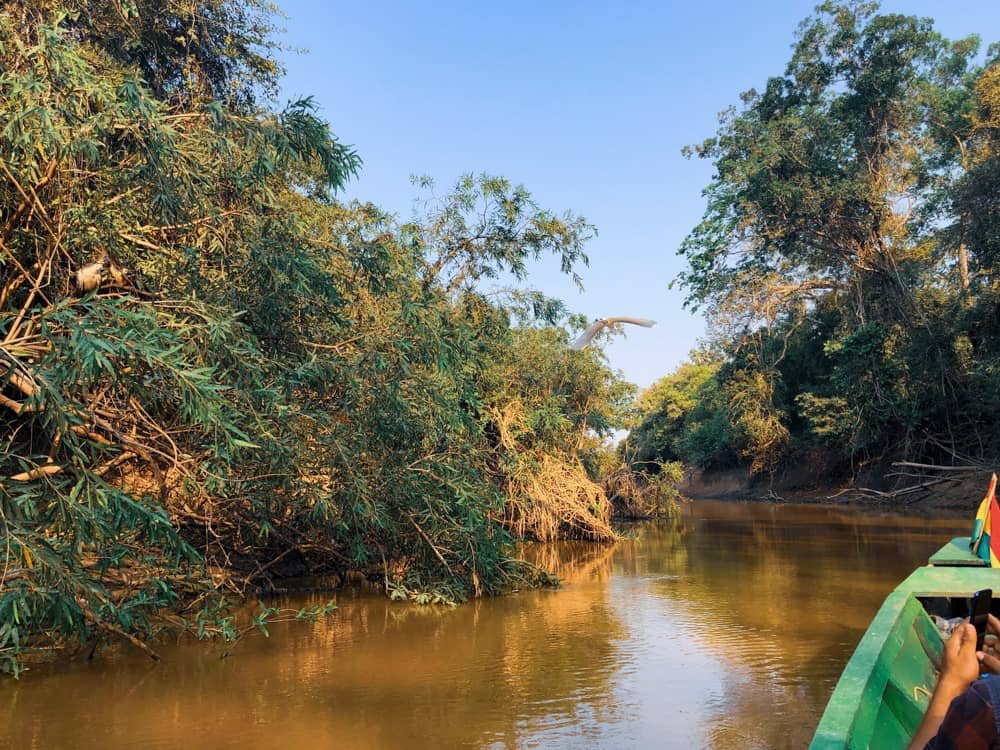
Cruising down the Amazon in the Pampas
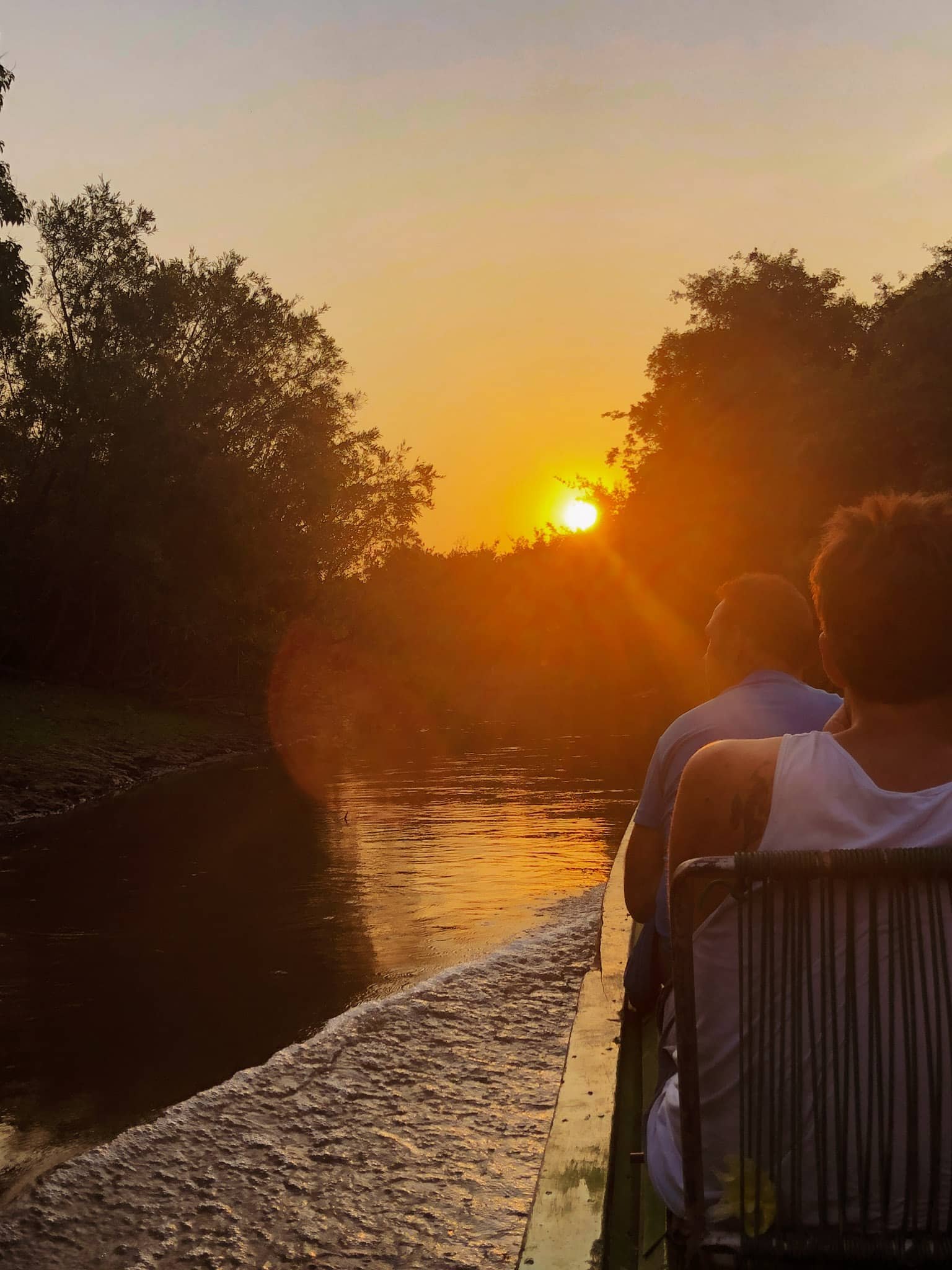
Sunset in the Bolivian Pampas
Pampas Tour - right in the heart of the Amazon, the Bolivian Pampas is teaming with wildlife and provides the opportunity to get within touching distance of some of the most extraordinary creatures on the planet. Capybaras (the world’s largest rodent), Squirrel Monkeys and Pink River Dolphins provide endless entertainment while cruising down the Amazon in a motorised canoe.
Although the chances of spotting a Leopard are slim in the Pampas, you can never escape the intimidating glare of a 50kg adult, male Caiman. Throw deadly anacondas and spectacularly beautiful sunsets into the mix, and you have the recipe for a truly unforgettable backpacking experience.
It is worth pointing out that going on a 2-4 day Pampas tour means that you will need to be prepared by taking plenty of fresh, bottled water with you on the tour. Supplies are very limited in the Pampas so it pays to be as prepared as possible. We go through many other clever survival tips for South America backpacking in our guide how not to end up in a Bolivian hospital while backpacking South America .
The land of famous footballers, Samba dancers and flamboyant carnivals. Brazil is the final stop on our South America itinerary, which means you’ll finish your 6 weeks in South America on a high.
Brazil is the world’s fifth-largest nation and is the largest in South America. While you could quite happily enjoy a 3-week itinerary in Brazil , we are going to highlight the main attractions so you can get the most out of your stay there.
Stunning beaches, jaw-dropping waterfalls and lively cities await you on your backpacking adventure.

The Incredible Iguazu Falls
Iguazu Falls - the waterfalls straddle the border between Brazil and Argentina. You get to see the Falls from above from the Argentinian side, but it’s from the Brazilian side where you get the incredible views. The Waterfalls, over 2.5km wide, cascade over 85m before crashing into the Iguazu river below. Iguazu Falls consists of 285 different waterfalls that can be observed from the viewing platform that is suspended high over the Iguazu River.
Marias and Maria Bakery - walking through the main doors, you are greeted by the marvellous Brazilian treats and cakes aroma. In our opinion, though, the best part of Marias and Maria Bakery is the restaurant's savoury buffet. You walk in, go straight to the buffet line, and pile the food as high as you can. It’s great value and locals go there every day - which is always a great sign of quality!
If you’re a little short on time come the end of your backpacking adventure, perhaps our Rio de Janeiro weekend itinerary will be better suited. Spending 48 hours in Rio may feel rushed, but with our guide, you will be able to make the most of your time.
Botanical Gardens - in a city of over 6 and a half million people, it can be tricky to find some peace and quiet in Rio. The Botanical gardens, in the handily named Jardim Botânico district, offer the rare chance to escape the hustle and bustle of Rio De Janeiro.
Christ the Redeemer - the most traditional way of visiting the famous monument is to take the cog train. The train snakes up the Corcovado Mountain before dropping you off just below the statue. A short walk up a few flights of stairs, and you will be staring up from the base of the most iconic structure in Brazil. It’s difficult to appreciate the size of Christ the Redeemer until you are right underneath it.
Sugarloaf Mountain - sitting at the mouth of Guanabara Bay, Sugarloaf Mountain towers over Rio De Janeiro and presents panoramic views of the city below. Hiking will take you around 2 hours to get to the top, but the most popular route to the summit is via the world-famous cable car.
Escadaria Selarón - the world-famous set of stairs were the work of Chilean-born artist Jorge Selarón. His tribute to the Brazilian people has become a tourist hotspot in Rio De Janeiro. It's worth visiting - but good luck trying to get a photo without another tourist in.
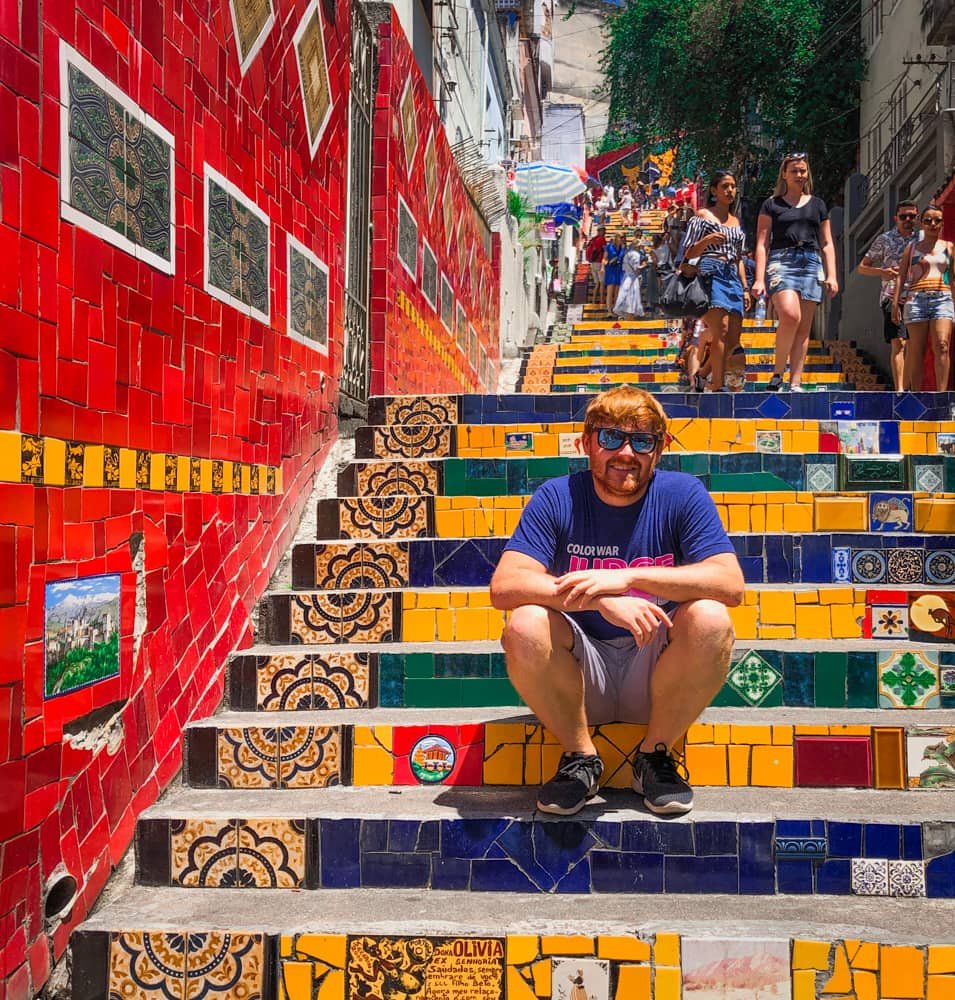
Escadaira Selarón - Rio de Janeiro
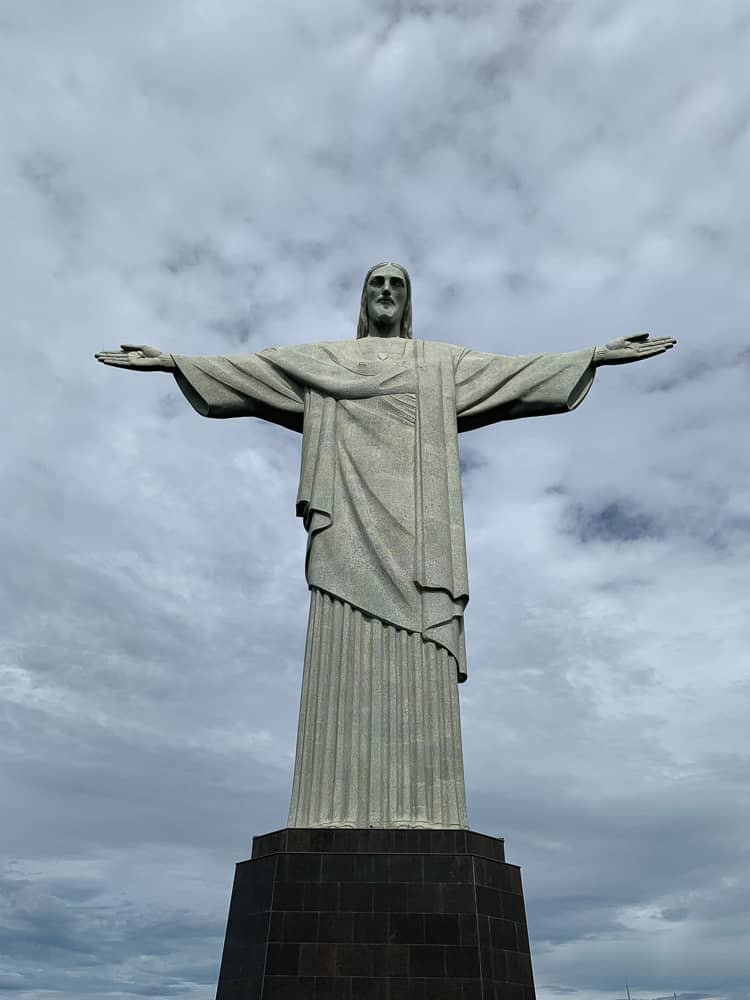
Christ the Redeemer
Centro Cultural Municipal Parque das Ruínas - located in the Santa Teresa district of Rio, the Parque das Ruínas is a small public park that regularly hosts free live music events. It’s a wonderful spot to grab an iced coffee and gaze out across the stunning Guanabara Bay.
Ipanema / Copacabana Beach - you cannot envisage a trip to Rio De Janeiro without visiting the iconic beaches of Ipanema and Copacabana. The inspiration behind many, many famous songs, the sandy beaches present the perfect place to relax and take in your last few days on the glorious continent of South America.
Carretao Ipanema Classic Grill - if you want to get a real flavour of Brazil, then this cannot be missed. The Carretao Ipanema is a traditional steakhouse that serves a full buffet, while hosts come around with platters of barbecued meat to accompany the meal.
Garota de Ipanema - order a drink at the Garota (previously Veloso Bar), the former bar where composers Tom Jobin and Vinícius de Moraes first spotted the infamous Girl from Ipanema.
Planning the ultimate 6-week South America itinerary is just stage one of everything you need to know before backpacking South America . The beginning of stage 2 is to invest in a handy South America Guidebook - we found every destination we visited in this guide, as well as reading travel blogs.
We have always maintained that backpacking is a great option for long-term travel as a couple . Our experience of backpacking through South America has certainly not changed this opinion. We absolutely loved the adventure we have, and we hope that this 6-week South America backpacking itinerary will help you to have a similarly brilliant experience.
6 weeks in South America is just about enough time to get a flavour for the continent but know one thing, it will only inspire you to visit South America for even longer next time around.
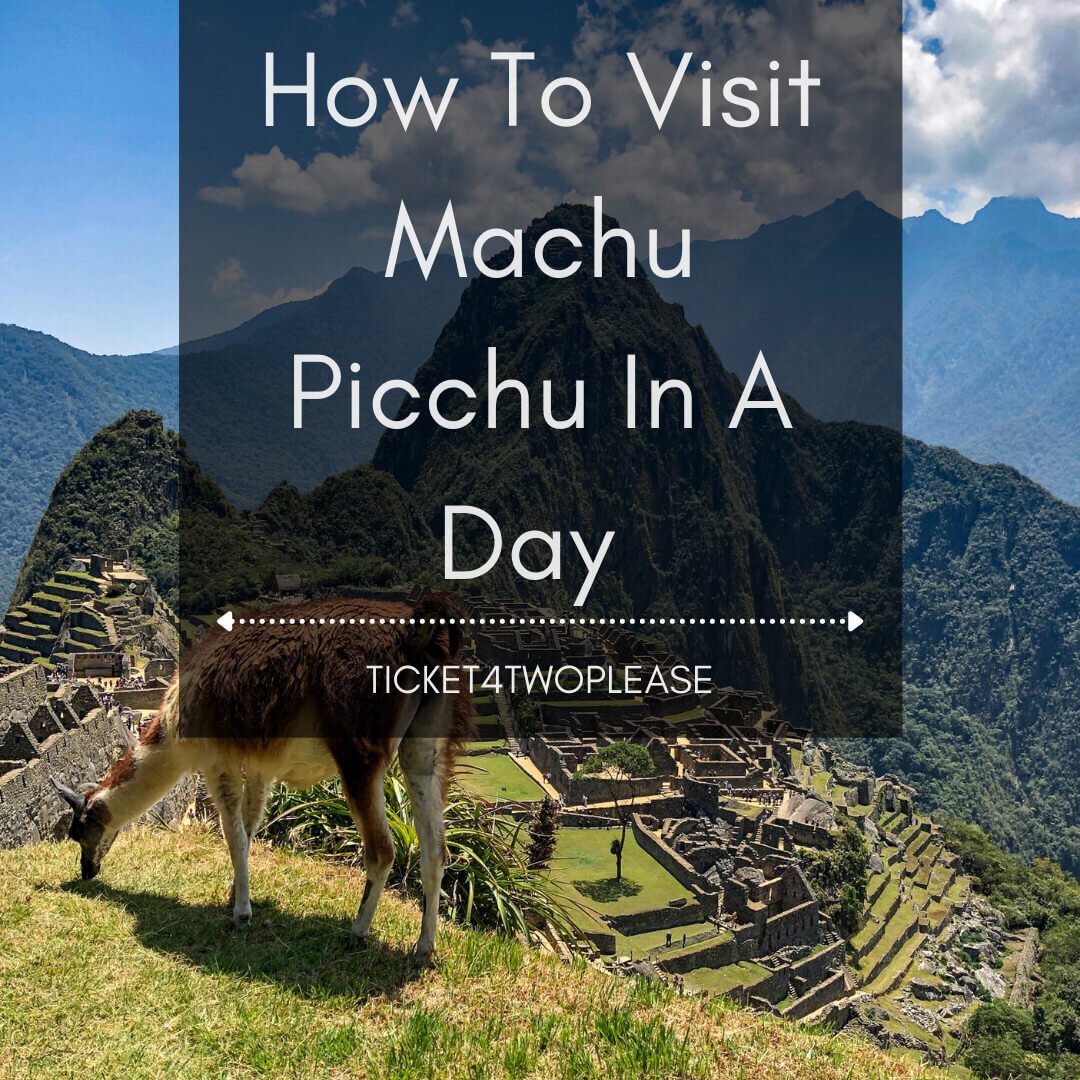
So, you have booked the time off, paid for the flights and now the dream of visiting the majestic, ancient wonder of Machu Picchu is finally in sight. Read on to find out how to visit Machu Picchu in a day, without blowing your entire trip's budget.
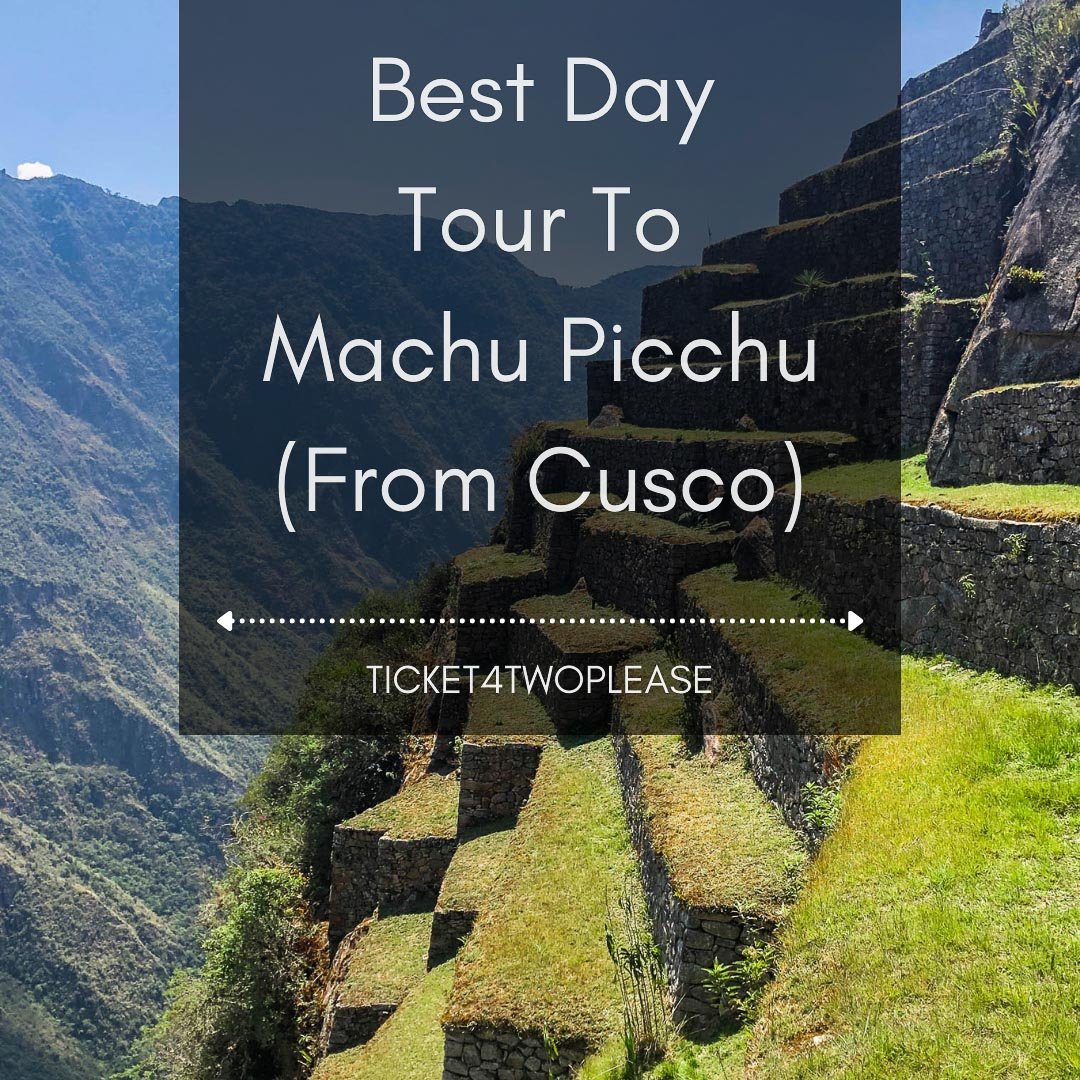
The best day tour to Machu Picchu - we are going to describe the best day tour to take from Cusco to Machu Picchu and outline exactly what you get with the tour.
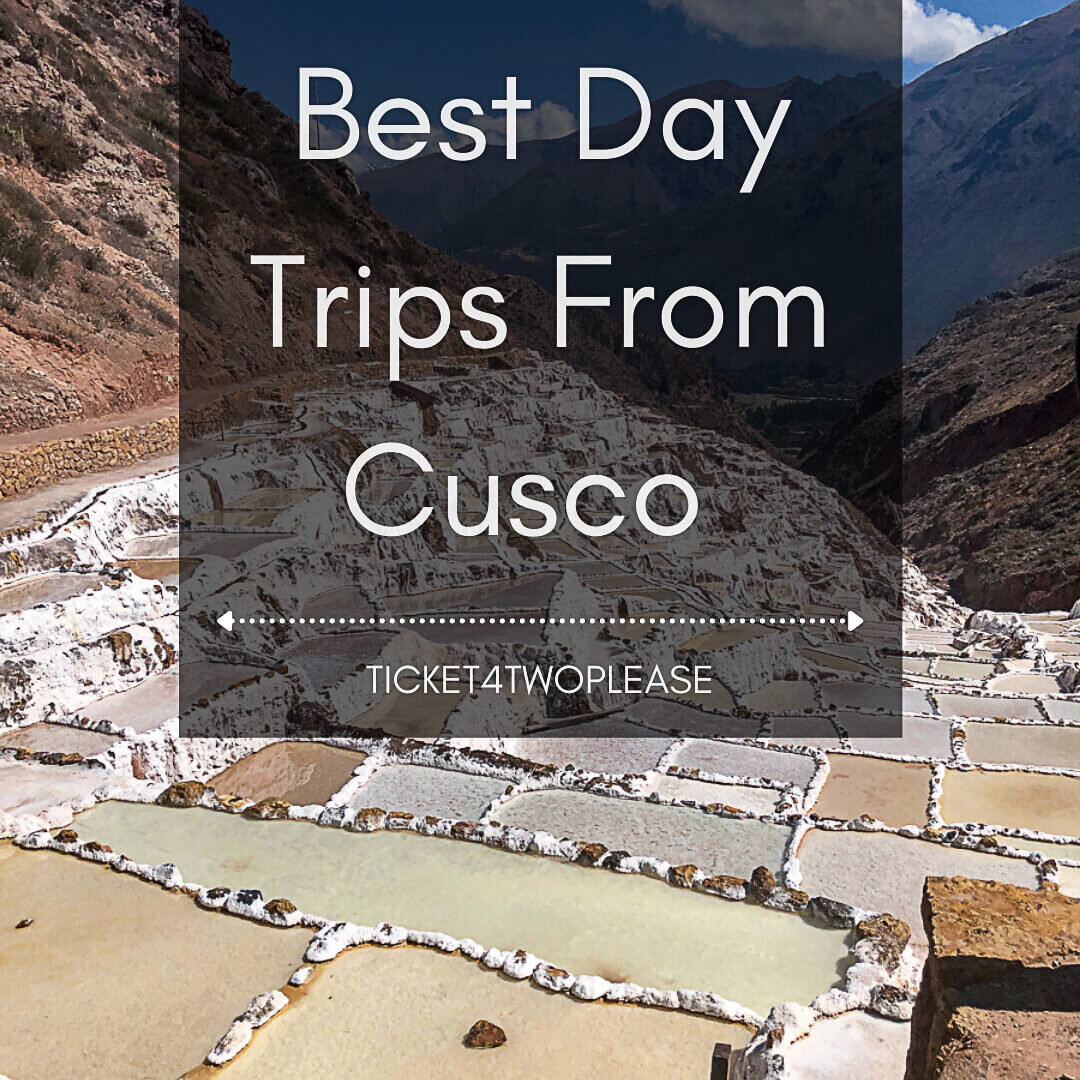
A thorough list of the best day trips from Cusco. Including how best to organise the day trip, whether you can do it independently or through a tour, and a breakdown of the cost of the day trip from Cusco.
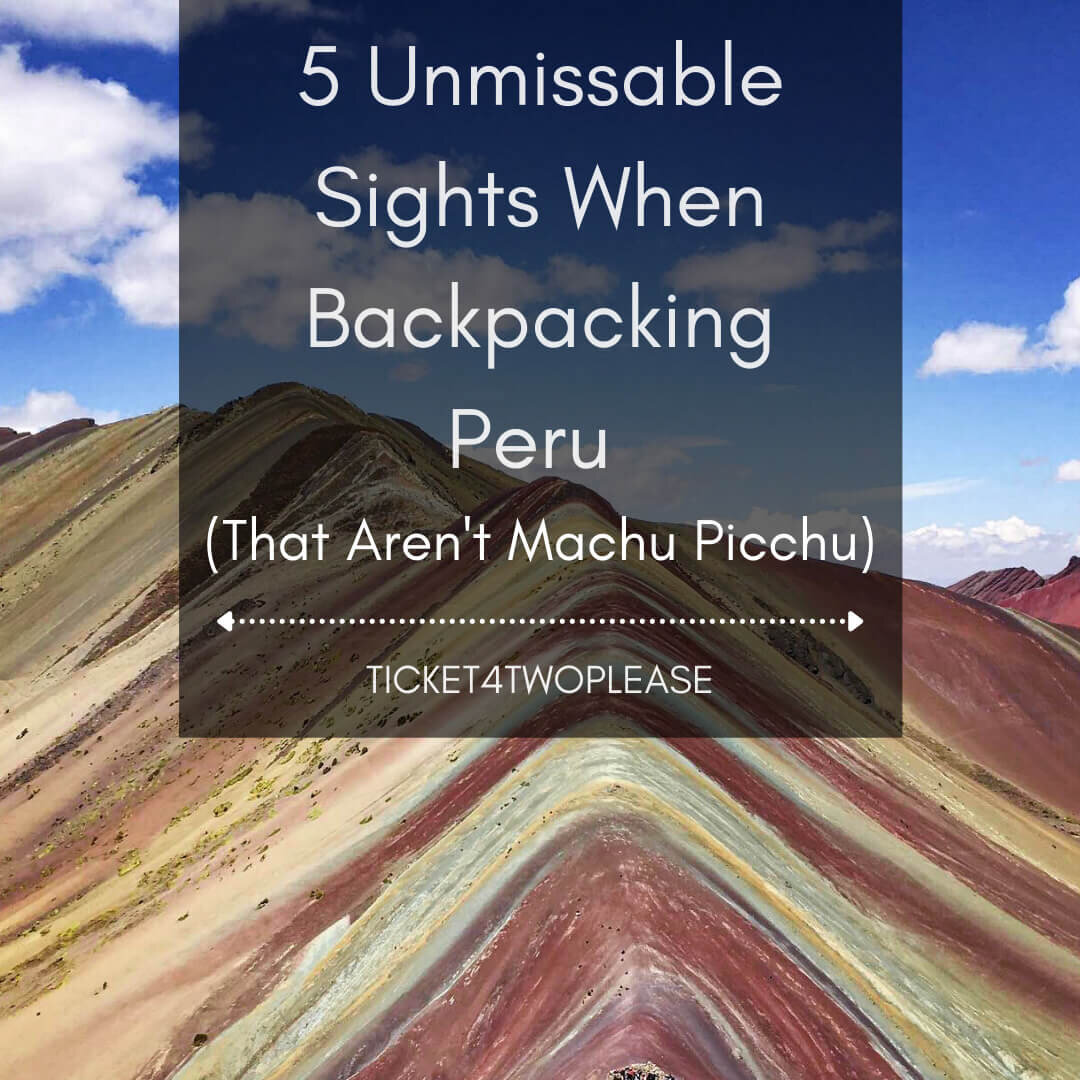
Although Peru is synonymous with Machu Picchu, there are countless other activities and sights that are waiting to be explored. We are going to guide you through 5 sights that we consider to be absolutely essential when backpacking Peru, so you know what should be firmly on the top of your bucket-list.
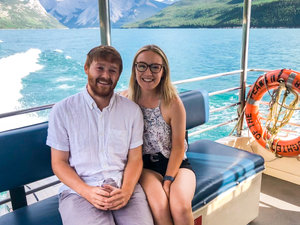
Ben Lloyd is the creator, editor and one half of Ticket 4 Two Please. Our website is designed to help adventurous couples travel together on a budget around the world. We have handy destination guides from countless destinations, as well as useful seasonal job resources for summer camps and ski seasons.
10 Things You Need To Know Before Backpacking South America
Numbers, Facts and Trends Shaping Your World
Read our research on:
Full Topic List
Regions & Countries
- Publications
- Our Methods
- Short Reads
- Tools & Resources
Read Our Research On:
What the data says about abortion in the U.S.
Pew Research Center has conducted many surveys about abortion over the years, providing a lens into Americans’ views on whether the procedure should be legal, among a host of other questions.
In a Center survey conducted nearly a year after the Supreme Court’s June 2022 decision that ended the constitutional right to abortion , 62% of U.S. adults said the practice should be legal in all or most cases, while 36% said it should be illegal in all or most cases. Another survey conducted a few months before the decision showed that relatively few Americans take an absolutist view on the issue .
Find answers to common questions about abortion in America, based on data from the Centers for Disease Control and Prevention (CDC) and the Guttmacher Institute, which have tracked these patterns for several decades:
How many abortions are there in the U.S. each year?
How has the number of abortions in the u.s. changed over time, what is the abortion rate among women in the u.s. how has it changed over time, what are the most common types of abortion, how many abortion providers are there in the u.s., and how has that number changed, what percentage of abortions are for women who live in a different state from the abortion provider, what are the demographics of women who have had abortions, when during pregnancy do most abortions occur, how often are there medical complications from abortion.
This compilation of data on abortion in the United States draws mainly from two sources: the Centers for Disease Control and Prevention (CDC) and the Guttmacher Institute, both of which have regularly compiled national abortion data for approximately half a century, and which collect their data in different ways.
The CDC data that is highlighted in this post comes from the agency’s “abortion surveillance” reports, which have been published annually since 1974 (and which have included data from 1969). Its figures from 1973 through 1996 include data from all 50 states, the District of Columbia and New York City – 52 “reporting areas” in all. Since 1997, the CDC’s totals have lacked data from some states (most notably California) for the years that those states did not report data to the agency. The four reporting areas that did not submit data to the CDC in 2021 – California, Maryland, New Hampshire and New Jersey – accounted for approximately 25% of all legal induced abortions in the U.S. in 2020, according to Guttmacher’s data. Most states, though, do have data in the reports, and the figures for the vast majority of them came from each state’s central health agency, while for some states, the figures came from hospitals and other medical facilities.
Discussion of CDC abortion data involving women’s state of residence, marital status, race, ethnicity, age, abortion history and the number of previous live births excludes the low share of abortions where that information was not supplied. Read the methodology for the CDC’s latest abortion surveillance report , which includes data from 2021, for more details. Previous reports can be found at stacks.cdc.gov by entering “abortion surveillance” into the search box.
For the numbers of deaths caused by induced abortions in 1963 and 1965, this analysis looks at reports by the then-U.S. Department of Health, Education and Welfare, a precursor to the Department of Health and Human Services. In computing those figures, we excluded abortions listed in the report under the categories “spontaneous or unspecified” or as “other.” (“Spontaneous abortion” is another way of referring to miscarriages.)
Guttmacher data in this post comes from national surveys of abortion providers that Guttmacher has conducted 19 times since 1973. Guttmacher compiles its figures after contacting every known provider of abortions – clinics, hospitals and physicians’ offices – in the country. It uses questionnaires and health department data, and it provides estimates for abortion providers that don’t respond to its inquiries. (In 2020, the last year for which it has released data on the number of abortions in the U.S., it used estimates for 12% of abortions.) For most of the 2000s, Guttmacher has conducted these national surveys every three years, each time getting abortion data for the prior two years. For each interim year, Guttmacher has calculated estimates based on trends from its own figures and from other data.
The latest full summary of Guttmacher data came in the institute’s report titled “Abortion Incidence and Service Availability in the United States, 2020.” It includes figures for 2020 and 2019 and estimates for 2018. The report includes a methods section.
In addition, this post uses data from StatPearls, an online health care resource, on complications from abortion.
An exact answer is hard to come by. The CDC and the Guttmacher Institute have each tried to measure this for around half a century, but they use different methods and publish different figures.
The last year for which the CDC reported a yearly national total for abortions is 2021. It found there were 625,978 abortions in the District of Columbia and the 46 states with available data that year, up from 597,355 in those states and D.C. in 2020. The corresponding figure for 2019 was 607,720.
The last year for which Guttmacher reported a yearly national total was 2020. It said there were 930,160 abortions that year in all 50 states and the District of Columbia, compared with 916,460 in 2019.
- How the CDC gets its data: It compiles figures that are voluntarily reported by states’ central health agencies, including separate figures for New York City and the District of Columbia. Its latest totals do not include figures from California, Maryland, New Hampshire or New Jersey, which did not report data to the CDC. ( Read the methodology from the latest CDC report .)
- How Guttmacher gets its data: It compiles its figures after contacting every known abortion provider – clinics, hospitals and physicians’ offices – in the country. It uses questionnaires and health department data, then provides estimates for abortion providers that don’t respond. Guttmacher’s figures are higher than the CDC’s in part because they include data (and in some instances, estimates) from all 50 states. ( Read the institute’s latest full report and methodology .)
While the Guttmacher Institute supports abortion rights, its empirical data on abortions in the U.S. has been widely cited by groups and publications across the political spectrum, including by a number of those that disagree with its positions .
These estimates from Guttmacher and the CDC are results of multiyear efforts to collect data on abortion across the U.S. Last year, Guttmacher also began publishing less precise estimates every few months , based on a much smaller sample of providers.
The figures reported by these organizations include only legal induced abortions conducted by clinics, hospitals or physicians’ offices, or those that make use of abortion pills dispensed from certified facilities such as clinics or physicians’ offices. They do not account for the use of abortion pills that were obtained outside of clinical settings .
(Back to top)

The annual number of U.S. abortions rose for years after Roe v. Wade legalized the procedure in 1973, reaching its highest levels around the late 1980s and early 1990s, according to both the CDC and Guttmacher. Since then, abortions have generally decreased at what a CDC analysis called “a slow yet steady pace.”
Guttmacher says the number of abortions occurring in the U.S. in 2020 was 40% lower than it was in 1991. According to the CDC, the number was 36% lower in 2021 than in 1991, looking just at the District of Columbia and the 46 states that reported both of those years.
(The corresponding line graph shows the long-term trend in the number of legal abortions reported by both organizations. To allow for consistent comparisons over time, the CDC figures in the chart have been adjusted to ensure that the same states are counted from one year to the next. Using that approach, the CDC figure for 2021 is 622,108 legal abortions.)
There have been occasional breaks in this long-term pattern of decline – during the middle of the first decade of the 2000s, and then again in the late 2010s. The CDC reported modest 1% and 2% increases in abortions in 2018 and 2019, and then, after a 2% decrease in 2020, a 5% increase in 2021. Guttmacher reported an 8% increase over the three-year period from 2017 to 2020.
As noted above, these figures do not include abortions that use pills obtained outside of clinical settings.
Guttmacher says that in 2020 there were 14.4 abortions in the U.S. per 1,000 women ages 15 to 44. Its data shows that the rate of abortions among women has generally been declining in the U.S. since 1981, when it reported there were 29.3 abortions per 1,000 women in that age range.
The CDC says that in 2021, there were 11.6 abortions in the U.S. per 1,000 women ages 15 to 44. (That figure excludes data from California, the District of Columbia, Maryland, New Hampshire and New Jersey.) Like Guttmacher’s data, the CDC’s figures also suggest a general decline in the abortion rate over time. In 1980, when the CDC reported on all 50 states and D.C., it said there were 25 abortions per 1,000 women ages 15 to 44.
That said, both Guttmacher and the CDC say there were slight increases in the rate of abortions during the late 2010s and early 2020s. Guttmacher says the abortion rate per 1,000 women ages 15 to 44 rose from 13.5 in 2017 to 14.4 in 2020. The CDC says it rose from 11.2 per 1,000 in 2017 to 11.4 in 2019, before falling back to 11.1 in 2020 and then rising again to 11.6 in 2021. (The CDC’s figures for those years exclude data from California, D.C., Maryland, New Hampshire and New Jersey.)
The CDC broadly divides abortions into two categories: surgical abortions and medication abortions, which involve pills. Since the Food and Drug Administration first approved abortion pills in 2000, their use has increased over time as a share of abortions nationally, according to both the CDC and Guttmacher.
The majority of abortions in the U.S. now involve pills, according to both the CDC and Guttmacher. The CDC says 56% of U.S. abortions in 2021 involved pills, up from 53% in 2020 and 44% in 2019. Its figures for 2021 include the District of Columbia and 44 states that provided this data; its figures for 2020 include D.C. and 44 states (though not all of the same states as in 2021), and its figures for 2019 include D.C. and 45 states.
Guttmacher, which measures this every three years, says 53% of U.S. abortions involved pills in 2020, up from 39% in 2017.
Two pills commonly used together for medication abortions are mifepristone, which, taken first, blocks hormones that support a pregnancy, and misoprostol, which then causes the uterus to empty. According to the FDA, medication abortions are safe until 10 weeks into pregnancy.
Surgical abortions conducted during the first trimester of pregnancy typically use a suction process, while the relatively few surgical abortions that occur during the second trimester of a pregnancy typically use a process called dilation and evacuation, according to the UCLA School of Medicine.
In 2020, there were 1,603 facilities in the U.S. that provided abortions, according to Guttmacher . This included 807 clinics, 530 hospitals and 266 physicians’ offices.

While clinics make up half of the facilities that provide abortions, they are the sites where the vast majority (96%) of abortions are administered, either through procedures or the distribution of pills, according to Guttmacher’s 2020 data. (This includes 54% of abortions that are administered at specialized abortion clinics and 43% at nonspecialized clinics.) Hospitals made up 33% of the facilities that provided abortions in 2020 but accounted for only 3% of abortions that year, while just 1% of abortions were conducted by physicians’ offices.
Looking just at clinics – that is, the total number of specialized abortion clinics and nonspecialized clinics in the U.S. – Guttmacher found the total virtually unchanged between 2017 (808 clinics) and 2020 (807 clinics). However, there were regional differences. In the Midwest, the number of clinics that provide abortions increased by 11% during those years, and in the West by 6%. The number of clinics decreased during those years by 9% in the Northeast and 3% in the South.
The total number of abortion providers has declined dramatically since the 1980s. In 1982, according to Guttmacher, there were 2,908 facilities providing abortions in the U.S., including 789 clinics, 1,405 hospitals and 714 physicians’ offices.
The CDC does not track the number of abortion providers.
In the District of Columbia and the 46 states that provided abortion and residency information to the CDC in 2021, 10.9% of all abortions were performed on women known to live outside the state where the abortion occurred – slightly higher than the percentage in 2020 (9.7%). That year, D.C. and 46 states (though not the same ones as in 2021) reported abortion and residency data. (The total number of abortions used in these calculations included figures for women with both known and unknown residential status.)
The share of reported abortions performed on women outside their state of residence was much higher before the 1973 Roe decision that stopped states from banning abortion. In 1972, 41% of all abortions in D.C. and the 20 states that provided this information to the CDC that year were performed on women outside their state of residence. In 1973, the corresponding figure was 21% in the District of Columbia and the 41 states that provided this information, and in 1974 it was 11% in D.C. and the 43 states that provided data.
In the District of Columbia and the 46 states that reported age data to the CDC in 2021, the majority of women who had abortions (57%) were in their 20s, while about three-in-ten (31%) were in their 30s. Teens ages 13 to 19 accounted for 8% of those who had abortions, while women ages 40 to 44 accounted for about 4%.
The vast majority of women who had abortions in 2021 were unmarried (87%), while married women accounted for 13%, according to the CDC , which had data on this from 37 states.

In the District of Columbia, New York City (but not the rest of New York) and the 31 states that reported racial and ethnic data on abortion to the CDC , 42% of all women who had abortions in 2021 were non-Hispanic Black, while 30% were non-Hispanic White, 22% were Hispanic and 6% were of other races.
Looking at abortion rates among those ages 15 to 44, there were 28.6 abortions per 1,000 non-Hispanic Black women in 2021; 12.3 abortions per 1,000 Hispanic women; 6.4 abortions per 1,000 non-Hispanic White women; and 9.2 abortions per 1,000 women of other races, the CDC reported from those same 31 states, D.C. and New York City.
For 57% of U.S. women who had induced abortions in 2021, it was the first time they had ever had one, according to the CDC. For nearly a quarter (24%), it was their second abortion. For 11% of women who had an abortion that year, it was their third, and for 8% it was their fourth or more. These CDC figures include data from 41 states and New York City, but not the rest of New York.

Nearly four-in-ten women who had abortions in 2021 (39%) had no previous live births at the time they had an abortion, according to the CDC . Almost a quarter (24%) of women who had abortions in 2021 had one previous live birth, 20% had two previous live births, 10% had three, and 7% had four or more previous live births. These CDC figures include data from 41 states and New York City, but not the rest of New York.
The vast majority of abortions occur during the first trimester of a pregnancy. In 2021, 93% of abortions occurred during the first trimester – that is, at or before 13 weeks of gestation, according to the CDC . An additional 6% occurred between 14 and 20 weeks of pregnancy, and about 1% were performed at 21 weeks or more of gestation. These CDC figures include data from 40 states and New York City, but not the rest of New York.
About 2% of all abortions in the U.S. involve some type of complication for the woman , according to an article in StatPearls, an online health care resource. “Most complications are considered minor such as pain, bleeding, infection and post-anesthesia complications,” according to the article.
The CDC calculates case-fatality rates for women from induced abortions – that is, how many women die from abortion-related complications, for every 100,000 legal abortions that occur in the U.S . The rate was lowest during the most recent period examined by the agency (2013 to 2020), when there were 0.45 deaths to women per 100,000 legal induced abortions. The case-fatality rate reported by the CDC was highest during the first period examined by the agency (1973 to 1977), when it was 2.09 deaths to women per 100,000 legal induced abortions. During the five-year periods in between, the figure ranged from 0.52 (from 1993 to 1997) to 0.78 (from 1978 to 1982).
The CDC calculates death rates by five-year and seven-year periods because of year-to-year fluctuation in the numbers and due to the relatively low number of women who die from legal induced abortions.
In 2020, the last year for which the CDC has information , six women in the U.S. died due to complications from induced abortions. Four women died in this way in 2019, two in 2018, and three in 2017. (These deaths all followed legal abortions.) Since 1990, the annual number of deaths among women due to legal induced abortion has ranged from two to 12.
The annual number of reported deaths from induced abortions (legal and illegal) tended to be higher in the 1980s, when it ranged from nine to 16, and from 1972 to 1979, when it ranged from 13 to 63. One driver of the decline was the drop in deaths from illegal abortions. There were 39 deaths from illegal abortions in 1972, the last full year before Roe v. Wade. The total fell to 19 in 1973 and to single digits or zero every year after that. (The number of deaths from legal abortions has also declined since then, though with some slight variation over time.)
The number of deaths from induced abortions was considerably higher in the 1960s than afterward. For instance, there were 119 deaths from induced abortions in 1963 and 99 in 1965 , according to reports by the then-U.S. Department of Health, Education and Welfare, a precursor to the Department of Health and Human Services. The CDC is a division of Health and Human Services.
Note: This is an update of a post originally published May 27, 2022, and first updated June 24, 2022.
Support for legal abortion is widespread in many countries, especially in Europe
Nearly a year after roe’s demise, americans’ views of abortion access increasingly vary by where they live, by more than two-to-one, americans say medication abortion should be legal in their state, most latinos say democrats care about them and work hard for their vote, far fewer say so of gop, positive views of supreme court decline sharply following abortion ruling, most popular.
1615 L St. NW, Suite 800 Washington, DC 20036 USA (+1) 202-419-4300 | Main (+1) 202-857-8562 | Fax (+1) 202-419-4372 | Media Inquiries
Research Topics
- Age & Generations
- Coronavirus (COVID-19)
- Economy & Work
- Family & Relationships
- Gender & LGBTQ
- Immigration & Migration
- International Affairs
- Internet & Technology
- Methodological Research
- News Habits & Media
- Non-U.S. Governments
- Other Topics
- Politics & Policy
- Race & Ethnicity
- Email Newsletters
ABOUT PEW RESEARCH CENTER Pew Research Center is a nonpartisan fact tank that informs the public about the issues, attitudes and trends shaping the world. It conducts public opinion polling, demographic research, media content analysis and other empirical social science research. Pew Research Center does not take policy positions. It is a subsidiary of The Pew Charitable Trusts .
Copyright 2024 Pew Research Center
Terms & Conditions
Privacy Policy
Cookie Settings
Reprints, Permissions & Use Policy

- December 20, 2021
- No Comments
The Ideal 2-Month South America Itinerary For Budget Backpackers
What’s the best budget backpacking route for 2 months in south america.
The variety of travel routes you can take through South America is endless.
The best route really depends on your goals and budget. 2 months in South America is a great amount of time. You can spend 20 days in three different countries or two weeks in each country and see 6 in total!
For 2 months in South America on a budget , I think the best travel route would be one that goes through Ecuador, Peru, and Bolivia as they are cheap compared to places like Chile and Brazil , close together, and the travel routes between them by bus and air are short and well established.

South America 2-Month Budget Itinerary – Ecuador, Peru & Bolivia
- Pros – the cheapest way to travel through South America, perfect for budget backpackers. This itinerary also has lots of flexibility to extend your stay in your favourite places as well
- Cons – you will be skipping some of the more popular sights such as the Galapagos islands, and taking some long overnight buses to stick to a budget
Here is a the complete 2-month South America itinerary for budget travellers:
Country 1 - Ecuador
- Day 1 – Quito
- Day 2-3 – Otavalo
- Day 4-5 – Mindo
- Day 6-7 – Quito
- Day 8-9 – Cotopaxi National Park
- Day 10-14 – Latacunga / Quilotoa Trek
- Day 15-17 – Baños
Day 18-21 – Montanita
- Day 22 – Travel day to Lima
Country 2 - Peru
- Day 23-24 – Lima
- Day 25-26 – Paracas
- Day 27-28 – Huacachina
- Day 29-33 – Arequipa / Colca Canyon
- Day 34-36 – Cusco
- Day 37-41 – Salkantay Trek/Machu Picchu
- Day 42 – Cusco
- Day 43 – Travel day to Copacabana
Country 3 - Bolivia
- Day 44-45 – Copacabana
- Day 46-48 – La Paz
- Day 49-52 – Rurrenabaque / Amazon Tour
- Day 53 – La Paz
- Day 54 – Travel day to Uyuni
- Day 55-57 – Uyuni Salt Flats Tour
- Day 58/59 – Uyuni /Return to La Paz /Home
Days 1-22 - Ecuador
Day 1 - quito.
For your first day in South America, best to take it easy and acclimatise to the higher altitude. You will only be here for the day but don’t worry though as you will be returning to Quito in a couple of days.
The easiest and cheapest thing to do is to explore the city on a free walking tour . The tour takes you to the main sights in the historical centre including Plaza Grande – the main square which includes the presidential palace, and La Ronda – the popular tourist street filled with galleries, craft shops, and restaurants.
For more great things to do in Quito including chocolate tasing, museums, and visiting the equator , head to the guide below:
- The 19 Best Things To Do In Quito As A Backpacker

Day 2-3 - Otavalo
Otavalo is a 2–3-hour journey north of Quito by bus. There are two reasons to come here: the huge indigenous market the town is famous for, and the crater lake hike at Laguna Cuicocha.
On your first day in Otavalo, you can visit the market which is the oldest and largest Indian handicrafts market in all of South America . It spreads out from the main square for blocks in each direction and sells everything from blankets and ponchos to jewellery, instruments, leather goods, spices, and more.
On your second day it’s time to try your first hike at altitude.
Laguna Cuicocha , which translates to Lake of Guinea Pigs, was given this name due to the shape of the two islands that can be seen in the middle of the lake. A circular trail goes around the lake, and you can hike around the entire thing for amazing views of the islands, lake, and Volcano Cotacachi off in the distance.
Everything you need to know about Otavalo and getting to the Laguna can be found in the two posts below:
- The Best Things To Do In Otavalo As A Backpacker
- How To Visit Laguna Cuicocha From Otavalo
Do You Want Cheap Flights To South America With Cashback?
I’ve been using WayAway Plus to book almost everything whilst travelling around South America.
You get cashback on:
- Flights – finds the cheapeast flights and gives you 5% cashback on all flights booked
- Accommodation – up to 20% cashback on selected deals with Booking.com and 6% with HostelWorld
- Tours – up to 8% cashback with GetYourGuide and 6% with Viator
Day 4-5 - Mindo
The Mindo cloud forest is the perfect escape from the high altitudes of Quito and Otavalo. The lush forest ecosystem of Mindo has the perfect conditions to grow what is known as some of the best chocolate in the world.
Spend your first day here on a tour around a chocolate farm that will show you how the cacao plant is grown and harvested, ending in a tasting session!
On your second day in Mindo, you have a wealth of options from tubing down the rivers to tropical birdwatching to hiking in the waterfall sanctuary.
Read our complete Mindo guide here with even more great things to do such as mountain biking and night forest tours :
- The 8 Best Things To Do In Mindo As A Backpacker

Day 6-7 - Quito
Now that you have spent some time adjusting to the high altitude of Ecuador, you can return to Quito to explore further.
On your first day back in the capital, you should ride the Teleferico – Quito’s cable car that takes you from 3000m at the edge of the city, all the way to 3495m at the summit of Volcano Pichincha. At the top, you will have unobstructed views of the city, as well as of the many volcanoes surrounding Quito. Make sure you book into one of the many great backpacker hostels as well to get more great views – Secret Garden is our favourite!
Then on your last day in Quito, it’s time to visit ‘Mitad Del Mundo’ or the middle of the world in English, which is where you can go to stand on the actual equator line.
Our complete guide to the capital where these days are broken down into a more detailed itinerary can be found here:
- The Perfect 3-Day Quito Itinerary
Day 8-9 - Cotopaxi National Park
Time to get treated to one of the best hostel experiences in all of South America.
Booking a two-night stay at Secret Garden Cotopaxi is the best way to see the National Park and experience the stunning Cotopaxi Volcano . The hostel sits directly opposite the volcano and the views are unrivalled. They also run tours into the park, so everything is taken care of for you.
Everything you need to know about booking and staying at Secret Garden Cotopaxi can be found here:
- Secret Garden Cotopaxi Review

Day 10-14 - Latacunga / Quilotoa Loop
The next town you visit after Cotopaxi is Latacunga, where you will be preparing for one of the best treks in Ecuador.
You will need to set aside 3 full days to complete the Quilotoa Loop Trek and add in a day after as well for rest and recovery. This self-guided trek through the beautiful Andean countryside comes to 40km in total.
The final day of the trek ends up at the spectacular Quilotoa Crater , one of the most popular tourist attractions in Ecuador.
All you need to know about preparing for the trek including where to stay in Latacunga and over the 3 days can be found here:
- The Best Hostels On The Quilotoa Trek
- The Complete Guide To The Quilotoa Trek
Preparing for your first trip to South America?
Here are 22 FAQ’s to help you prepare for the trip of a lifetime:

How To Travel South America: 22 FAQs To Prepare For Your Next Trip
Planning a trip to South America can be an exhilarating adventure filled with diverse landscapes, rich cultures, and unforgettable experiences. However, to ensure a smooth and enjoyable journey, it's essential to be well-prepared on several fronts. Here are 22 frequently asked questions...
Day 15-17 - Baños
Baños is the adventure capital of the country.
But after 3 days of trekking, why not start with a spa and massage day with treatments fuelled by the volcanic activity around the town?
El Refugio is the best choice and one of the many public baths in town. Along with thermal baths, they have saunas, steam rooms, and offer a range of spa services such as massages, mud baths, and pedicures.
On your second day in Baños, it’s time to ride the ‘Route of Waterfalls’ – A single main road that winds its way through the Baños valley, with waterfalls dotted at almost every corner and bend on the way.
The best stop along the route is Pailon del Diablo , an insanely powerful waterfall that plunges 61 metres (200ft) into a pool of powerful rapids. With bridges and paths running through the gorge, and multiple platforms and viewpoints, this is an incredible natural wonder not to be missed.
On your final day, you have a choice of many other activities including white water rafting, trekking up Tungurahua volcano or just relaxing and enjoying the town.
For more information on all these activities in Baños including the best restaurants, hostels and transport tips, head to the full guide below:
- The Essential Baños 4-Day Itinerary

To end your time in Ecuador, we are heading to the beach to one of the best surf and party destinations in all of South America.
Montanita is a tiny surf town full of great Spanish schools where you can spend your time in the day, and lots of bars, clubs where you can spend your evenings partying away.
Our complete guide Montañita including Spanish schools, surf tips, and nightlife guide can be found here:
- Is Montanita Worth Visiting? 10 Great Reasons To Visit In 2023
Day 22 - Travel Day To Lima
Well done! You’ve ticked off your first country on this 2-month South America Itinerary.
On your final day in Ecuador, you will have to make your way to Guayaquil from Montanita which is a 4–5-hour journey. From there you can take a flight to Lima and continue the next part of this epic 2-month journey.

Days 23-43 - Peru
Day 23-24 - lima.
Your first day in Lima should be spent on the free walking tour of the historical centre. The tour will take you around the highlights of the historical centre such as San Martin Square and the Santo Domingo Church.
After seeing the historical centre it’s time to head to Miraflores . This is the preferred area for tourists and travellers with an abundance of trendy cafes and great restaurants all situated amongst the seafront parks and boardwalks.
On day 2, head to the bohemian district Barranco. Barranco is one of the city’s hippest neighbourhoods with colourful street art, mural-covered buildings, and hidden coffee shops all set within an old colonial-era mansion-style district.
Our Lima backpacker guides have everything you need to know:
- The Best Things To Do In Lima As A Backpacker
- Lima vs Cusco: Which Is Best For You If Short On Time?

Is This The Best Backpack For South America?
I love the Osprey Farpoint 50-70L.
It’s reasonably priced and perfect for first timers visiting South America.
Read more here about why it’s so great or head to the official site below:
Day 25-26 - Paracas
Paracas is Peru’s famous desert filled with rolling dunes and jagged cliffs that drop off to the crashing waves of the Pacific Ocean.
The entire area is a national park, and this untouched natural landscape is perfect for backpackers looking for exploration and adventure.
You can explore the park by bicycle , ATV, or guided tour on one day. And on the other, a trip to the Ballestas Islands is well worth it. The islands are known as Peru’s Galapagos Islands and you can see whales, sea lions, penguins, and thousands of sea birds on a tour.
All the information you need is for visiting the park can be found below:
- The 4 Best Ways To Visit Paracas National Park
- Paracas Backpacker Guide & 3-Day Itinerary

Day 27-28 - Huacachina
Visiting the desert oasis of Huacachina is a necessary stop on any backpacker’s journey through Peru for several reasons. You get to fly across the desert in sand buggies, sandboard down massive sand dunes and party the night away in the crazy backpacker hostels.
Our 2-day Huacachina itinerary with more information on hostels and restaurants be found here:
- Huacachina 2-Day Backpacker Itinerary
Day 29-33 - Arequipa & Colca Canyon
Arequipa is an underrated gem of a city bursting with beauty and charm. With tranquil cobblestone streets, fantastic local cuisine, and great rooftop bars , all surrounded by a backdrop of picturesque volcanoes, the city has a lot to offer.
On top of this, this will be your starting point for trekking into Colca Canyon , the second deepest canyon in the world.
Trekking down into the second deepest canyon in the world is an experience like no other. You’ll spend most of your time picking your jaw up off the floor as you walk around in awe of the canyon’s vastness. The tour will take a full two days and two nights before returning to Arequipa for a day of recovery.
Then from Arequipa, you will need to take an overnight bus to Cusco as it’s a long journey (14 hours). Best to do it whilst sleeping.
For more information on the Arequipa and guided treks into Colca Canyon:
- The Best Things To Do In Arequipa As A Backpacker
- Colca Canyon: Guided Trek Vs Without a Guide

Day 34-36 - Cusco
The ancient capital of the Inca Empire – known for a wealth of archaeological remains and beautiful Spanish colonial-era architecture – is now one of the most popular backpacker hubs in all of South America.
As always, start with a free walking tour on your first day and get a feel for the city. Or if you are feeling adventurous, we highly recommend trekking up to 5000m to the summit of Rainbow Mountain.
Then for your final day in Cusco, you have lots of options to choose from including chocolate tours, massages or partying in the many great backpacker hostels.
For more information on Cusco and the best activities outside of the city such as Rainbow Mountain, check out the posts linked below:
- Cusco Backpacker Guide & Best Things To Do
- Vinicunca vs Palccoyo: Which Rainbow Mountain Is Best?
Day 37-41 - The Salkantay Trek & Machu Picchu
One of the best ways to see Machu Picchu is via the 5-day Salkantay Trek.
On this trek, you will see many incredible sights along the way and it’s also the cheapest way to see the ancient citadel as your ticket and accommodation are all included in the price of the trek.
Laguna Humantay and Salkantay Mountain are just two of the incredible places you will visit. The best part though is the c.120km you’ll walk, the friendships formed, and the sense of accomplishment gained from trekking in the mountains with a bunch of random backpackers.
For everything you need to know on planning and preparing for the Salkantay Trek:
- The Salkantay Trek Guide & Itinerary
Day 42-43 - Cusco & Travel To Bolivia
After 5 days of trekking, a rest day in Cusco is needed to recover and wash all your dirty trekking gear. Check out our posts on the best backpacker hostels and restaurants so that your return to Cusco is set up for comfort and relaxation
Then the day, take the 9-hour bus from Cusco to Copacabana to start the final part of this 2-month South America itinerary in Bolivia.

Days 44-60 - Bolivia
Day 44-45 - copacabana & lake titicaca.
Lake Titicaca is the highest navigable lake in the world at 3,810 metres above sea level.
Half of it sits in Peru, the other half in Bolivia. The town of Copacabana on the Bolivian side is a small but pretty place filled with local markets and artisan restaurants, but it’s the lake itself that is the must-see.
Fun activities include walking up to the summit of Cerro Calvario to get beautiful views of the lake and taking a boat tour to Isla del Sol , the largest island on the lake. You can easily arrange tours through your accommodation or head down to the pier to book.
Day 46-48 - La Paz
Once you reach La Paz you have an endless list of things to choose from such as biking down Death Road , trekking in the Valley of the Moon , or climbing Huayna Potosi .
3 days is a good amount of time to cover it all. We recommend riding down Death Road one day and then using the others to explore in and outside of the city.
Follow our La Paz backpacker guide to help you plan further:
- The 13 Best Things To Do In La Paz As A Backpacker

Day 49-52 - Rurenabaque / Amazon Tour
The next step on this 2-month South America itinerary is a visit to the Amazon. From La Paz you can catch a 30-minute flight up north to the frontier town of Rurrenabaque.
Visiting the Amazon in Bolivia is much cheaper and easier compared to other countries in South America.
The standard Amazon tour is 3 days and 2 nights, and you will be picked up in Rurrenabaque. On the tour, your days will be spent on a longboat winding through the tributaries of the Amazon searching for caimans, anacondas, and exotic birds.
We took a day on either side in Rurrenabaque to enjoy the town and rest and recuperate. That’s the beauty of having 2 months travelling – you can slow down and not worry about rushing everywhere all the time.
Our complete guide to booking an Amazon tour and flying to Rurrenabaque from La Paz can be found here:
- How To Visit The Amazon In Bolivia
Do You want Cheap Data Anywhere In South America?
Airalo is my favourite eSIM for travelling around South America. Here’s why:
- Save Money – No more high roaming bills with access to the best eSIMs (digital SIM cards) for every country in South America!
- Easy – No more stress trying to buy a physical SIM. You can download and install a data pack and get connected as soon as you land.
Day 53 - La Paz
If you prefer to break your long journeys up, then take an extra day in La Paz here.
The flight back from the Amazon is short so if you prefer to save the day then you can either hop on another flight down to Uyuni or take the overnight bus which takes 8-9 hours.
If you decide to take a day here to rest, then make sure you book yourself somewhere nice. La Paz has a wide range of backpacker hostels from budget to luxury hostels.
For more on our favourite backpacker hostels in La Paz:
- The 10 Best Backpacker Hostels In La Paz

Day 54 - Uyuni
Once you arrive in Uyuni, go window shopping for the best salt flat tours (it’s cheaper to book in person!) and get yourself ready – it’s time to end this epic two-month South America trip with probably one of the best tours on the whole continent.
Day 55-57 - Salt Flats Tour
The 3-day Salar De Uyuni tour will take you from one unique landscape to the next, starting with the white expanse of the salt flat on day 1, to the high-altitude desert of the Andes on the next.
Your mind will be blown by all the incredible scenery and you will leave this trip leave on a huge high. The perfect way to end an incredible time in South America!
Uyuni tours can either drop you off at the Chilean border or take you back to the town of Uyuni. As we are at the end of the 2-month itinerary, we assume heading back to Uyuni is best.
Our Uyuni guides have all the information you need including the best tour company and what to pack:
- The Ultimate Uyuni Salt Flats Guide
- When To Visit Uyuni For The Mirror Effect

Day 58-59 – Uyuni / Return to La Paz / Home
Take one final night in the town of Uyuni before returning to La Paz. Once in La Paz, find somewhere nice to stay for your final night in South America before taking your last flight home!
That’s our recommended route and itinerary for travelling South America in 2 months on a budget.
For even more great itineraries that will fit every traveller’s need, check out these posts:
- How To Spend 3 Months In South America
- The Ideal 1-Month Backpacking Itinerary For Peru, Bolivia & Chile
- 4 Fantastic Three-Week Itineraries For South America

How Much Money Do You Need For 2 Months In South America?
To travel to South America for 2 months you need between $2000-$3000.
If you wish to travel South America on a backpacker budget, then $1000 a month is a good rule of thumb. You will need to eat at local markets most days, stay in the cheaper backpacker hostels and stick to local overnight buses for any long journeys.
Aim to take $3000 if you wish to eat out at a restaurant once or twice a week, if you want to pay for a more expensive tour every now and then and want to take the odd flight between countries to speed up your journey time so you have longer in each place you visit.
If two months is too much or not enough for you for an extended South America itinerary, check out the post below that summarises six of the best itineraries I’ve put together:
- How Many Days Do You Need In South America – 6 Great Itineraries That Work For Every Traveller
Popular South America Itineraries
If you have more than two-weeks to spare then why not check out our other South America itineraries ranging from three weeks to three months:
- 5 Expertly Curated Three-Week South America Itineraries
- The Comprehensive Six-Week South America Backpacking Itinerary
- 4 Epic 1-Month South America Backpacking Itineraries
- The Perfect 2-Month South America Itinerary For Budget Backpackers
- The Ideal 3-Month South America Backpacking Itinerary
- The Perfect 1-Month Peru and Bolivia Itinerary
- The 8 Best Digital Nomad Cities In South America
- 4 Perfectly Planned 10-Day Itineraries For South America
- 4 Fast-Paced One Week Backpacking Itineraries For South America
- A Flashpacker Five-Week South America Itinerary
- From North to South: The Complete 10-Week South America Itinerary
- Colombia, Ecuador & Peru Itinerary: From Two Weeks To Two Months
- Author Profile
- Posts by the Author
- Is Bariloche Worth Visiting? 12 Must Do’s In North Patagonia
- How Many Days In Arequipa? [3 Itineraries w. Colca Canyon]
- How Many Days In Bariloche? [3, 5 & 7-Day Itineraries]
- 22 Free Activities On The Galápagos Islands [+4 Affordable Tours]
- Galapagos Islands On A Budget – 15 Shoestring Tips To Save!
- The Ideal Argentina Itinerary [Two Unique One-Month Routes]

Joe Bayfield
Hi I'm Joe Bayfield, Bayf for short. I love South America and want people to visit this incredible continent. I’ve travelled through Colombia, Ecuador, Peru, Bolivia, Chile and Argentina and also lived in Lima, Medellin and Buenos Aires. I write detailed South America itineraries to help you plan your next adventure!

Travel South America Like A pro

Do You Want To See South America On A Budget?
See Machu Picchu, the Amazon and the Bolivian Salt Flats, all with this efficient money-saving itinerary

COMMENTS
South America on a SHOESTRING BUDGET. -Traveling on a very tight budget we spent $3881 in 275 days (over 8 months) so an average budget of $14.11 each per day. We camped a lot, hiked many of the most popular trails on the continent independent and did a lot of hitchhiking.
As the first destination of our travels, it was hard to know what to budget for backpacking South America's most expensive country. We eventually set our budget for 4 weeks in Uruguay at £1800 - £450 a week - with max £30 a night on accommodation for both of us. Et voilà, in total we spent £1800, exactly on budget for 4 weeks in Uruguay.
Daily Cost of Backpacking in South America - Quick Answers! Cost of street food in South America: $1-5USD. Cost of local restaurant food in South America: $5-30USD. Cost of food in a tourist restaurant: $10-30USD. Cost of water in South America: less than $1USD. Cost of beer in South America: $0.50-3USD. Cost of hostel bed in South America ...
In total, you will be paying around 2090 USD for activities from the ones listed above, as well as a flight to see the Nazca Line, climb an active volcano in Pucon, the Lost City Trek, a train trip to Machu Picchu, and more. Total Budget for 6 months in South America: $9,602 USD or around $50 USD per day.
I thought you might find my overview of South America interesting. We spent $3881 in 275 days (over 8 months) so an average budget of $14.11 each per day. We traveled all South American countries on a tight budget, it is very possible. The cost of travel in each country is not only dependent on price.
The full costs of budget backpacking across South America over a six month long trip. Everything from food, accommodations, activities and more, I have got the entire breakdown just for you! The full costs of budget backpacking across South America over a six month long trip.
Travel around the continent at a relatively relaxed pace, including time in most of the major countries and a budget for 6 months in South America might come to around $6000. This excludes the cost of flights to/from the region or any other pre-trip expenses such as the cost of travel insurance for your backpacking trip .
Ihla Grande. 2-3 Days. Brazil. Petropolis. 1-2 Days. Brazil. Rio de Janeiro. 3-6 Days. This South America backpacking route is designed for 6 months if you take it at a leisurely place and usually opt for the higher end of the suggested time-frames.
6 Month Backpacking South America Itinerary. We spent over 6 months in South America as part of our 12+ month backpacking journey through South and Central America right up to North America, ending in the USA. We started in Chile, headed east to Brazil and made our way north via Argentina, Bolivia, Peru, Ecuador and Colombia before heading into ...
South America 6-month Itinerary: Adventurous Backpacking Route. With this 6-month South America backpacking trip itinerary, from Costa Rica to Brazil, you'll surf and relax in chill surf towns, test your limits in the Andes mountains and discover fascinating cultural traditions in historical cities and landmarks.
6 Month South America Travel Itinerary - The Full 3-Course Latin America. 1.Rio de Janeiro, 2.São Paolo, 3.Iguacu Falls, 4.Buenos Aires, ... Due to the nature of Patagonia being one of the most remote areas on earth, expect higher travel costs than the rest of South America. Peru also takes some navigating in order to travel on a tight budget.
South America Travel Costs. Let's take a look at the typical costs that you'll be spending on a day to day basis in South America. Remember these can and will vary depending on where you are! Average Dorm Bed = £4-10. Private Single Room in a Hostel = £10-15. A Street Food Dish = £1-2.
6-month backpacking South America itinerary: From Colombia to Brazil, with information including the best sights, how to get around, budget, and more. South America 6 Months Backpacking South America Itinerary. A Complete Travel Guide and Backpacking Route. BucketListly Blog. Go to Blog. 1 Bogota, Colombia (4 Nights) BucketListly Blog. Go to ...
This three-month itinerary will allow you to experience the highlights of Peru, Ecuador, Colombia, Brazil, Argentina, and Chile, offering a diverse range of landscapes, cultures, and experiences. Peru - 3 weeks. Ecuador - 1 week. Colombia - 2 weeks. Brazil - 2 weeks.
Here are 20 frequently asked questions and answers to help you plan and prepare to travel South America with ease. ... I spent 6 months travelling South America and took with me an eagle creek 85L wheeled backpack. ... If you upgrade to the Monzo Plus which costs £5 a month, you get fee-free withdrawals abroad. Up to £400 free every 30 days.
The average cost of rooms in Brazil is around £12 per night (Rio and Sao Paulo bump the price up) so for 5 weeks will average out at approx £420. Average Cost of Food in Brazil. • Meal on the go: £4. • Sit down 3 course meal for two people: £20. • McDonalds meal: £4.50. • 500ml bottle water: £0.40.
A good rule of thumb for backpacking South America is $500 a week. So, for five weeks of travelling around South America, I would budget a minimum of $2500. However, the flashpacker five-week itinerary has you visiting five countries with several flights included. It also includes some of the best tours in South America such as Machu Picchu ...
Total. $33 - 50. $1000 - 1500. We would also recommend taking $500 extra on top of this budget just in case. So, for 1-month backpacking in South America, aim to take $2000 in total ($1500 in spending money and $500 as back up).
I've done Colombia, Ecuador, Peru, Bolivia and Chile. I found Peru and Chile to be a little more expensive than the others, but keep in mind it's still much cheaper than traveling in Europe and North America. I usually budget about $50 (£36) a day, so for 8 months that would be roughly £8000.
The average daily price for hiking & trekking tours to South America is a very reasonable $244 per day, with the overall average cost of all tours being $1,966 (based on data from 432 tours). The cheapest tour is $35, and the most expensive tour is $9,999.
A whistle-stop tour of Bolivia follows before we finally head East towards the carnival-clad beaches of Rio De Janeiro, Brazil. Note: This is a 6-week itinerary that covers 4 countries in South America. You can quickly adapt the itinerary to cater for any length of backpacking.
Here's the breakdown of this suggested six-week South America backpacking itinerary: Week 1 - Colombia - Bogota, Santa Marta and Medellin. Week 2 - Ecuador - Quito, Cotopaxi and Banos. Week 3/4 - Peru - Lima, Paracas, Arequipa, Cusco and Machu Picchu. Week 5 - Bolivia - Copacabana, La Paz and Uyuni.
From April 10, 2025, citizens from Australia, Canada and the US will need a visa to enter the country. On the plus side, those traveling for tourism or cruise travel can apply for an evisa online ...
The CDC says that in 2021, there were 11.6 abortions in the U.S. per 1,000 women ages 15 to 44. (That figure excludes data from California, the District of Columbia, Maryland, New Hampshire and New Jersey.) Like Guttmacher's data, the CDC's figures also suggest a general decline in the abortion rate over time.
To travel to South America for 2 months you need between $2000-$3000. If you wish to travel South America on a backpacker budget, then $1000 a month is a good rule of thumb. You will need to eat at local markets most days, stay in the cheaper backpacker hostels and stick to local overnight buses for any long journeys.